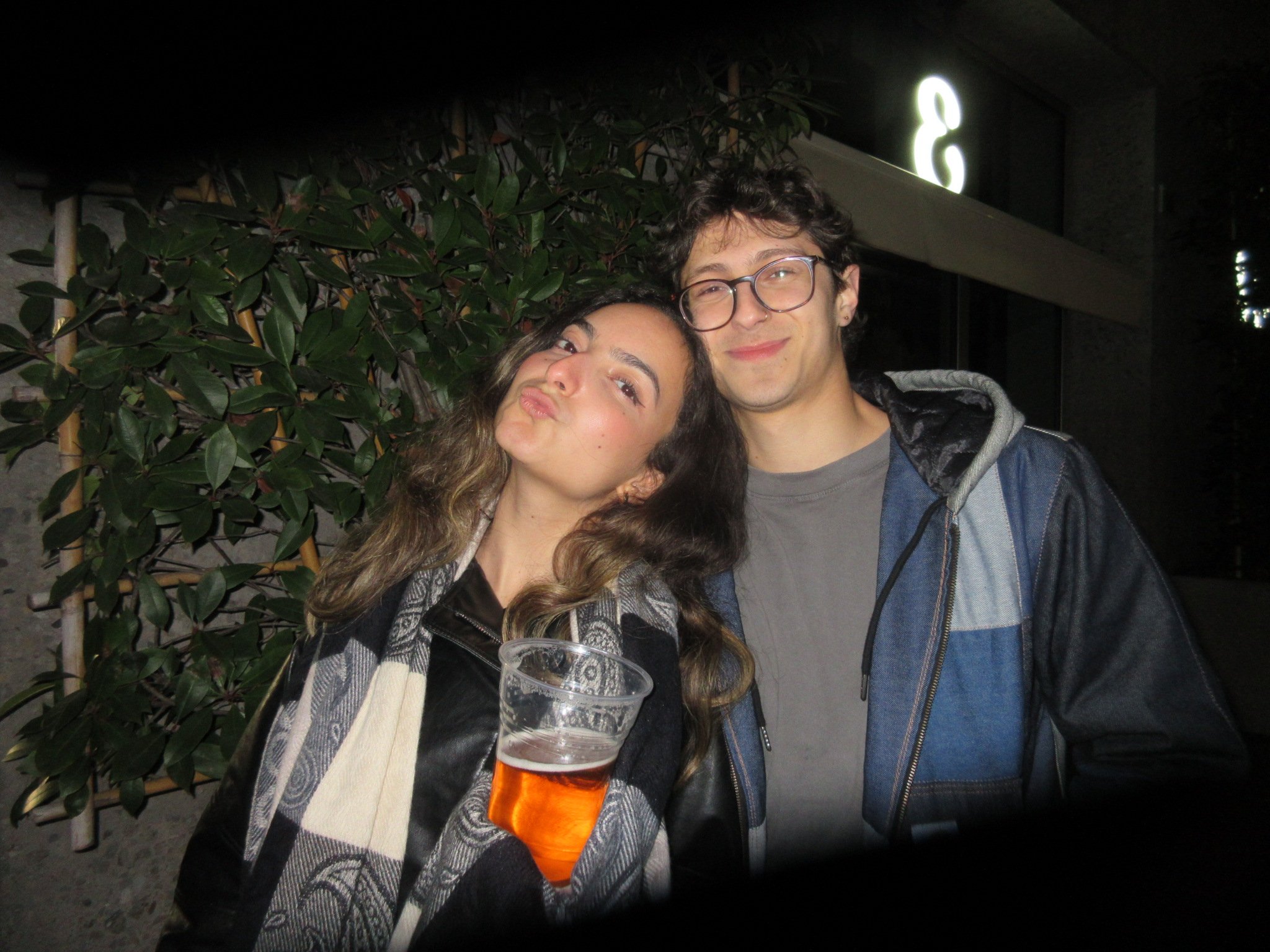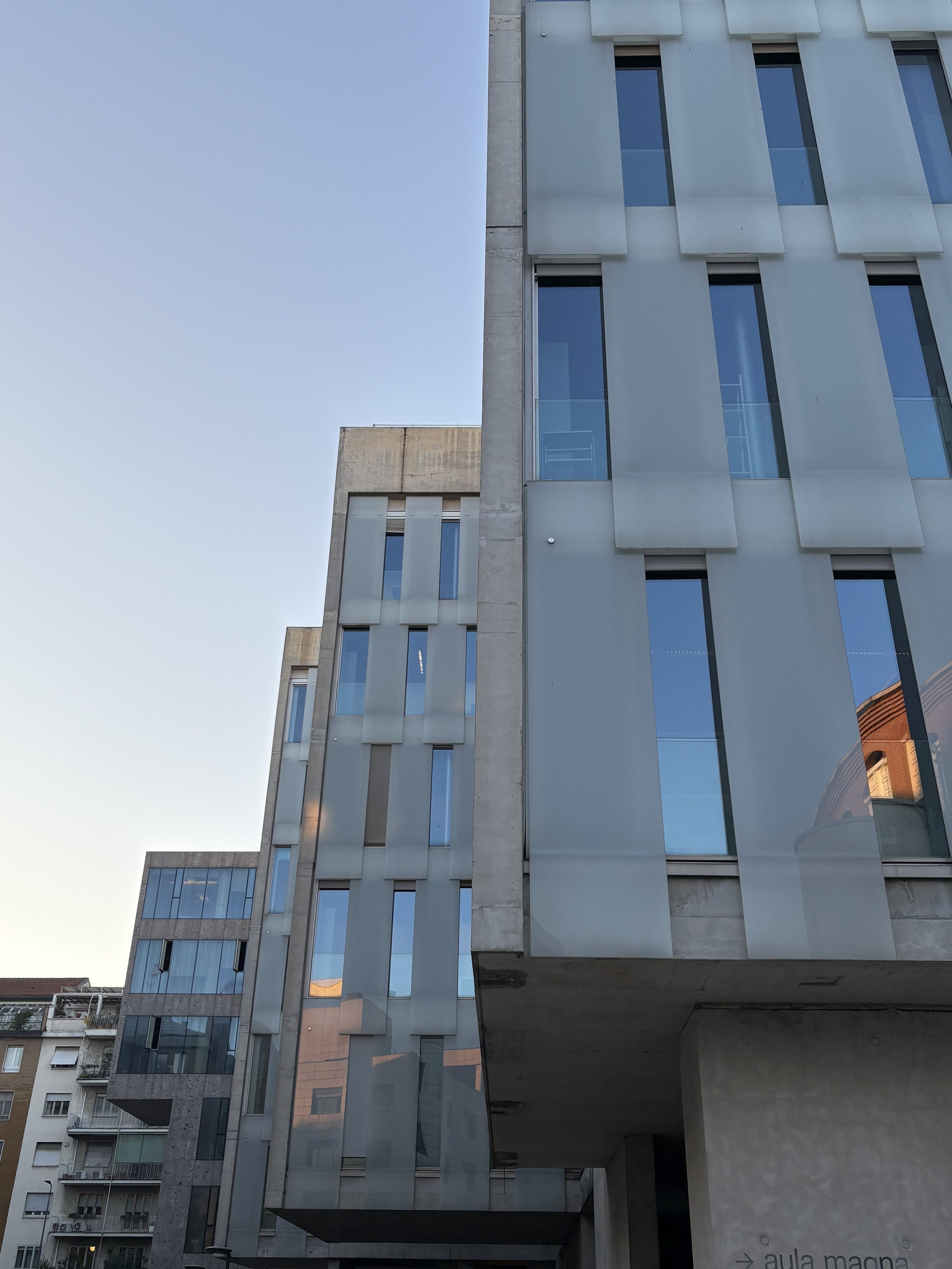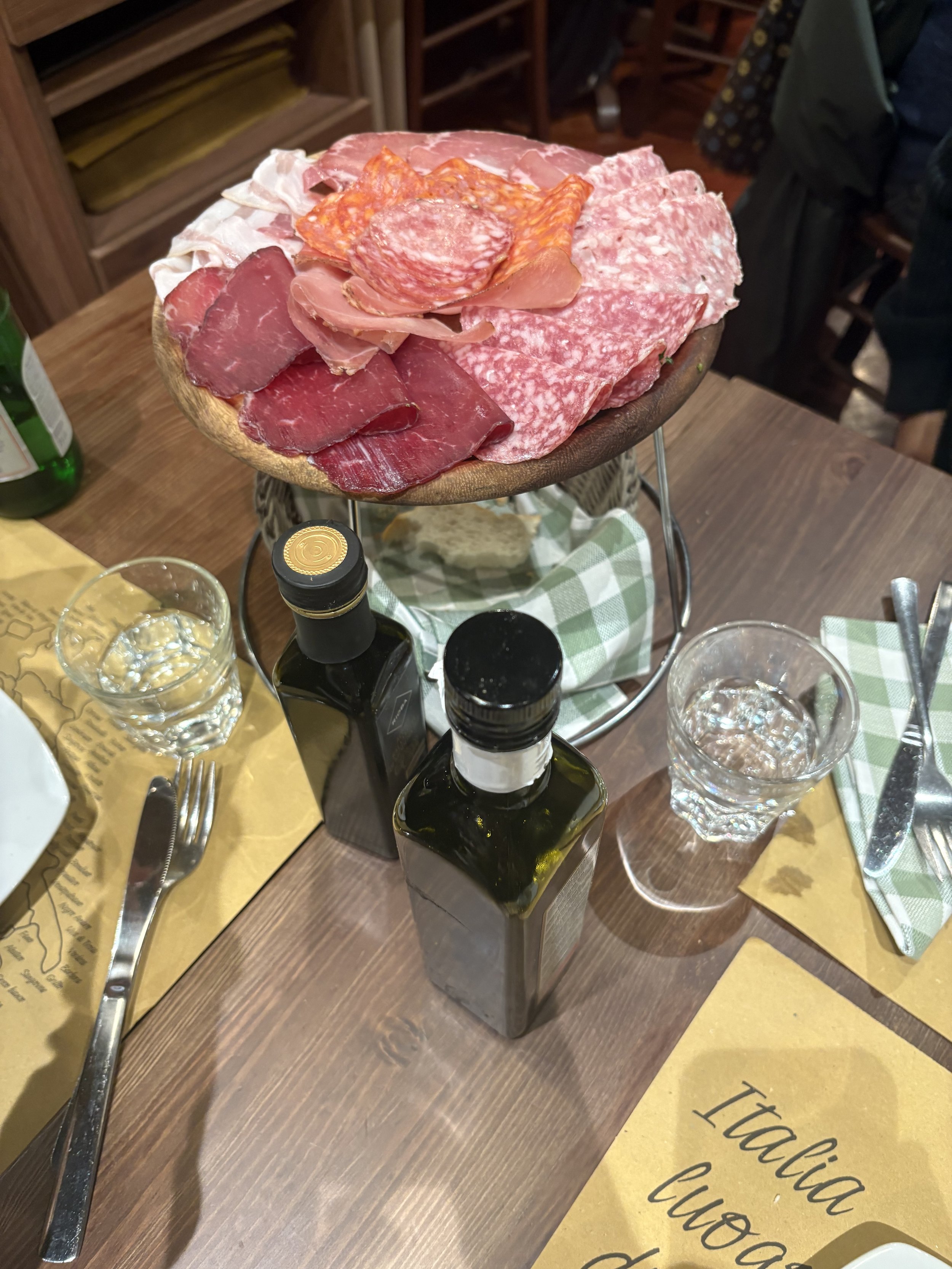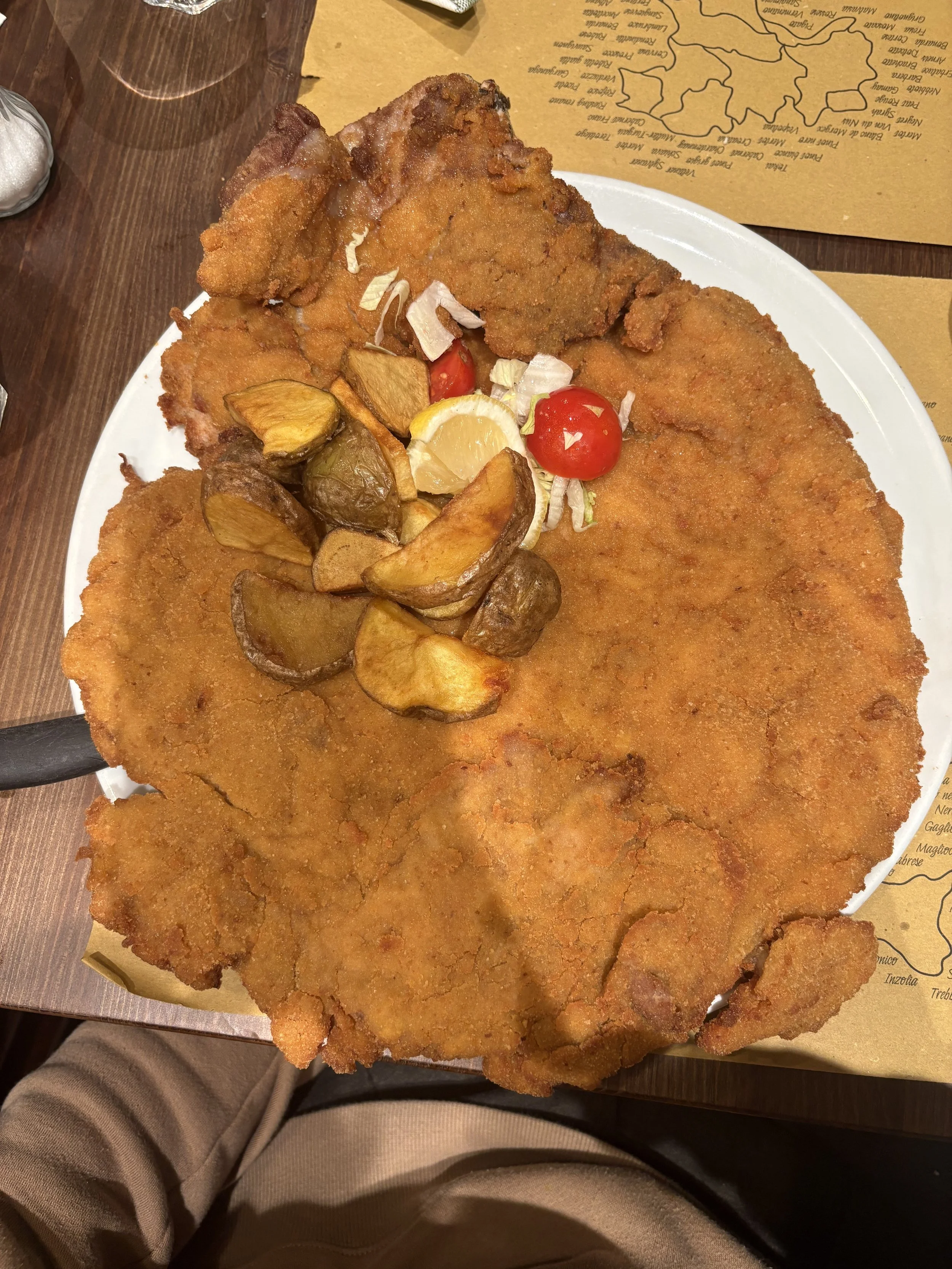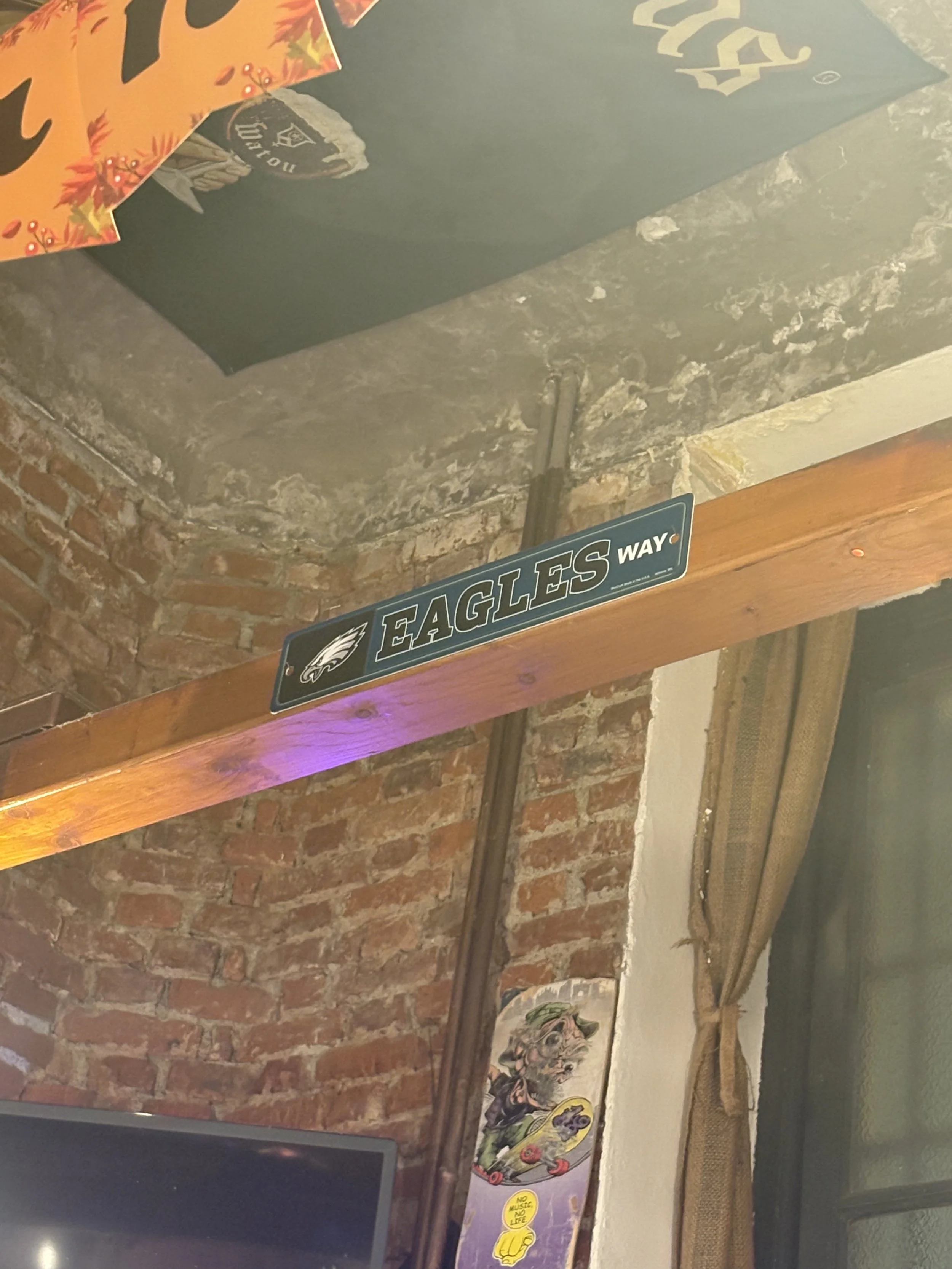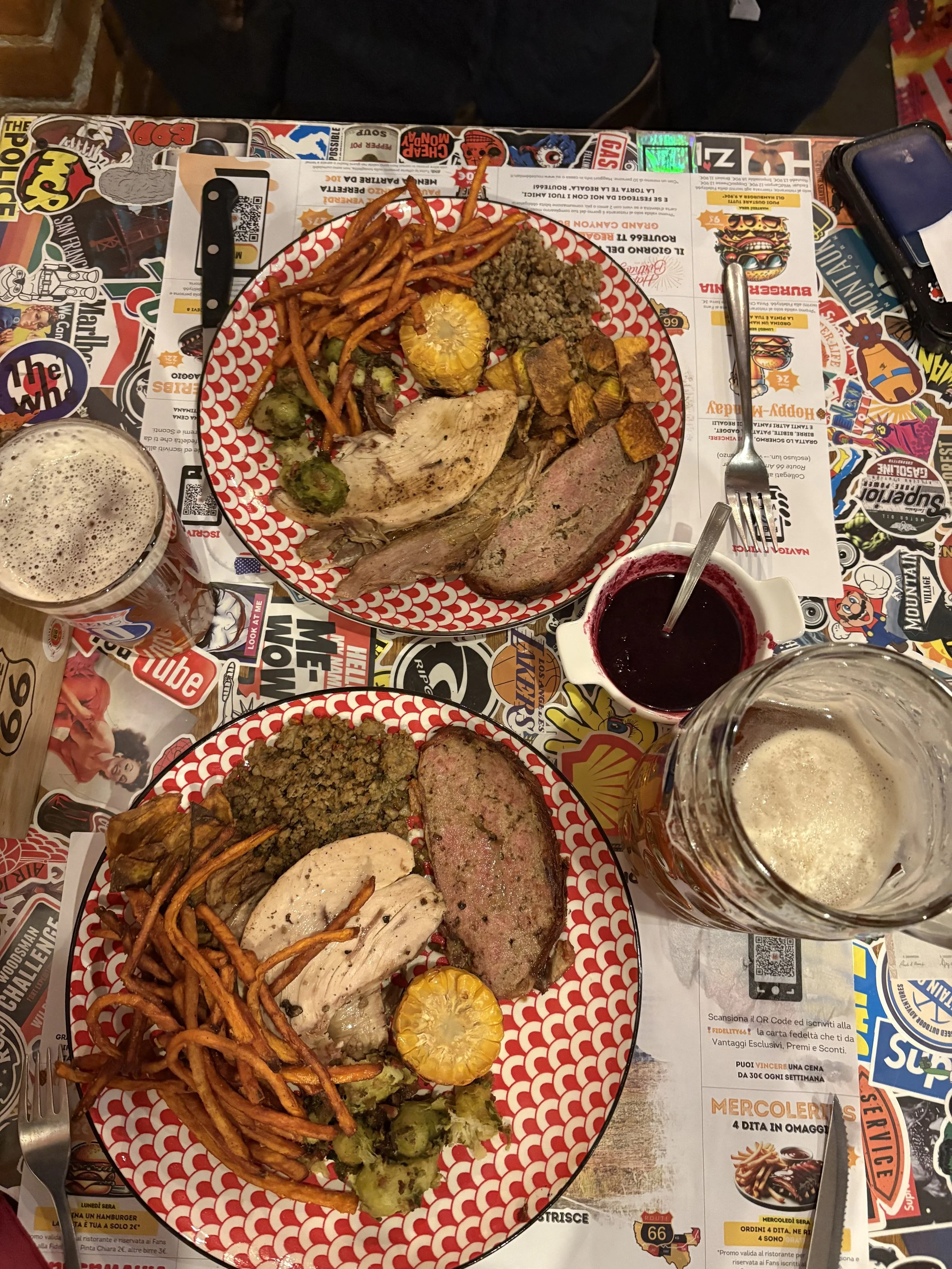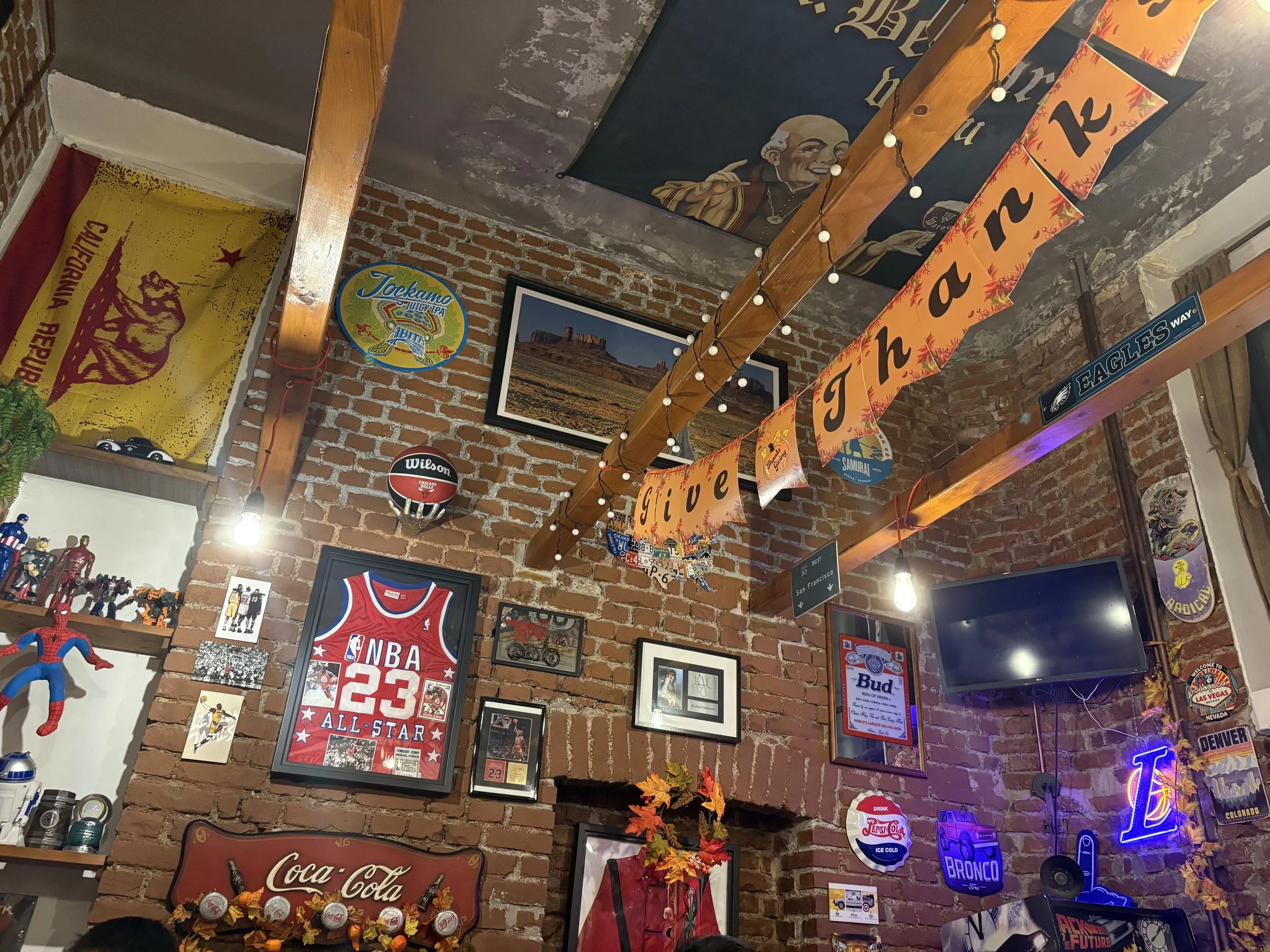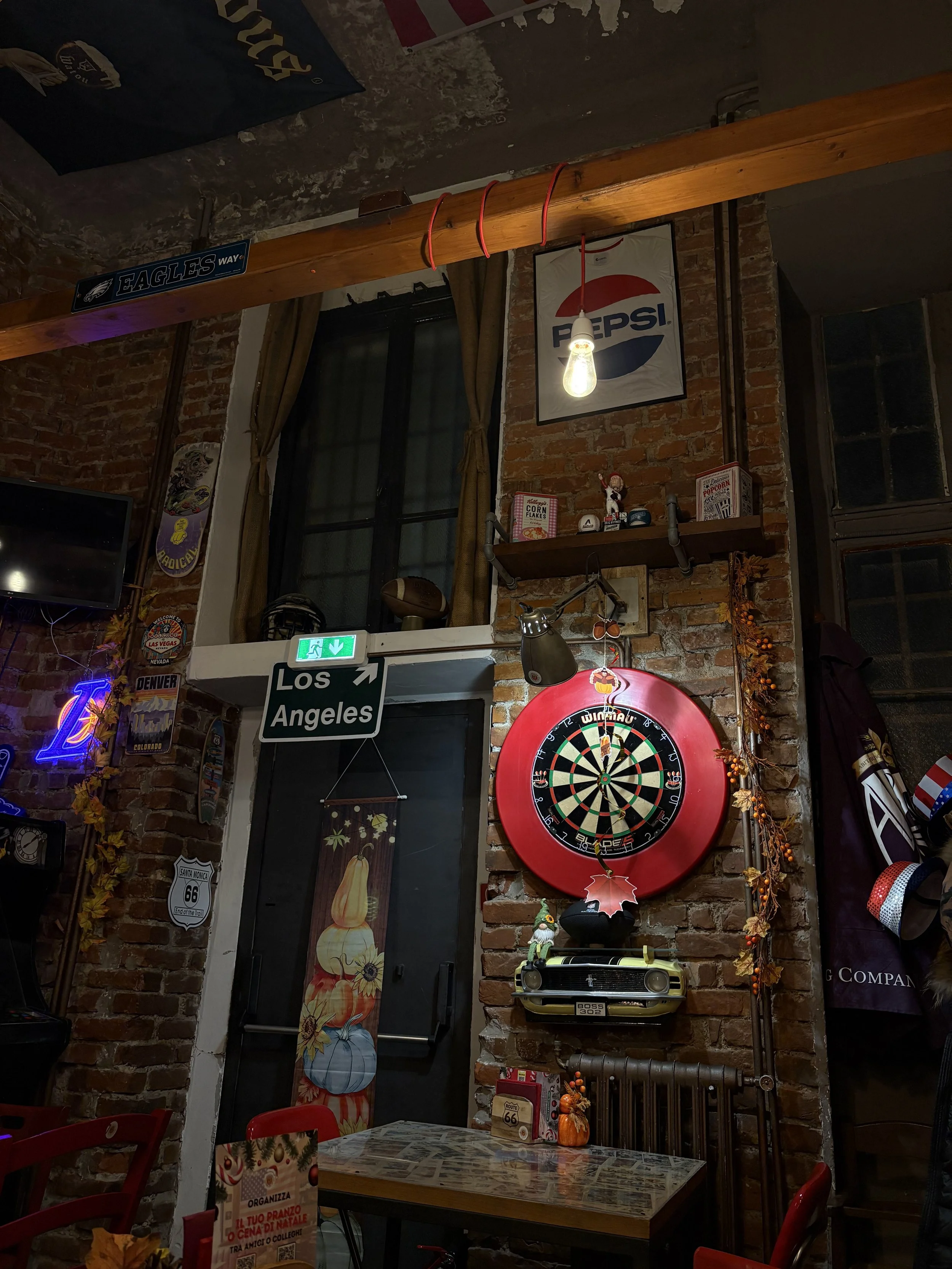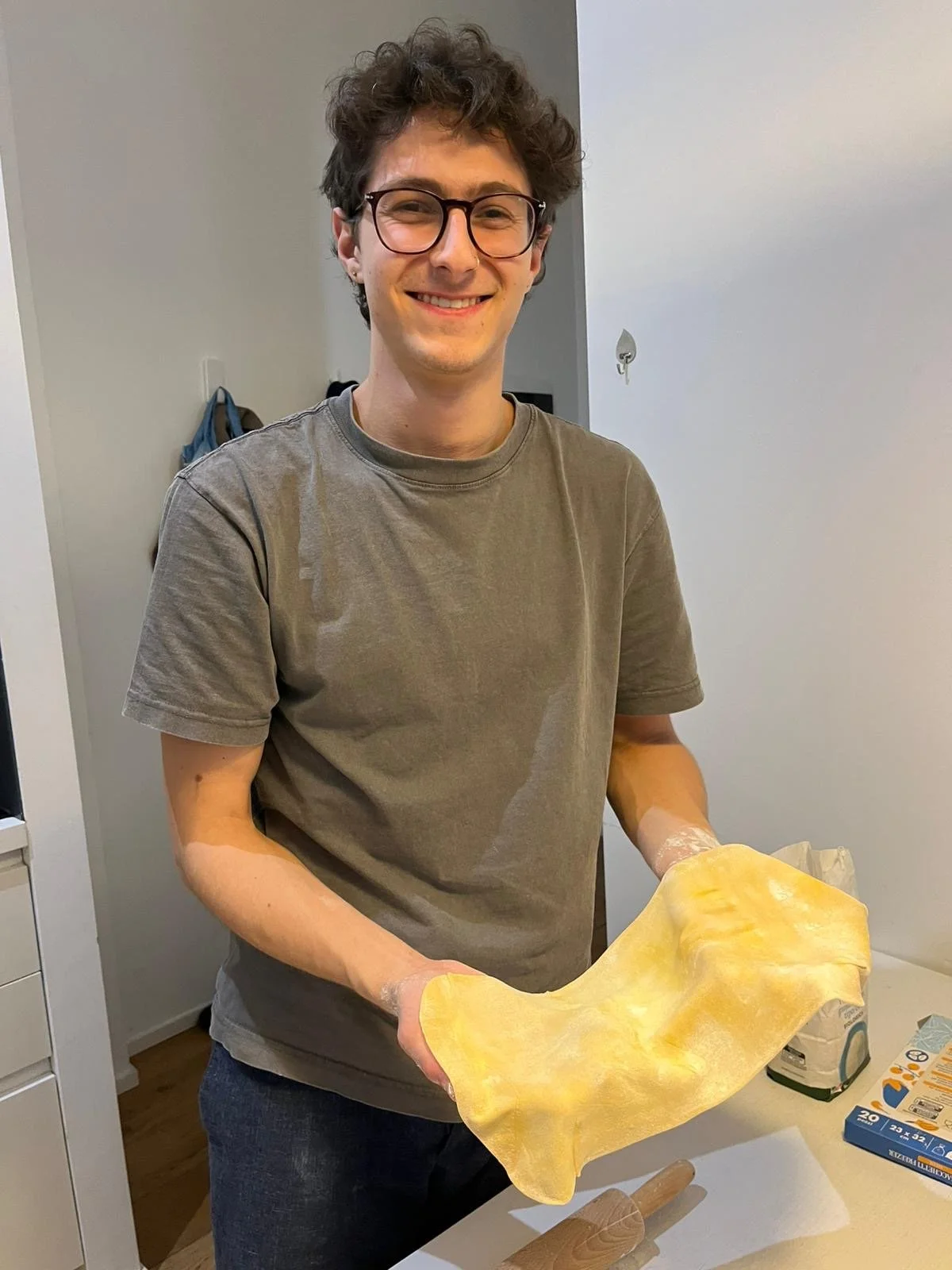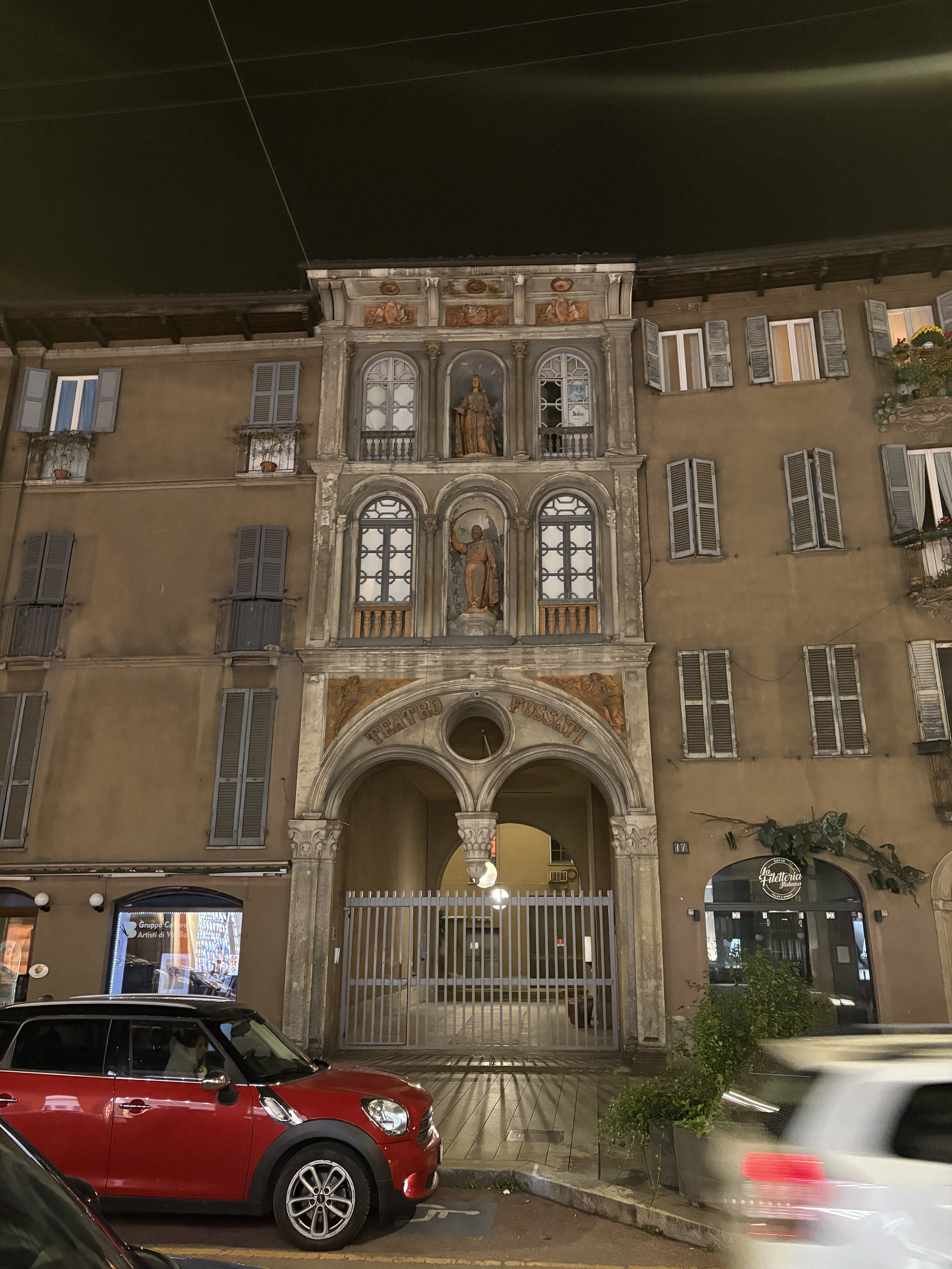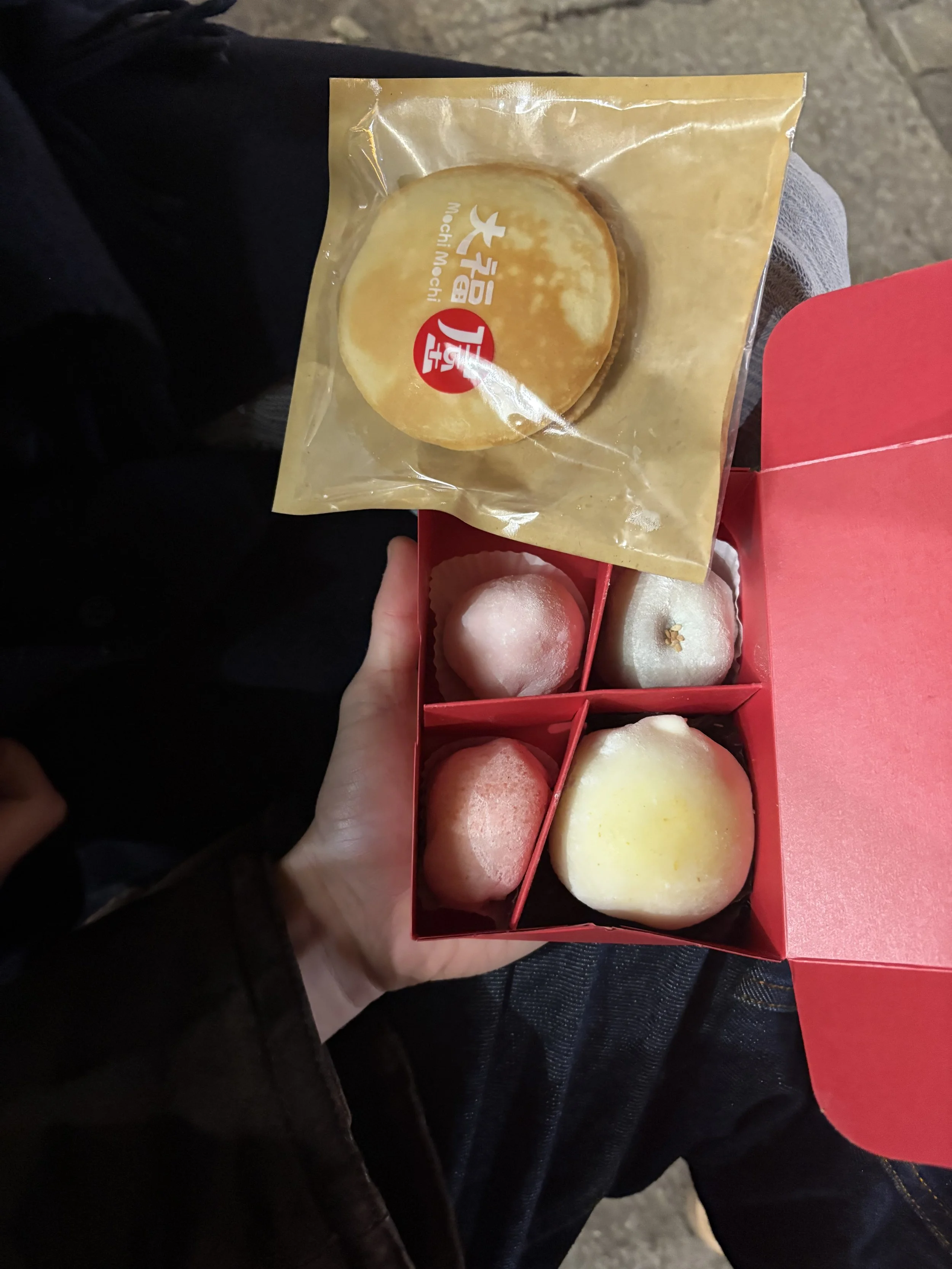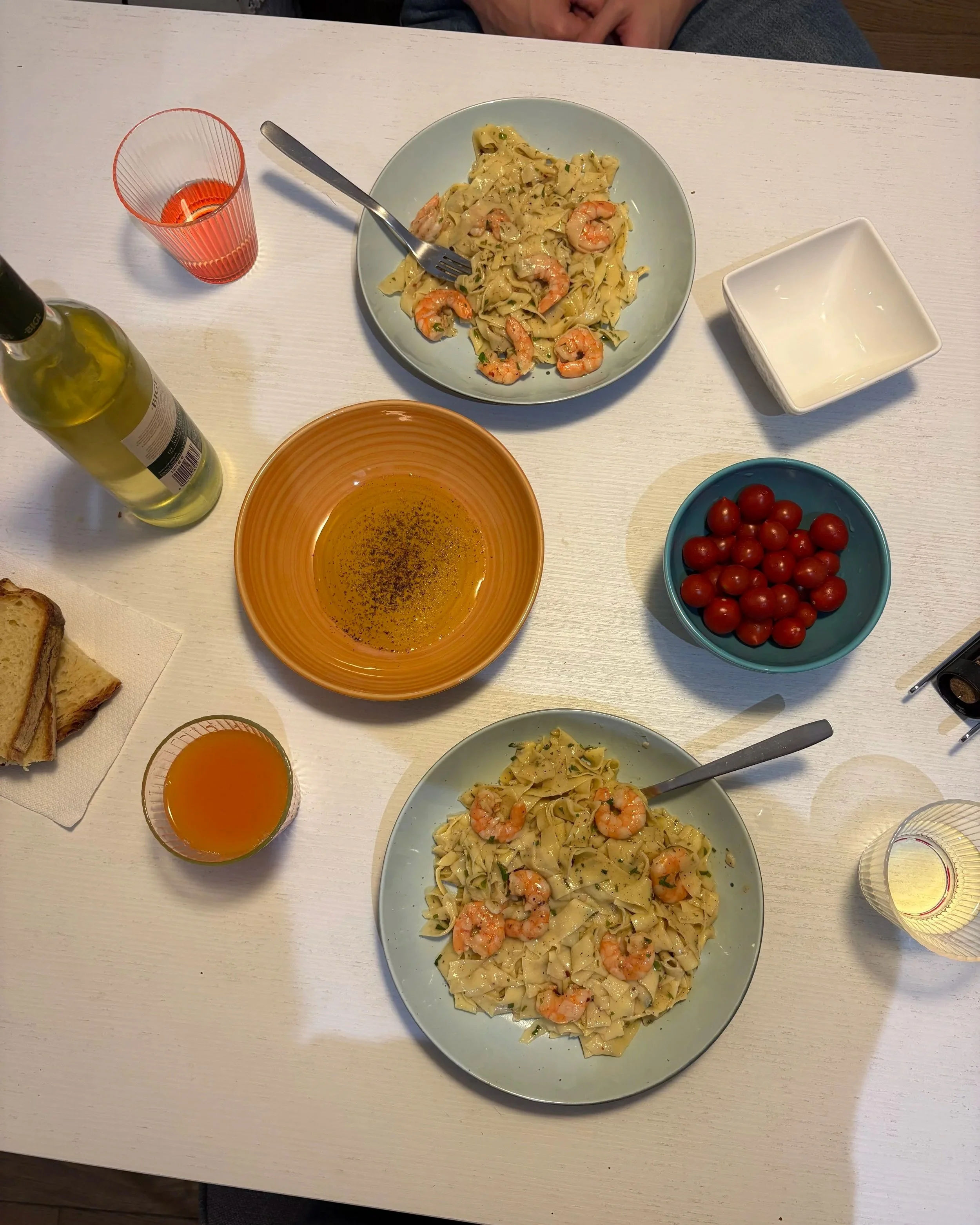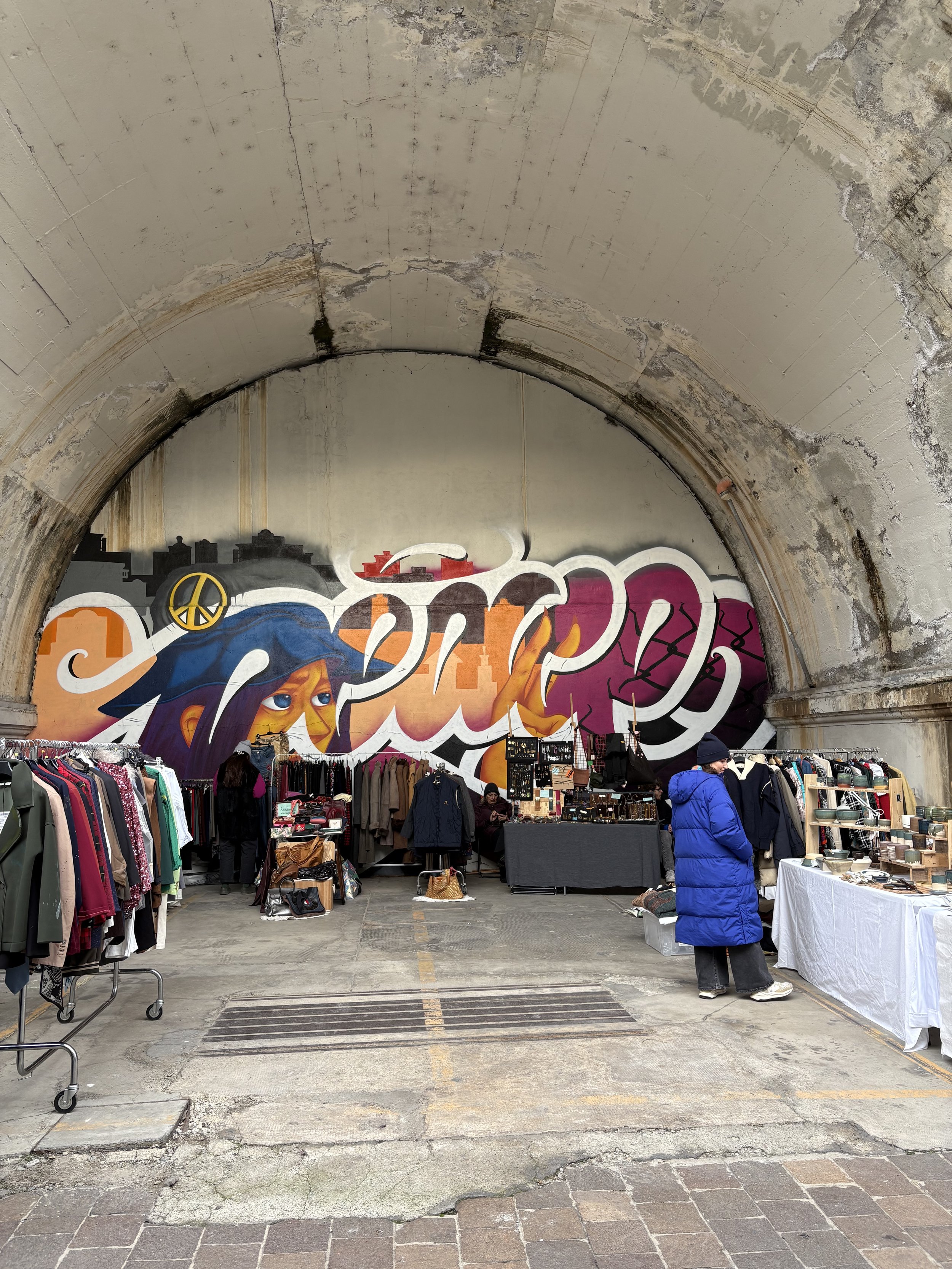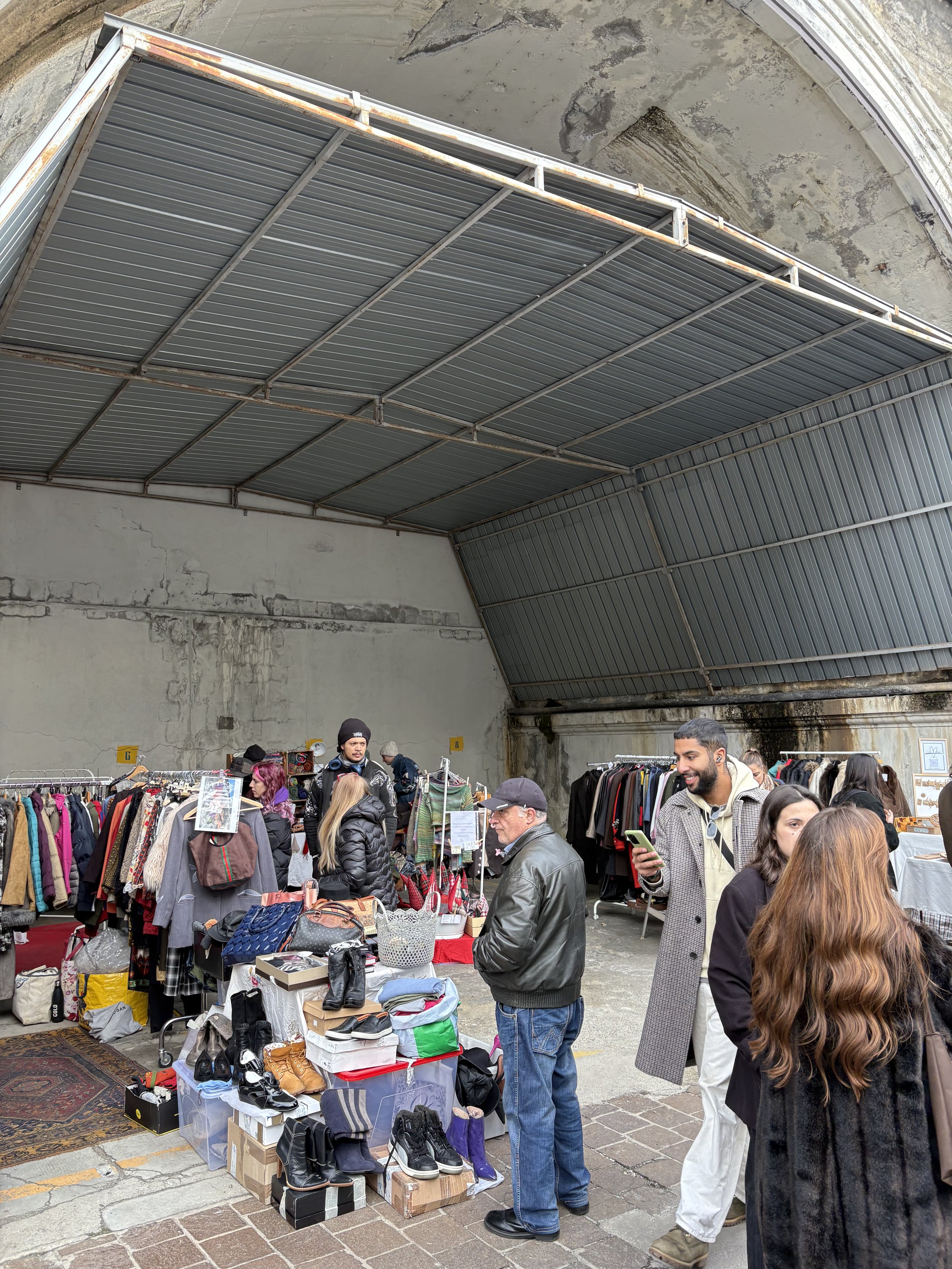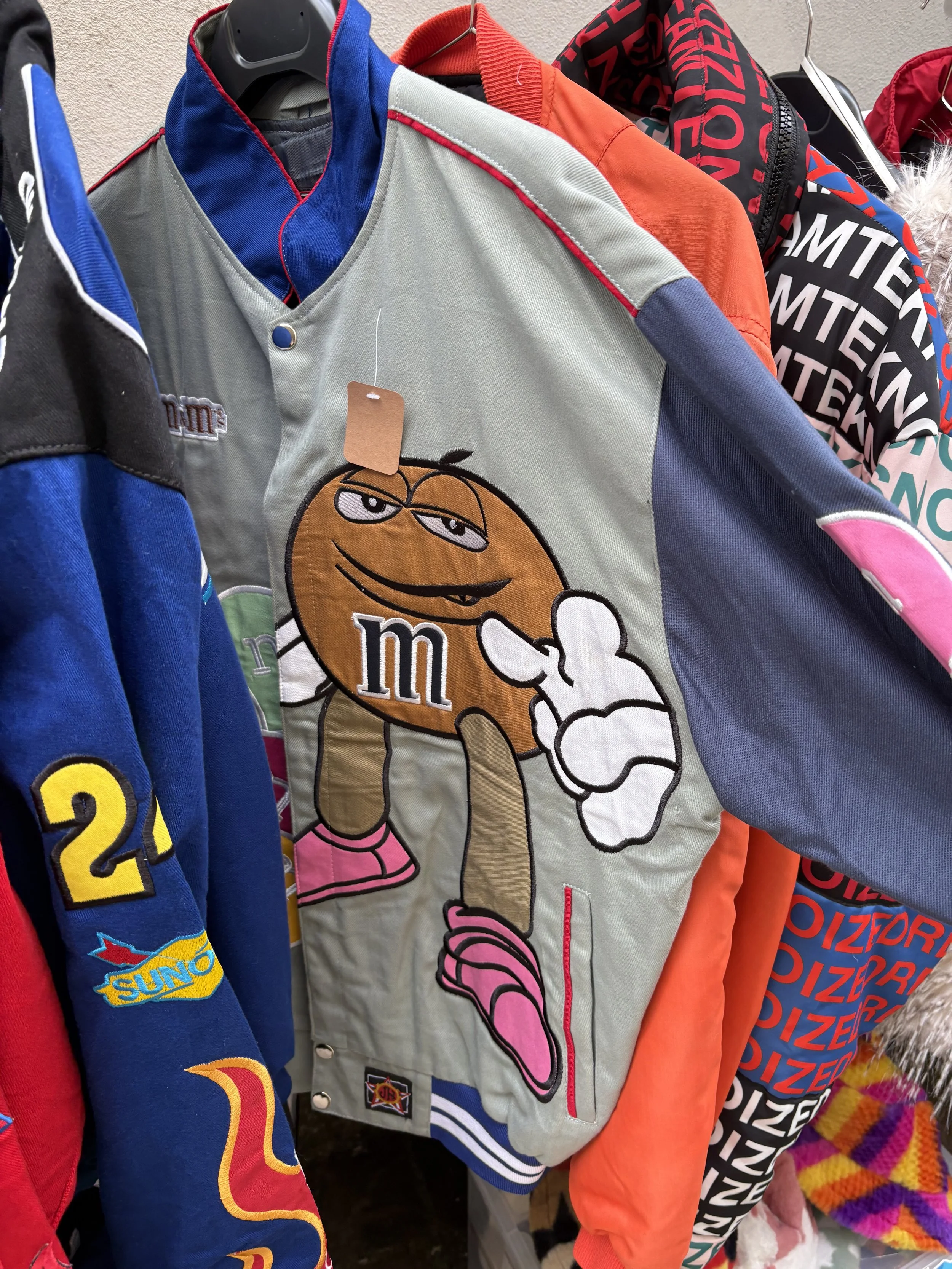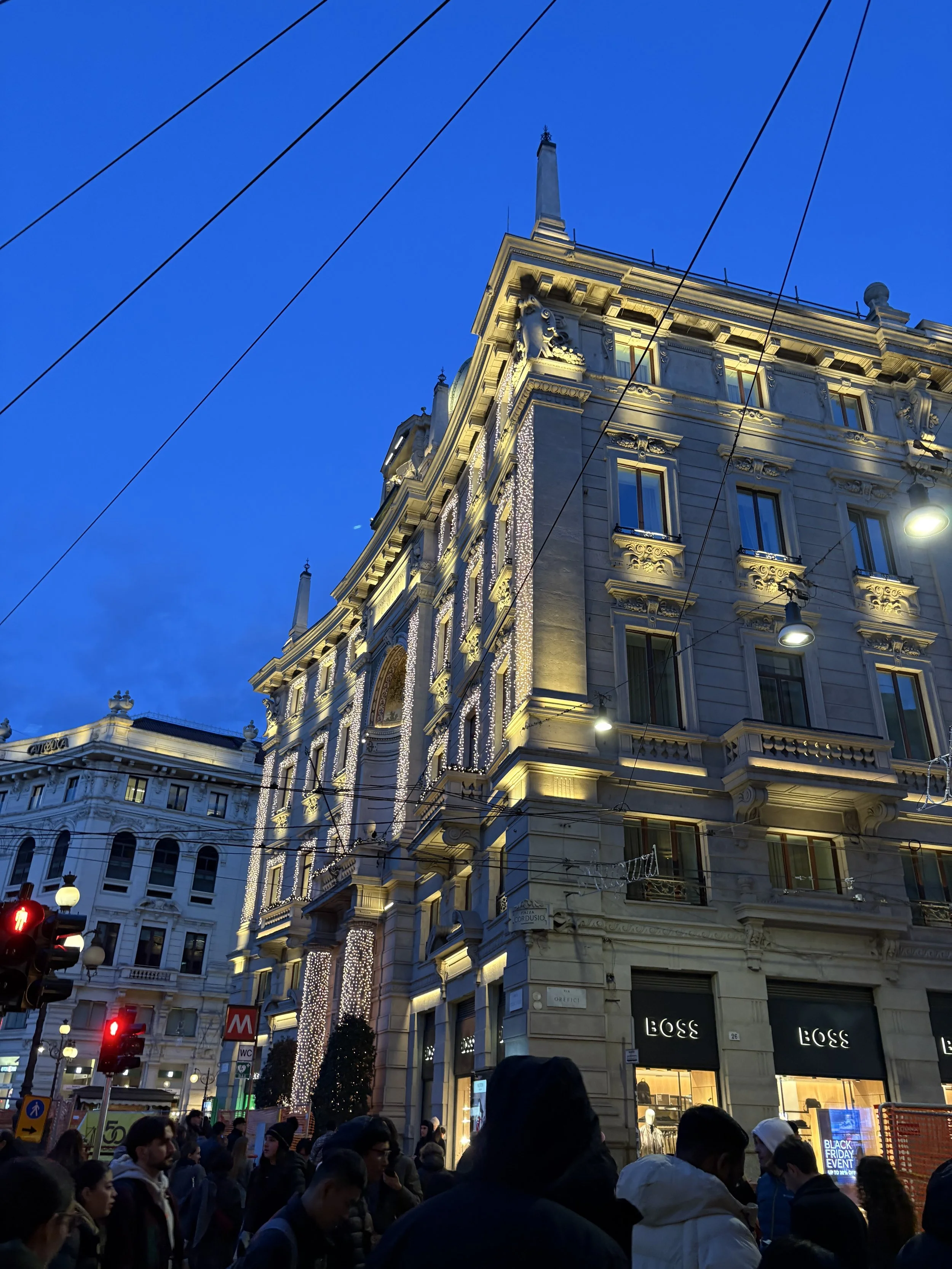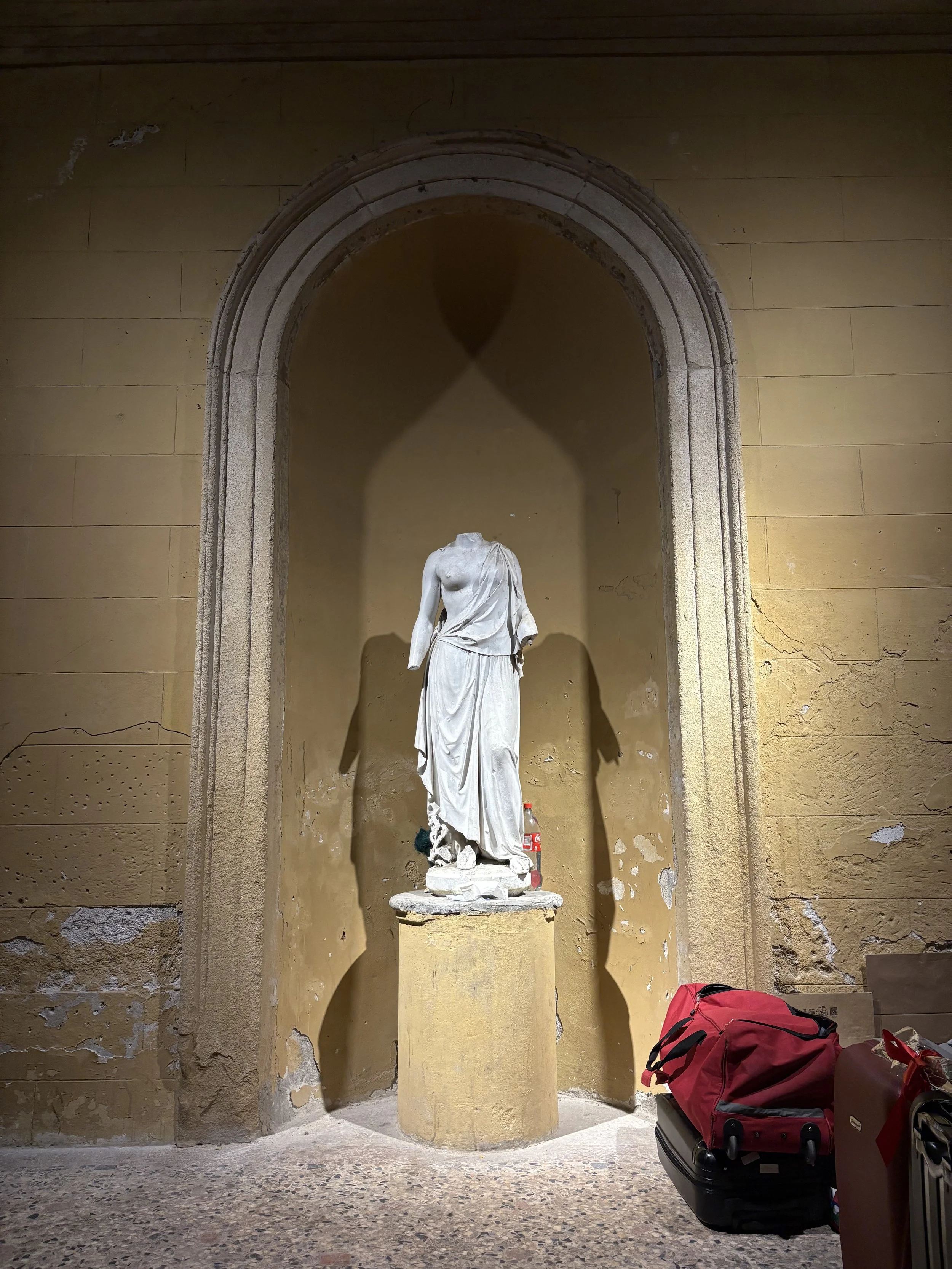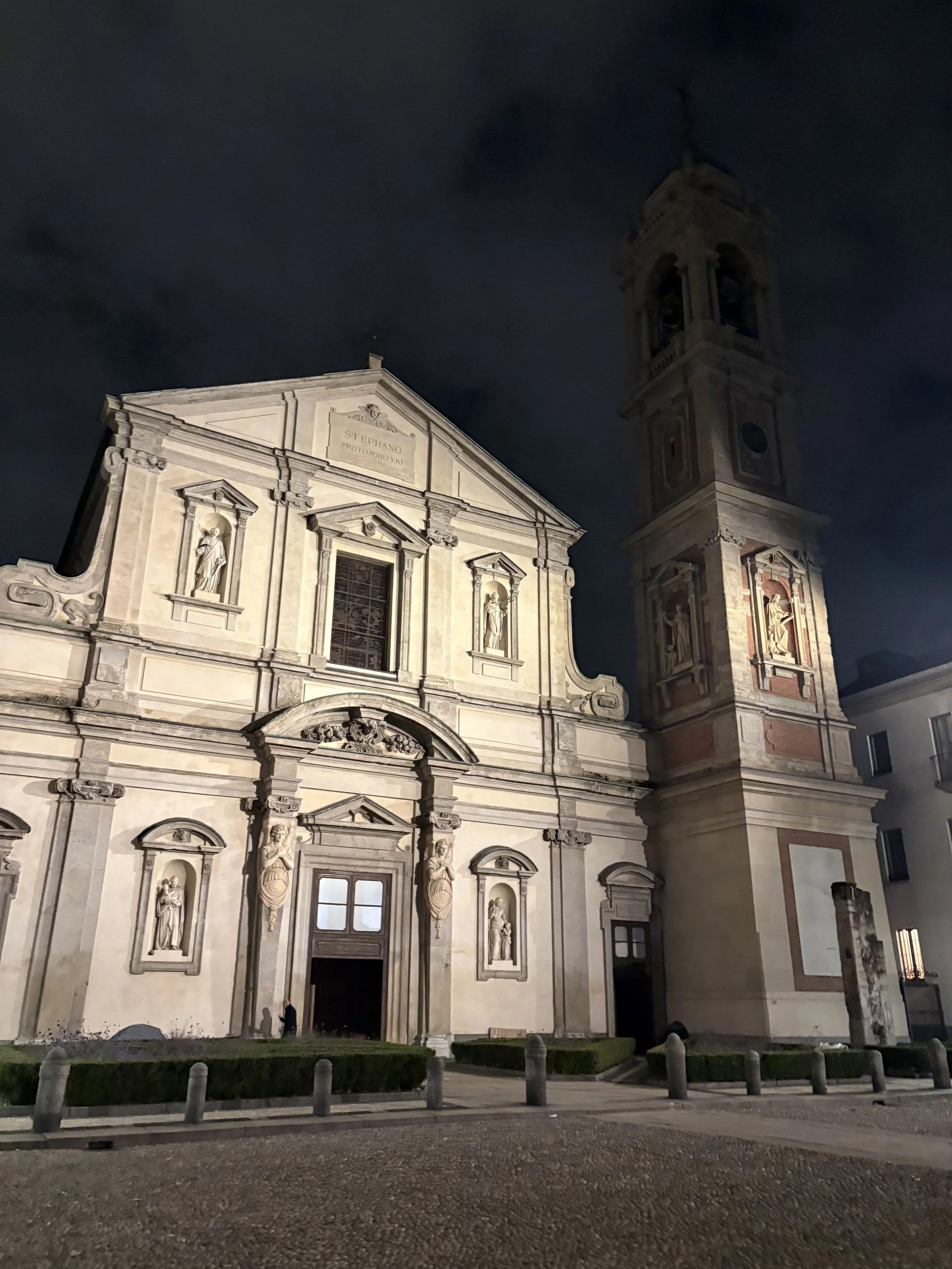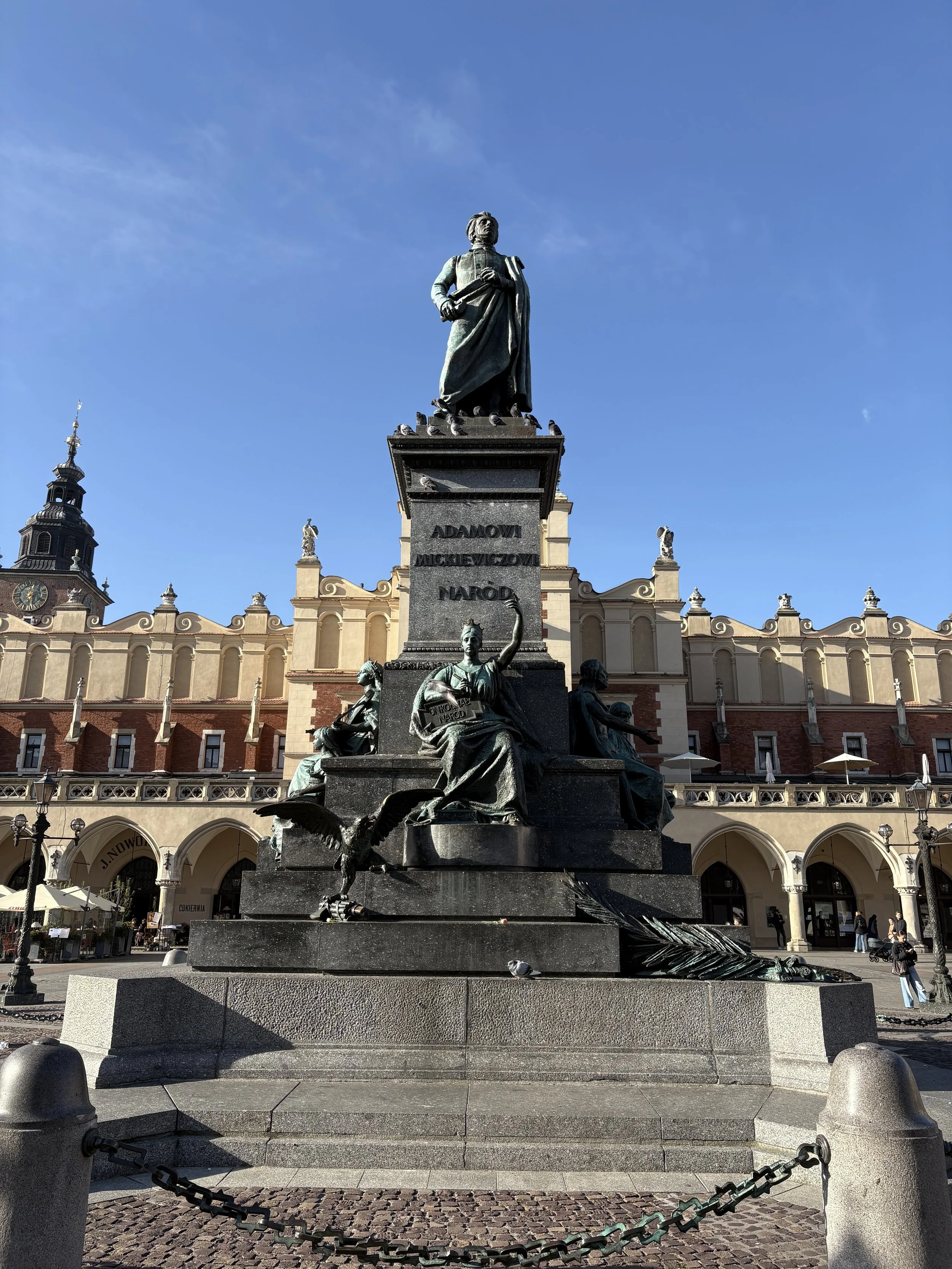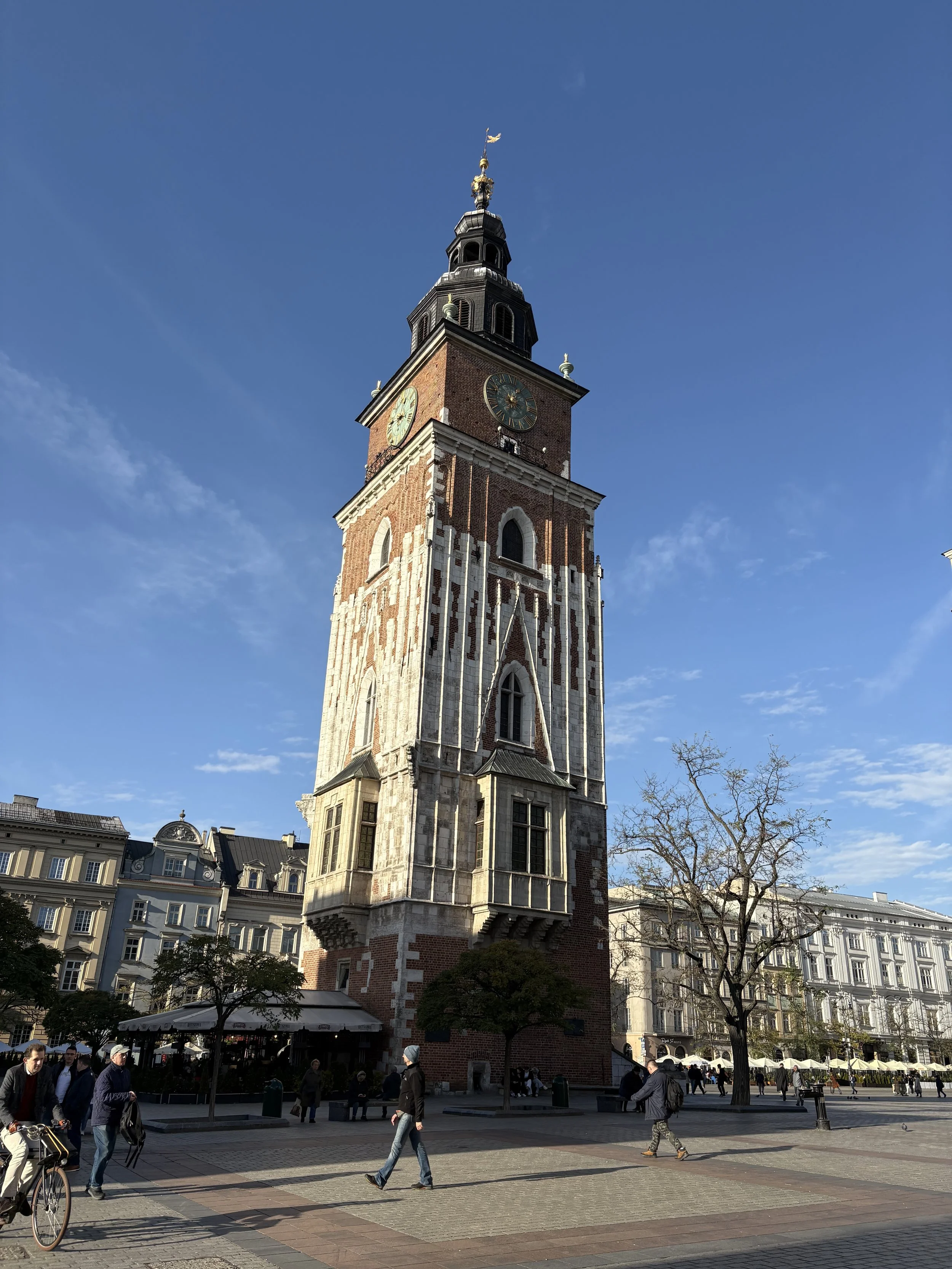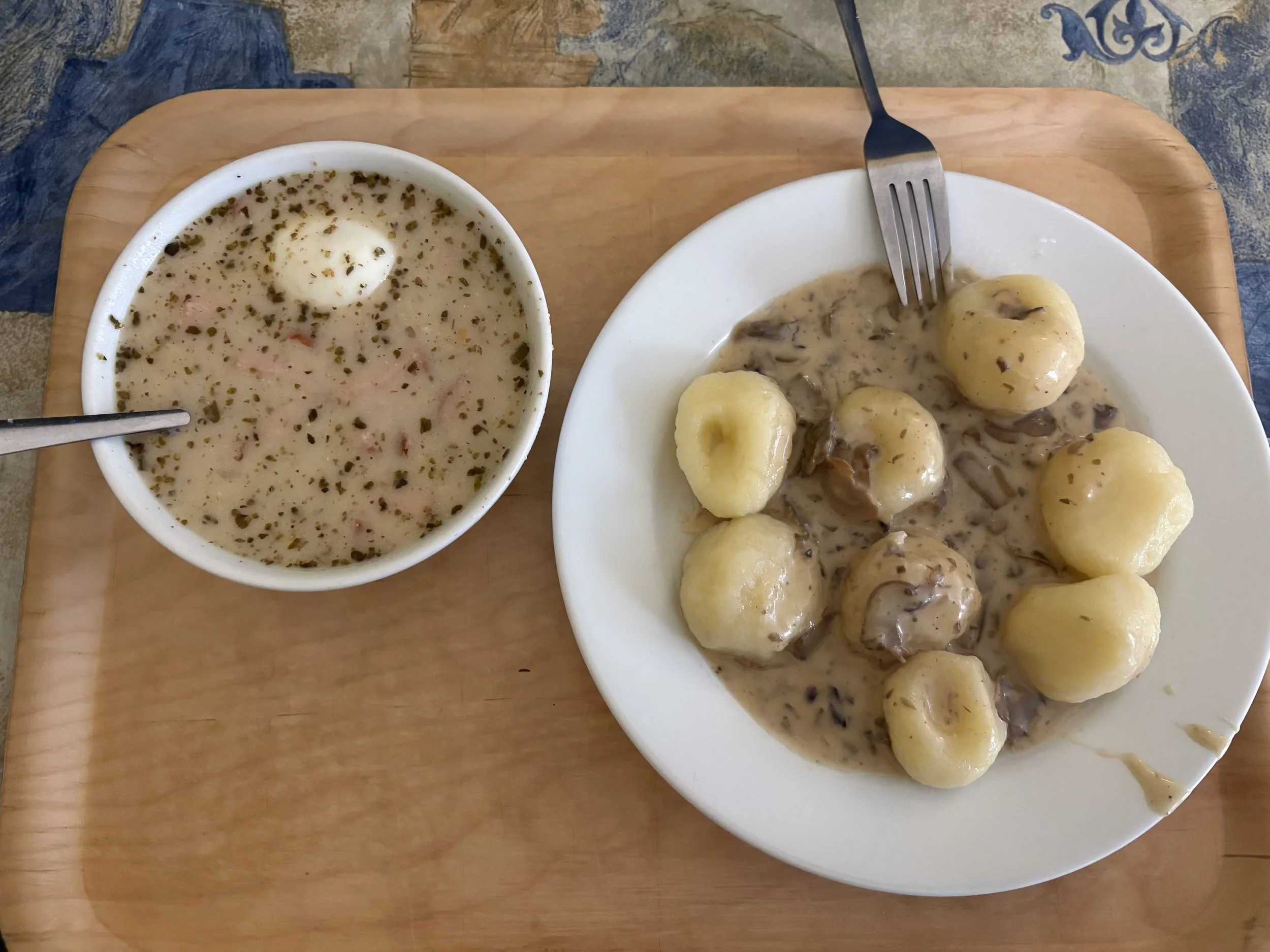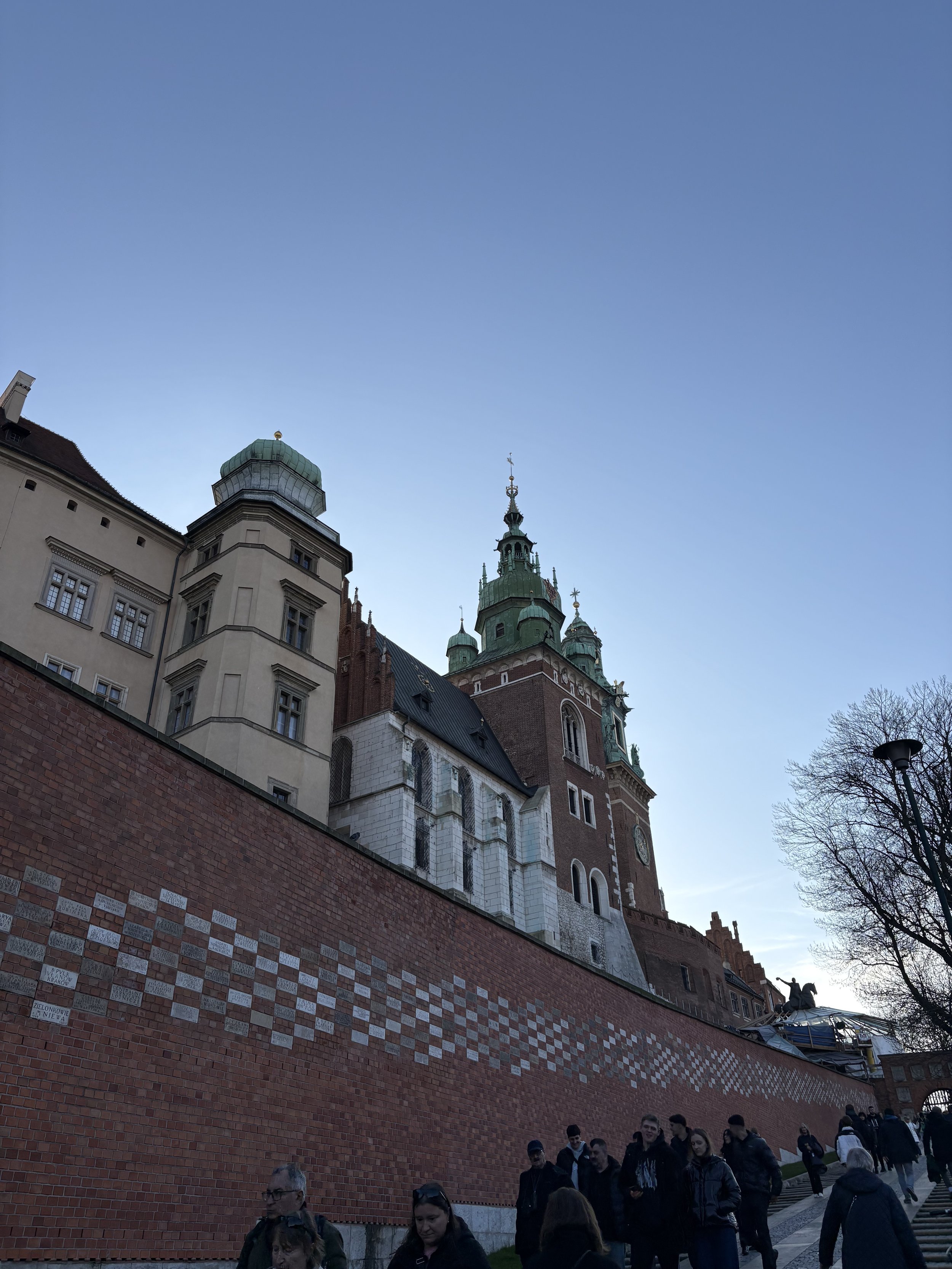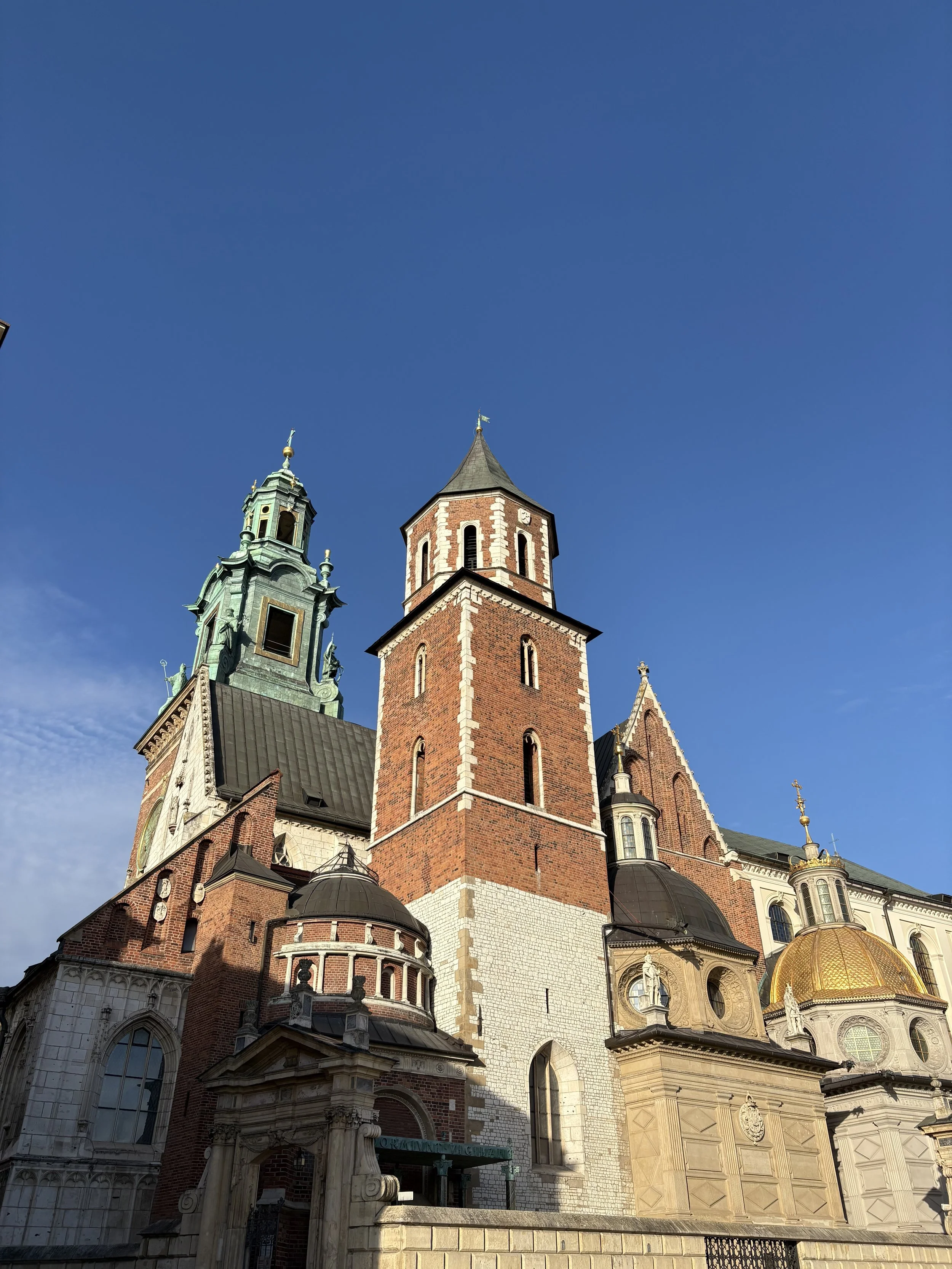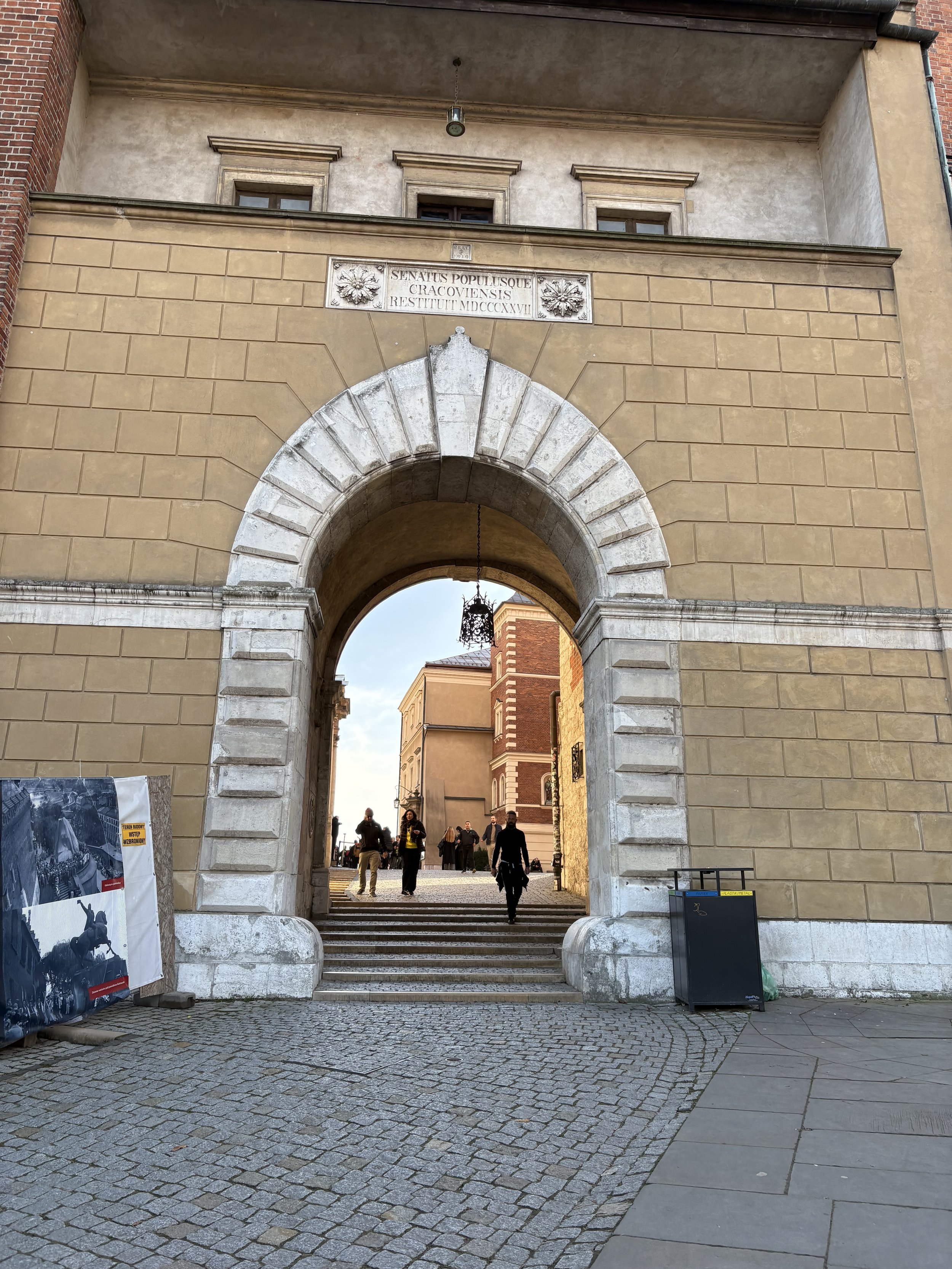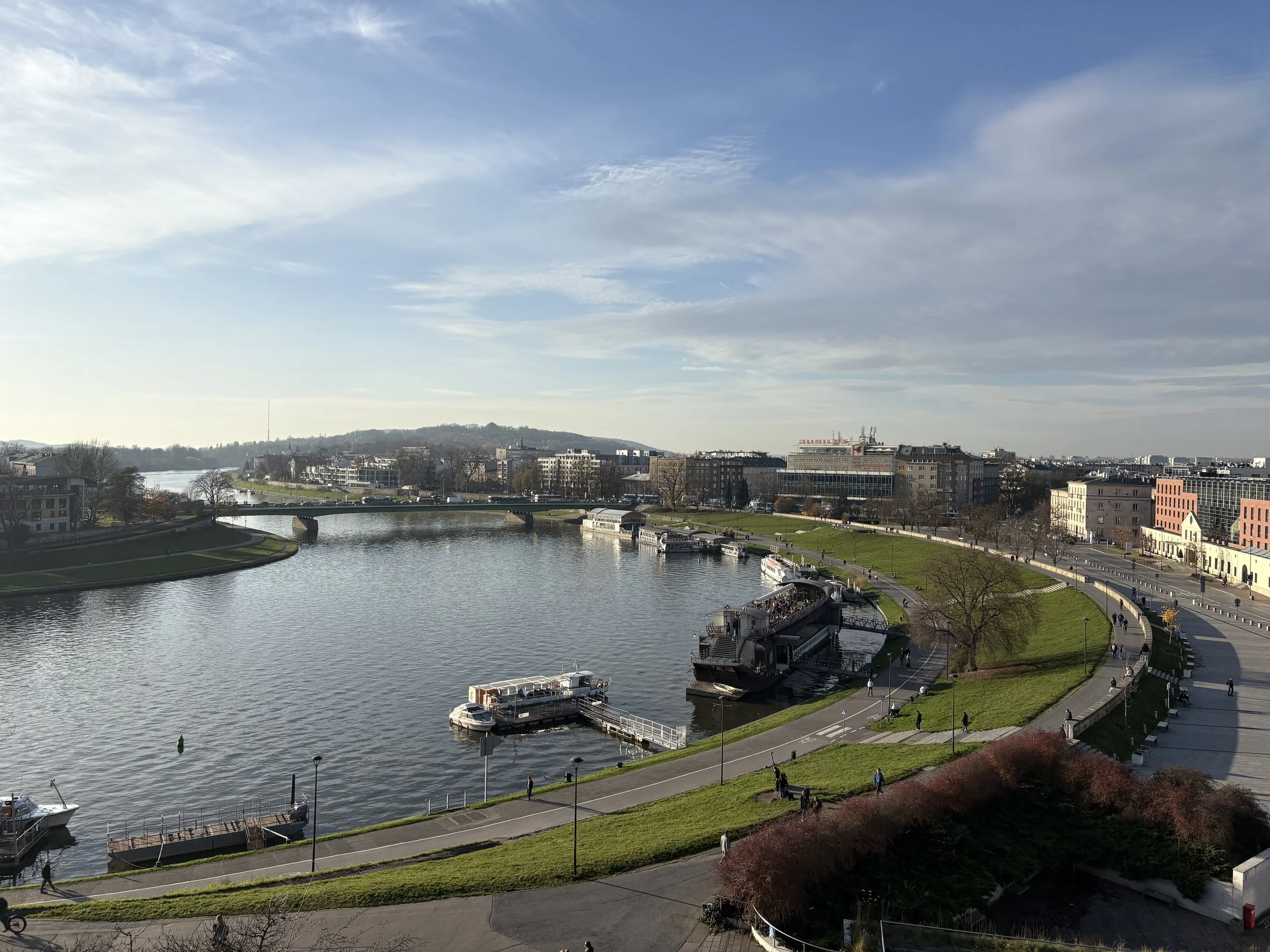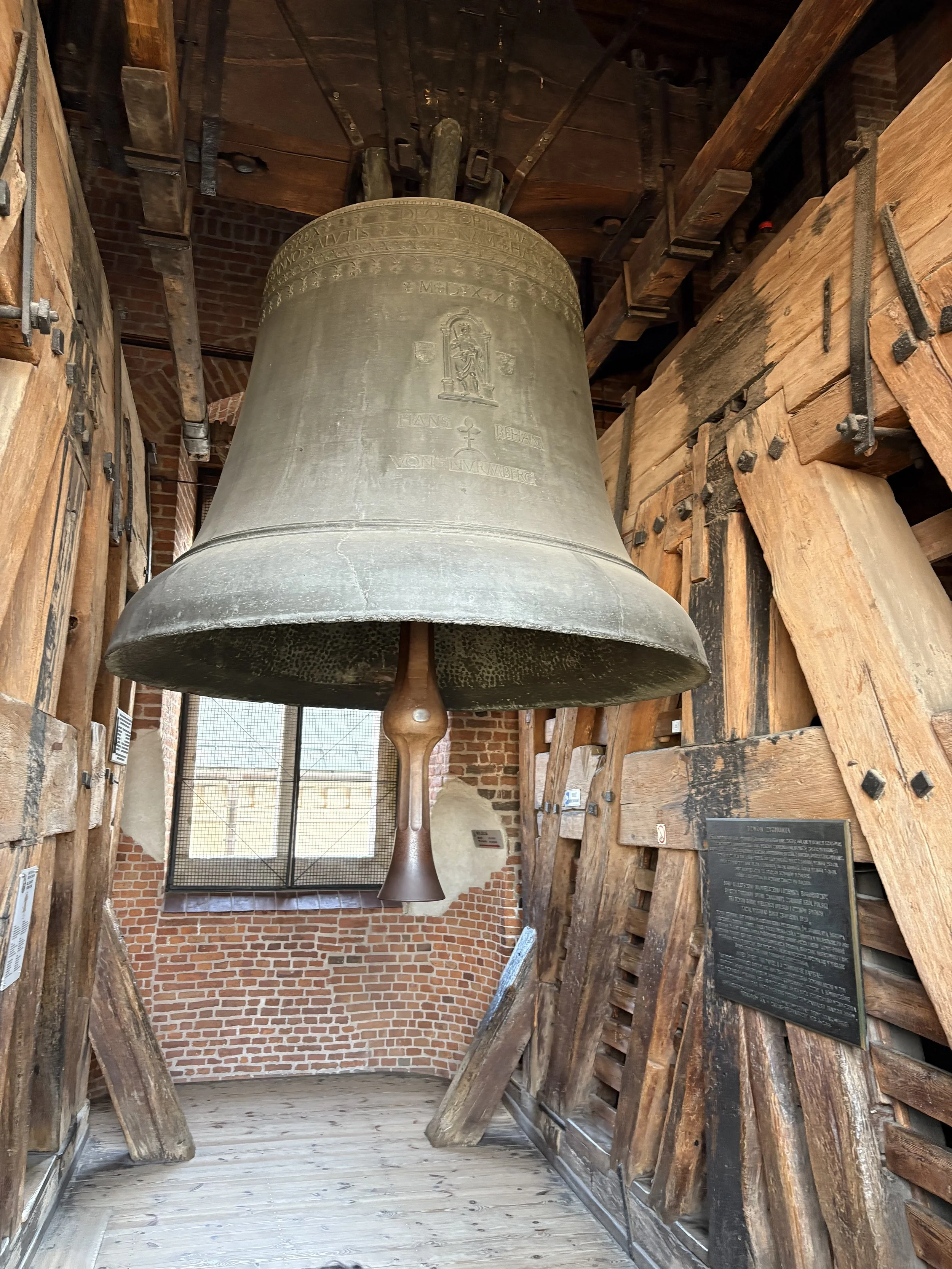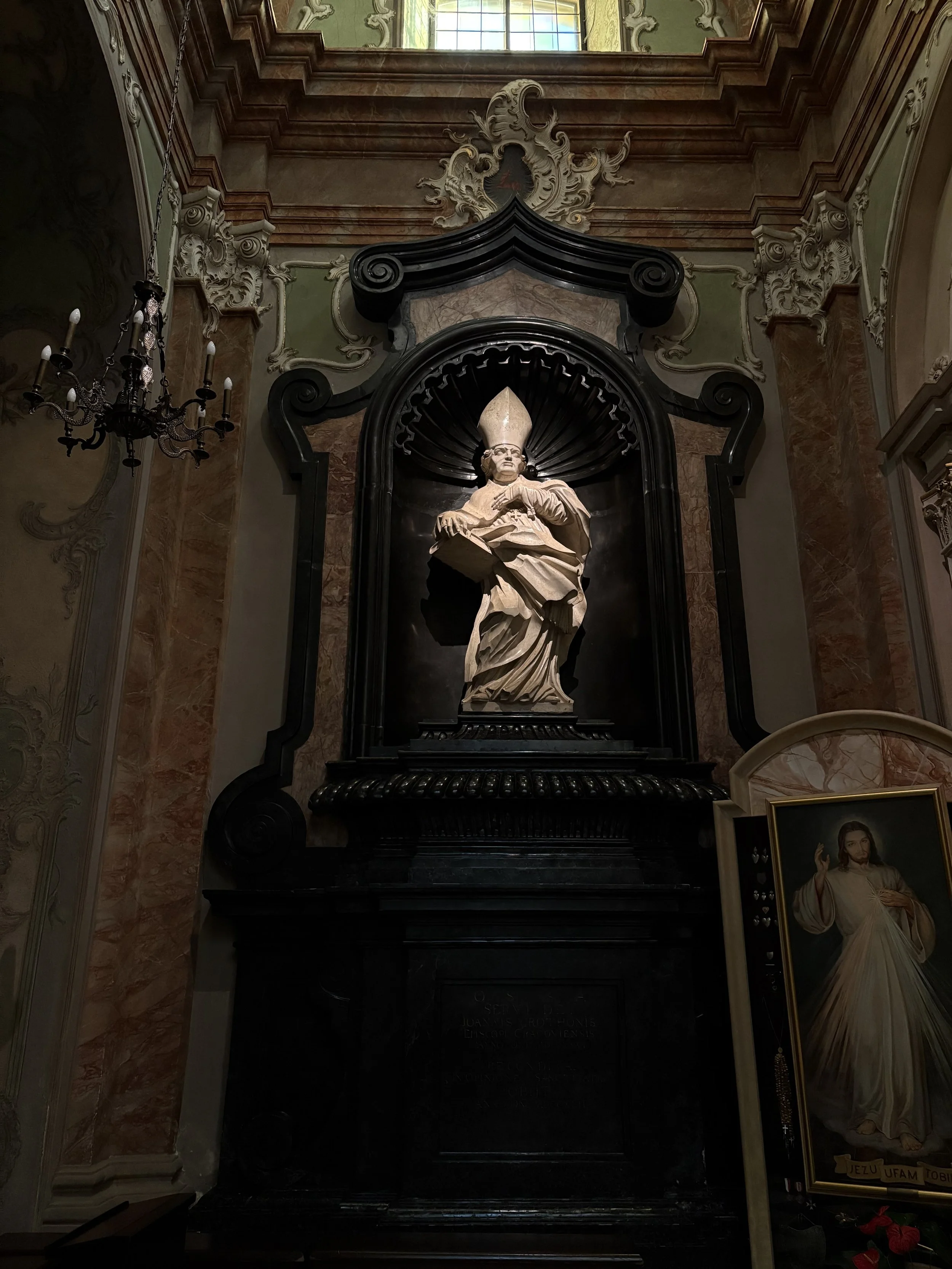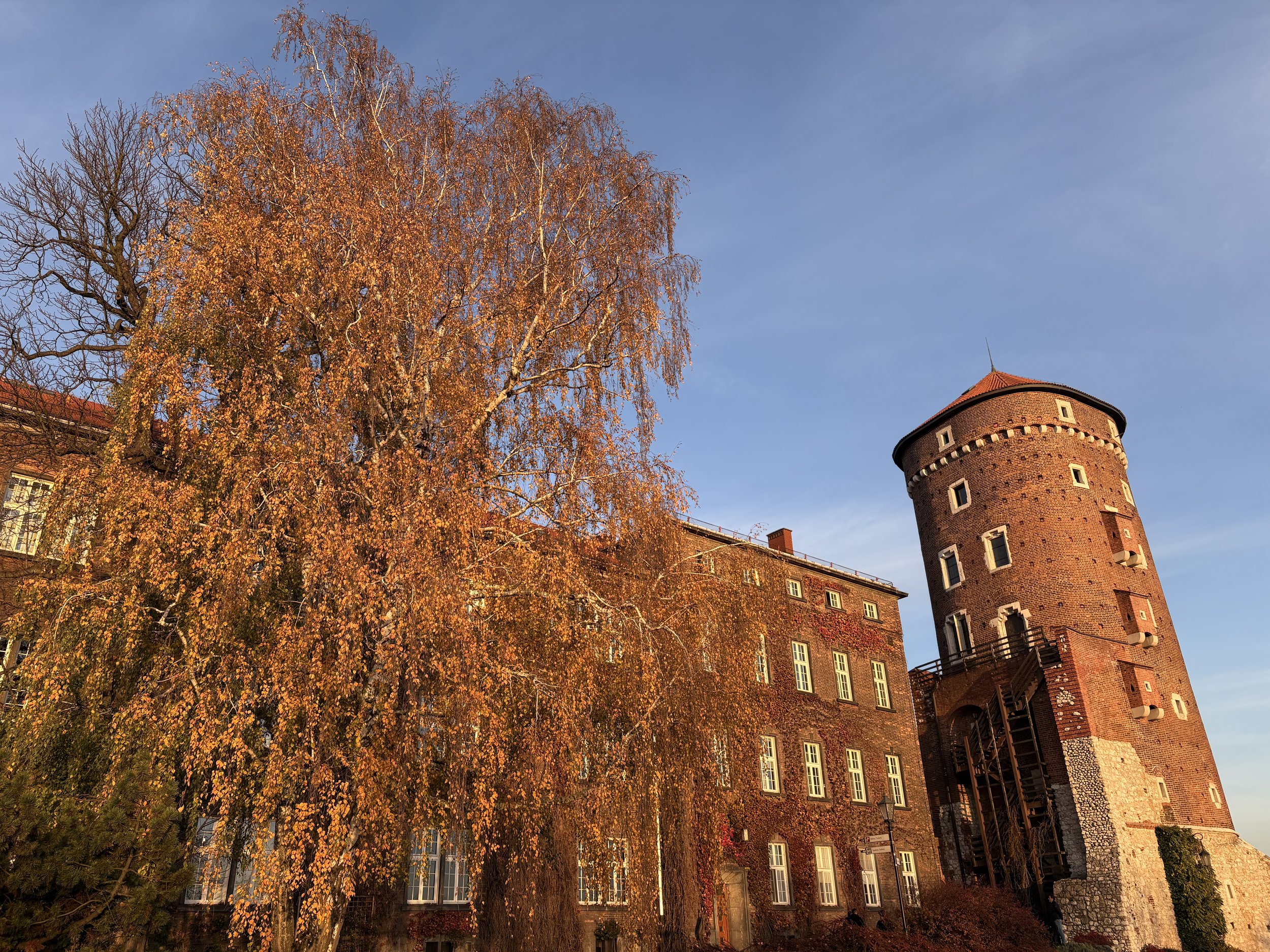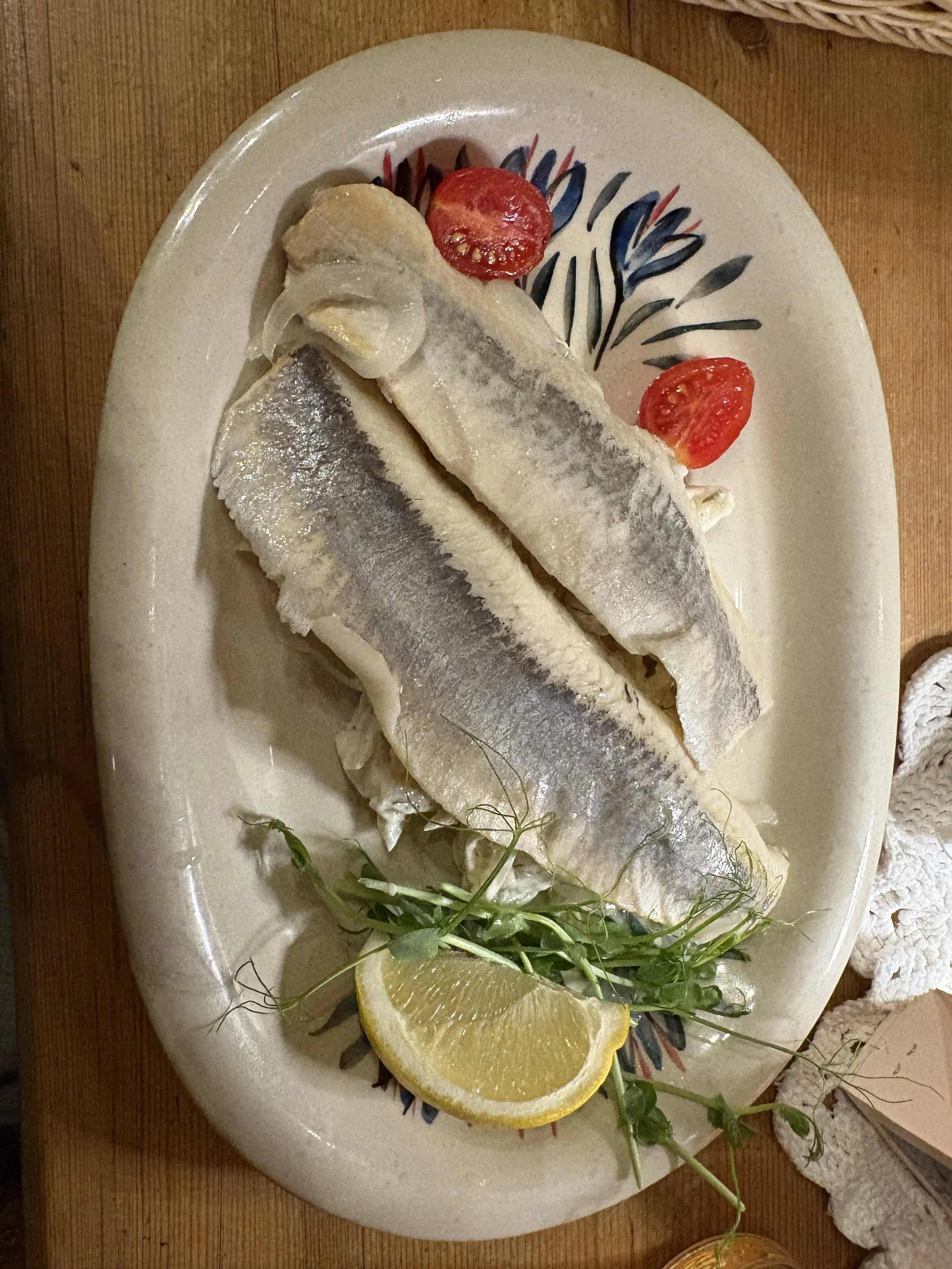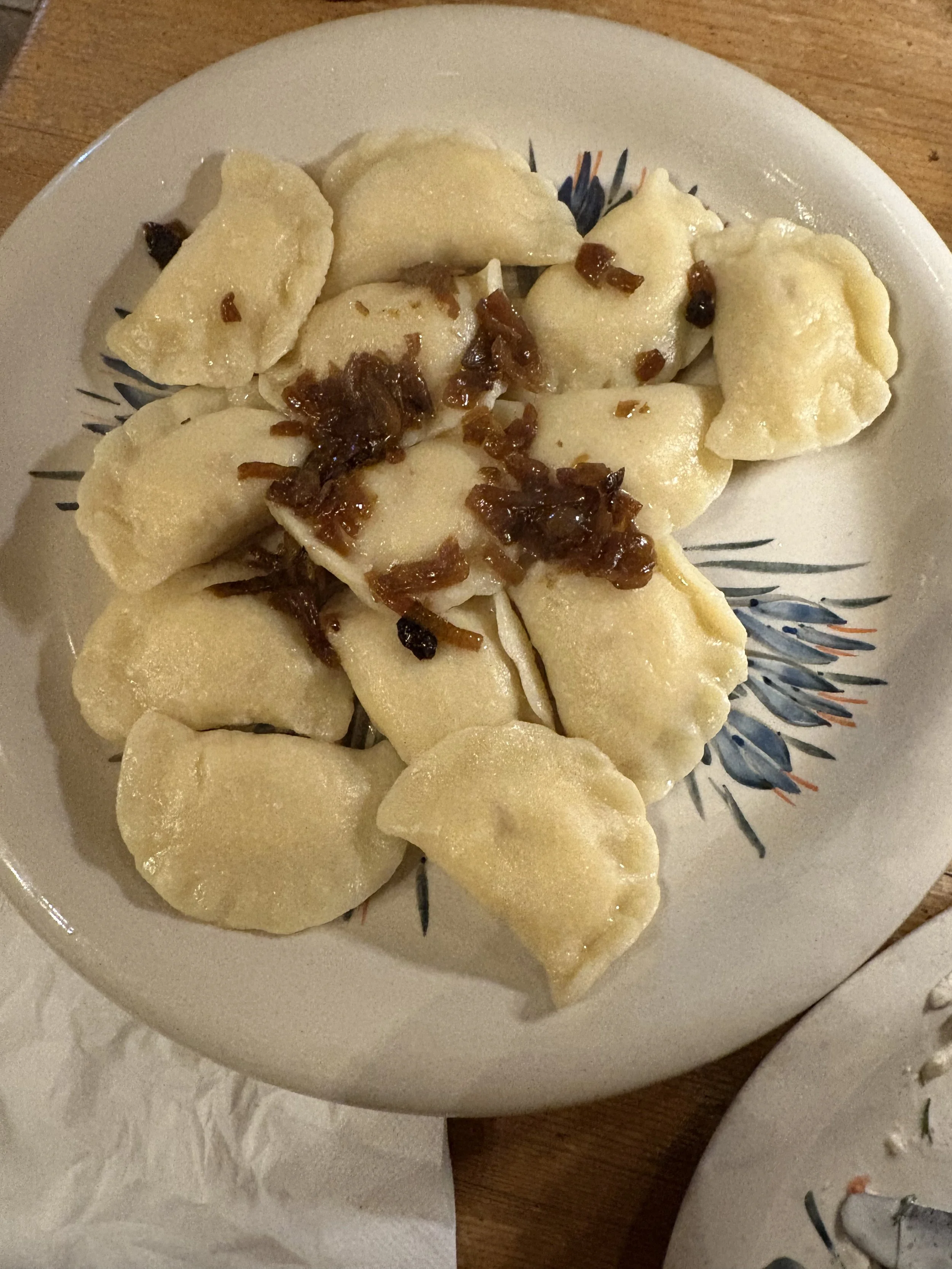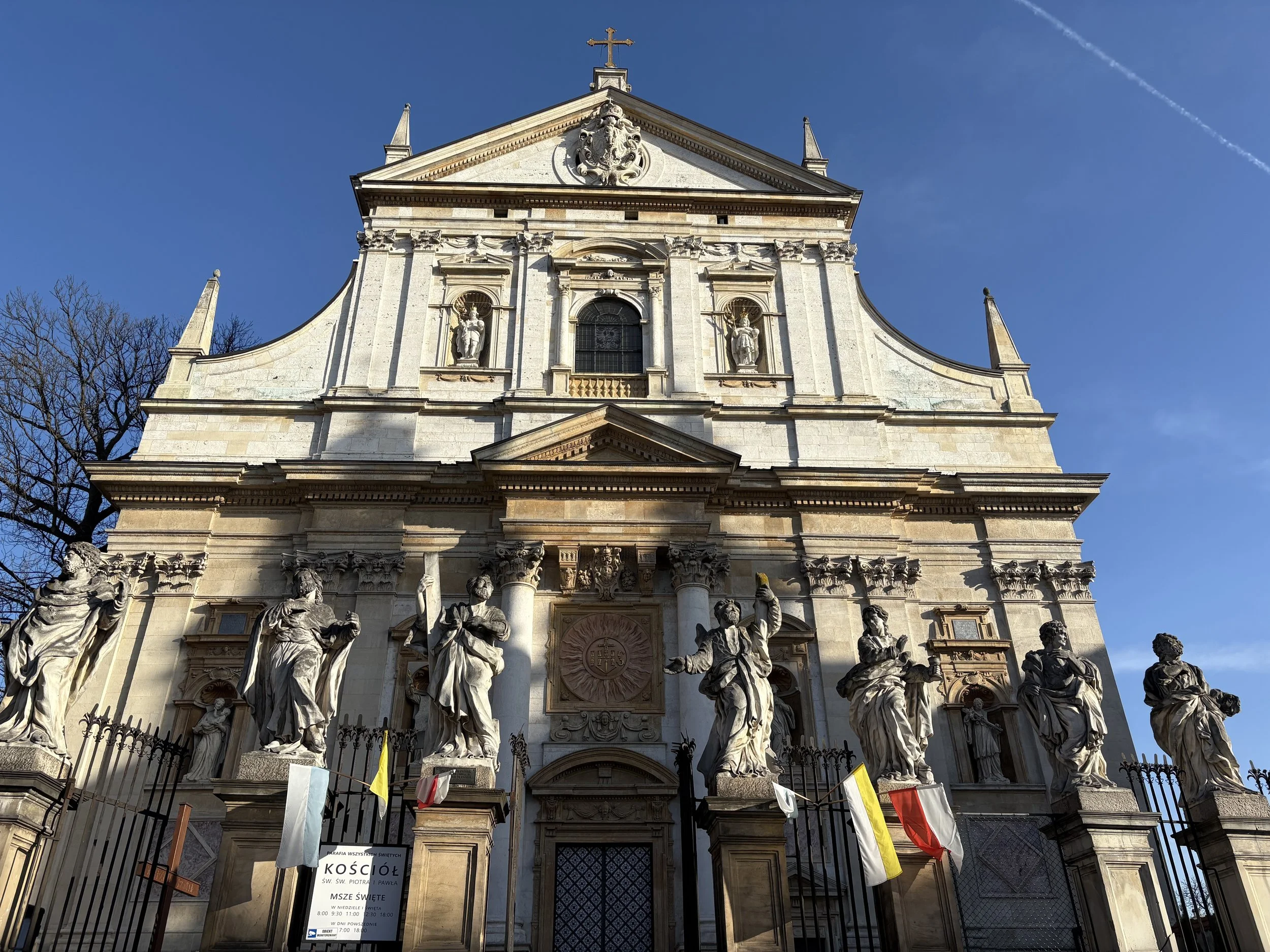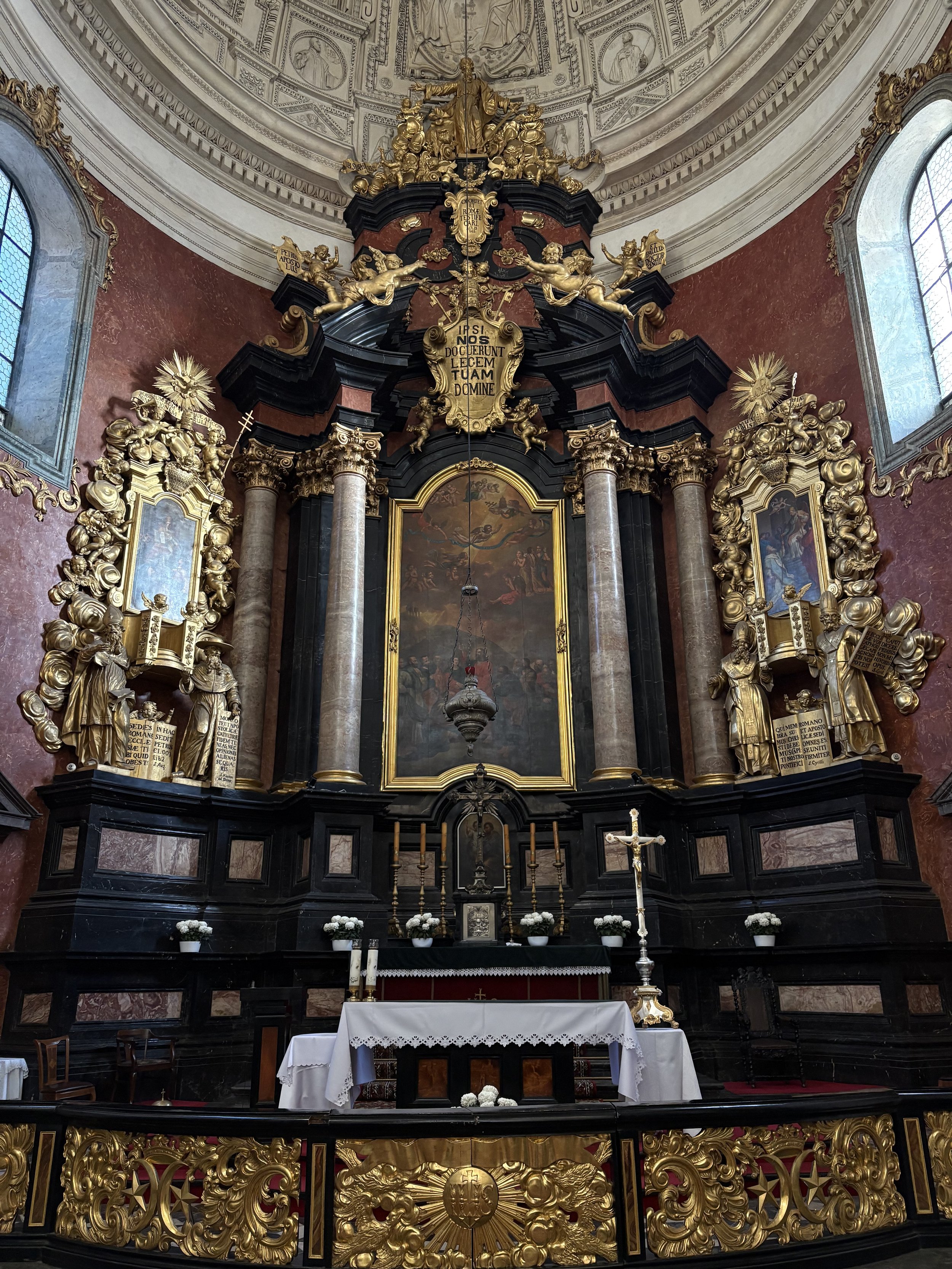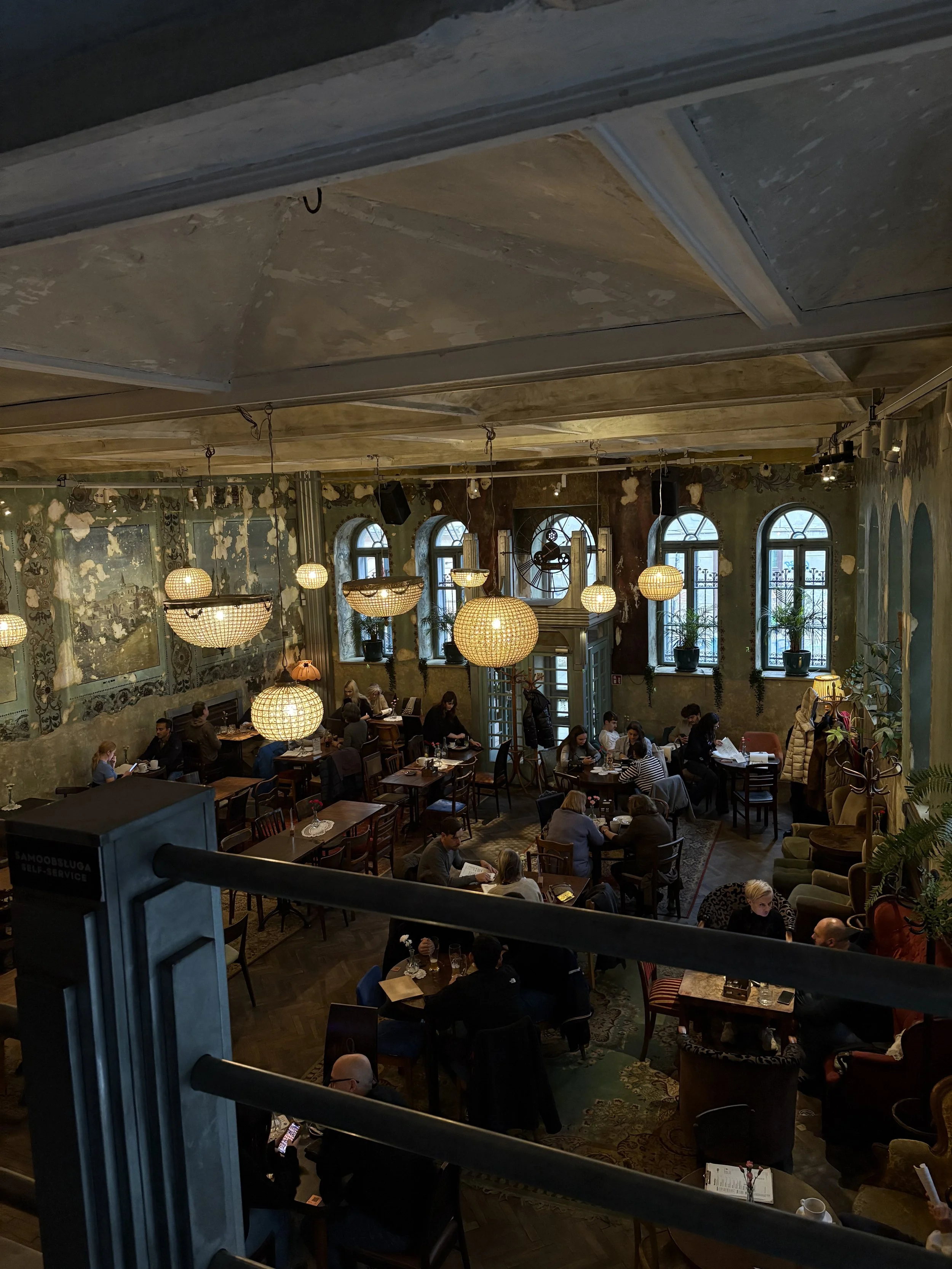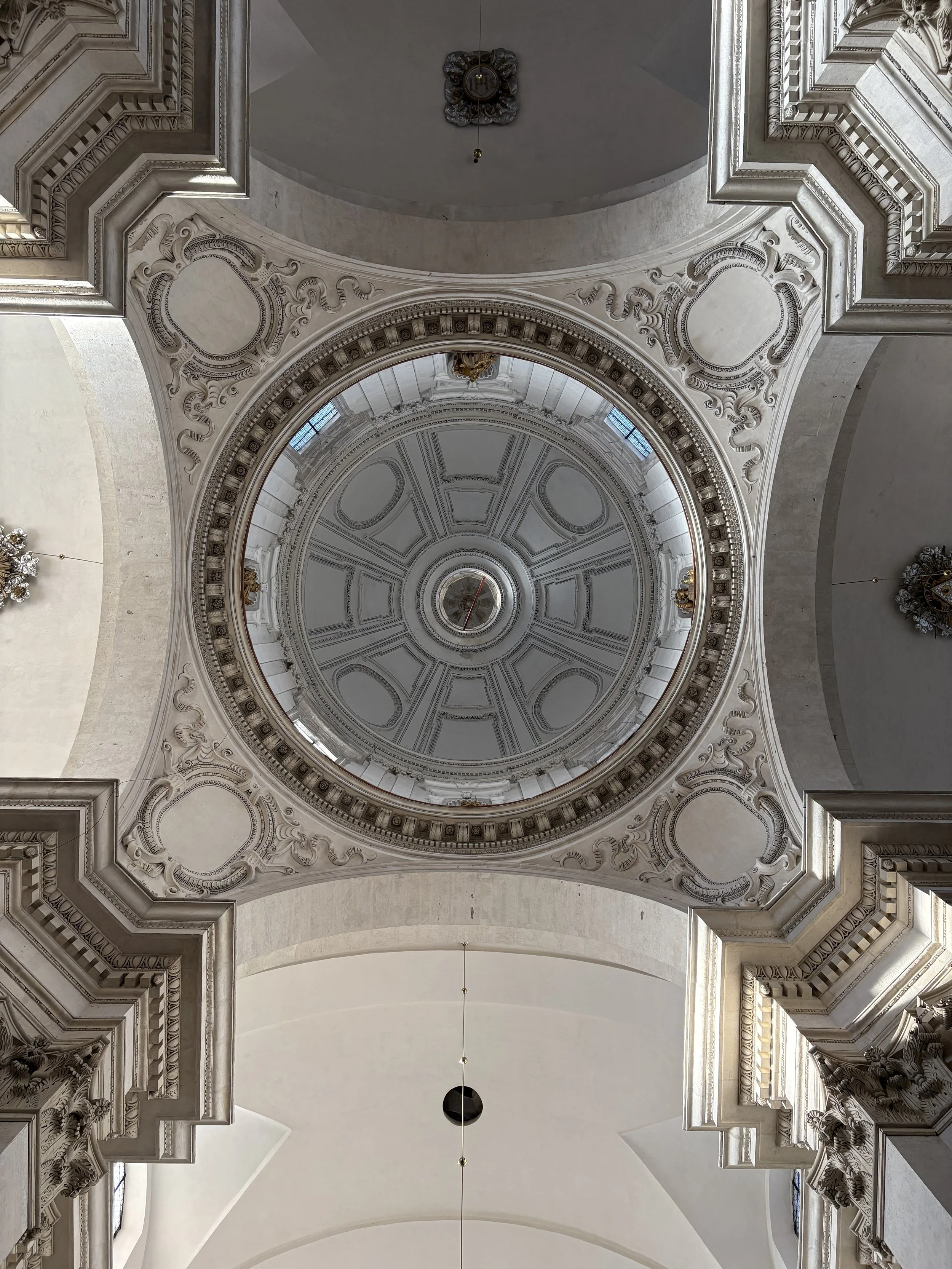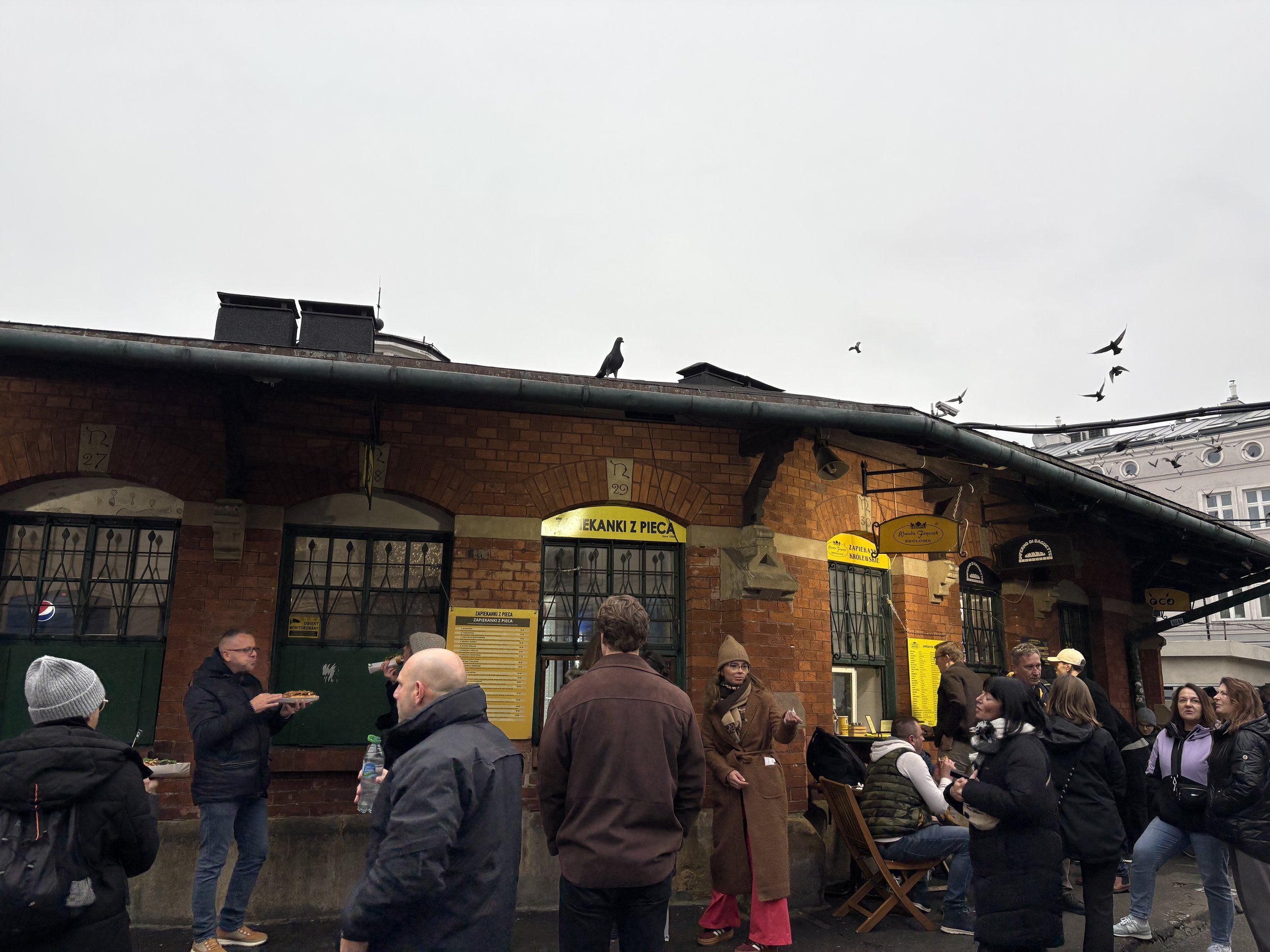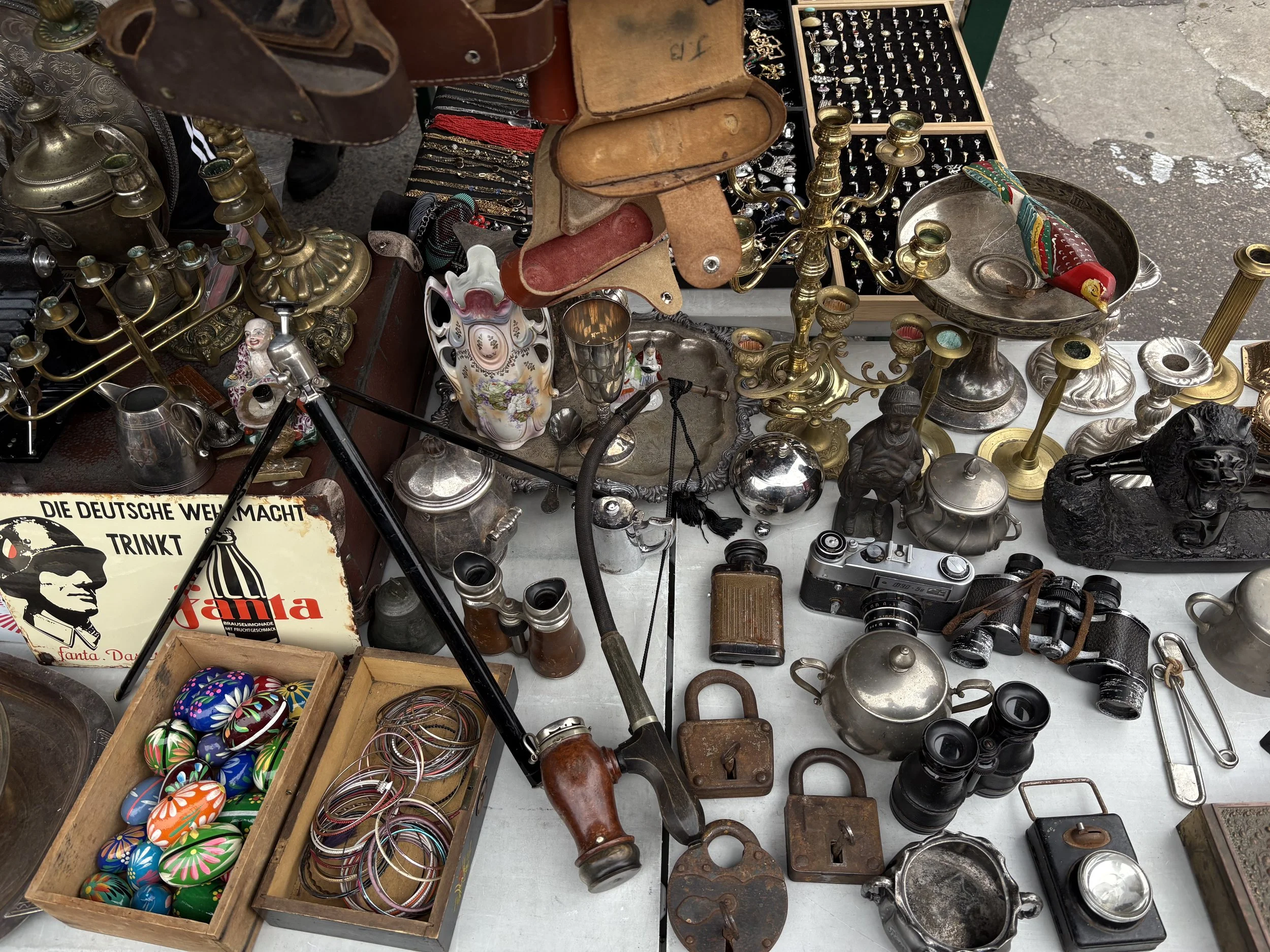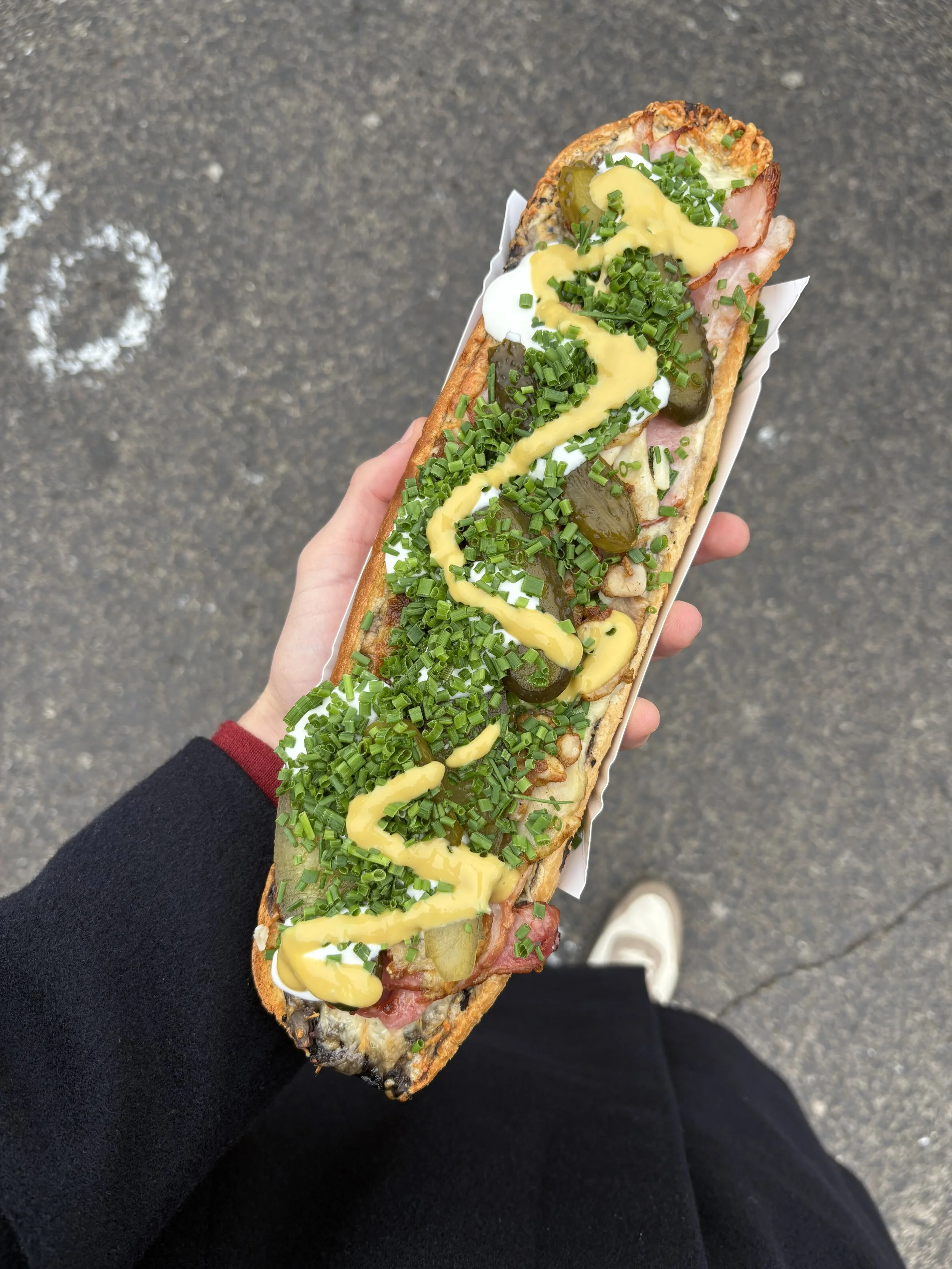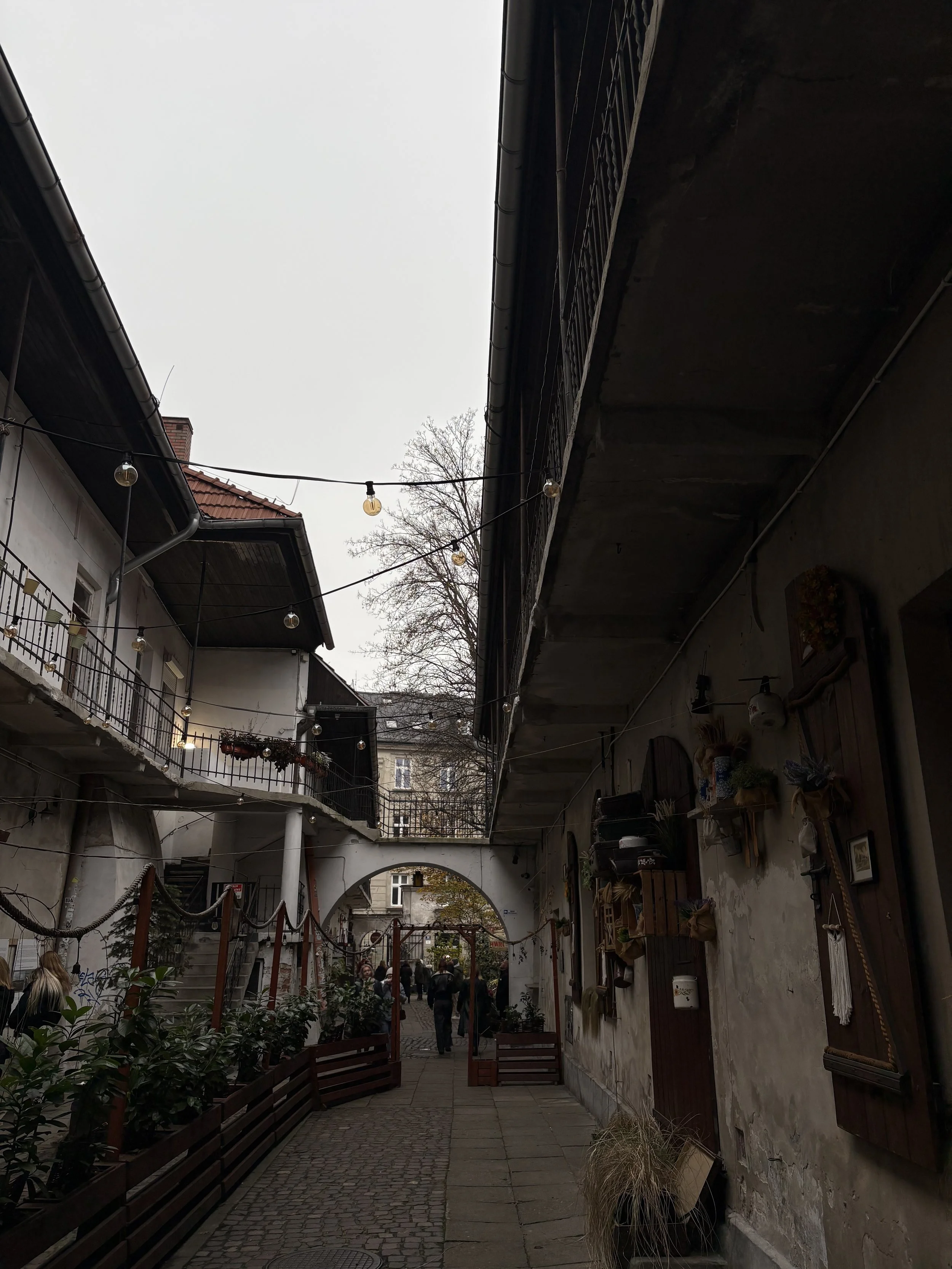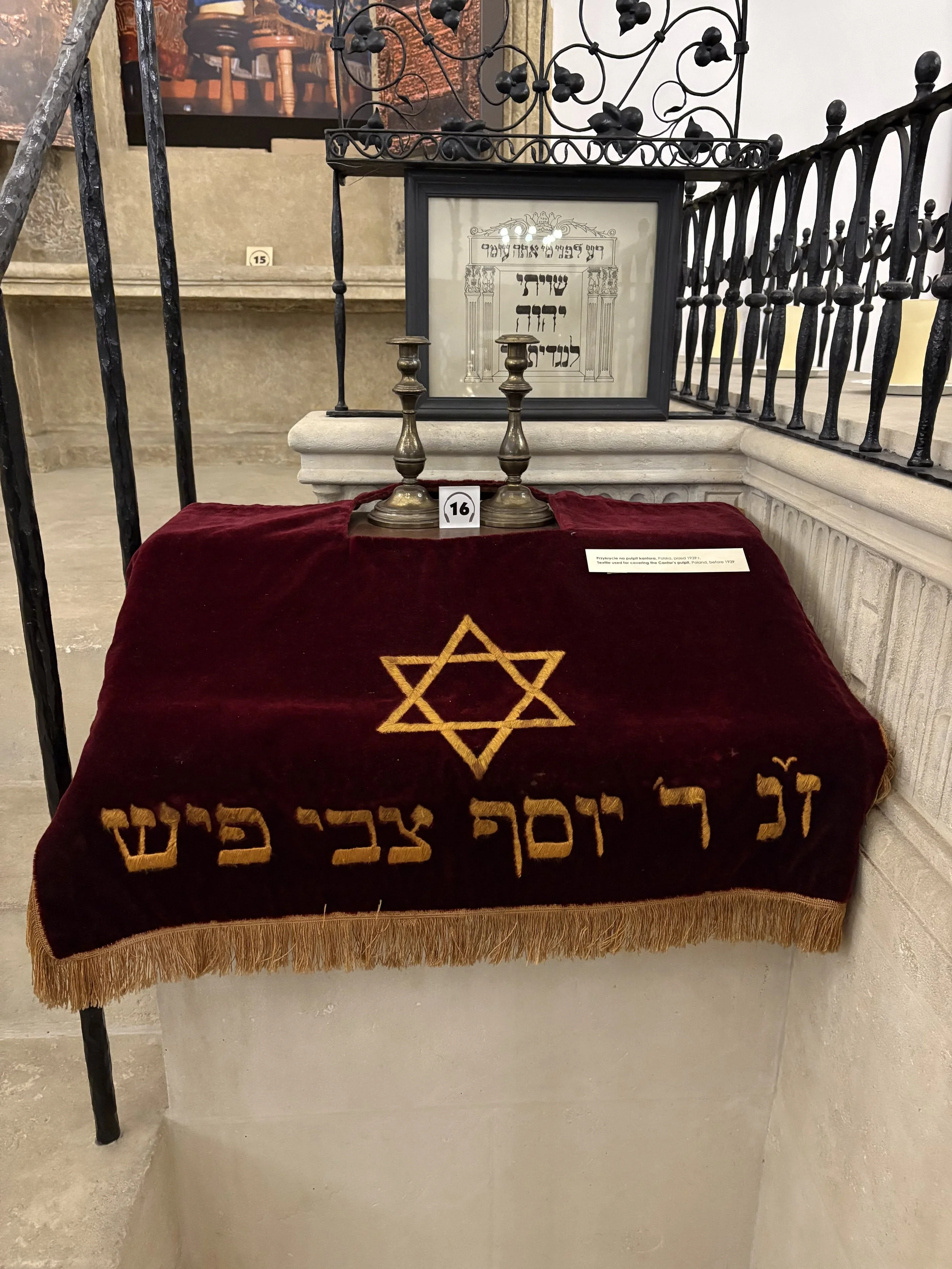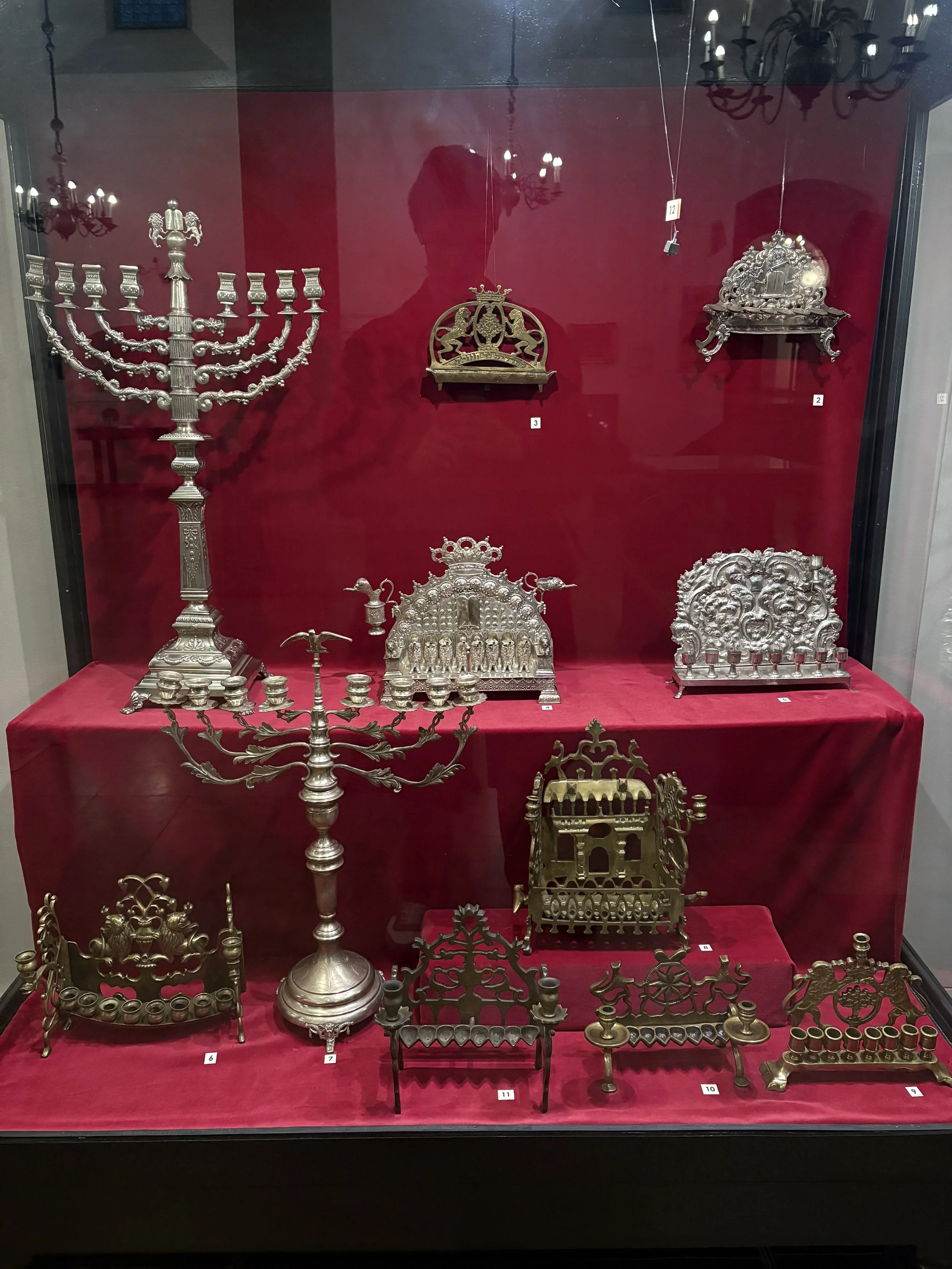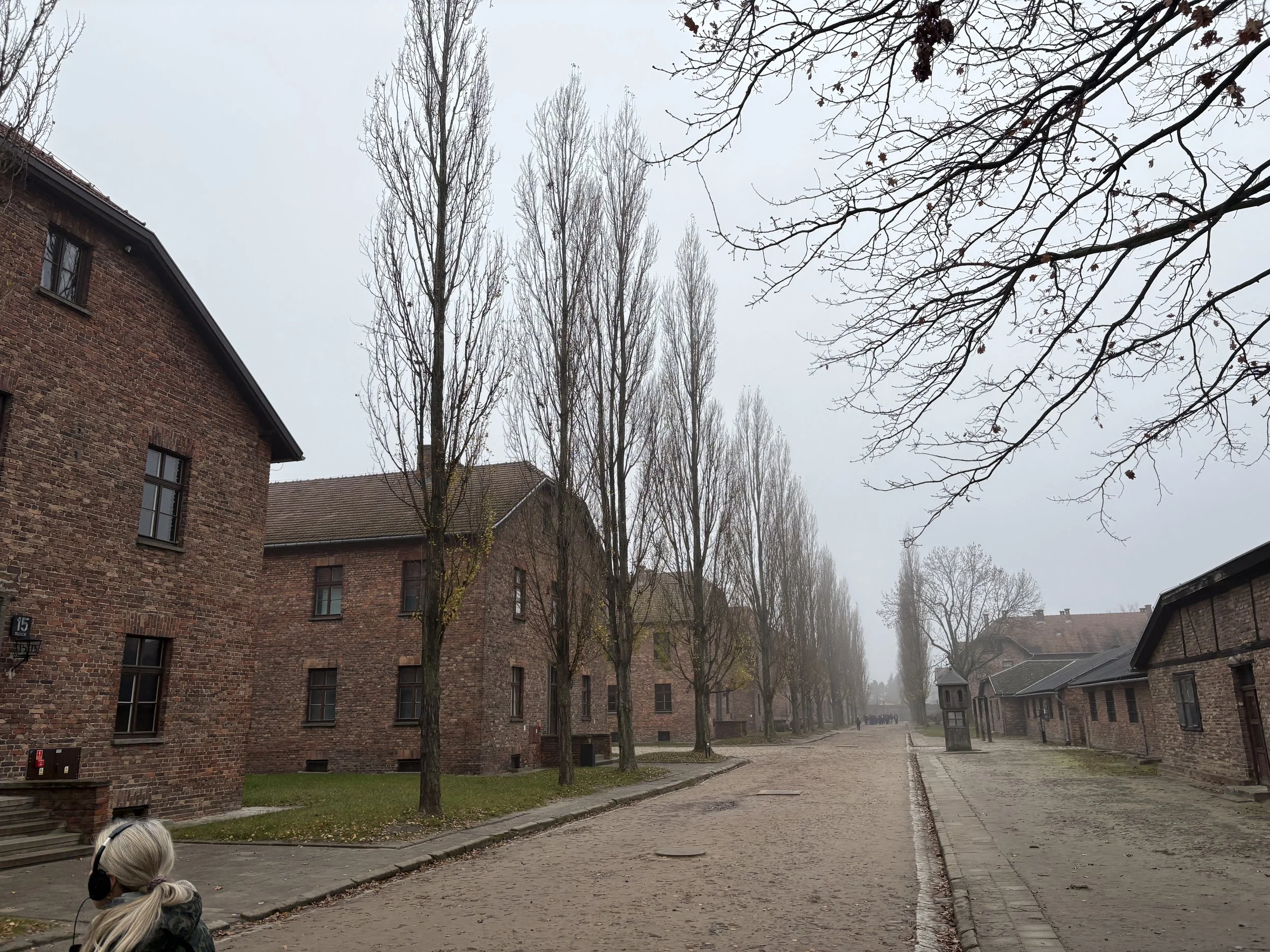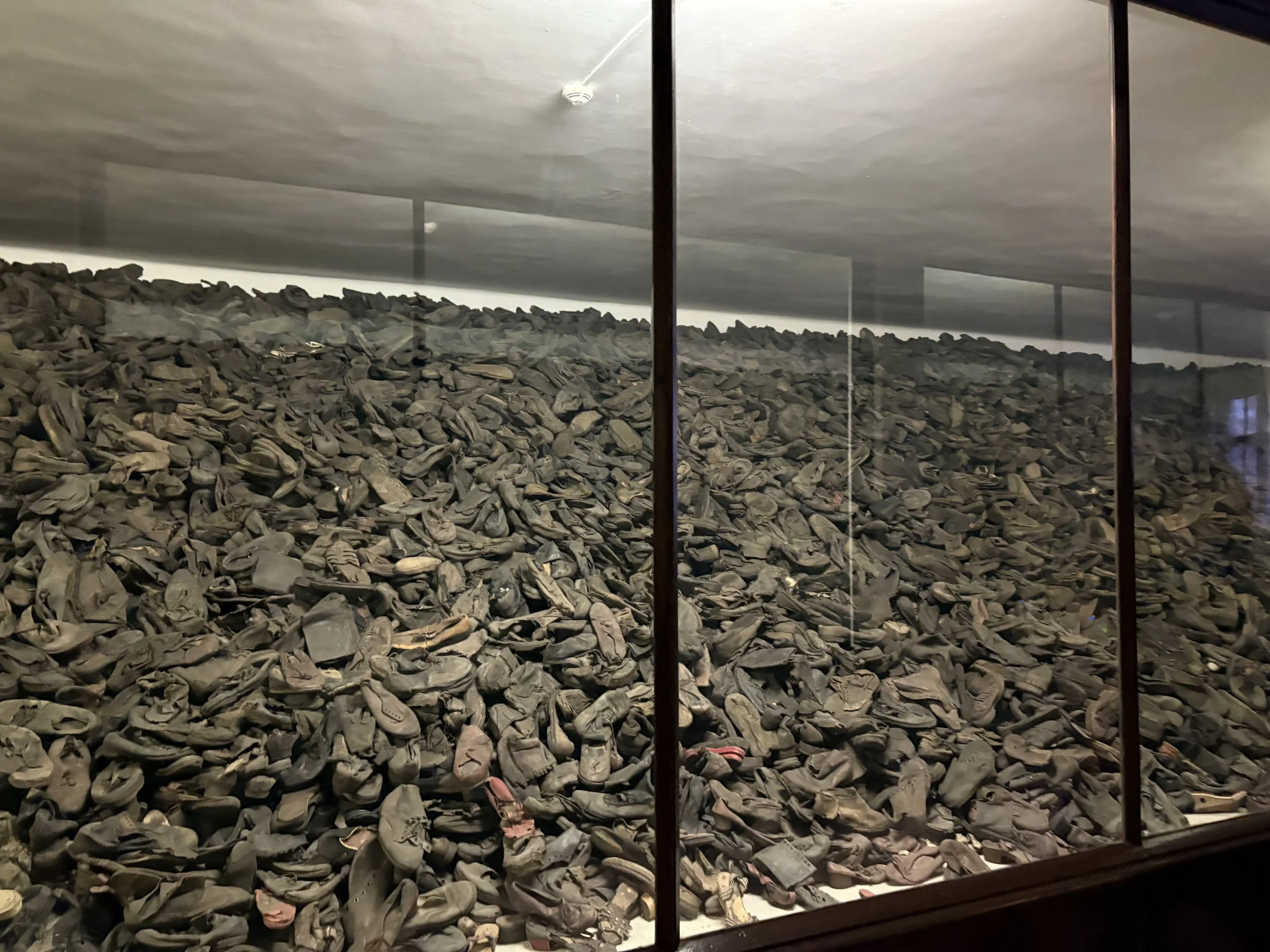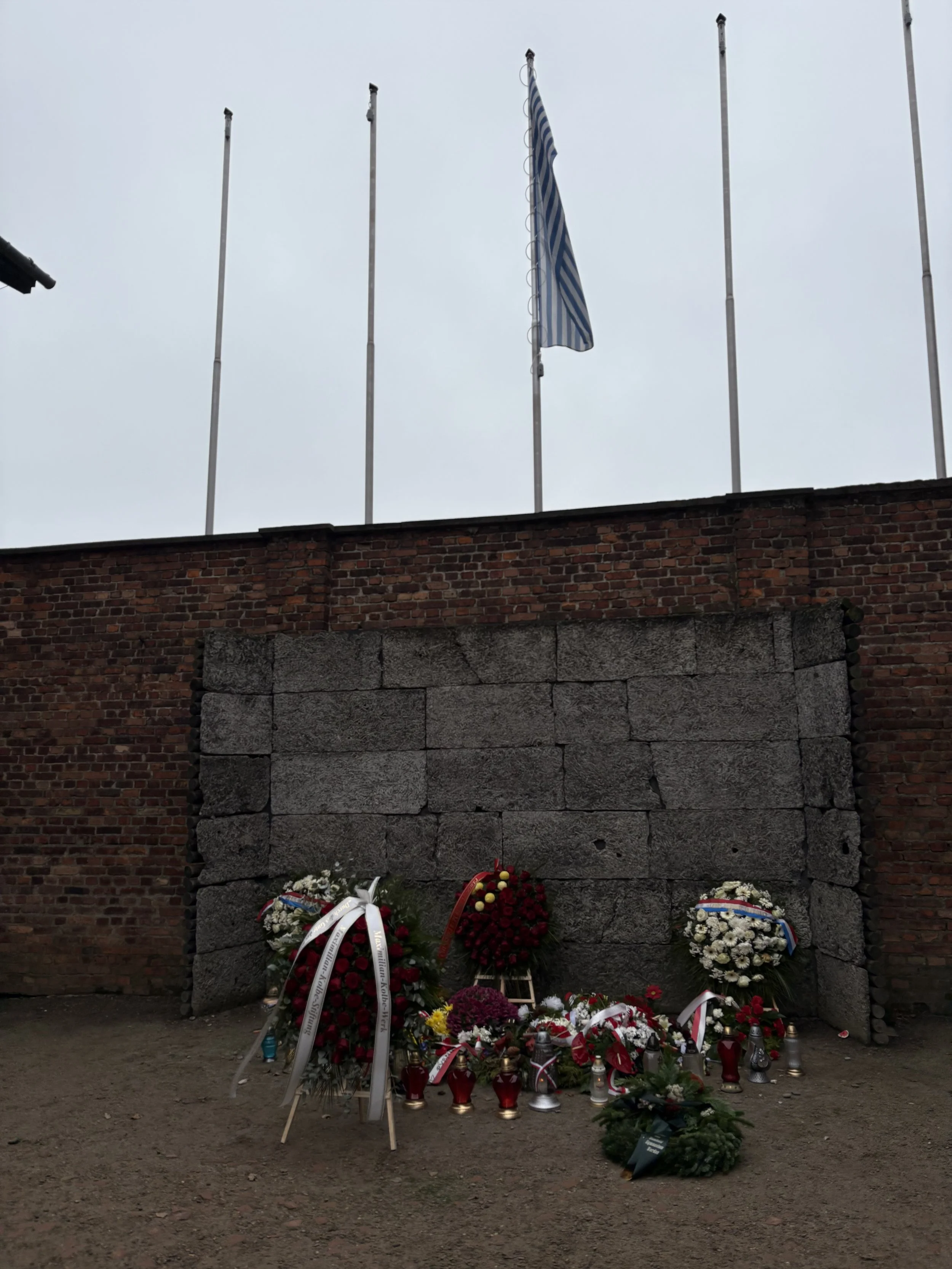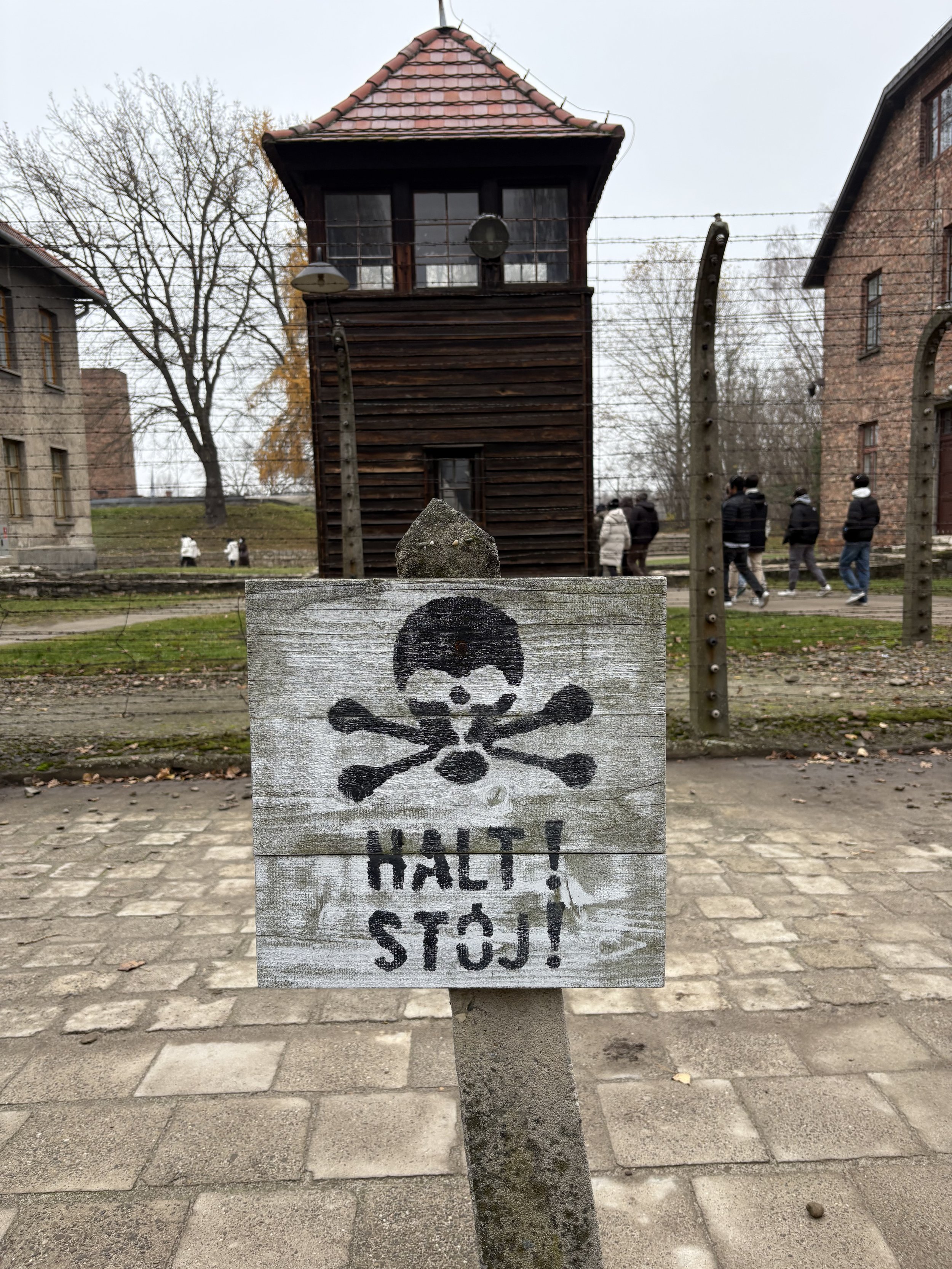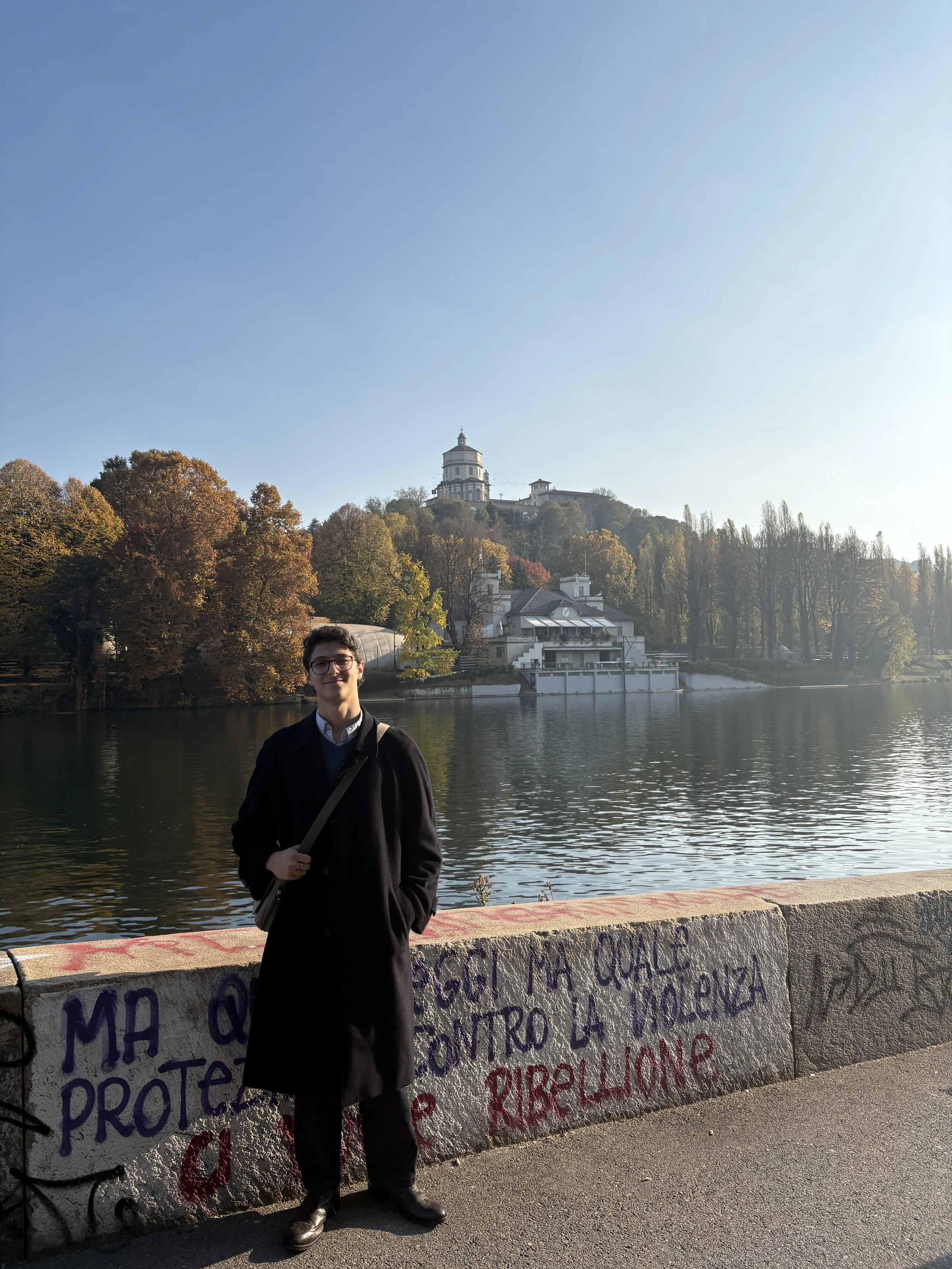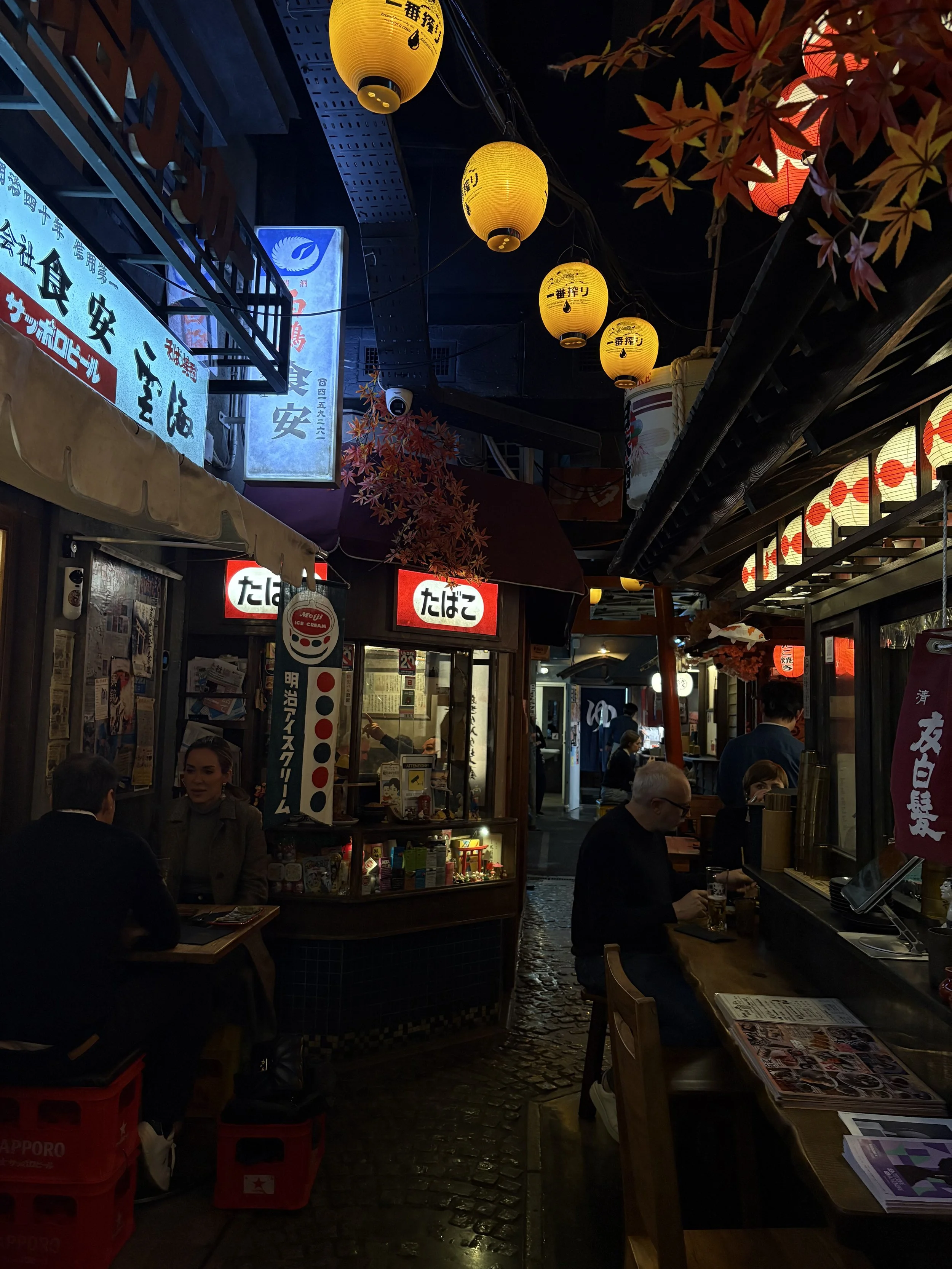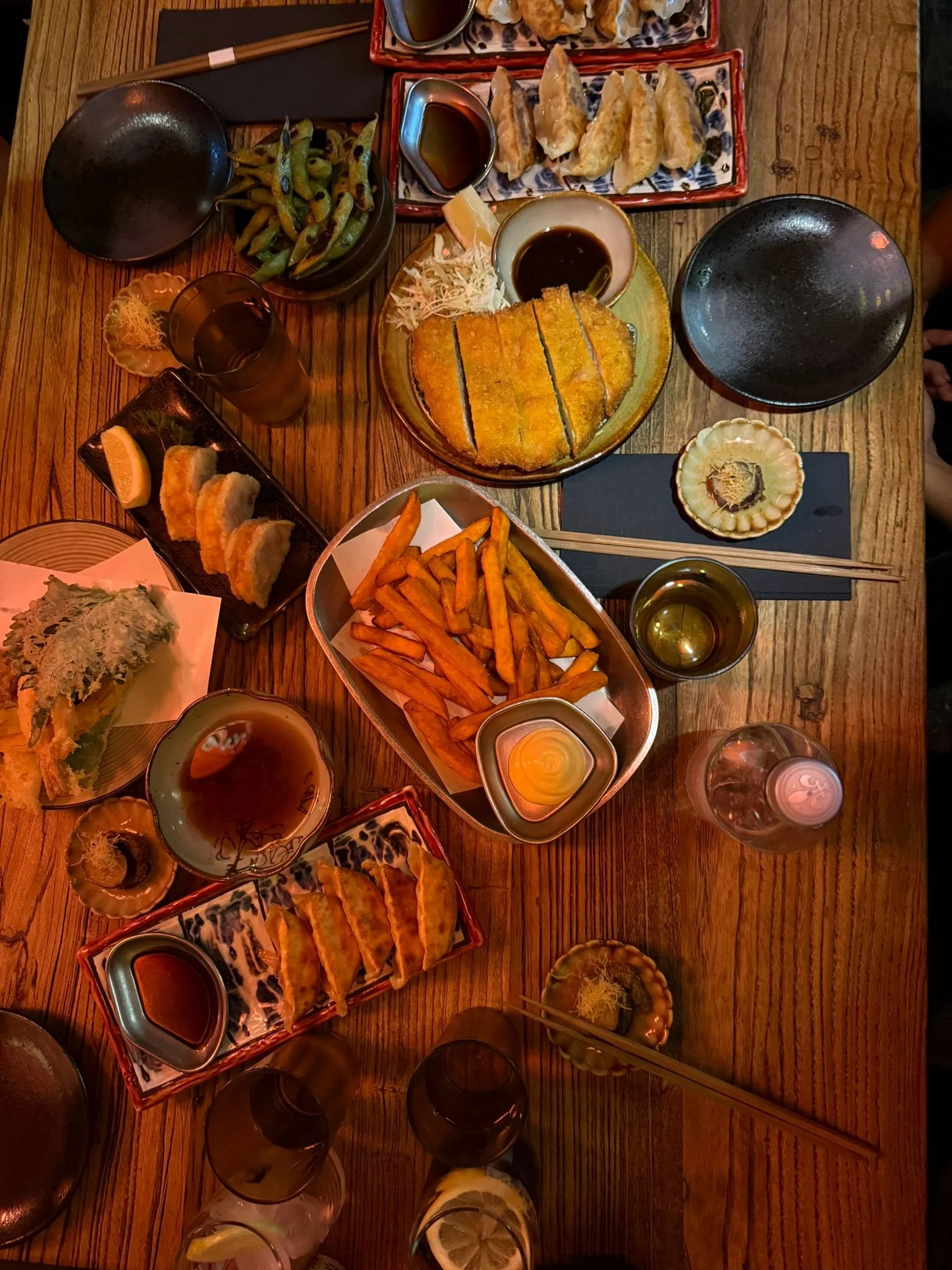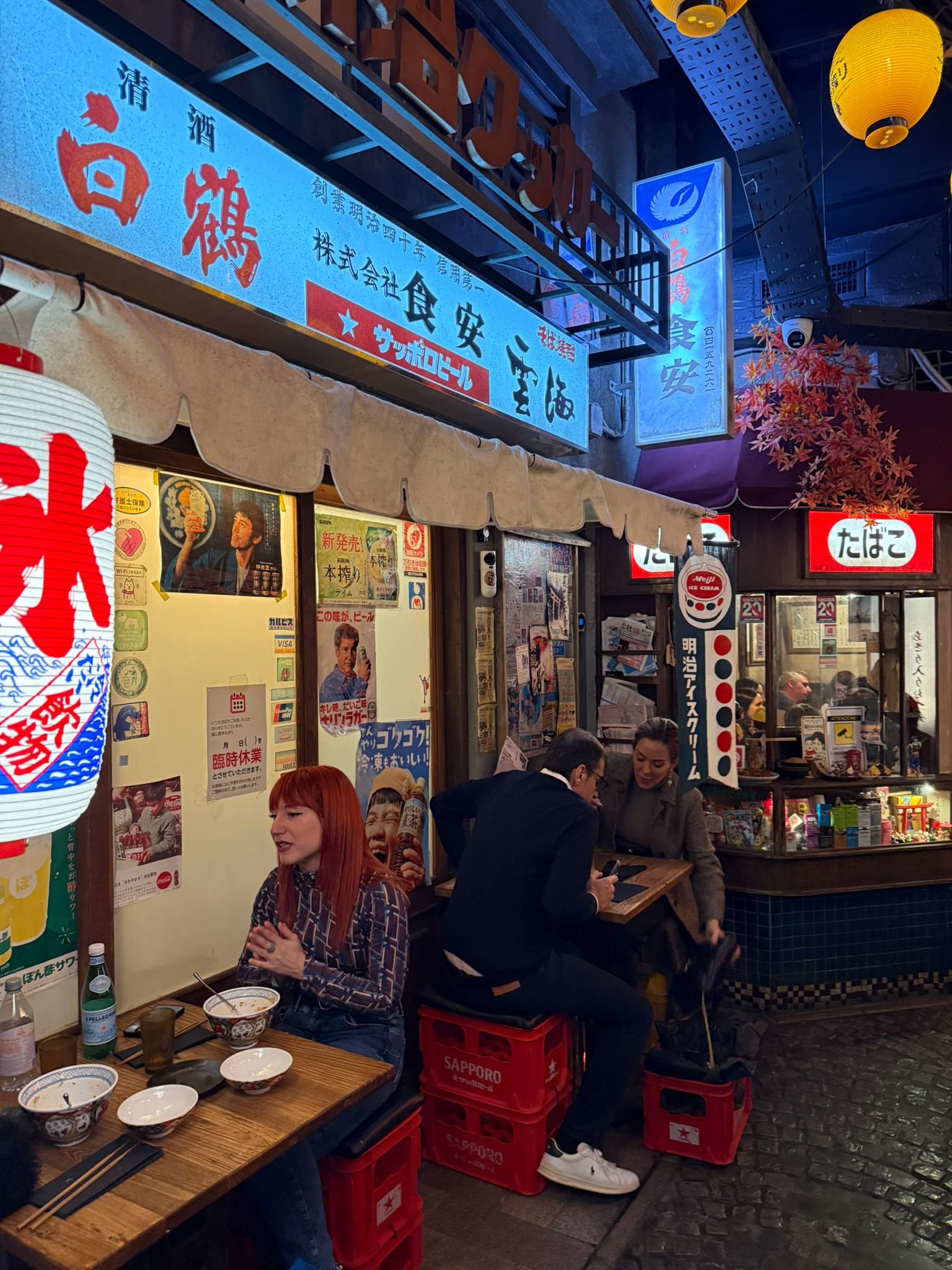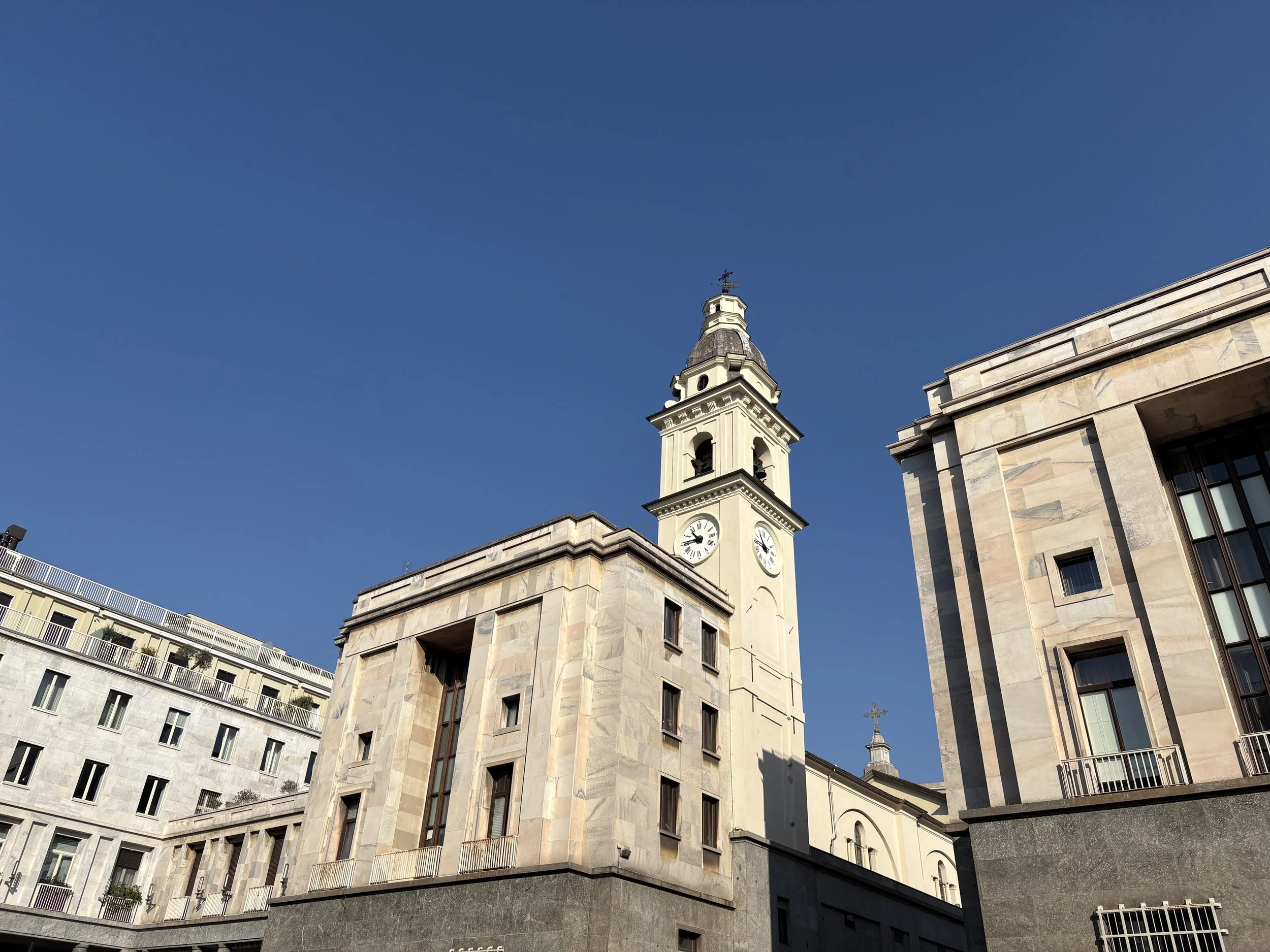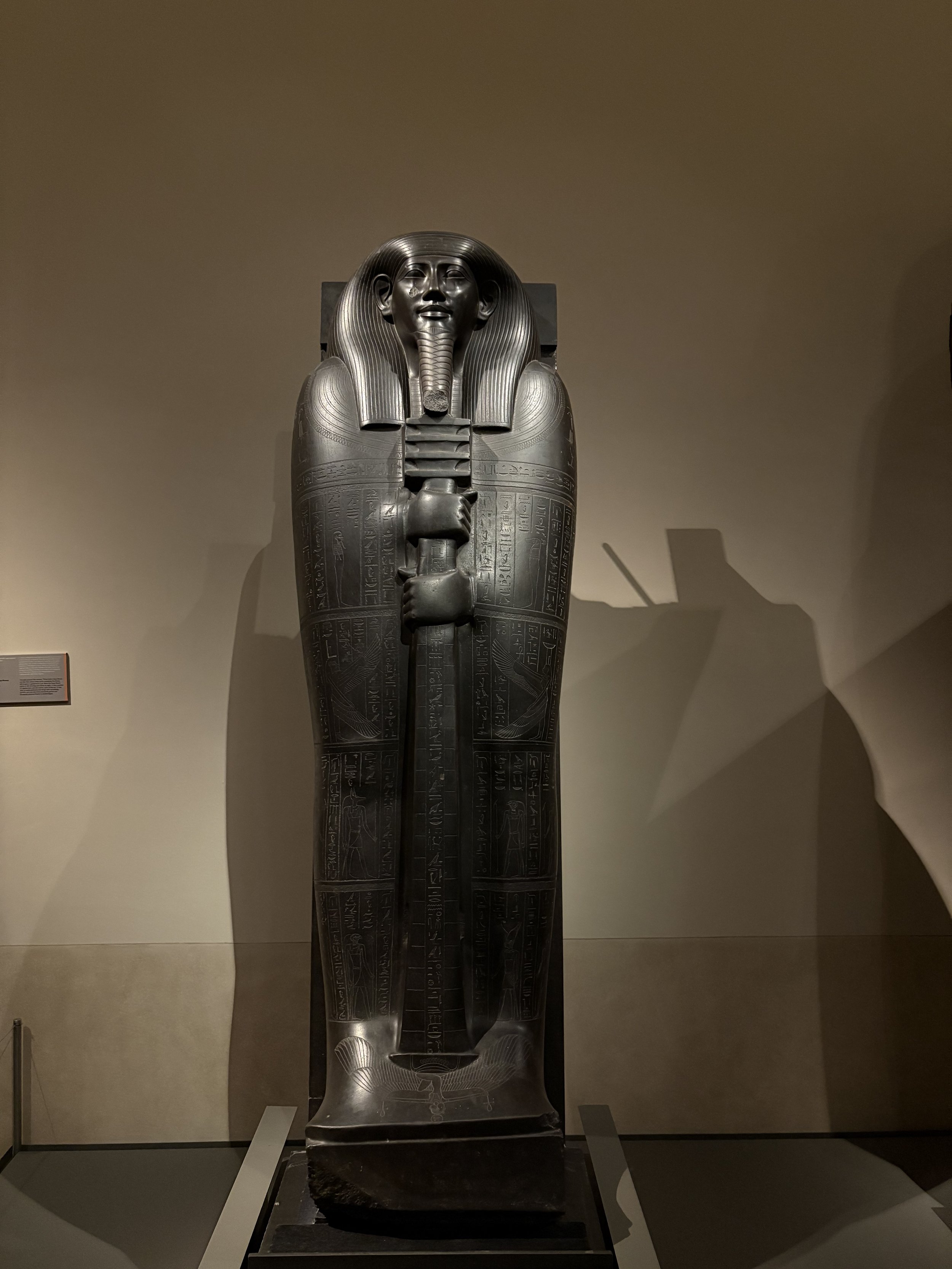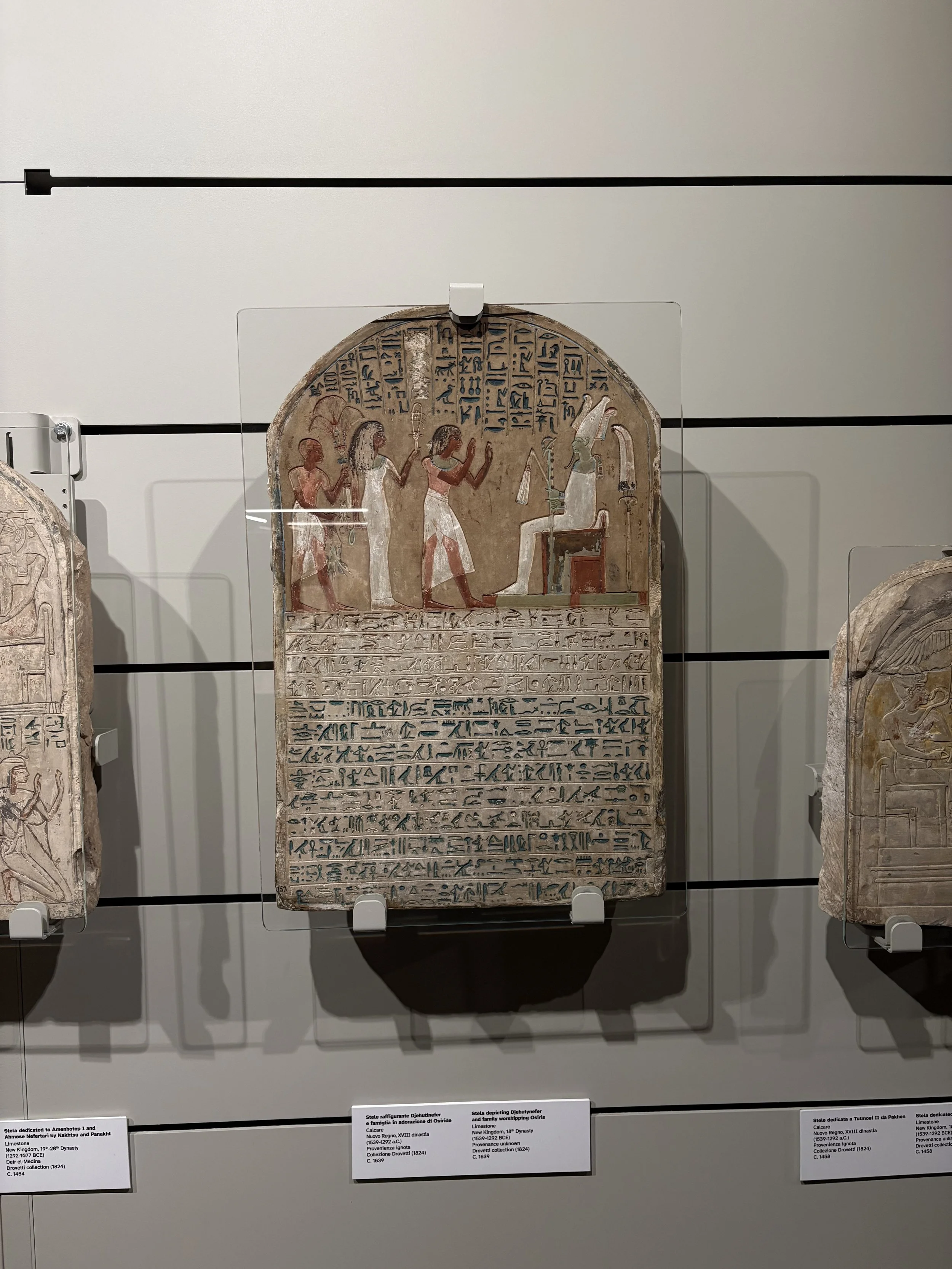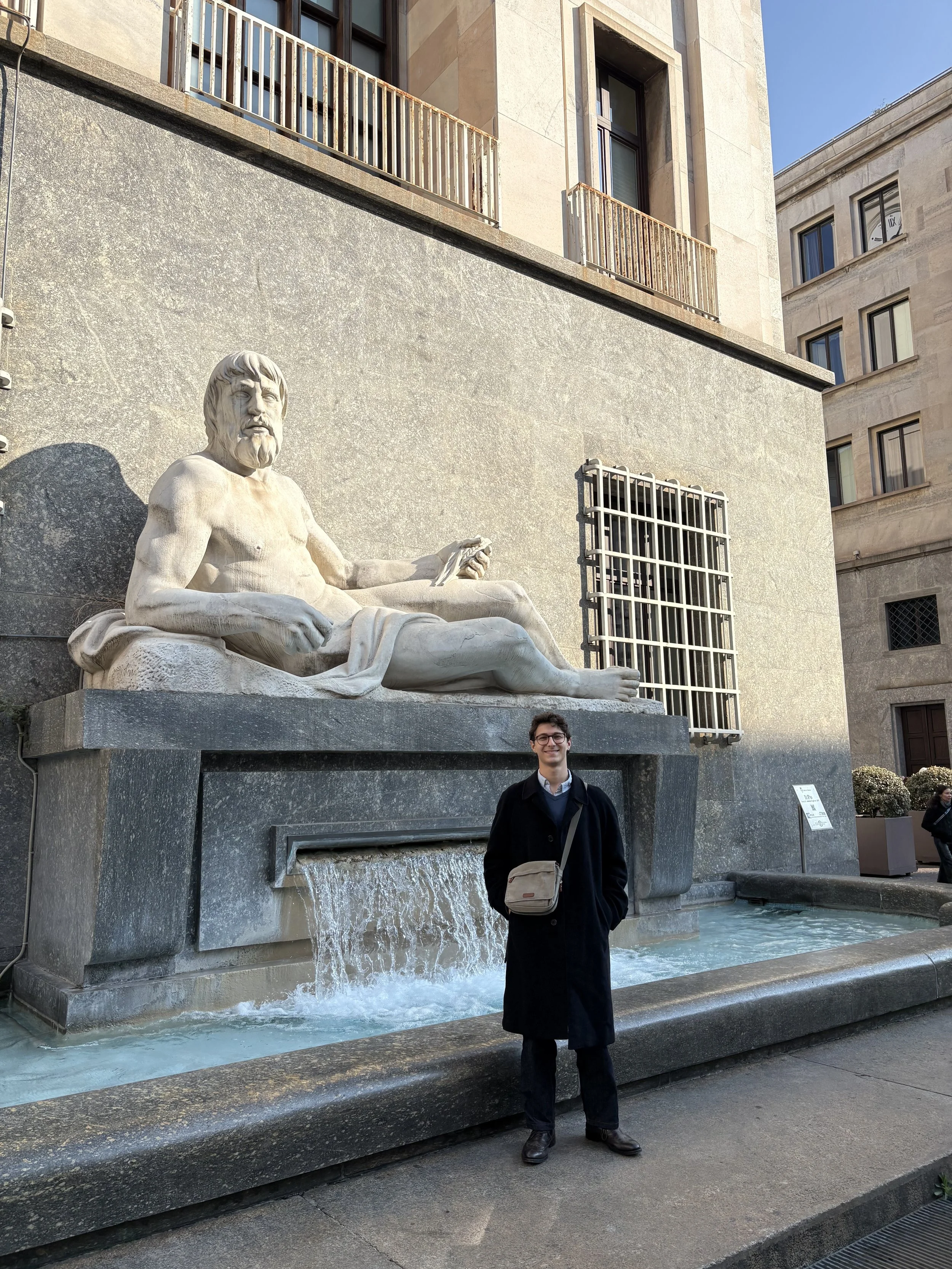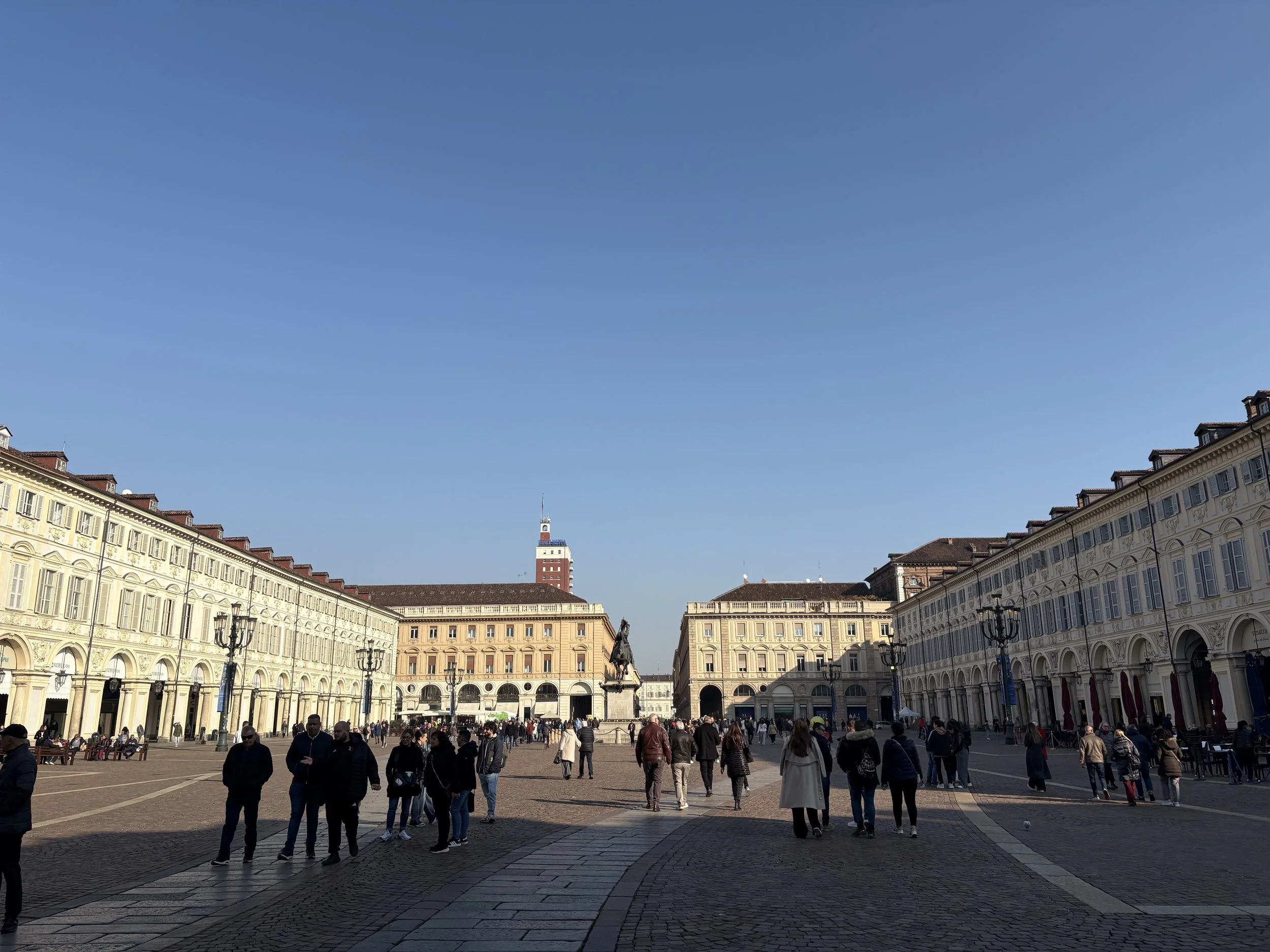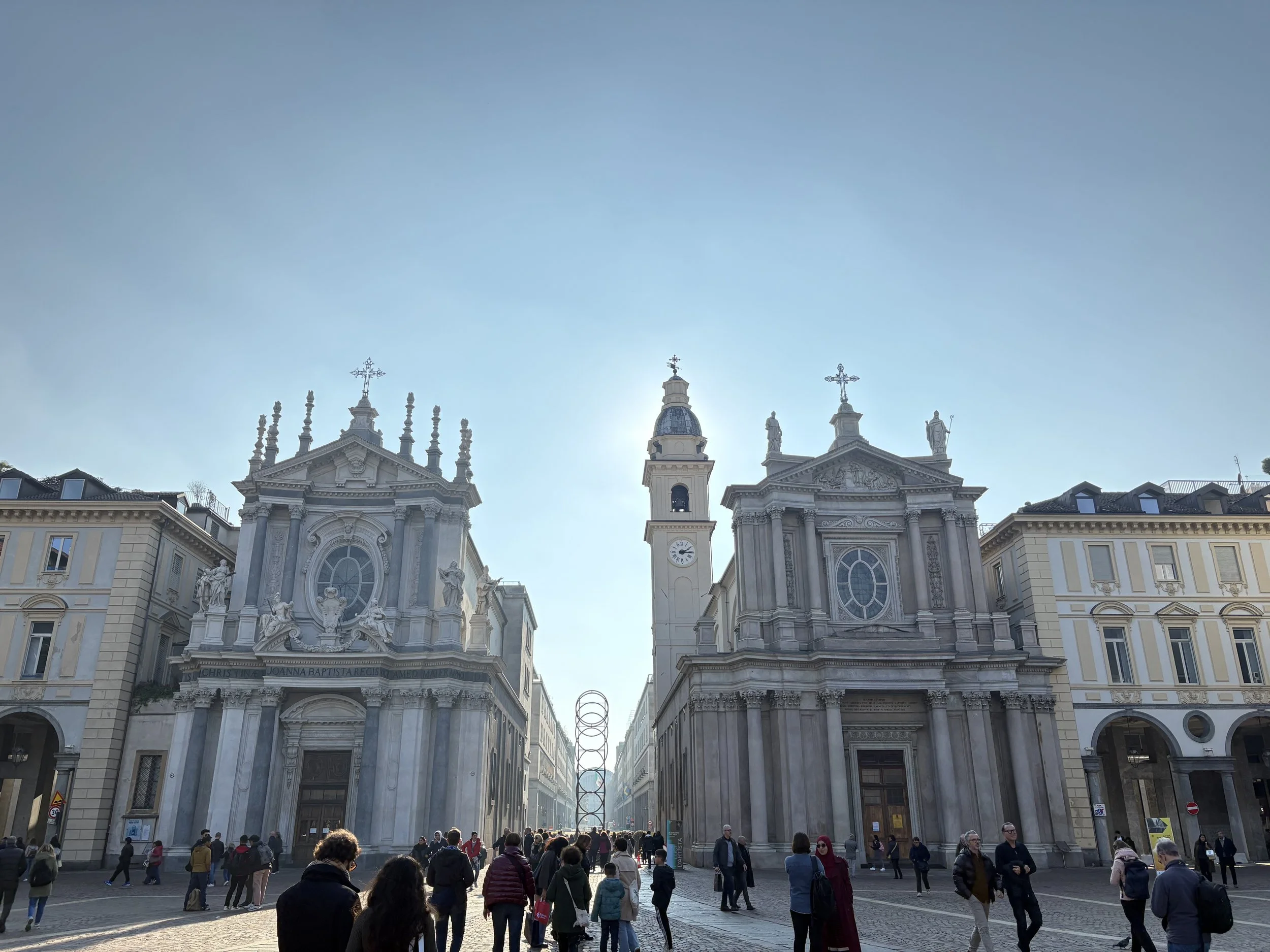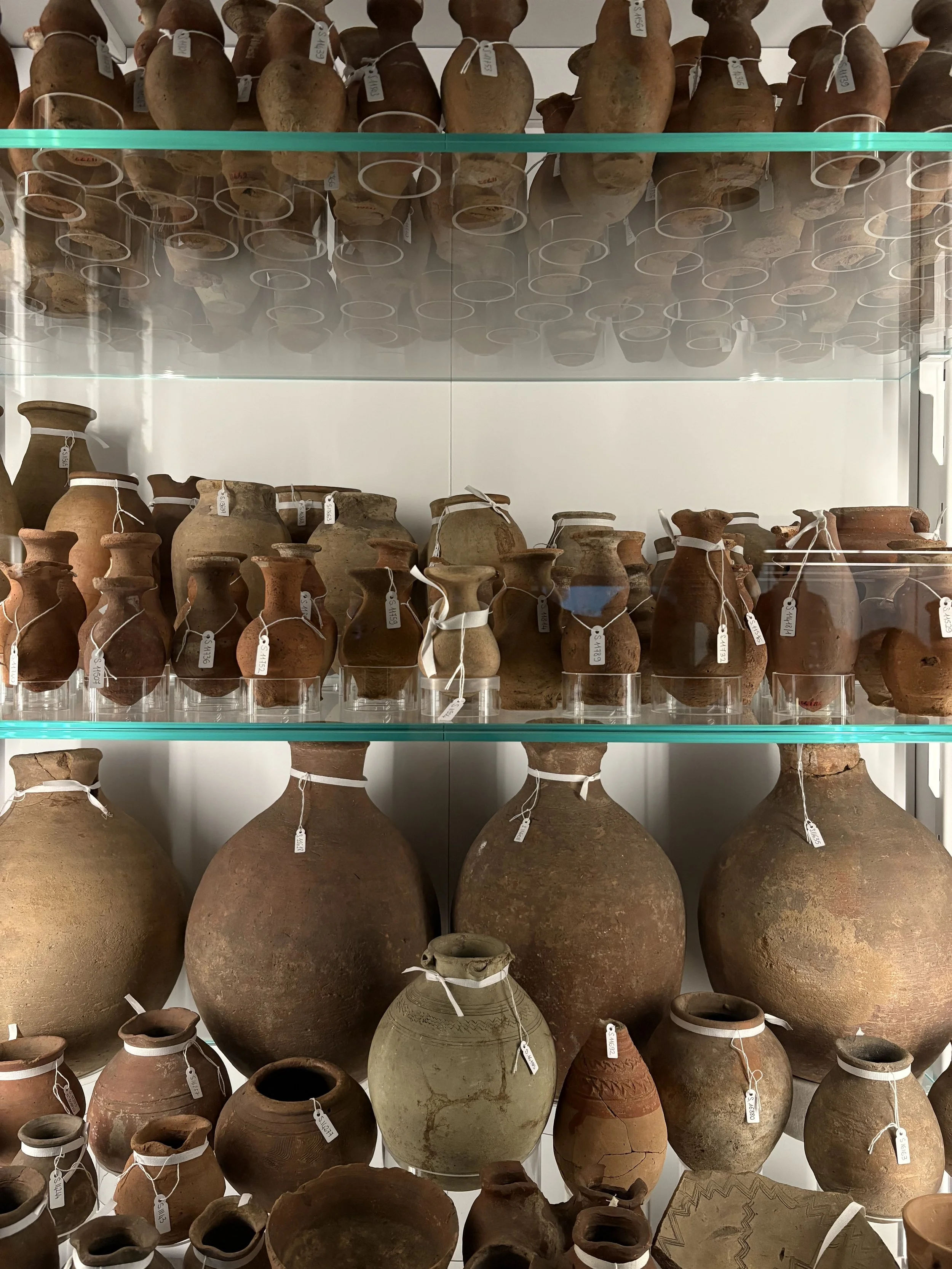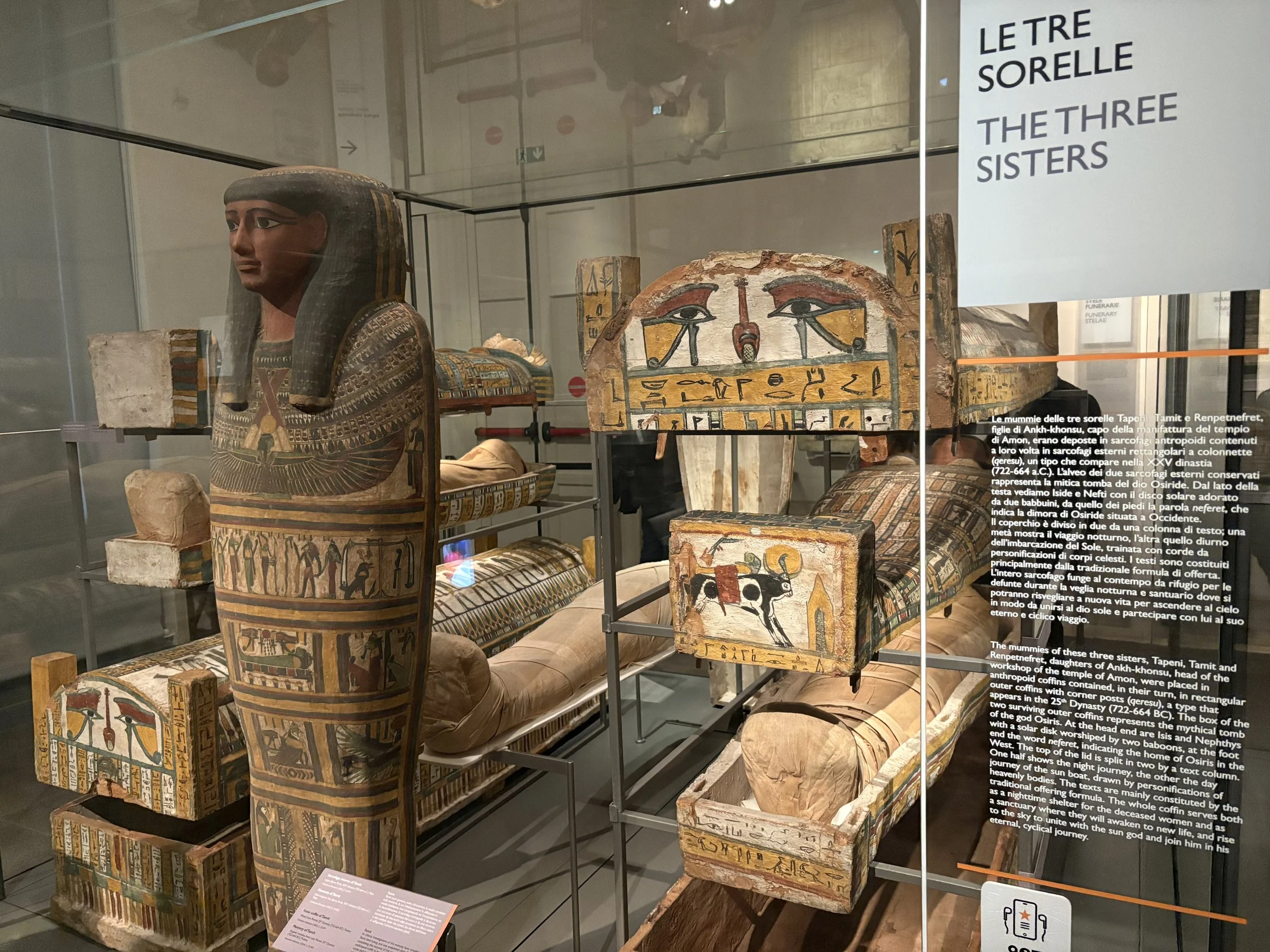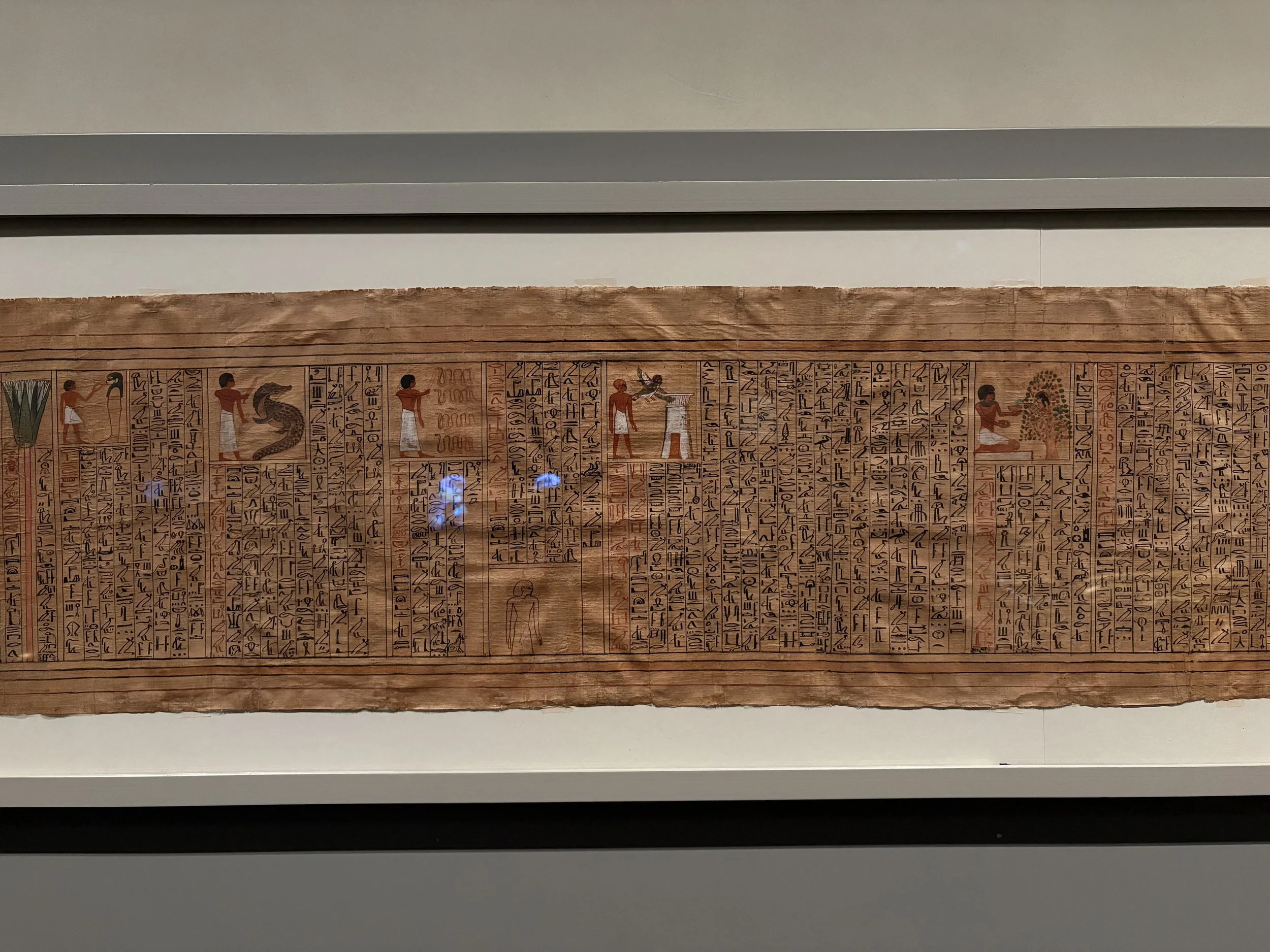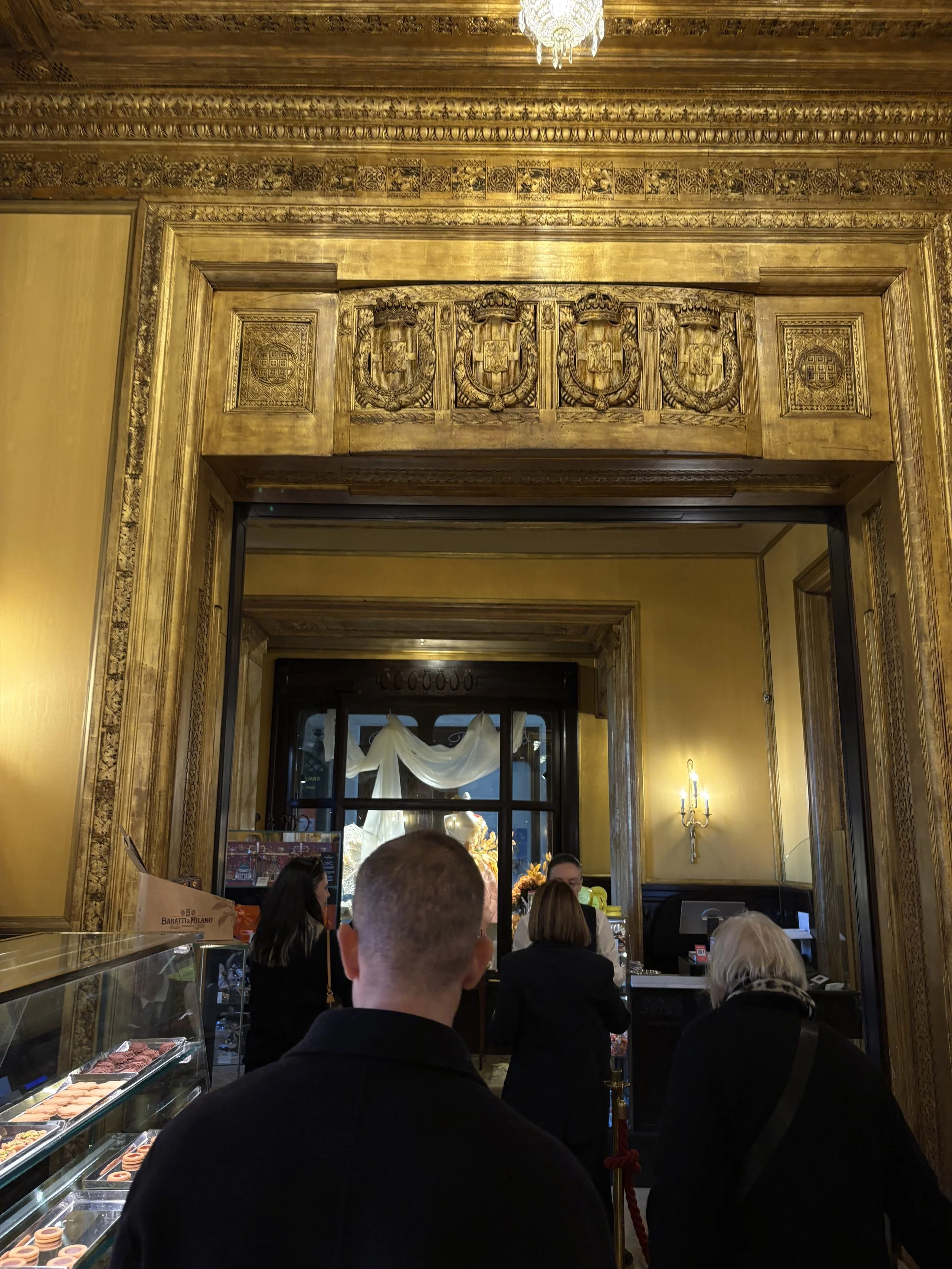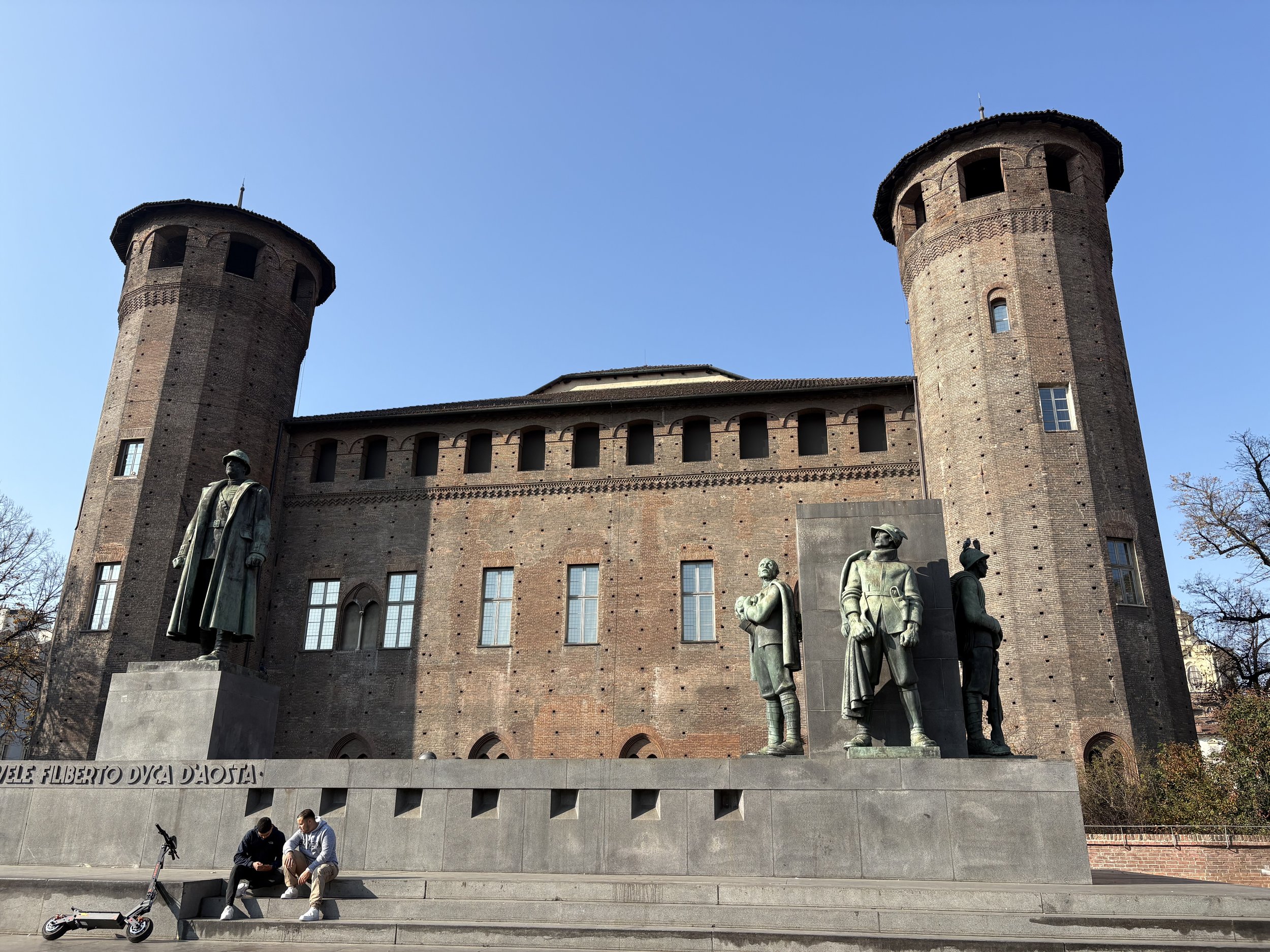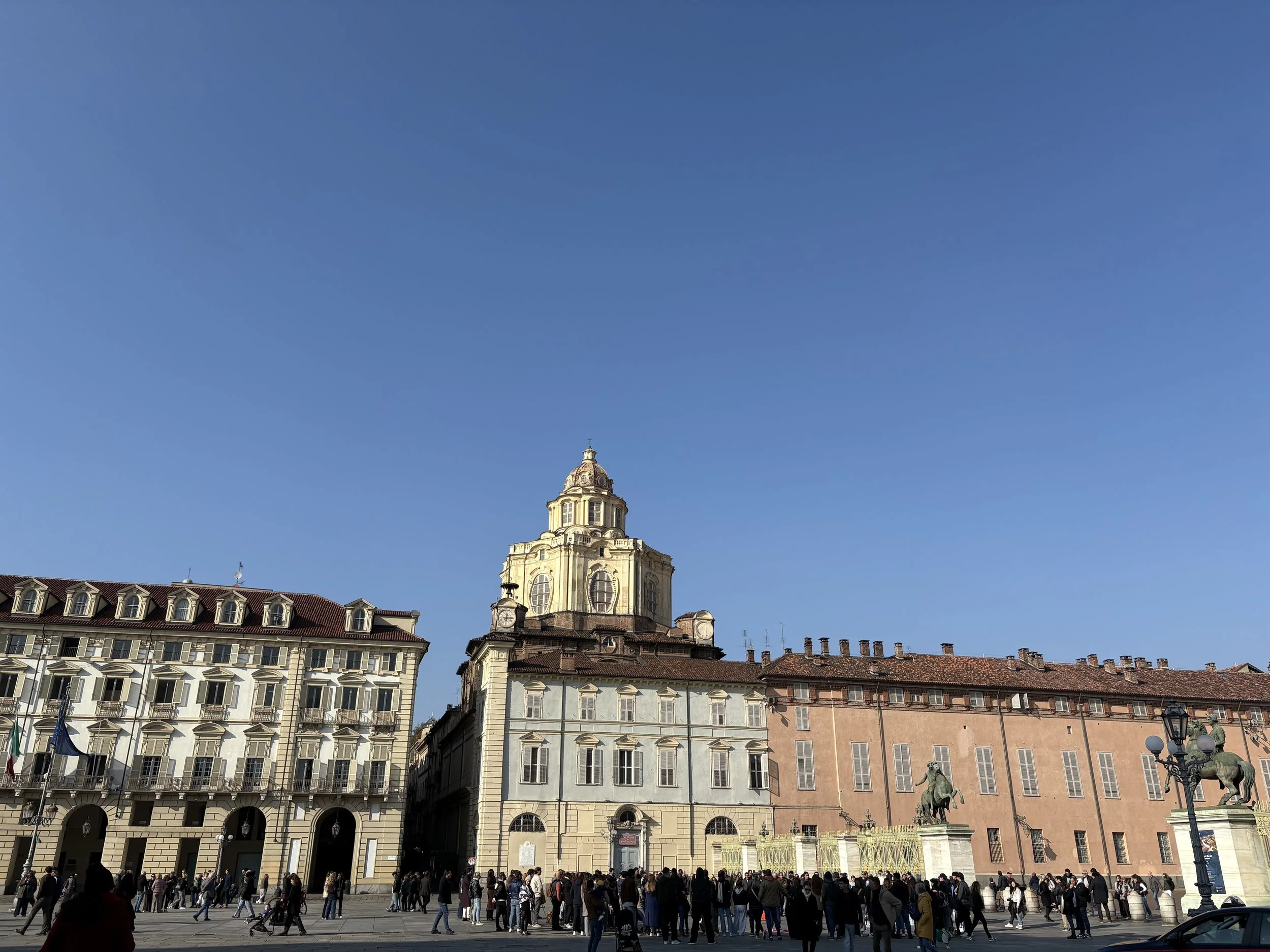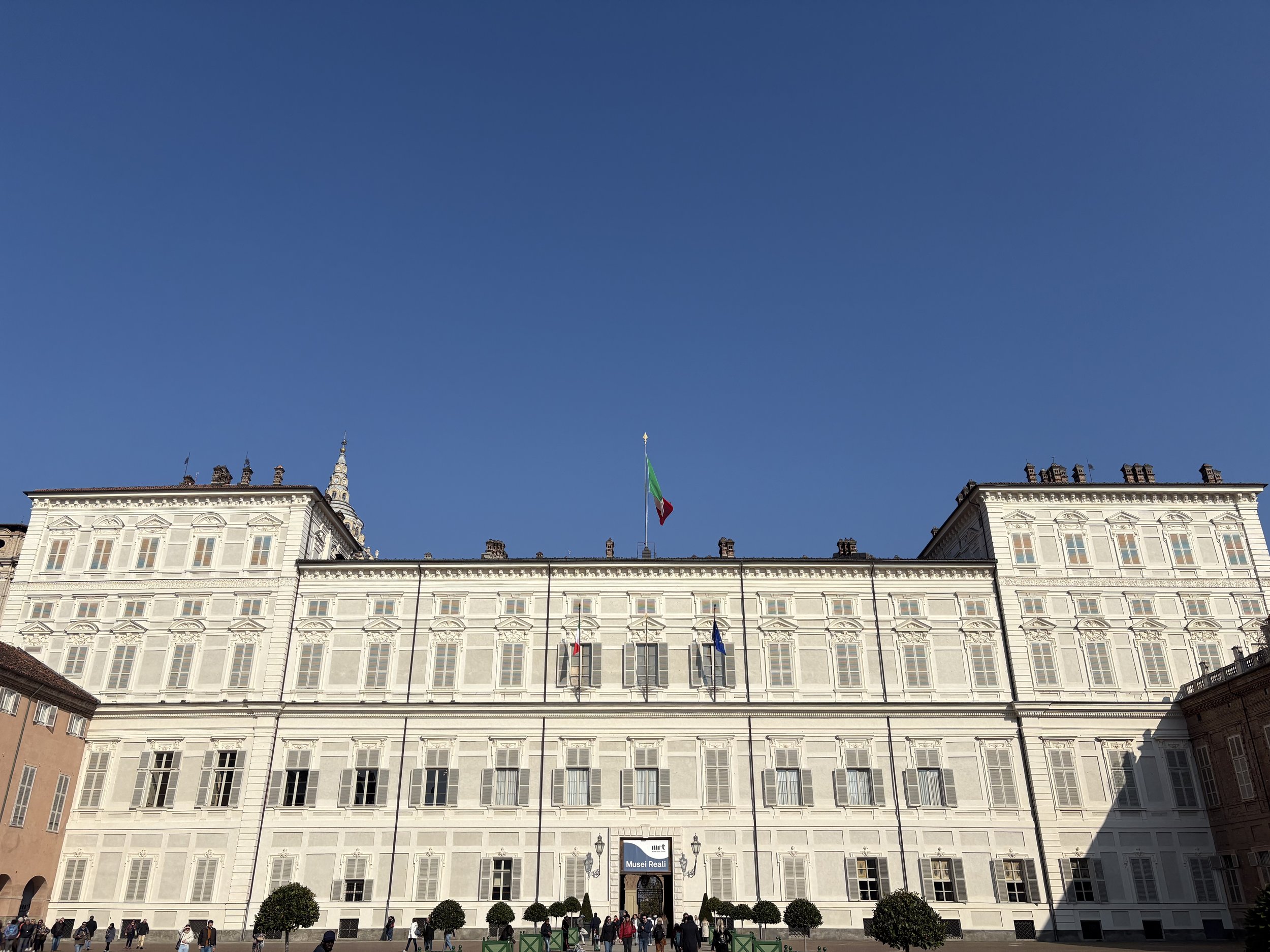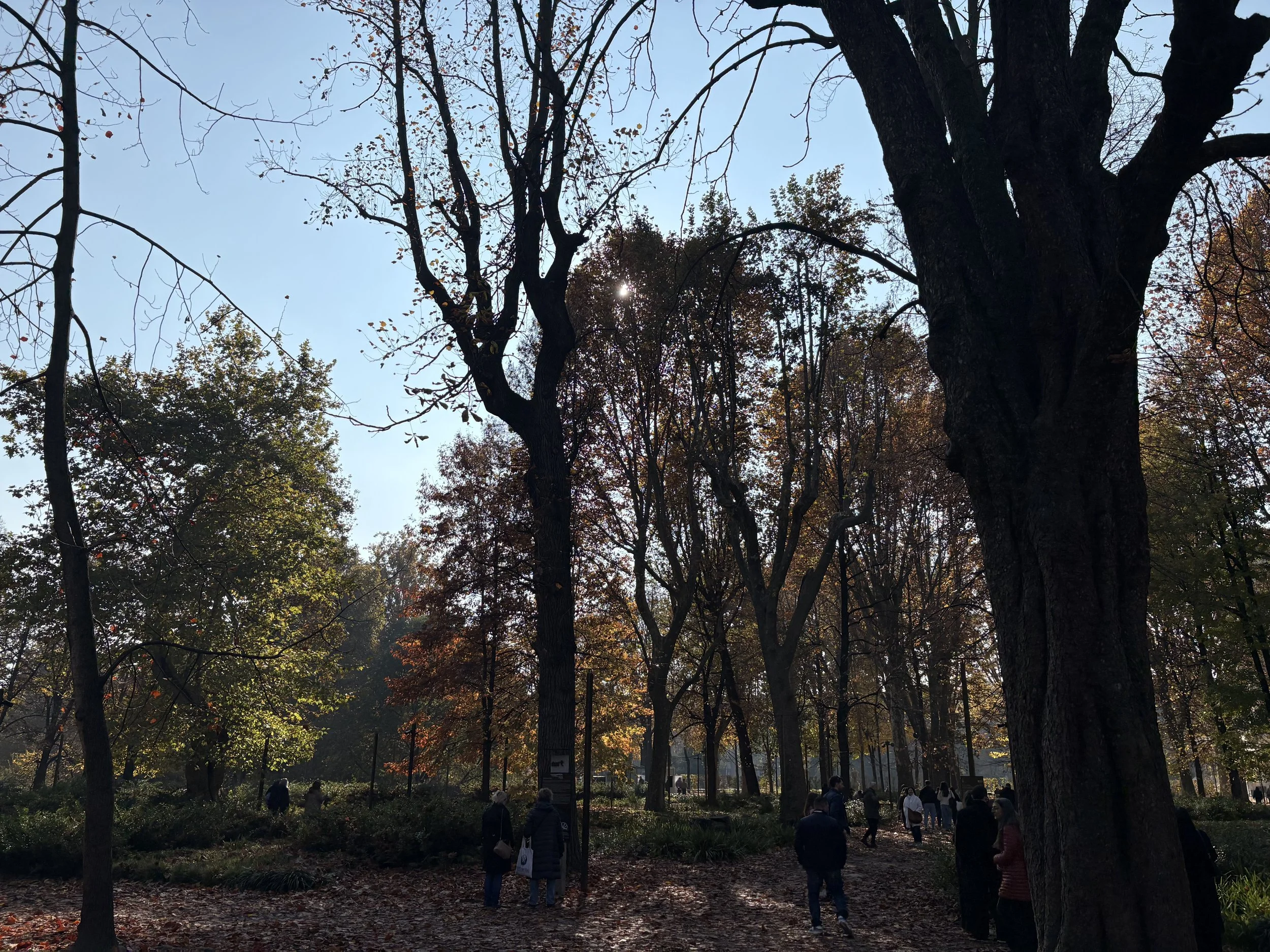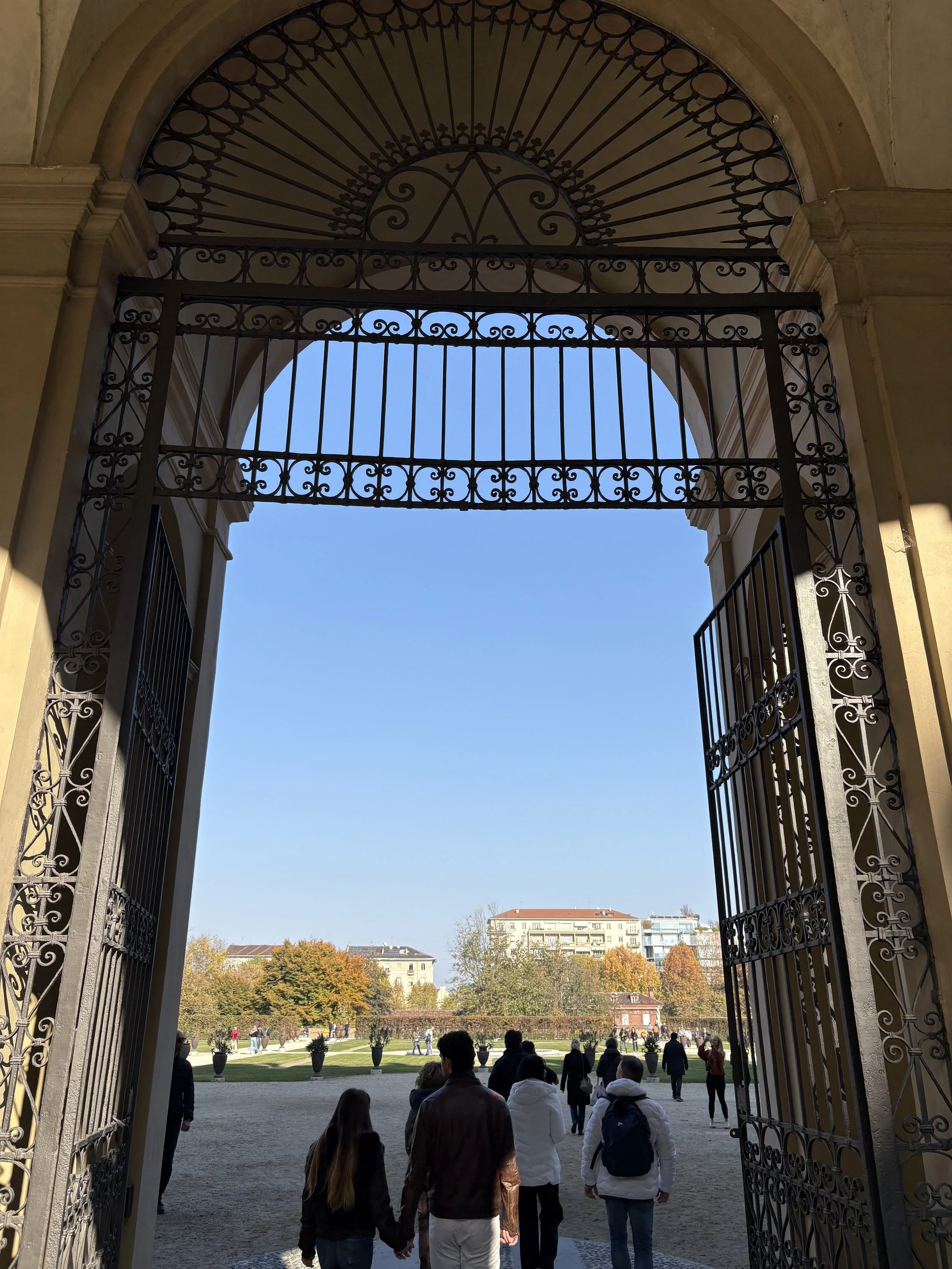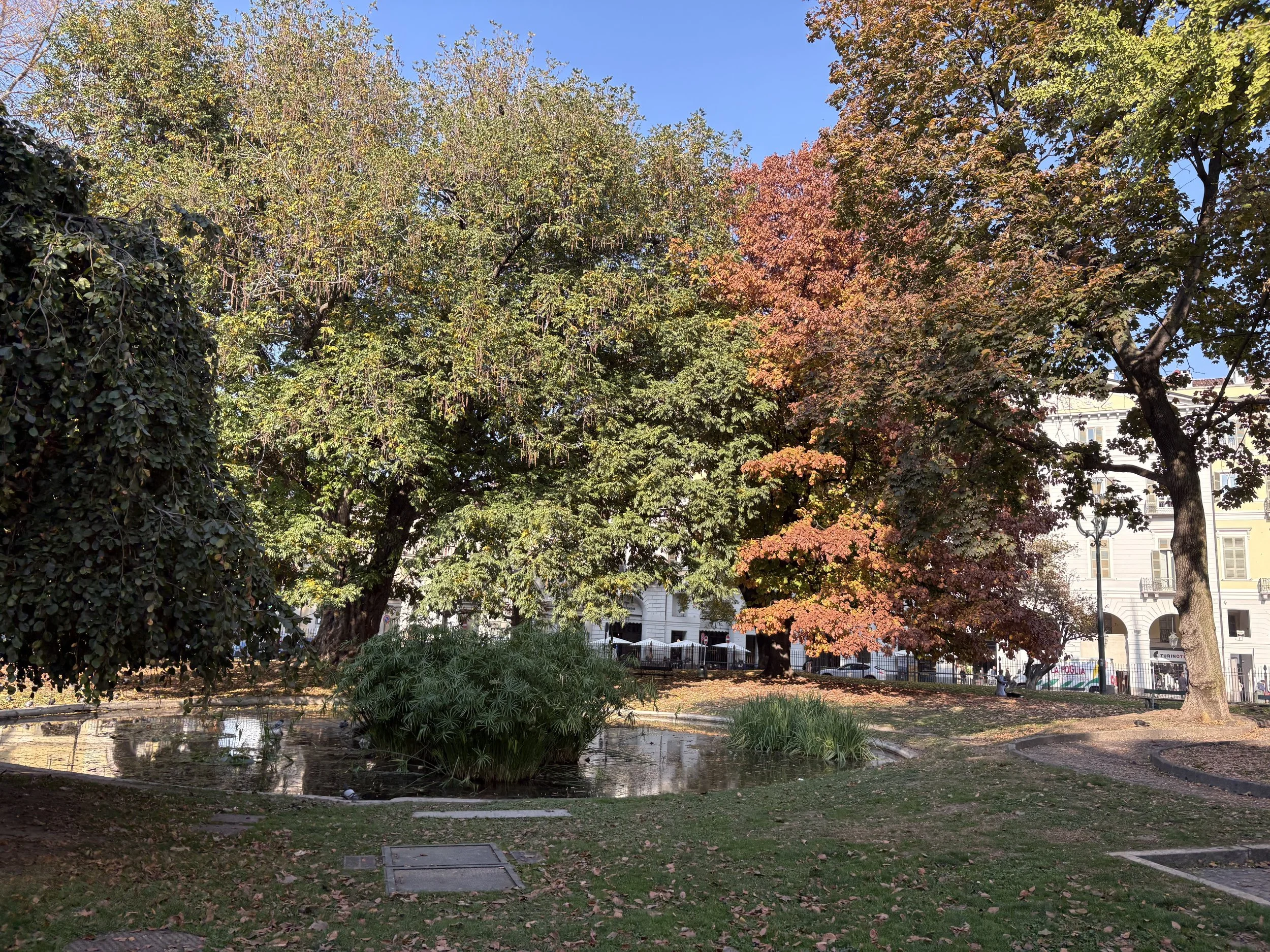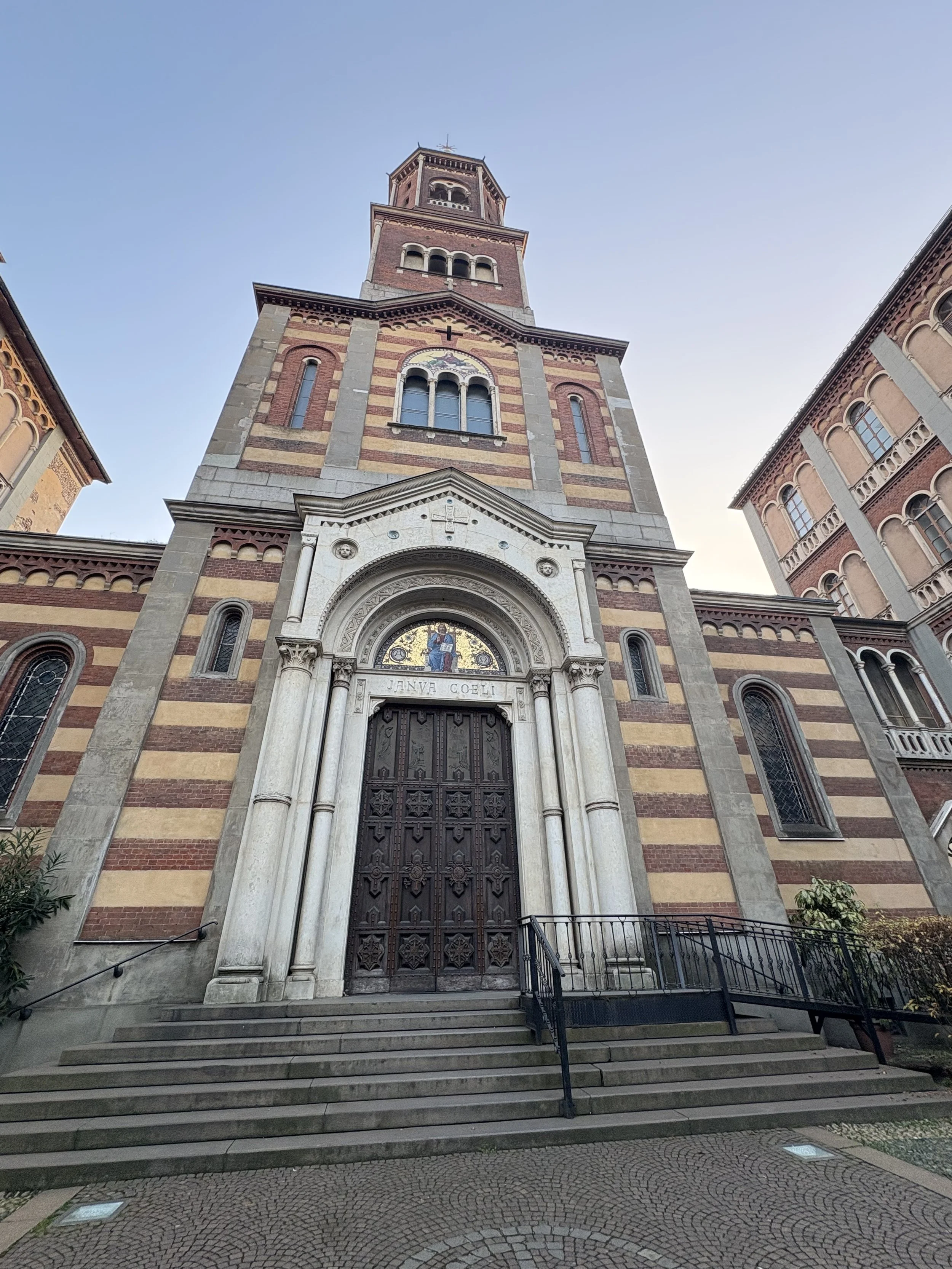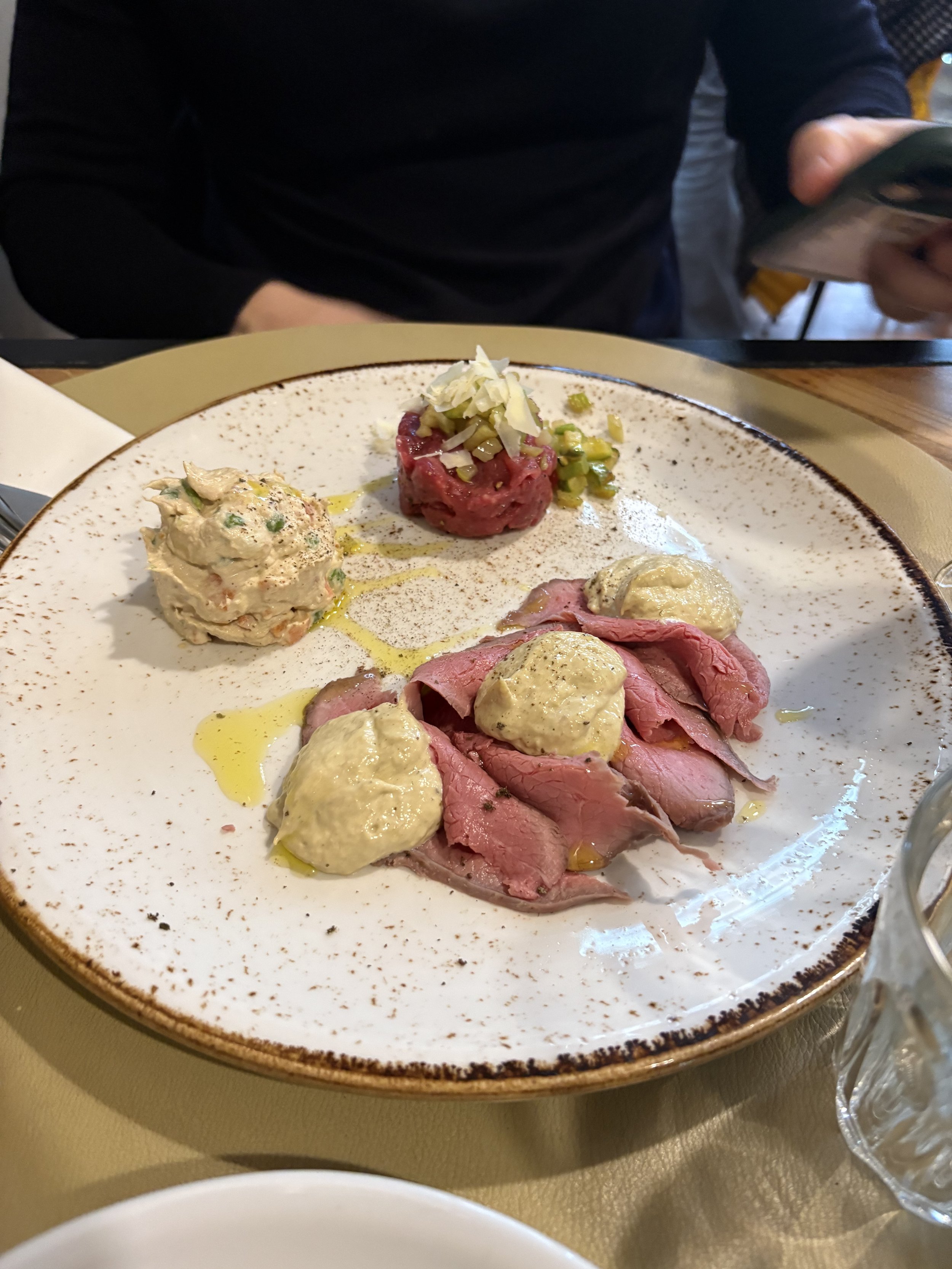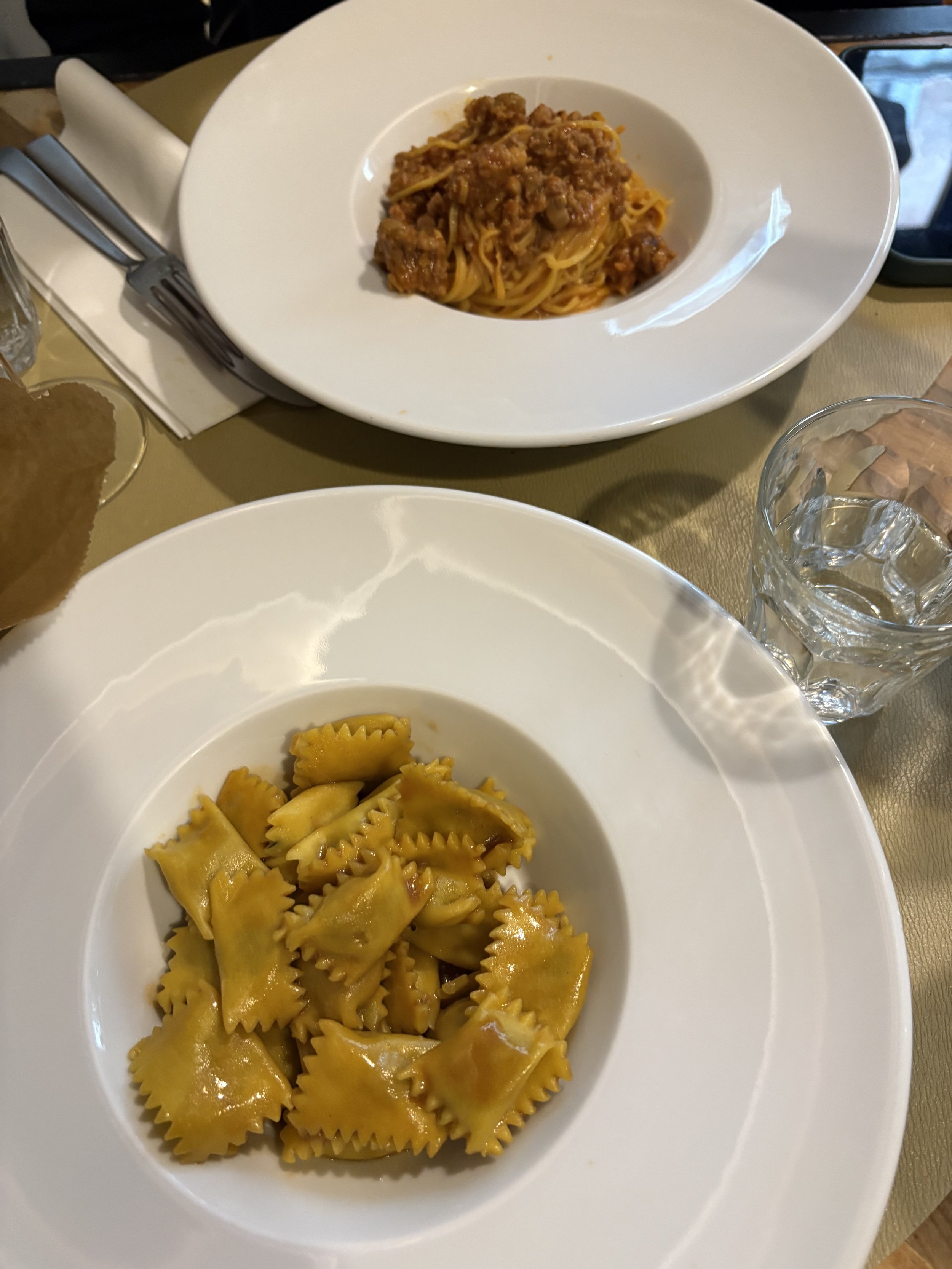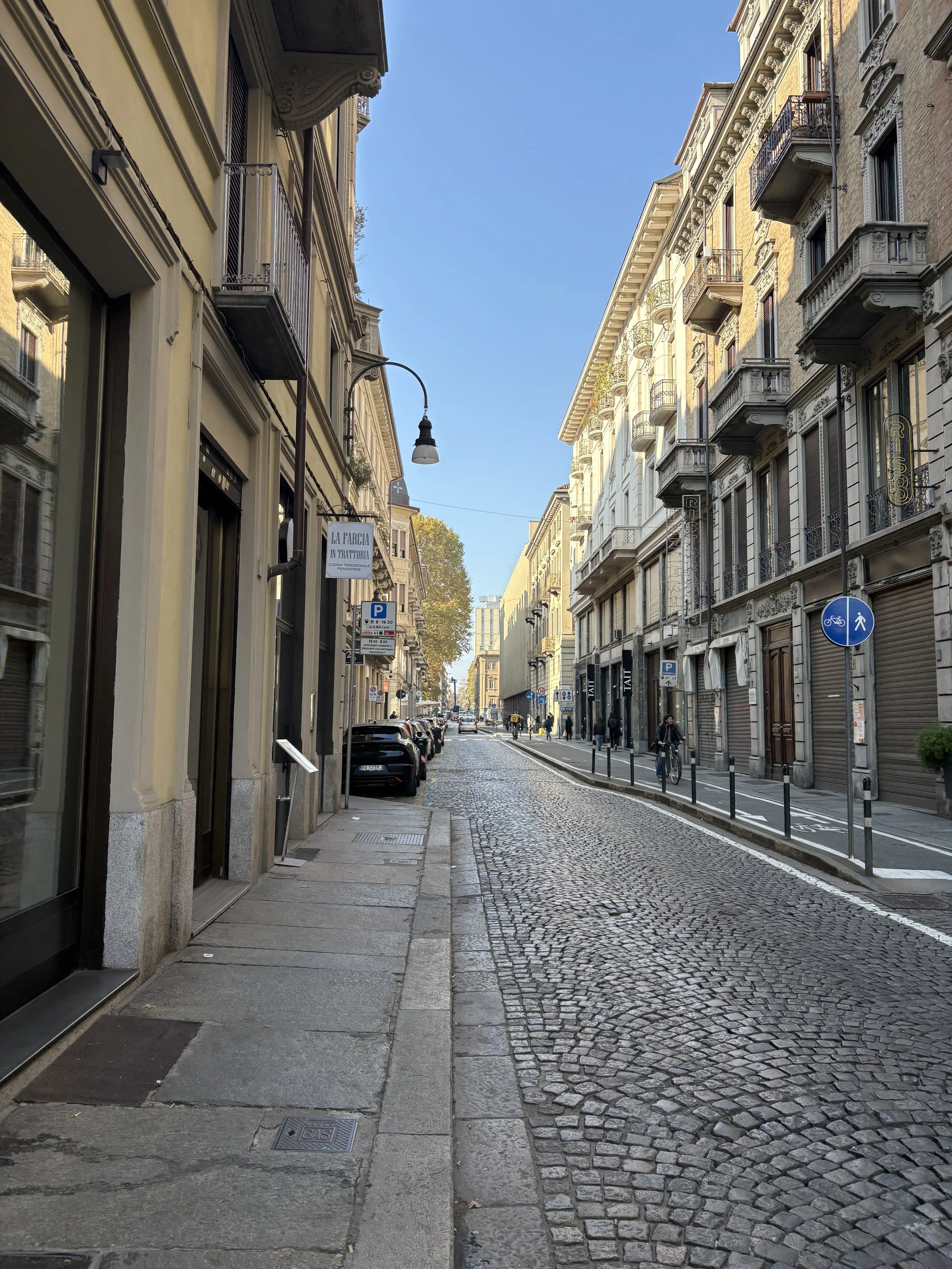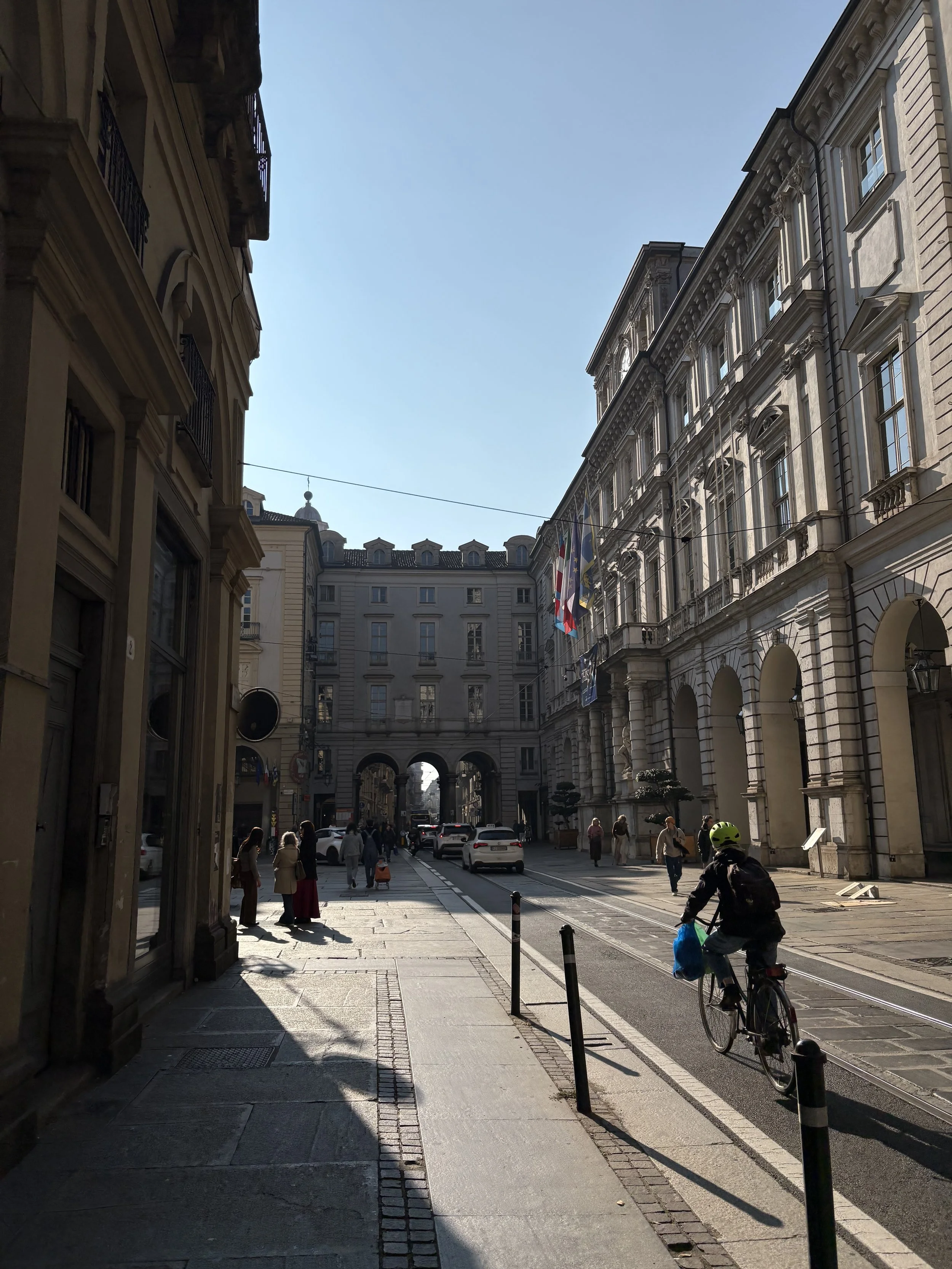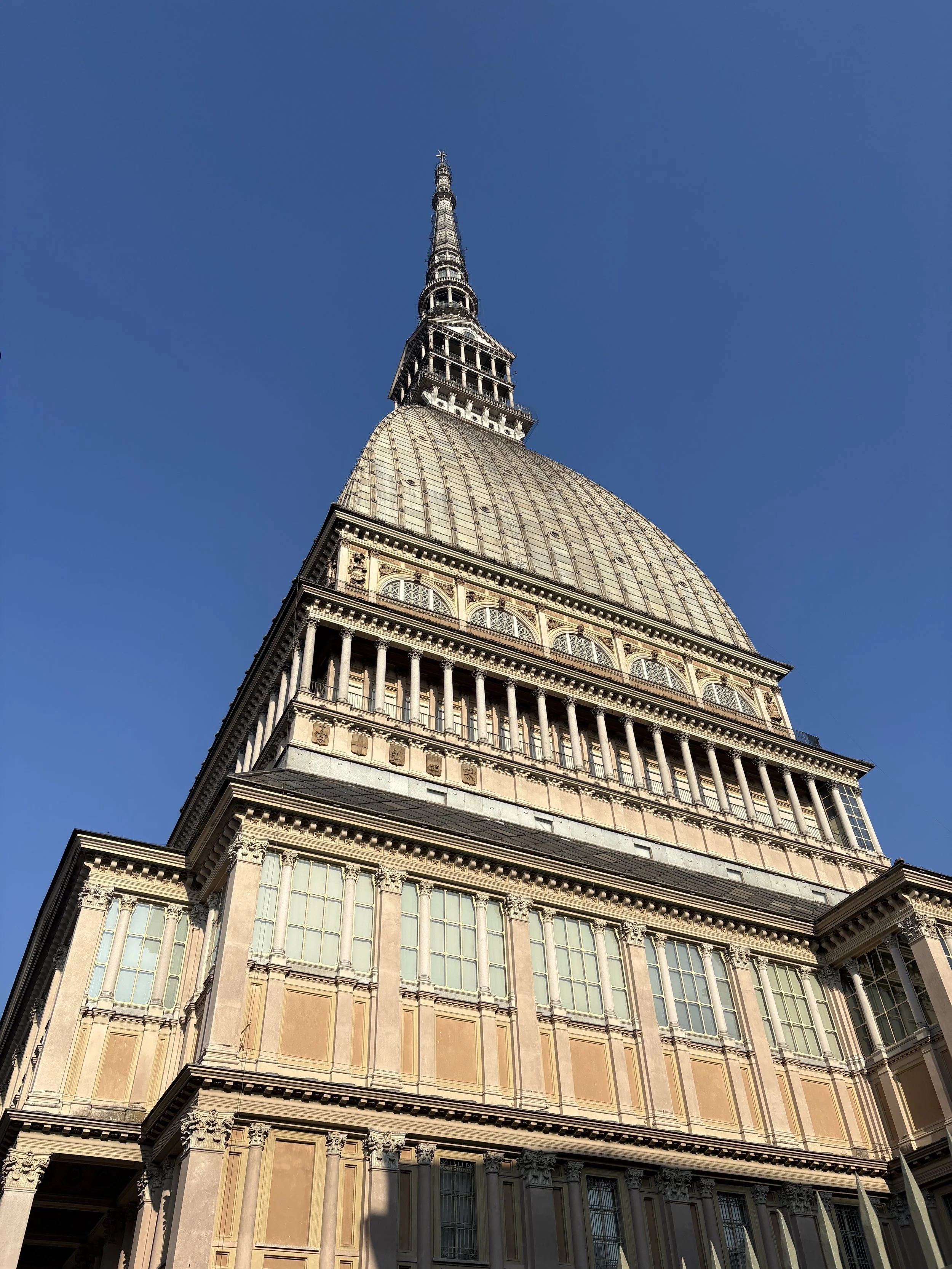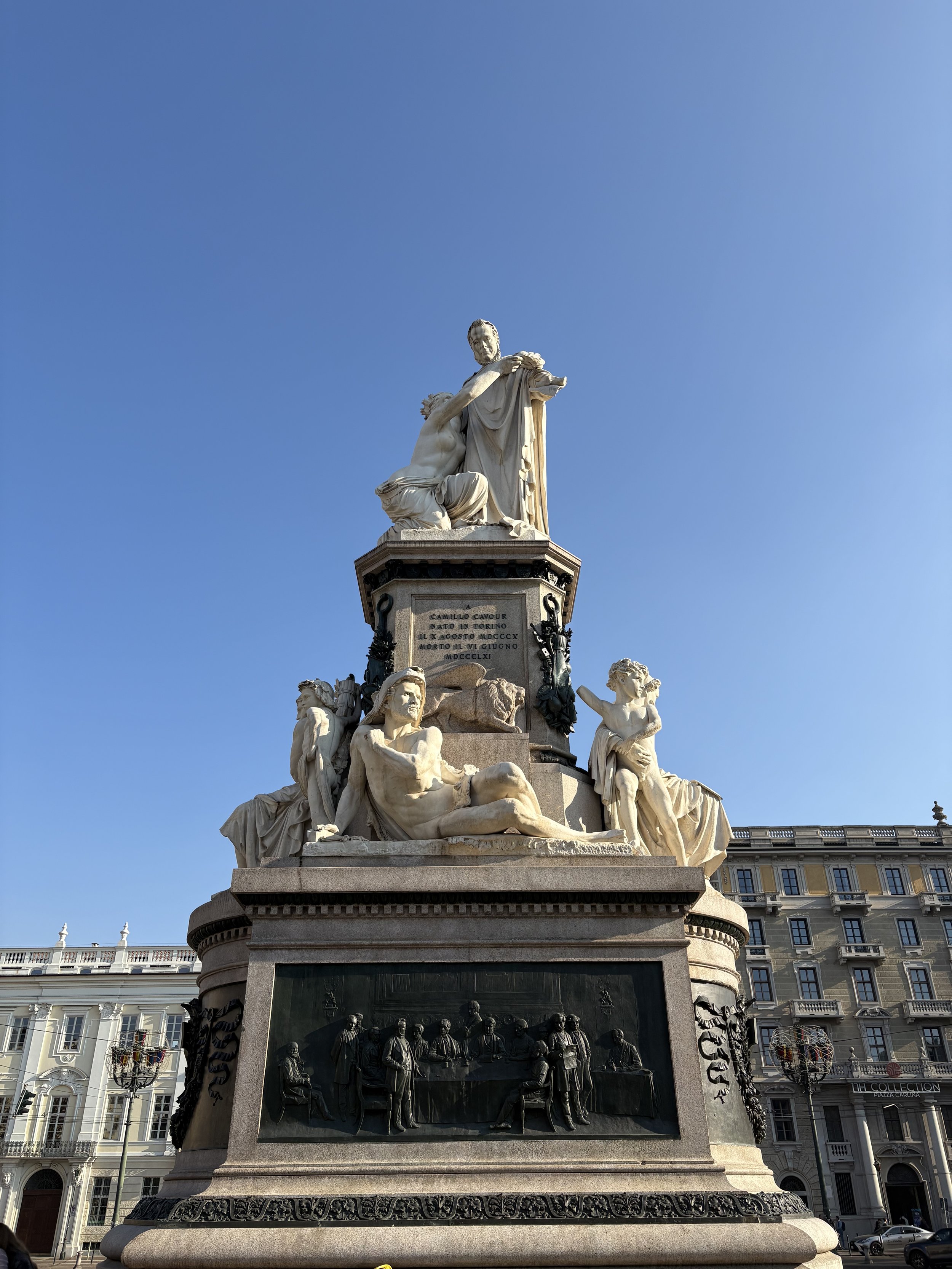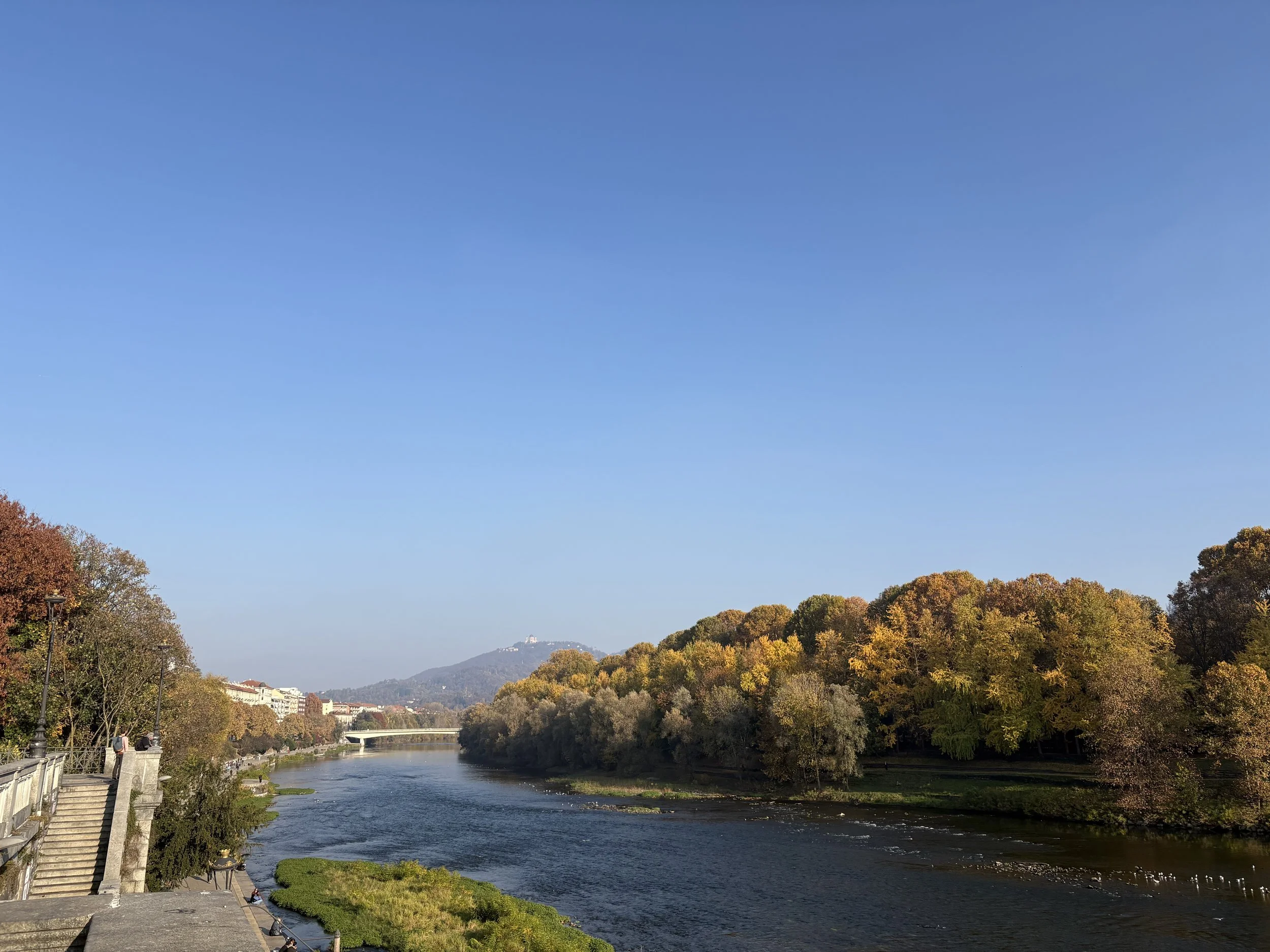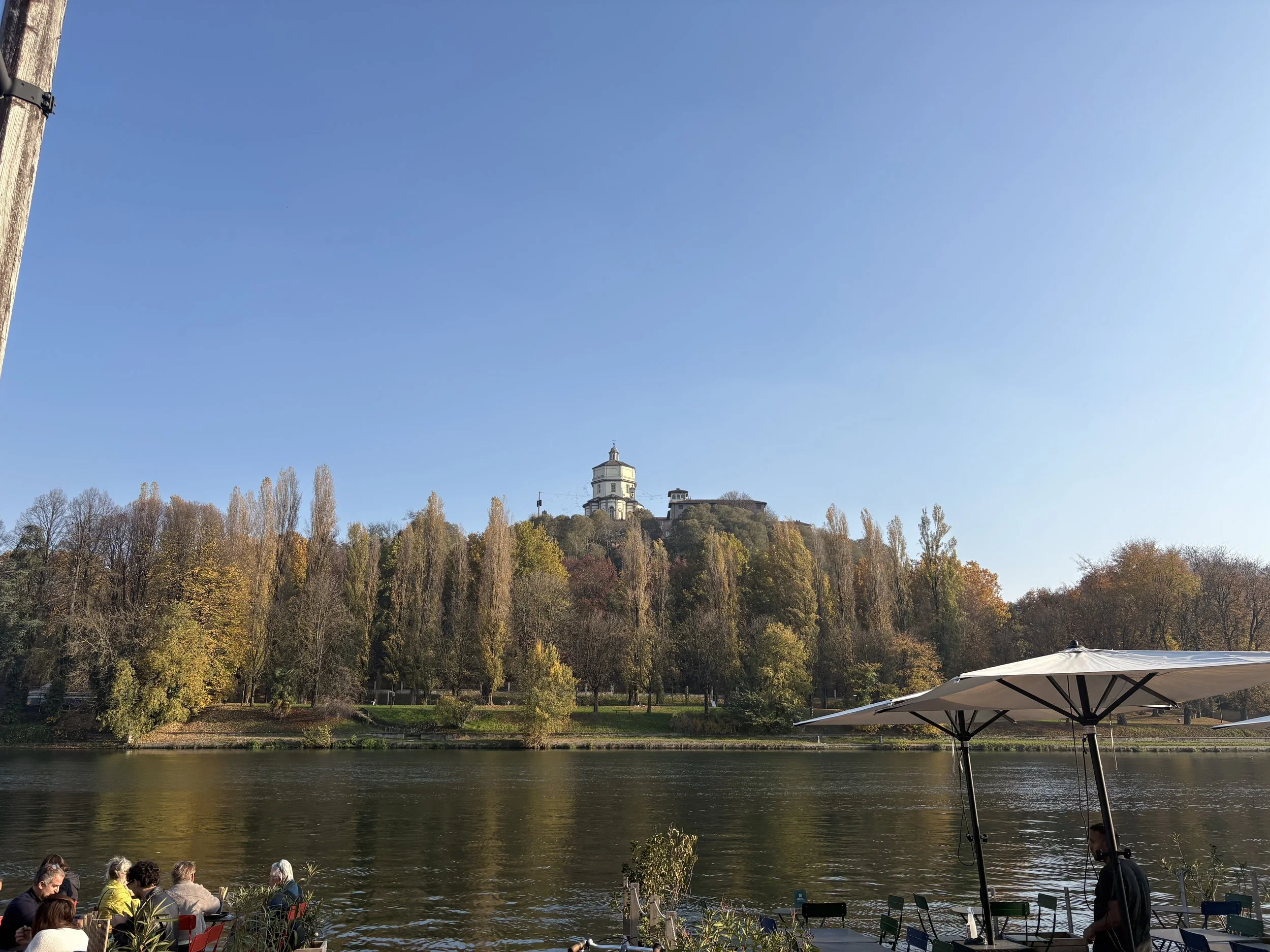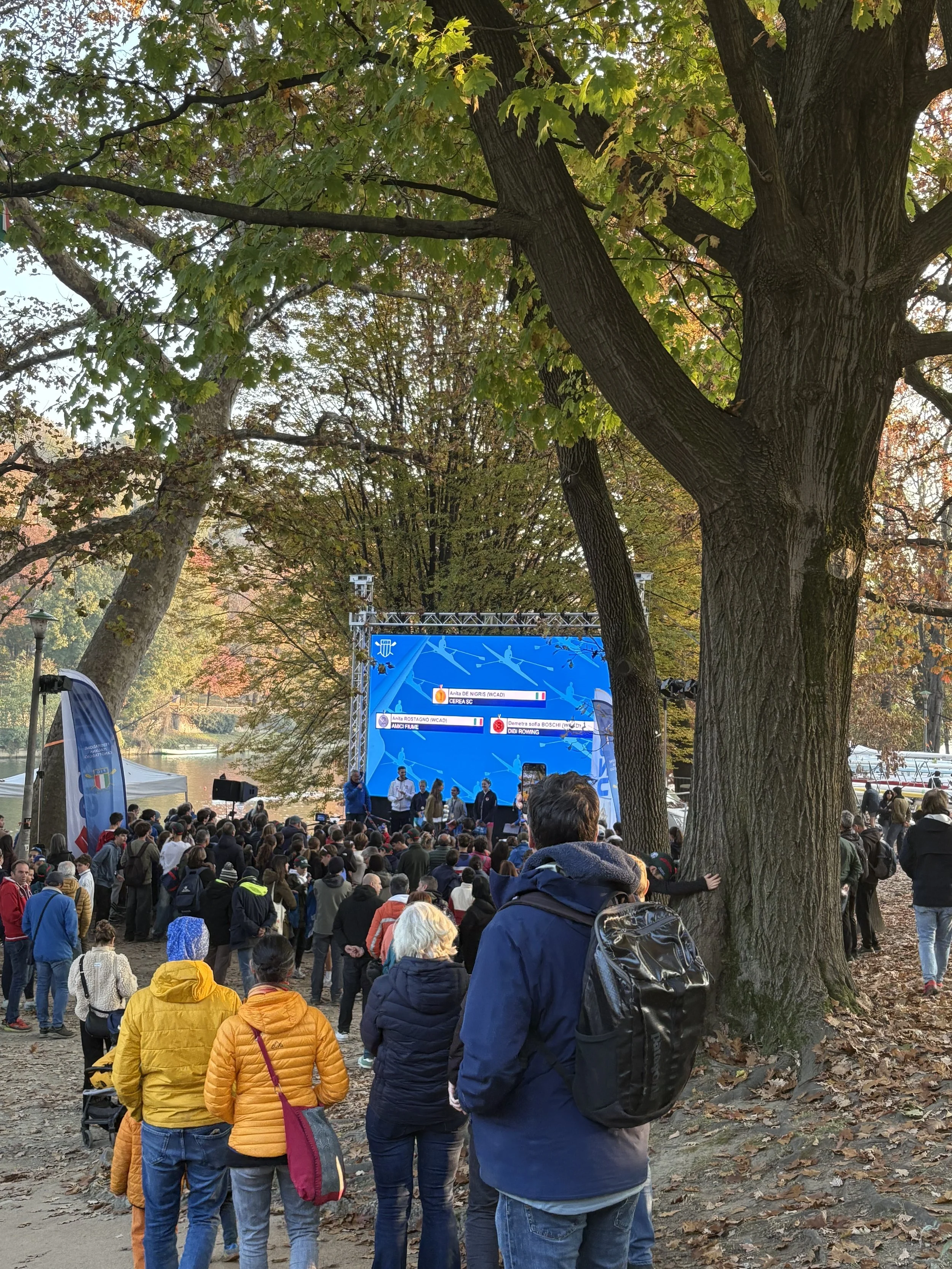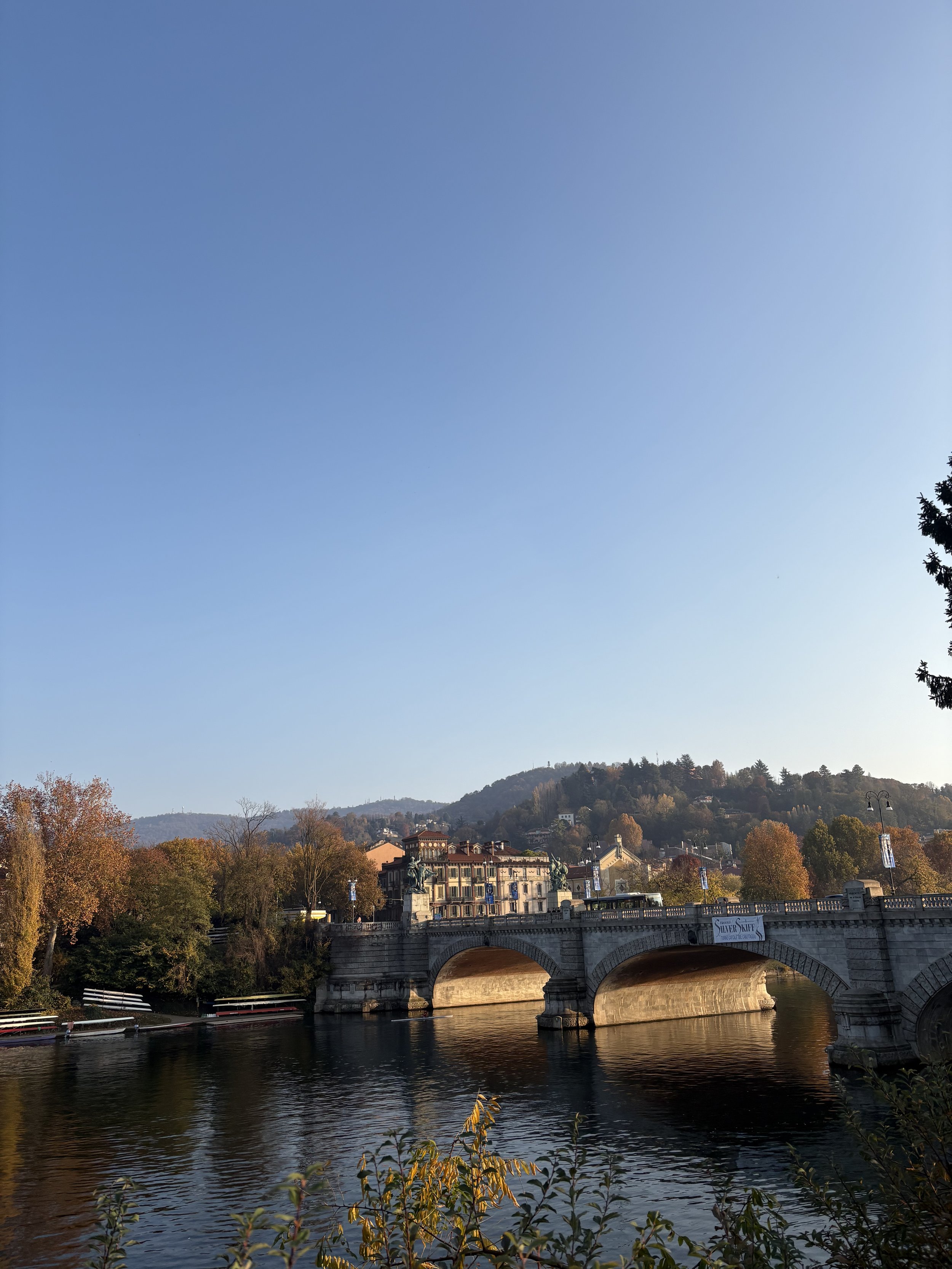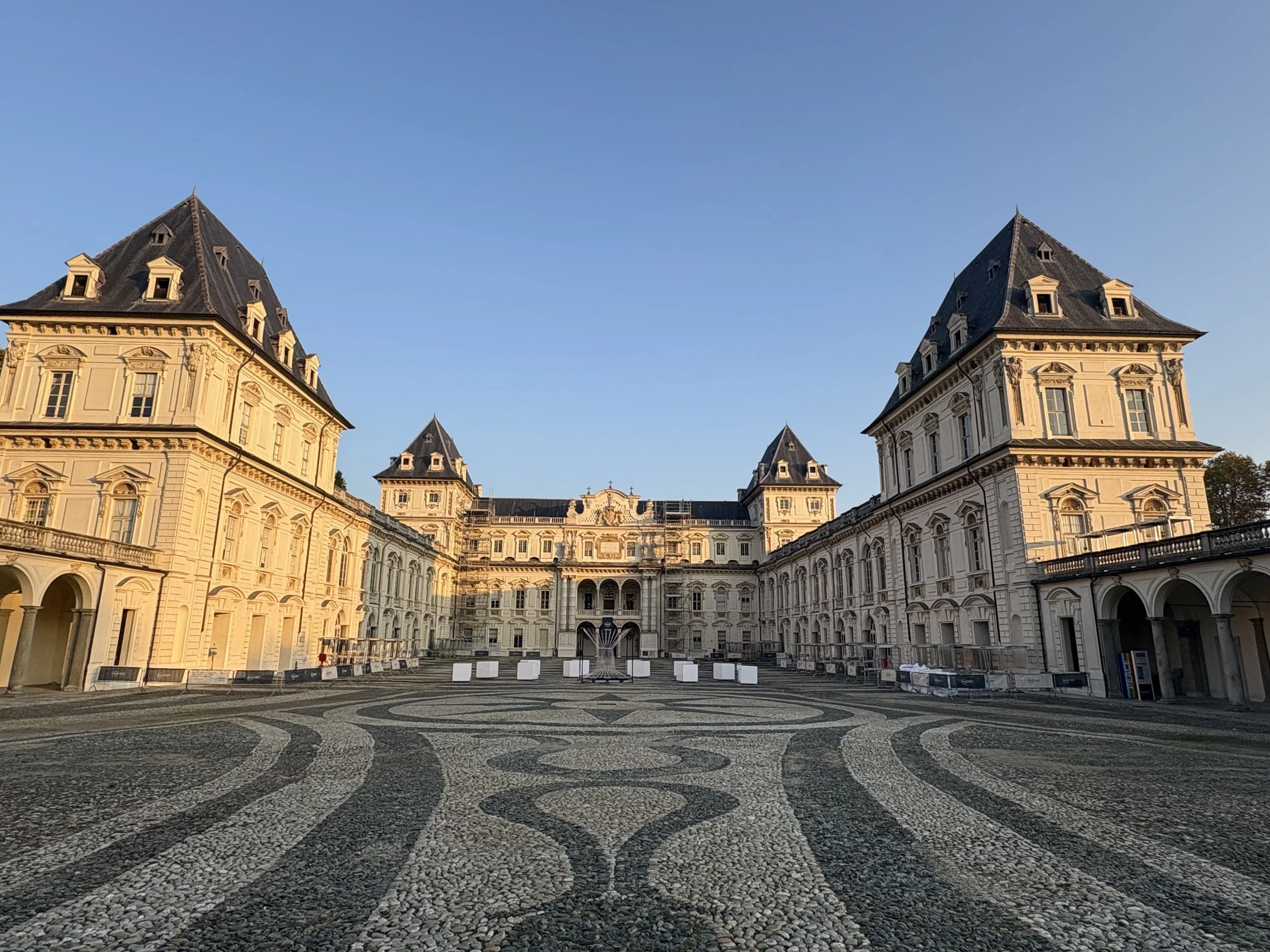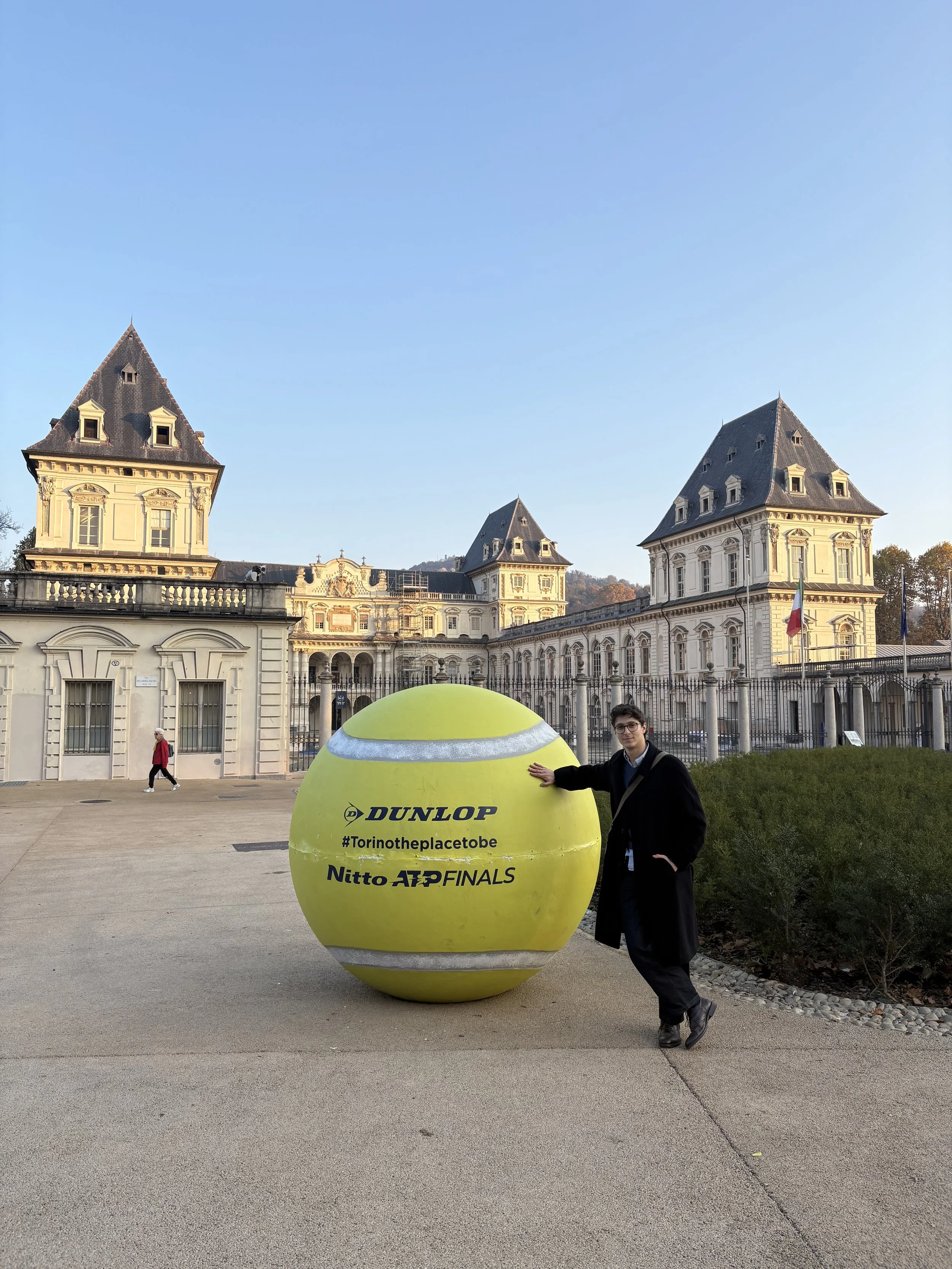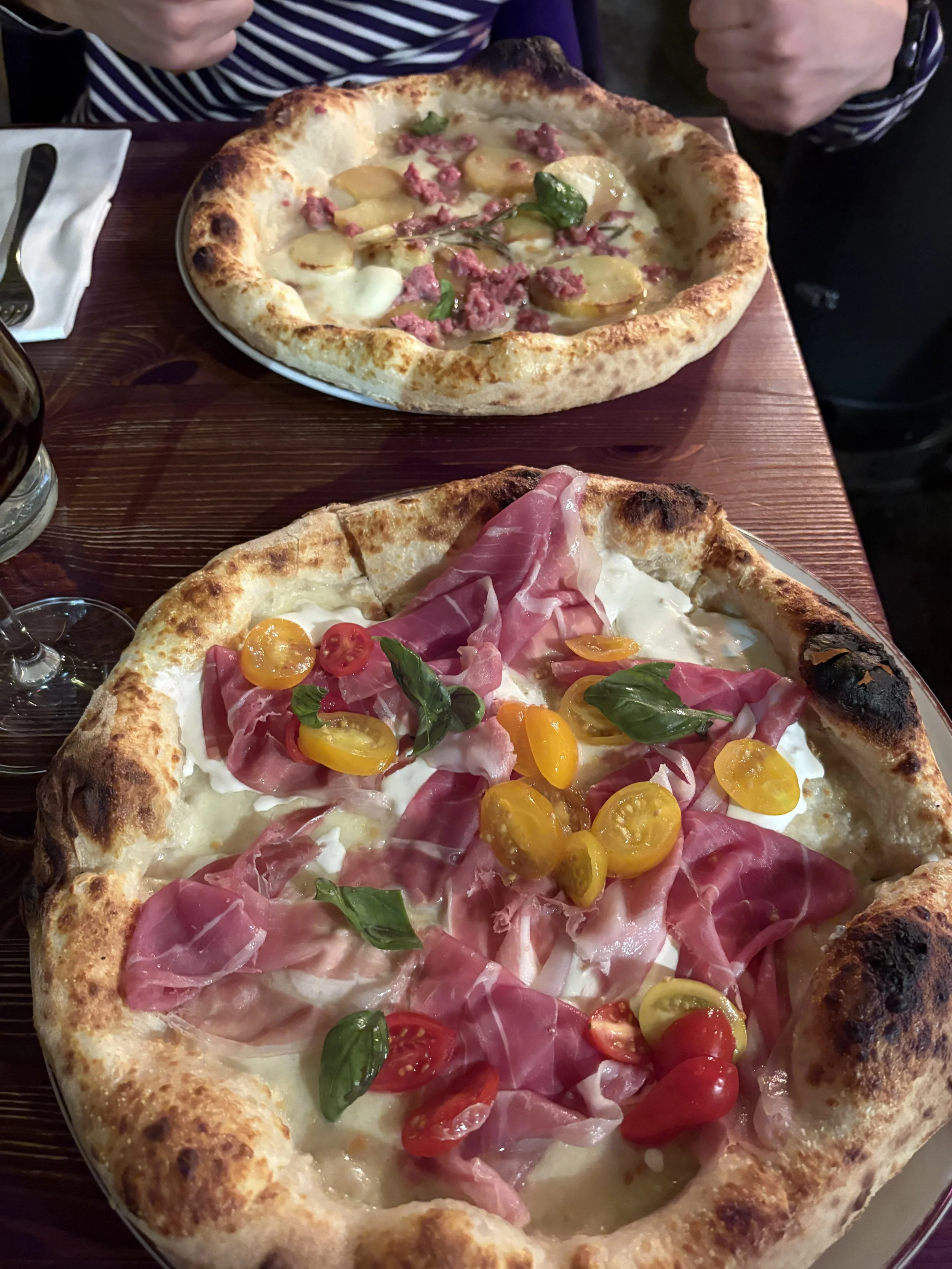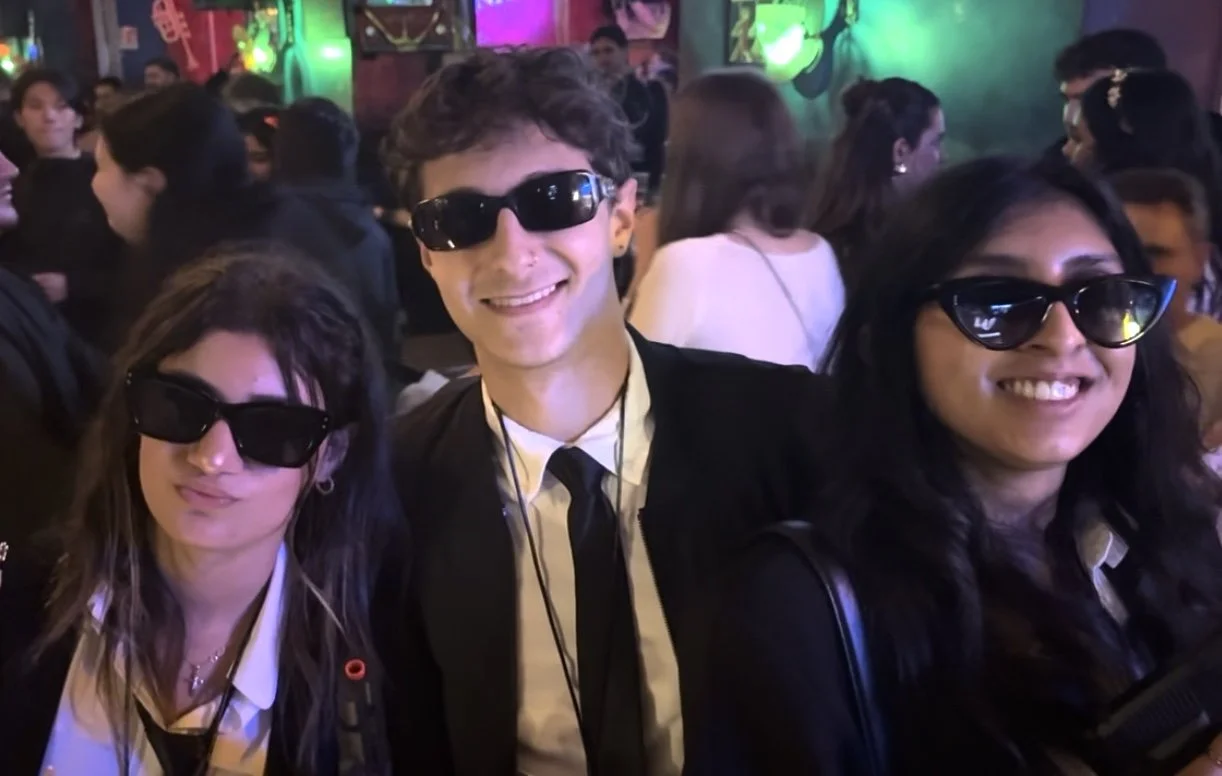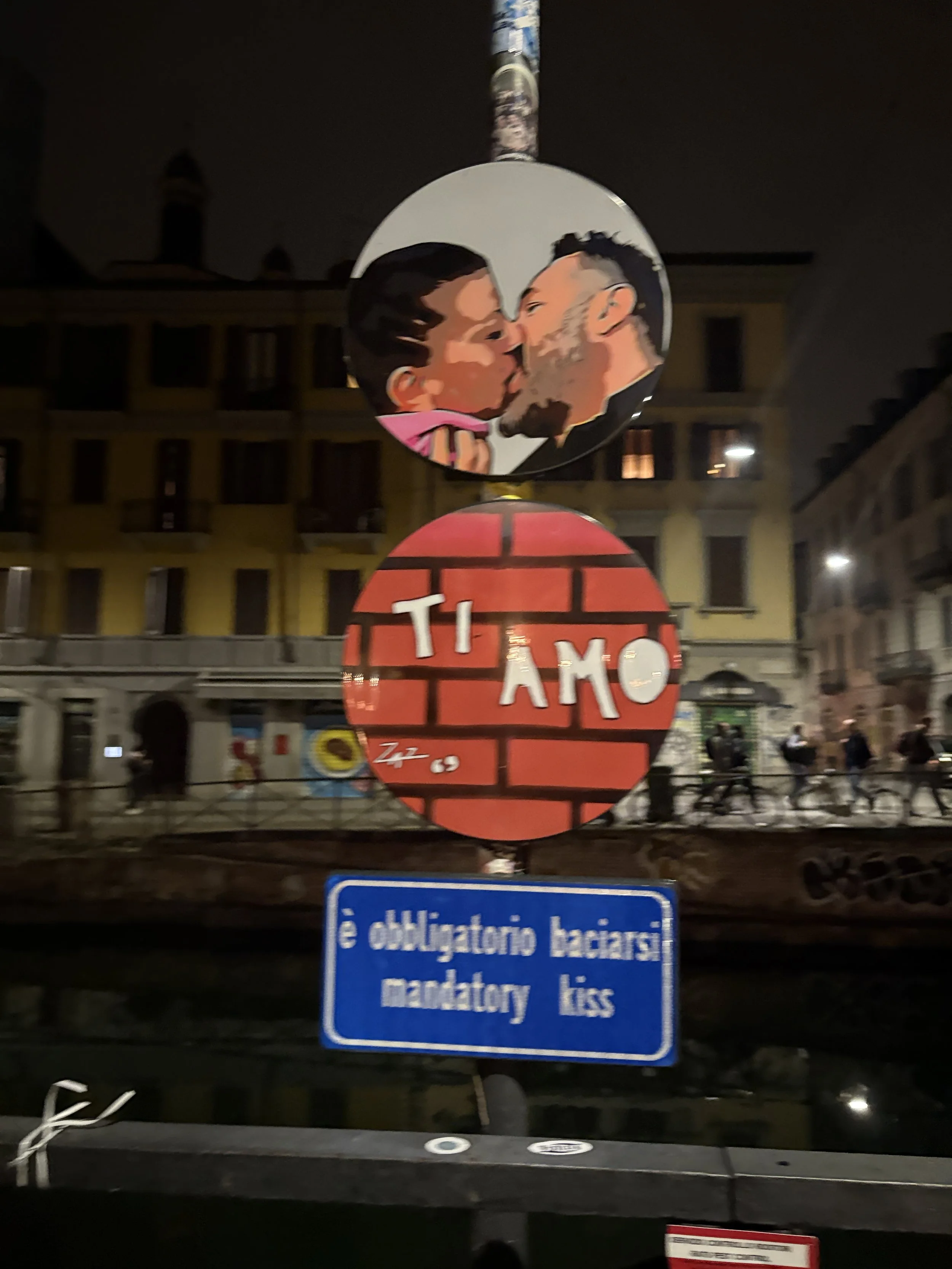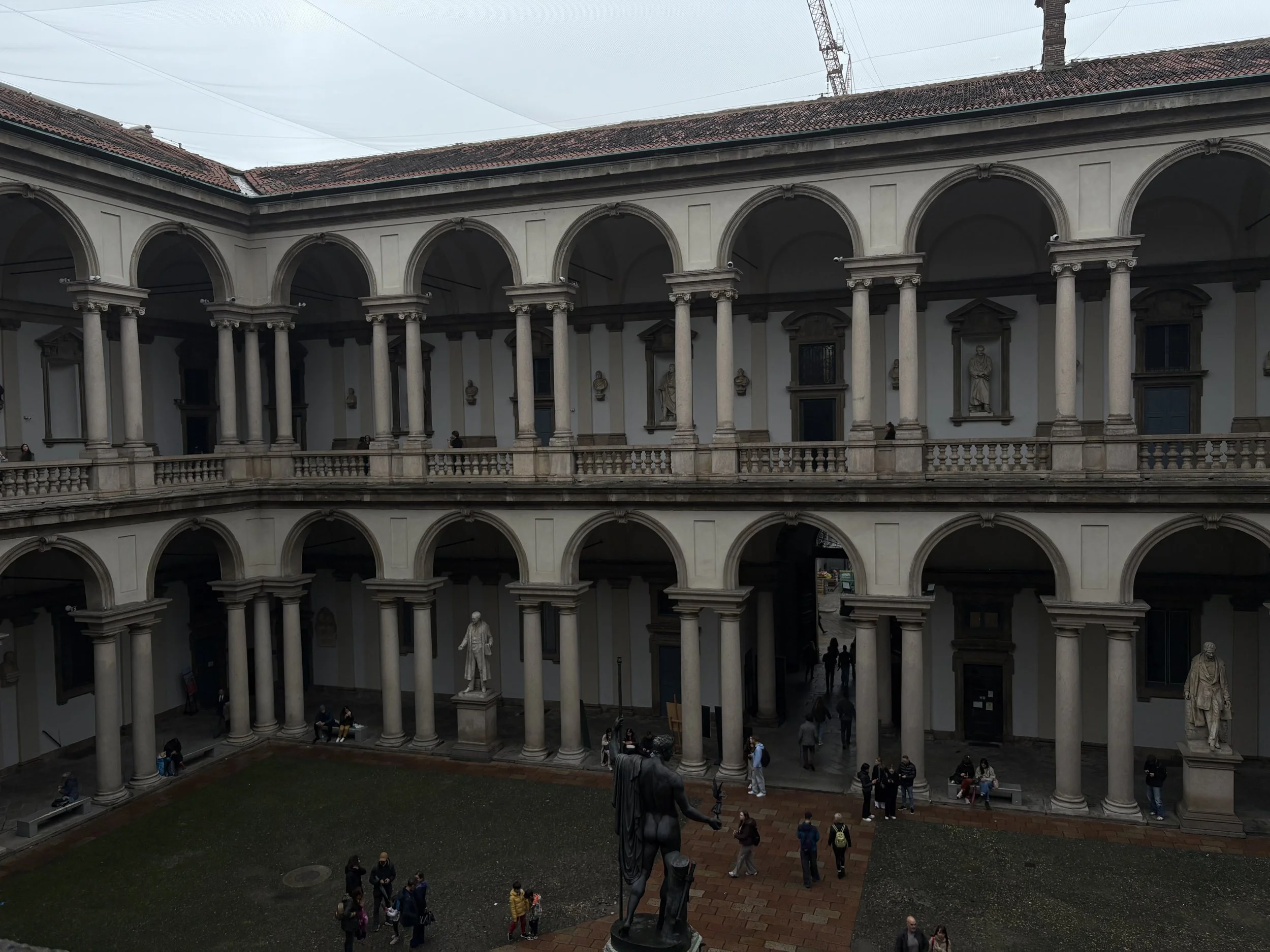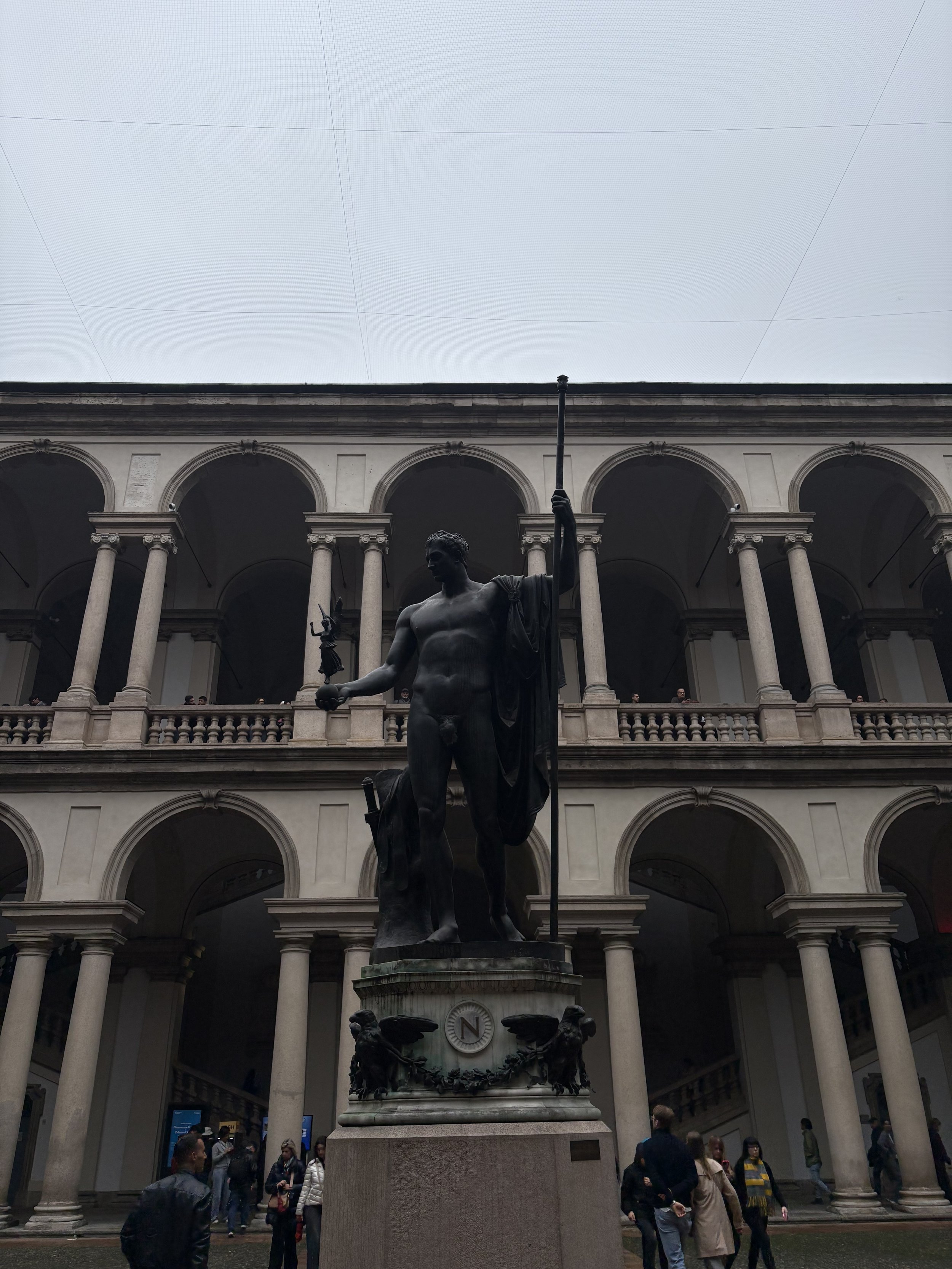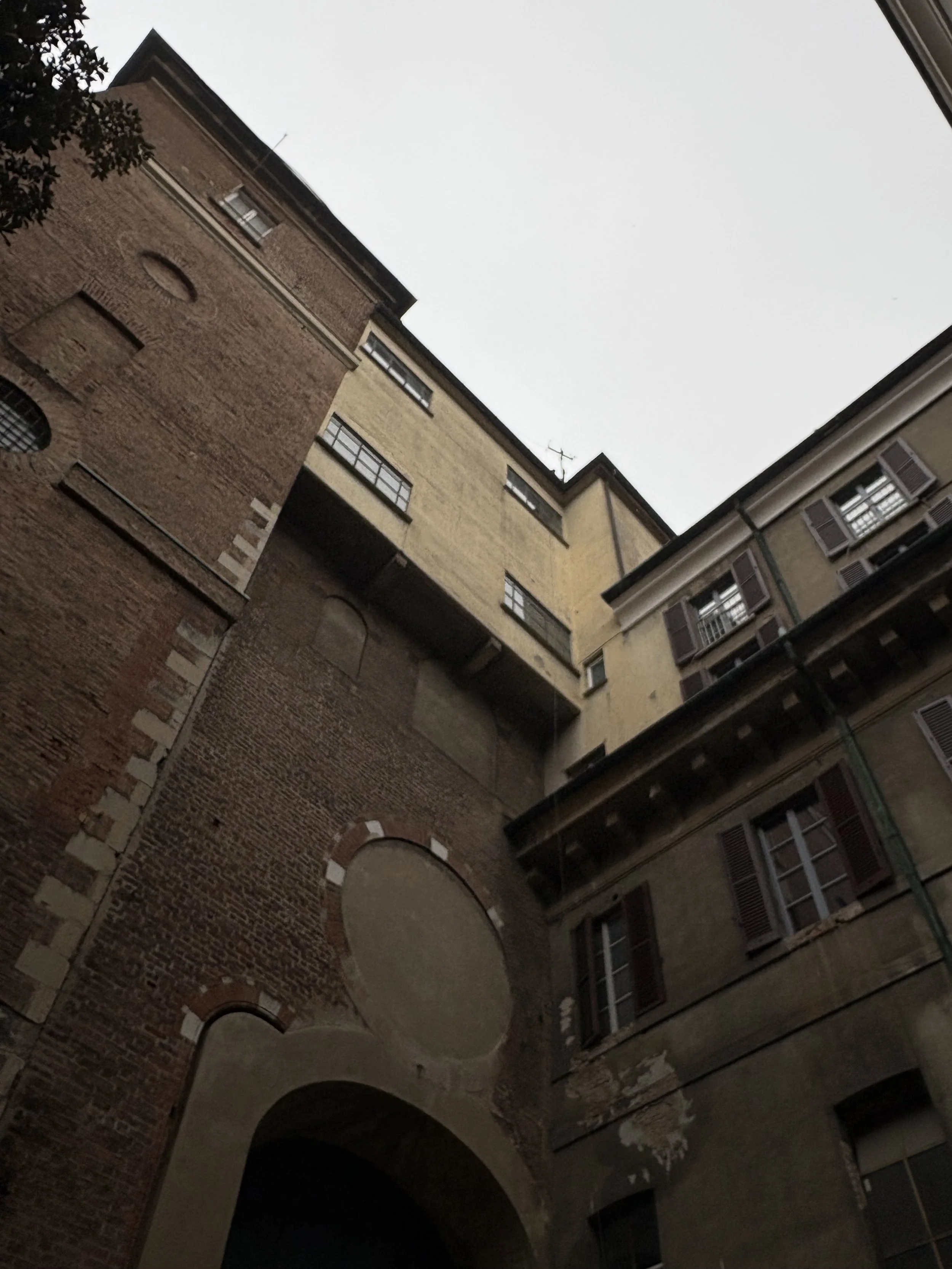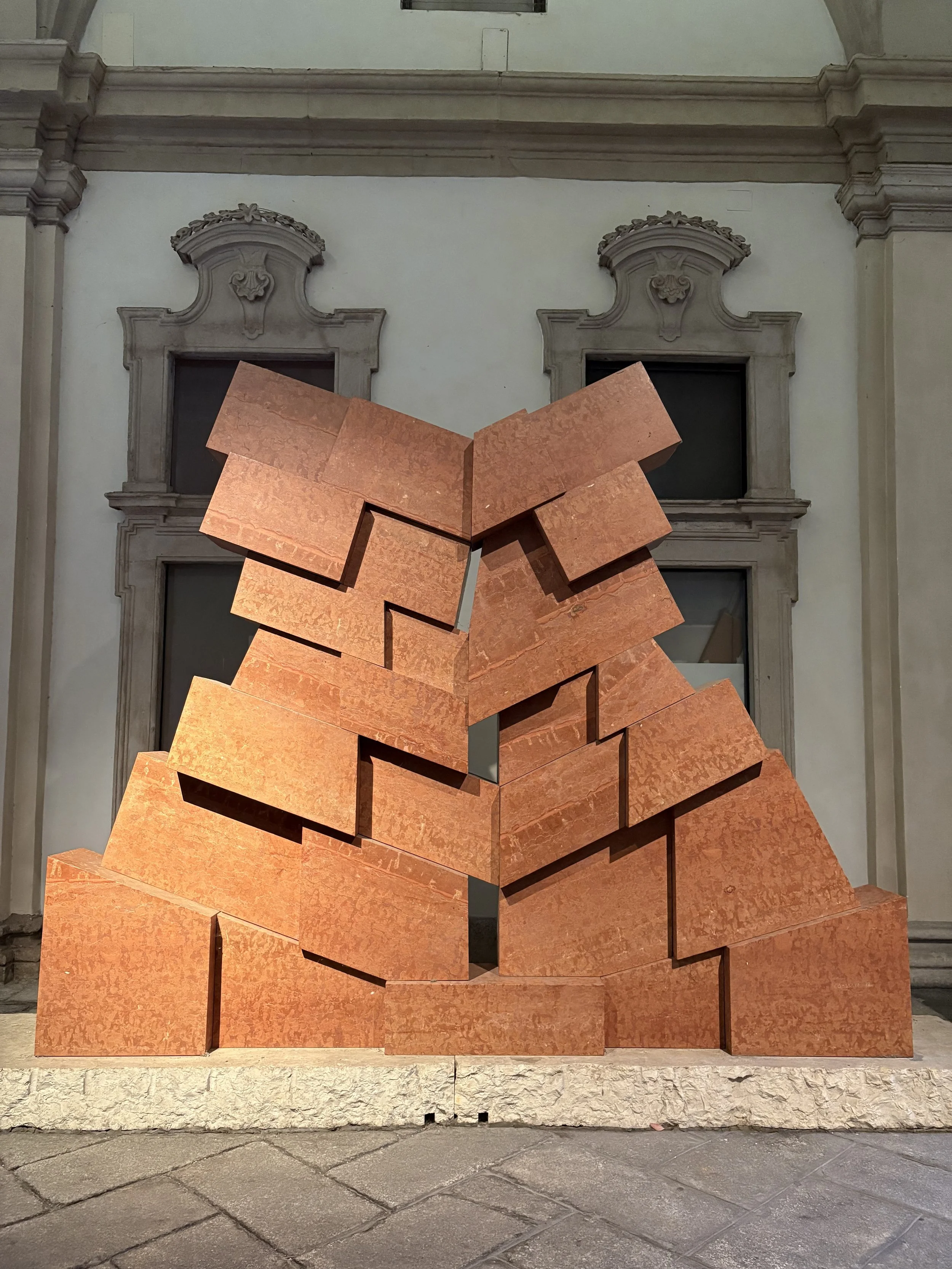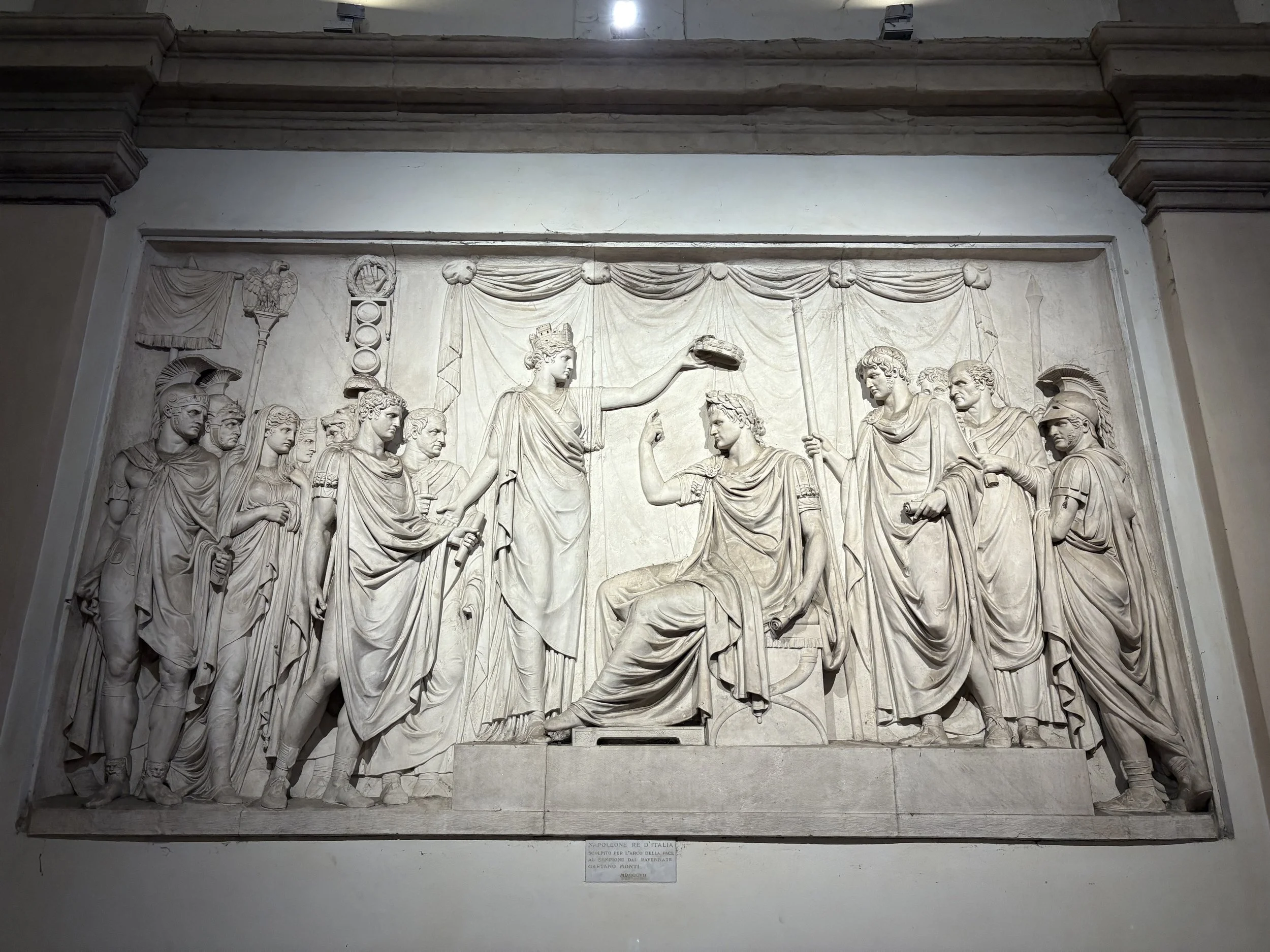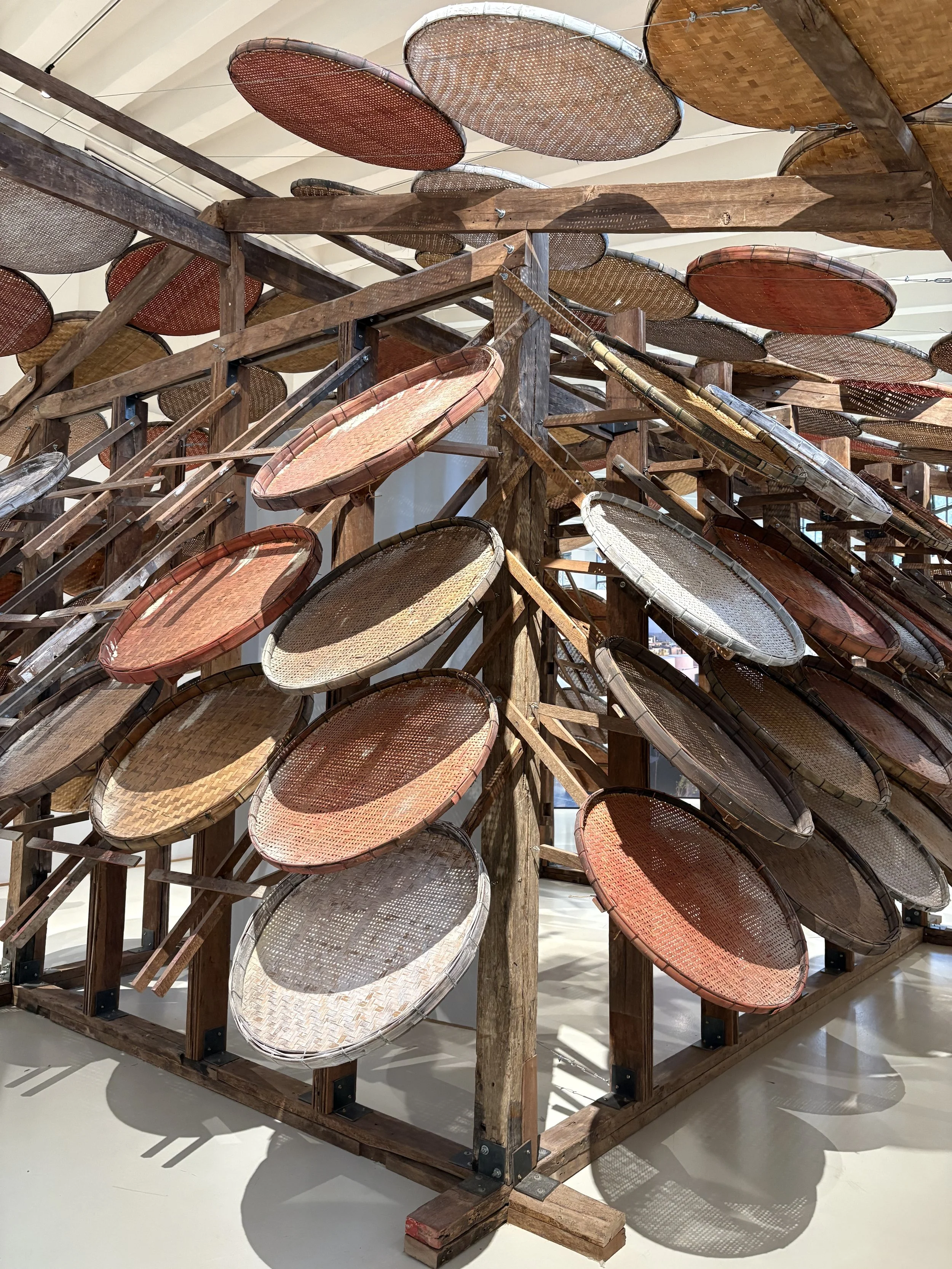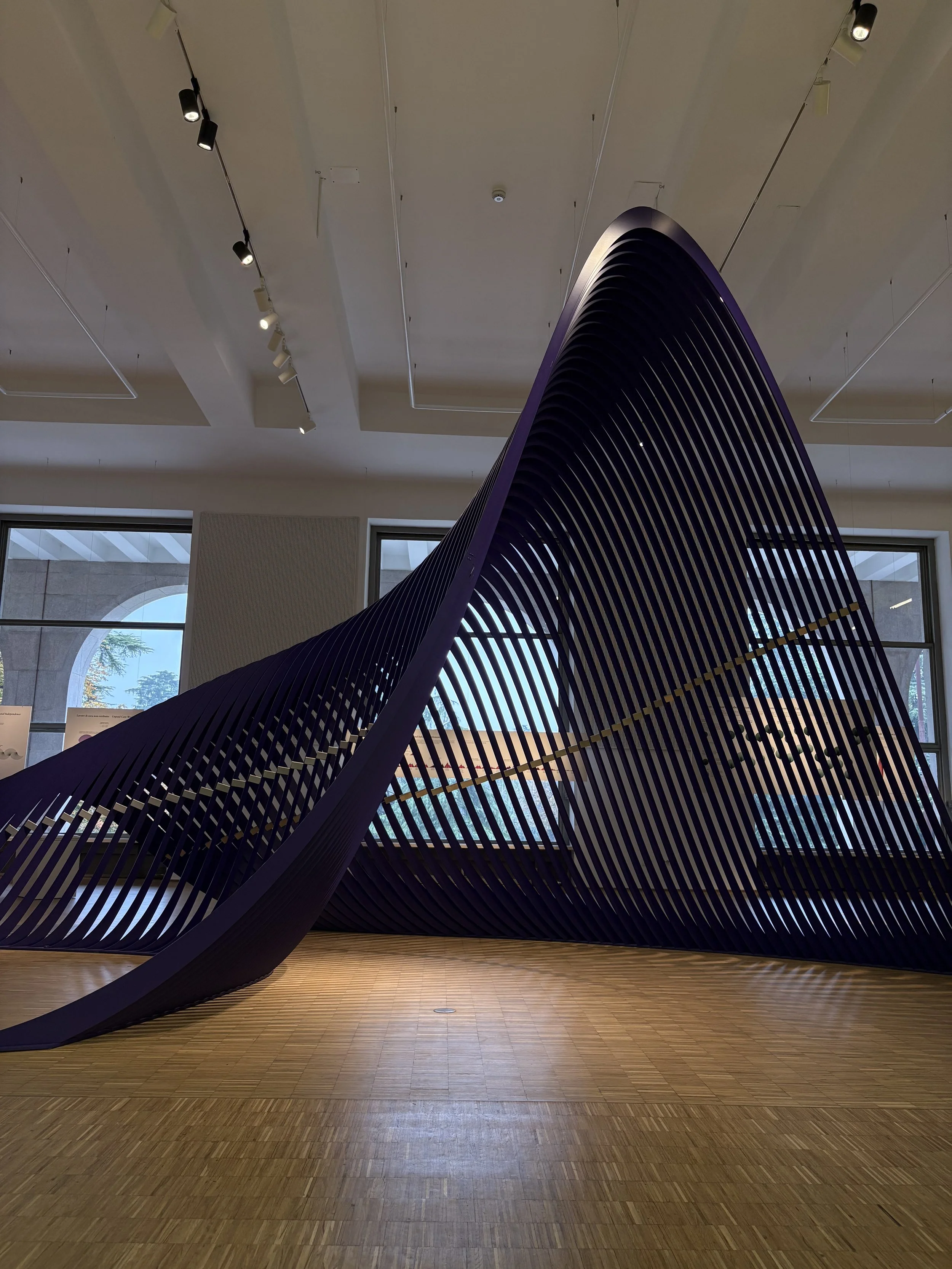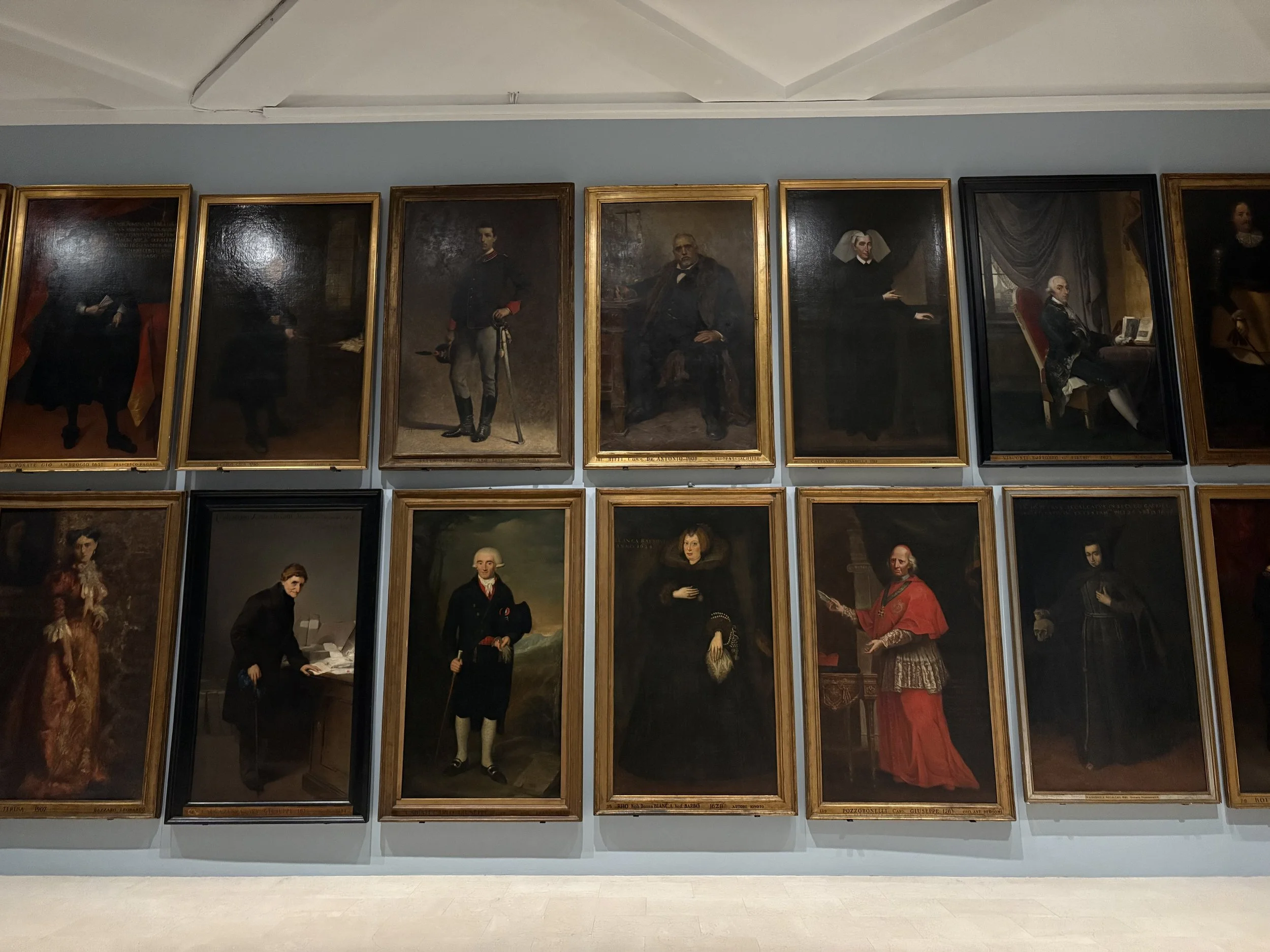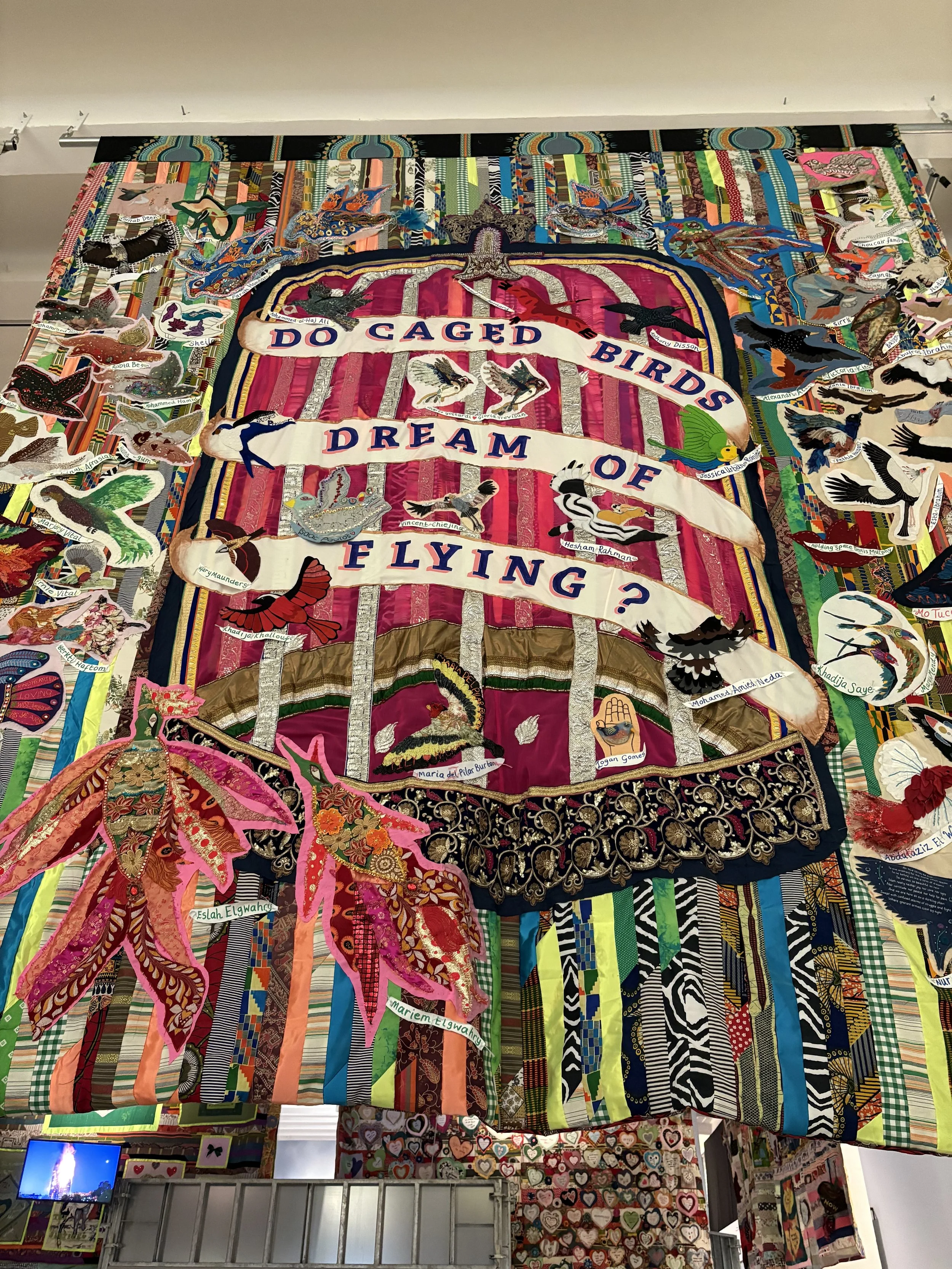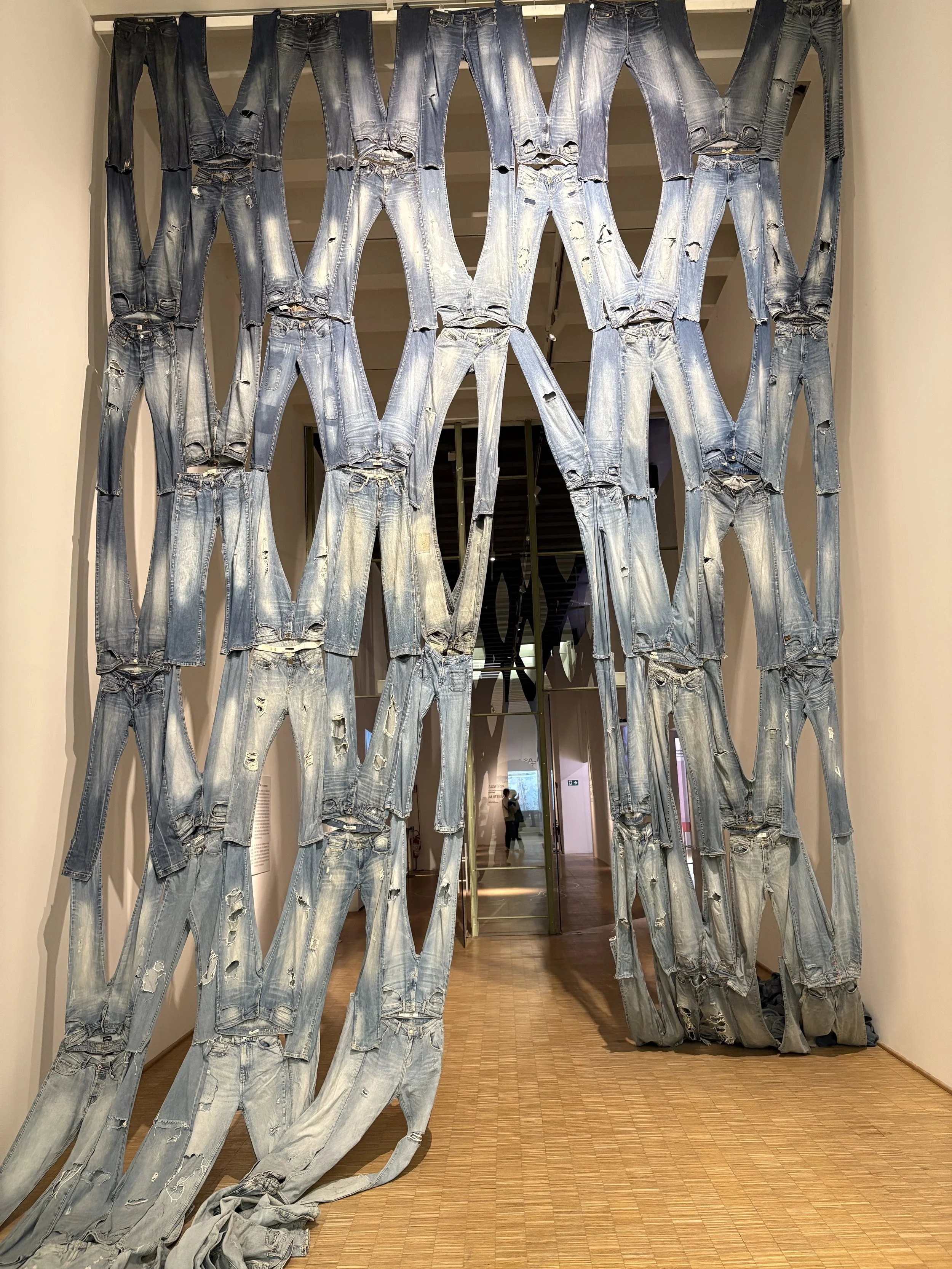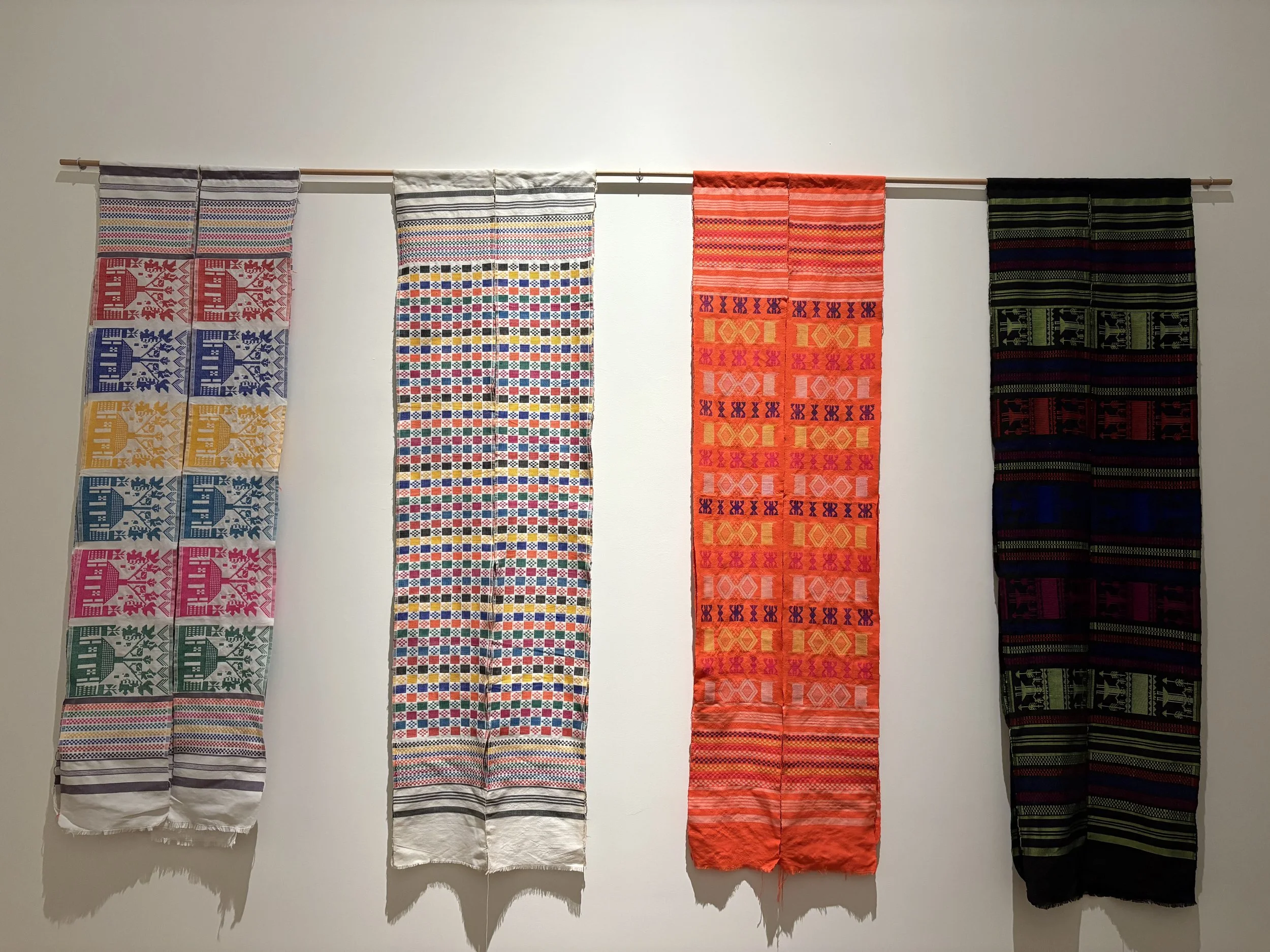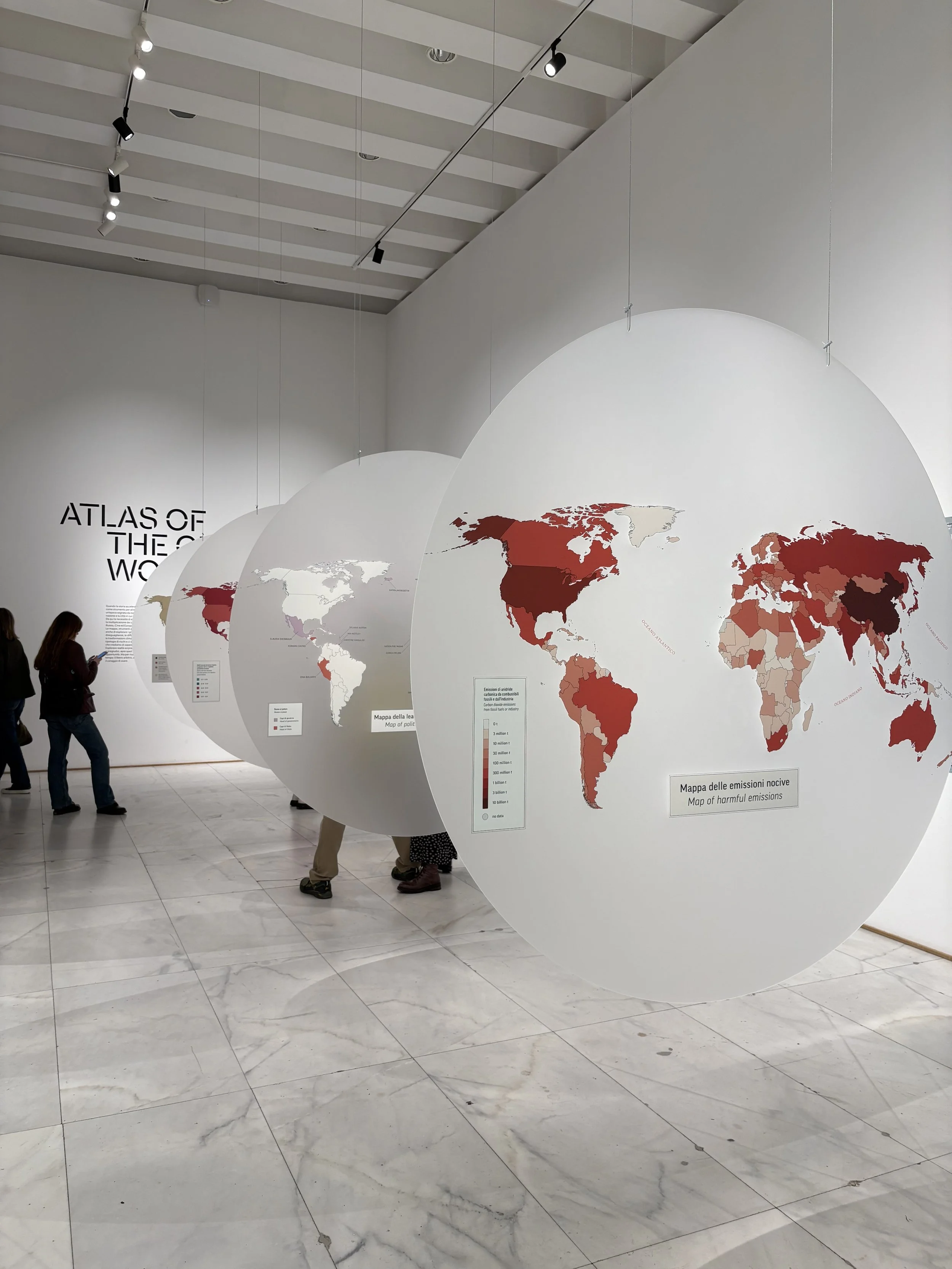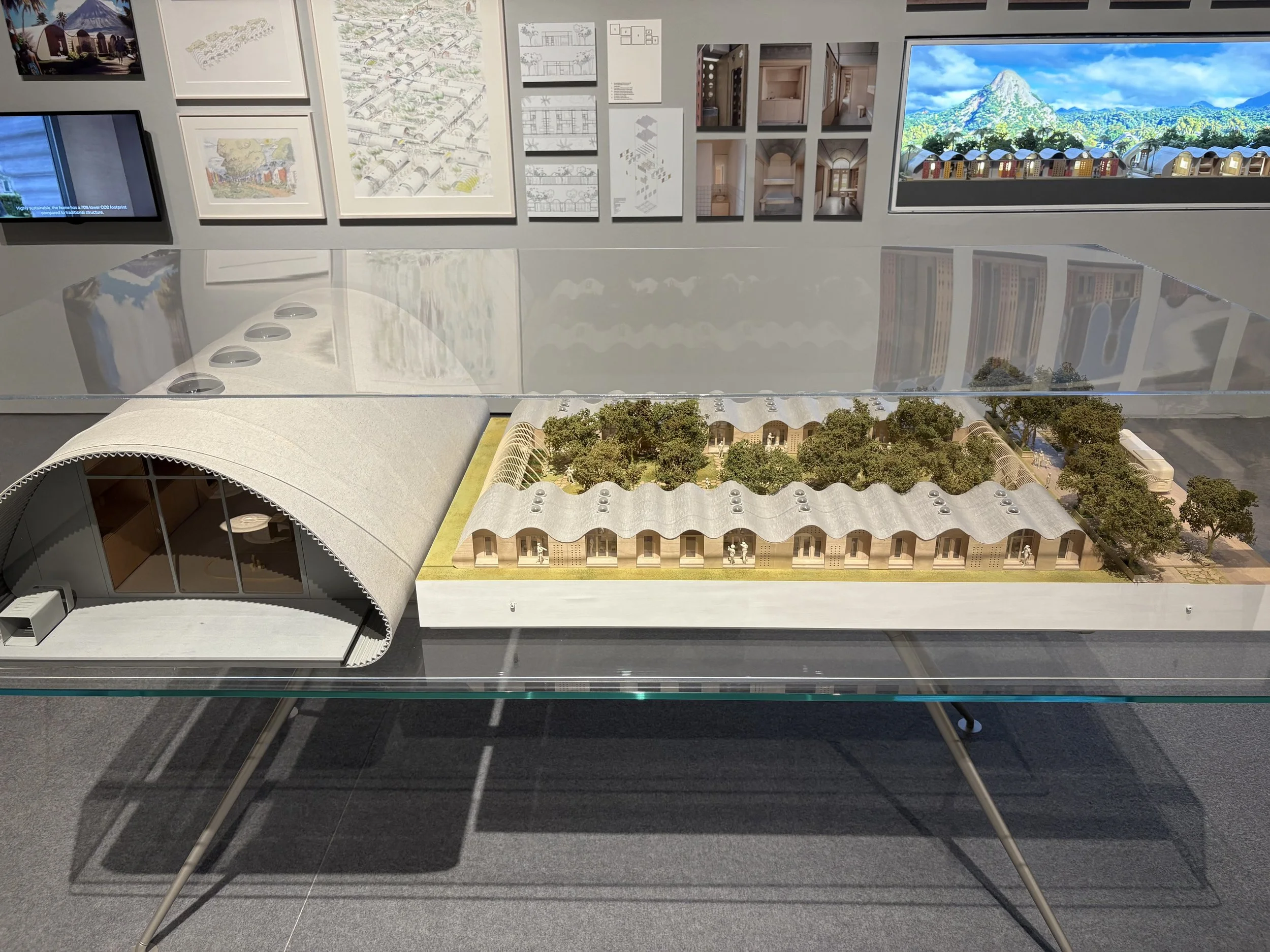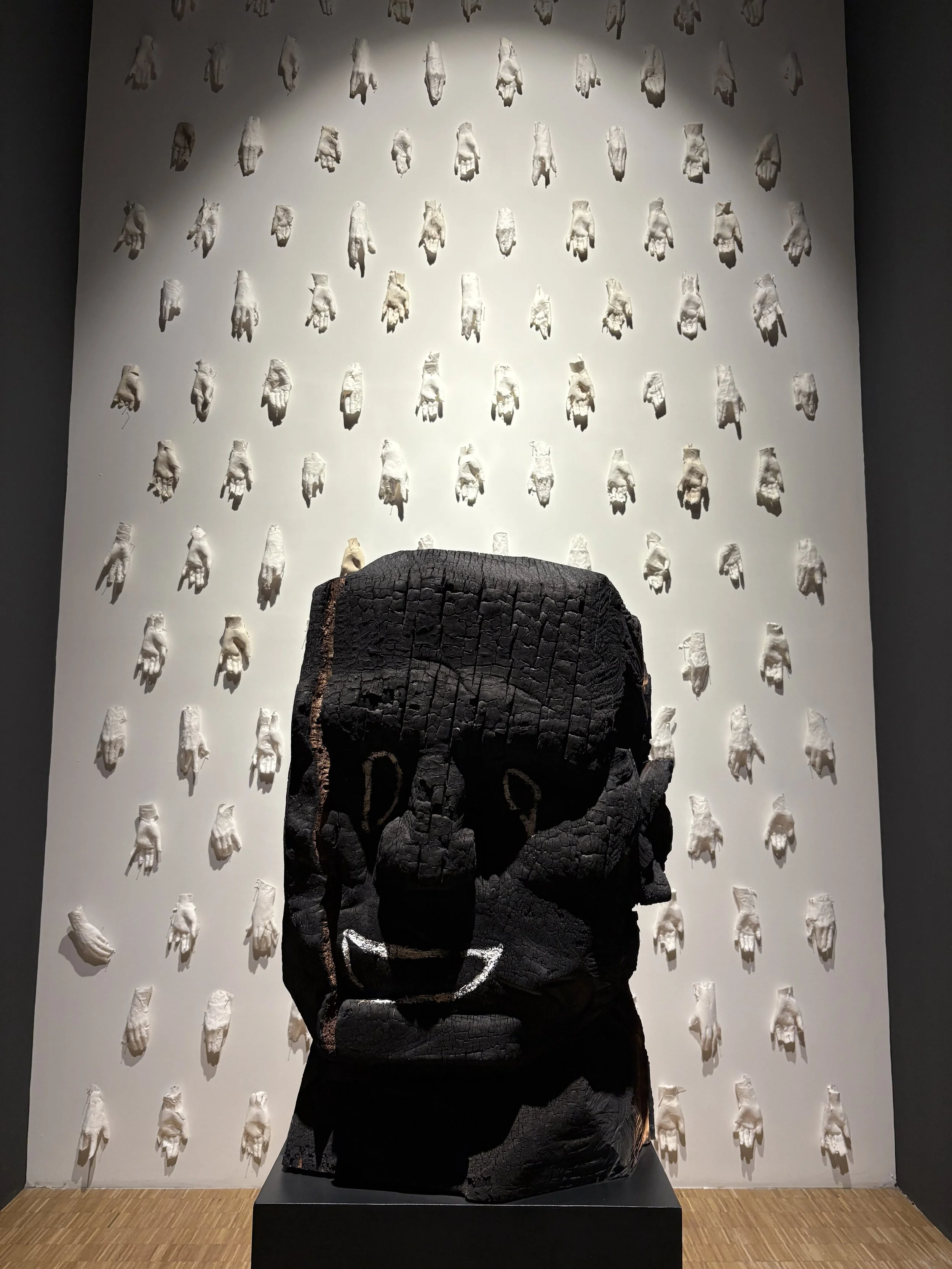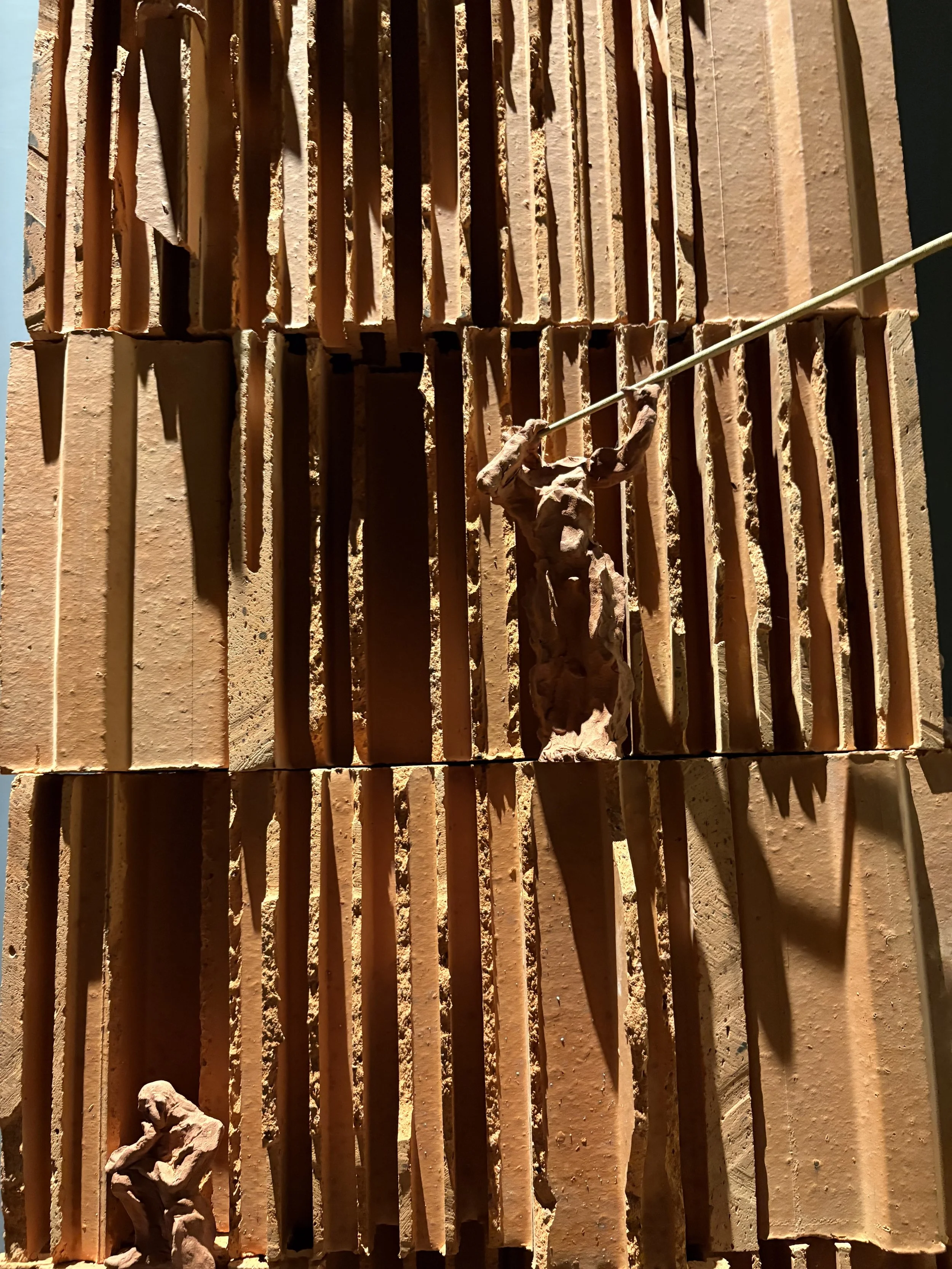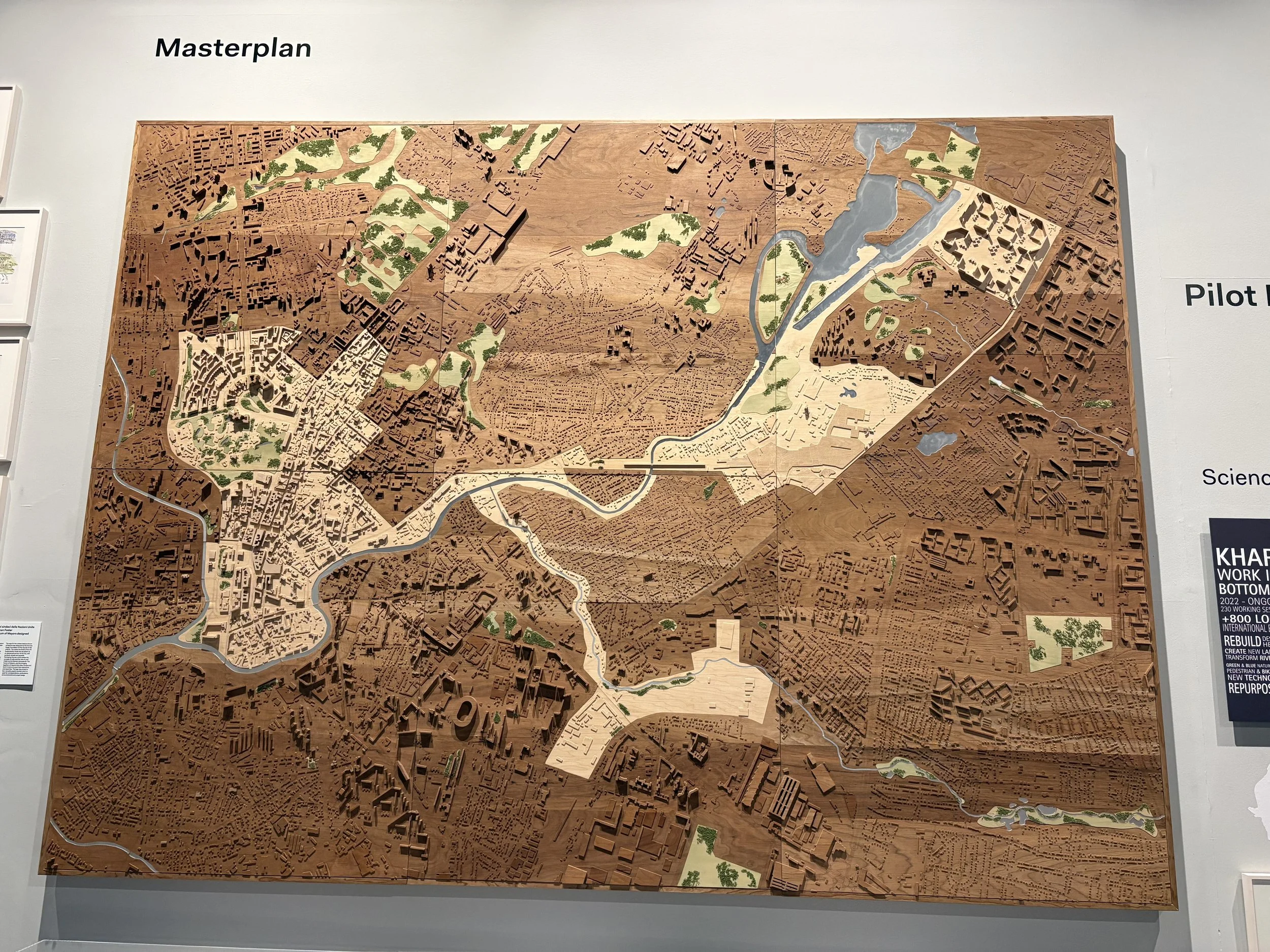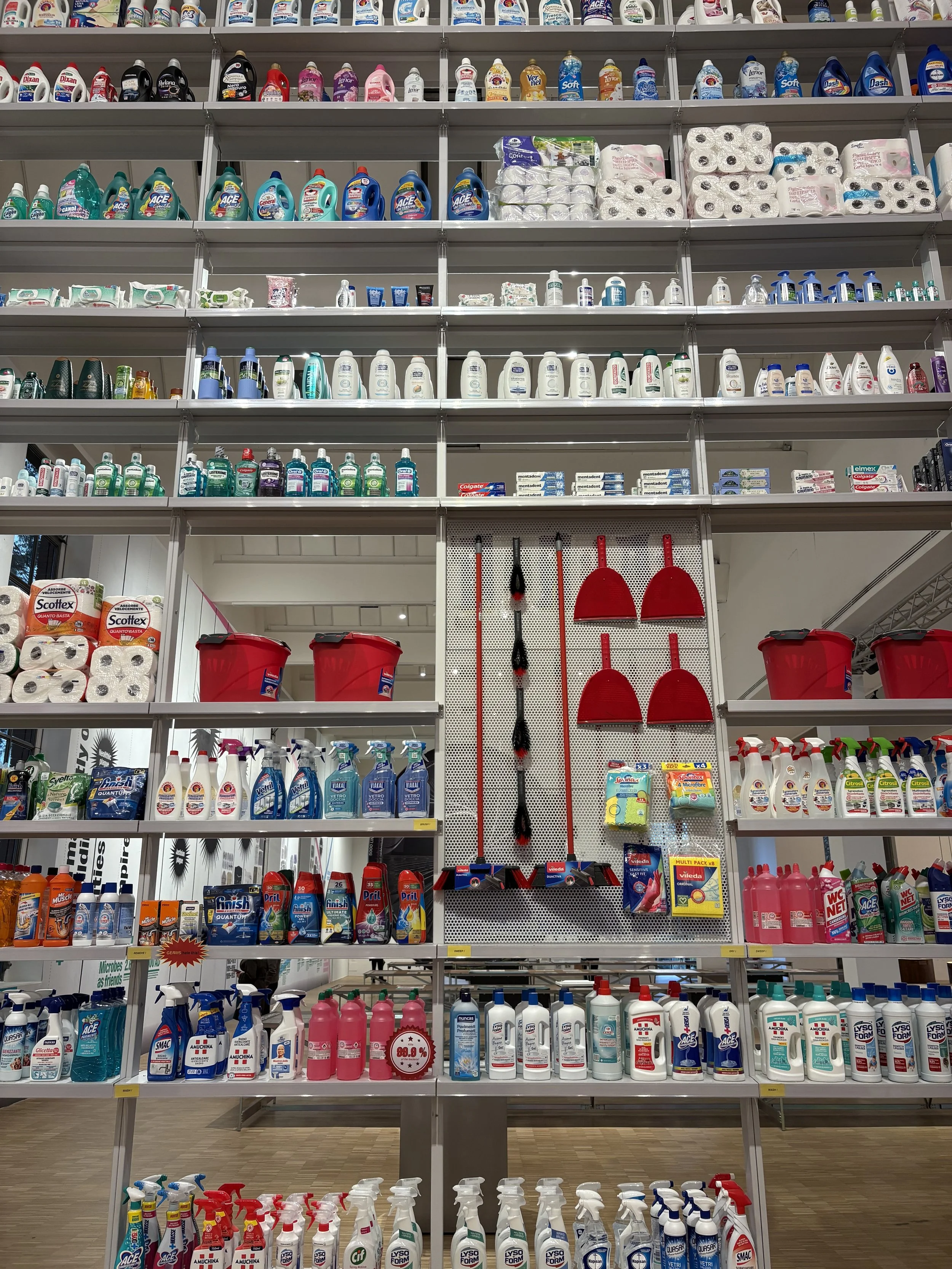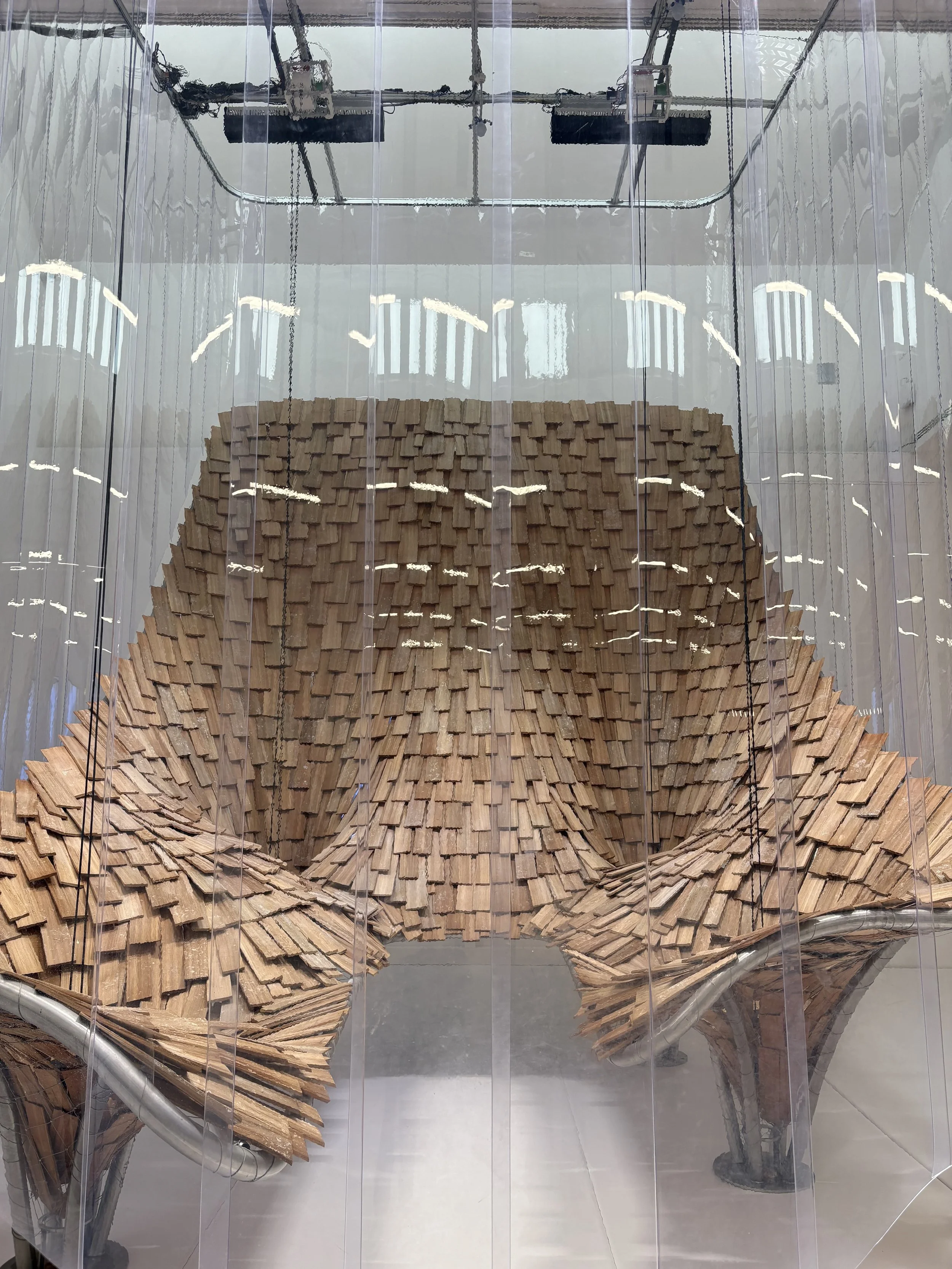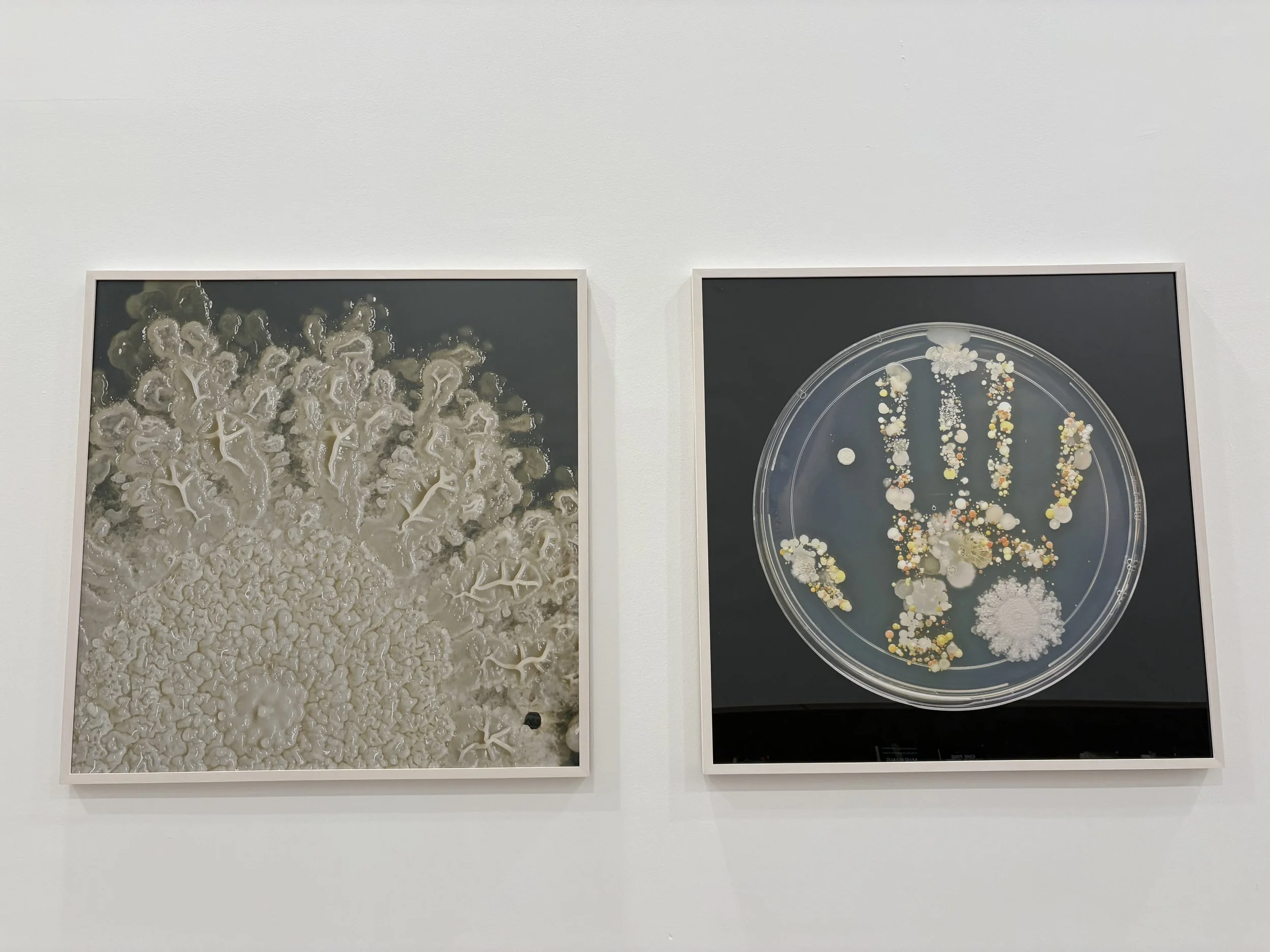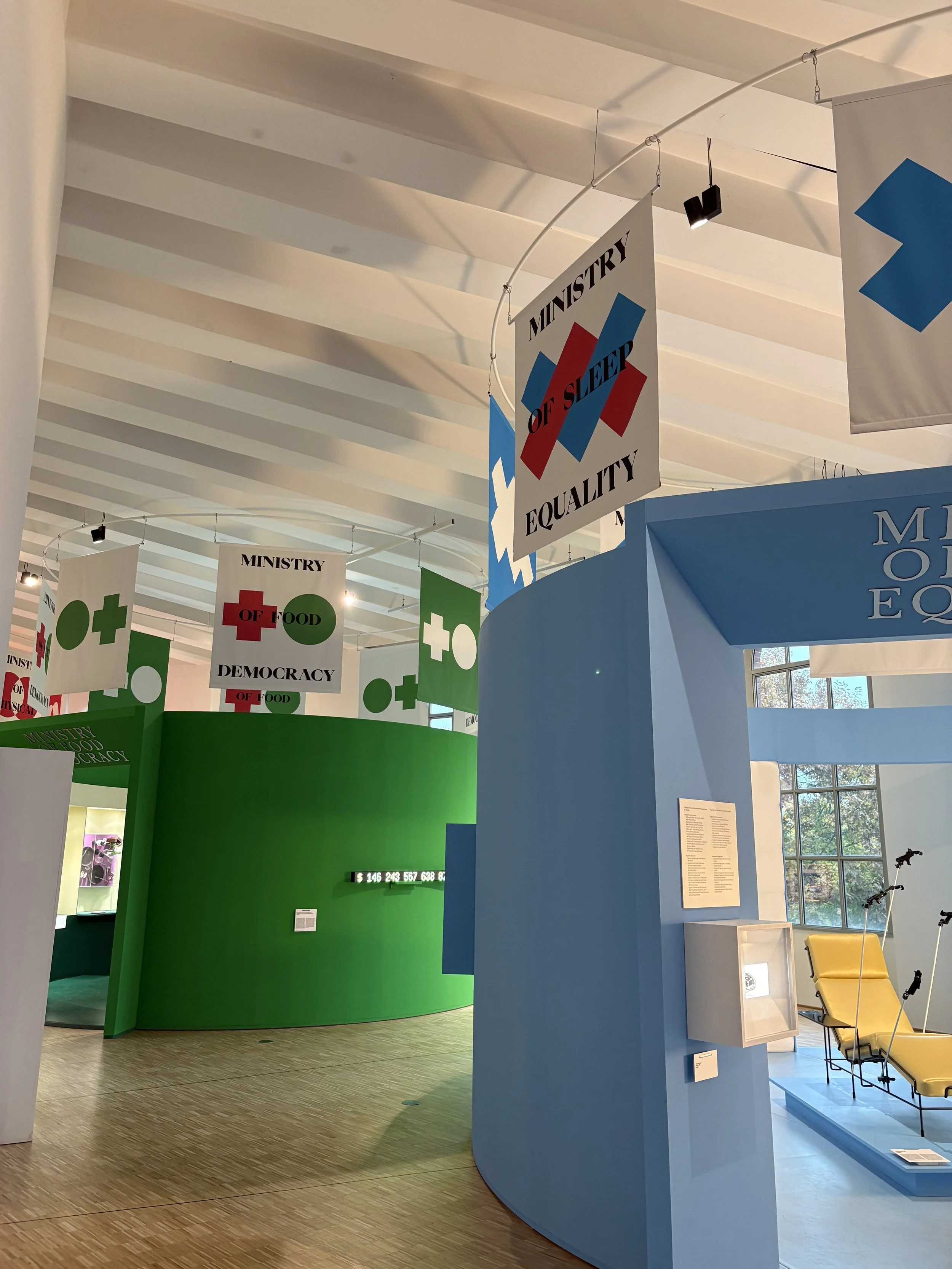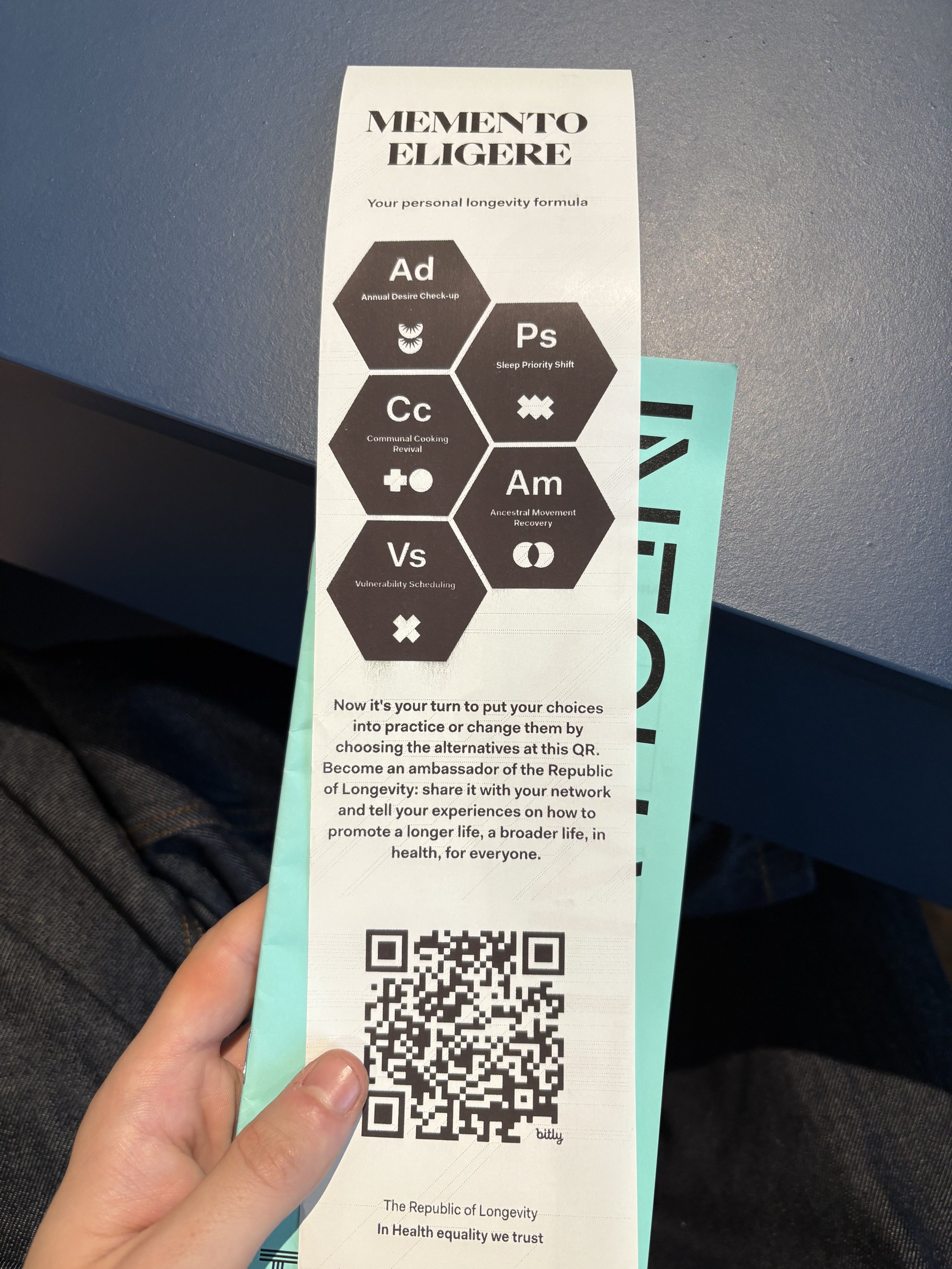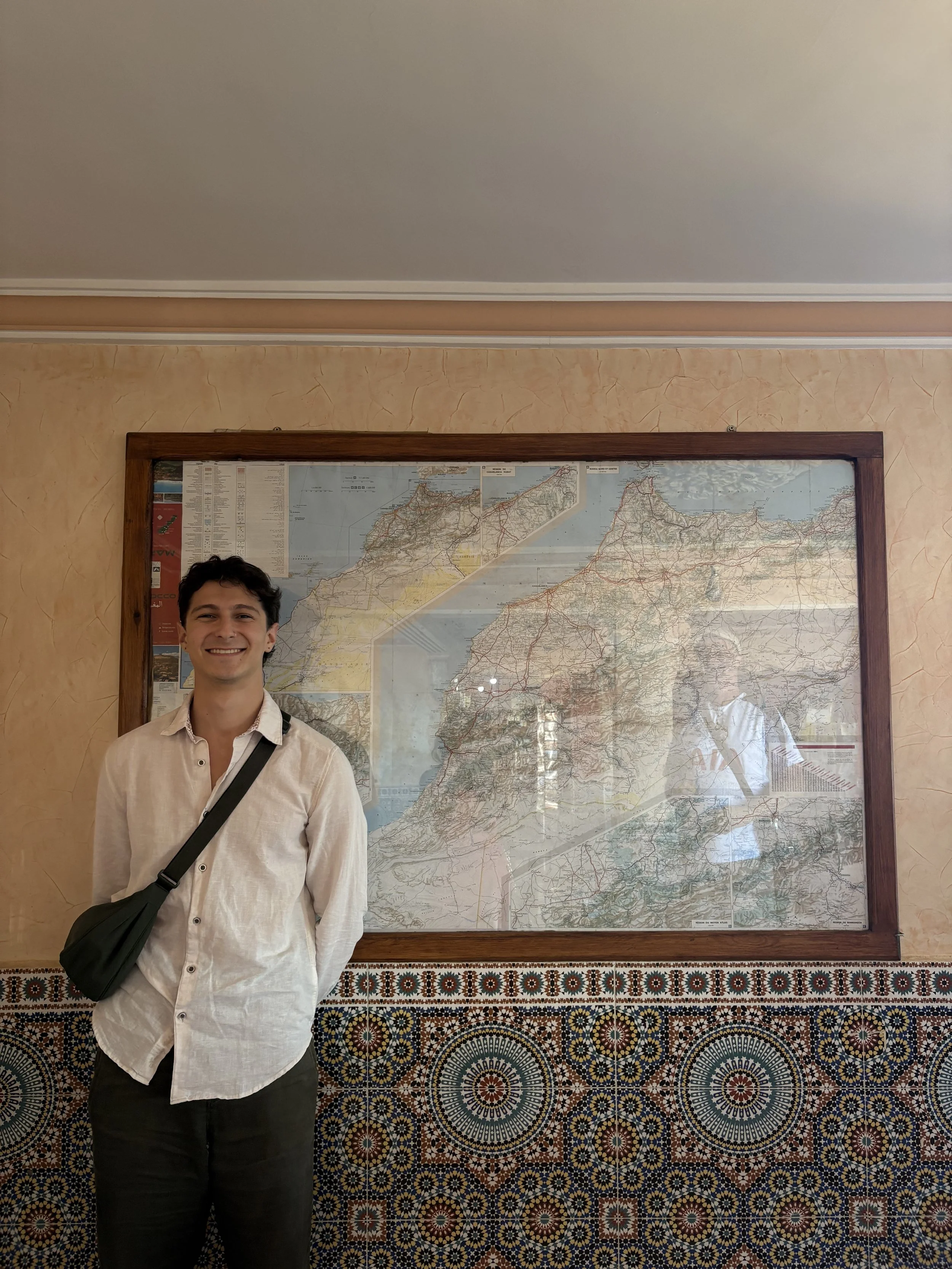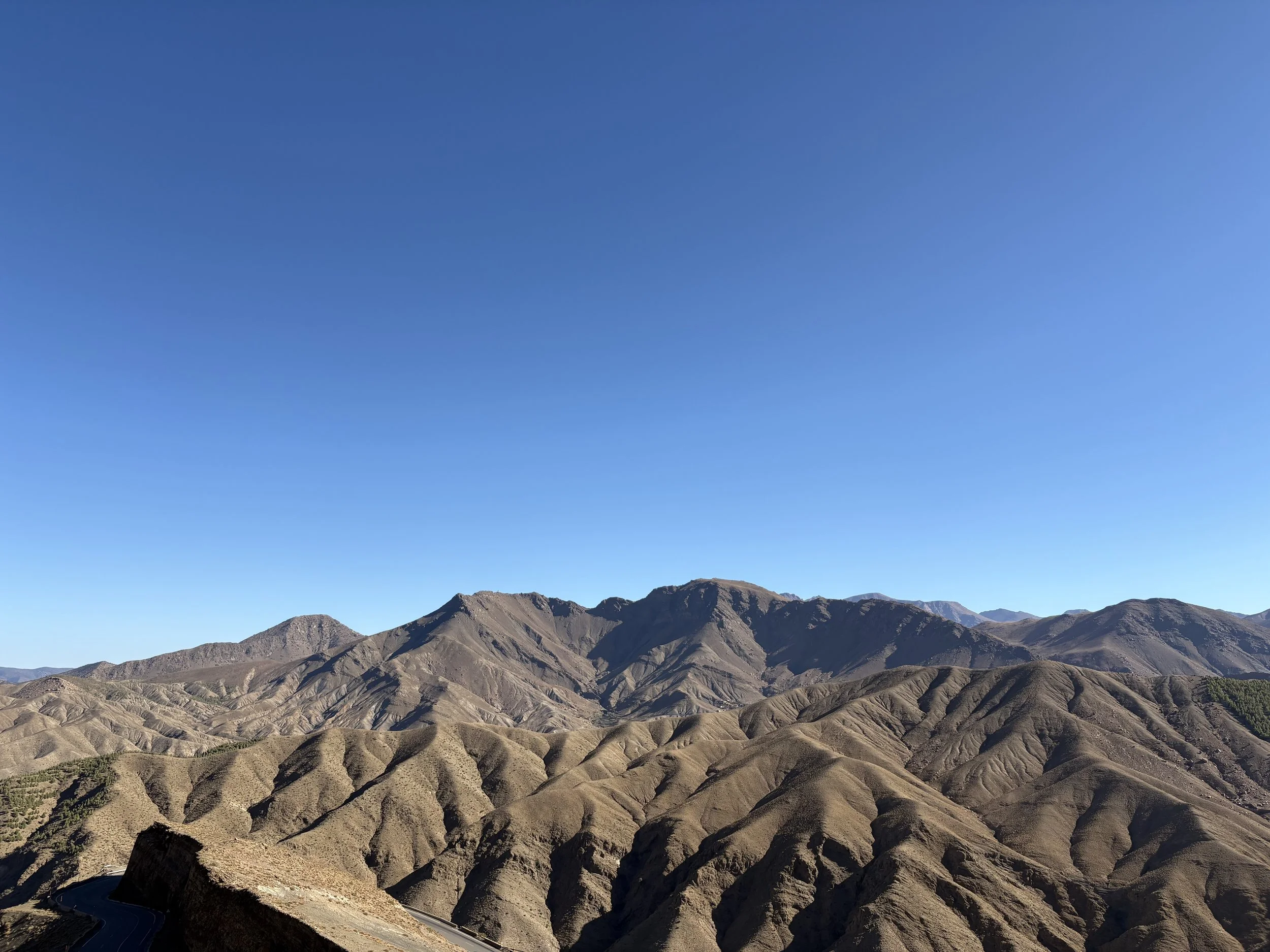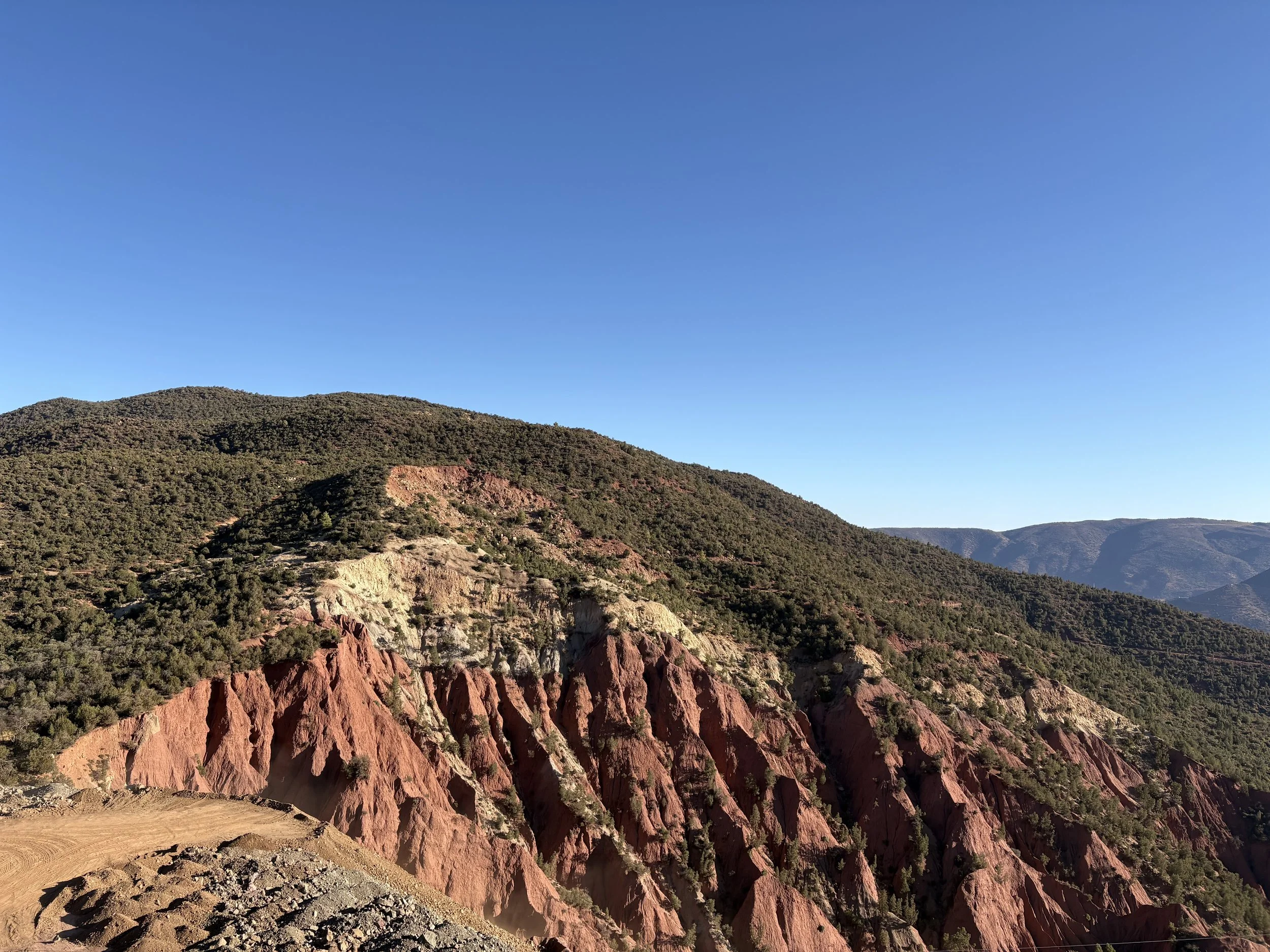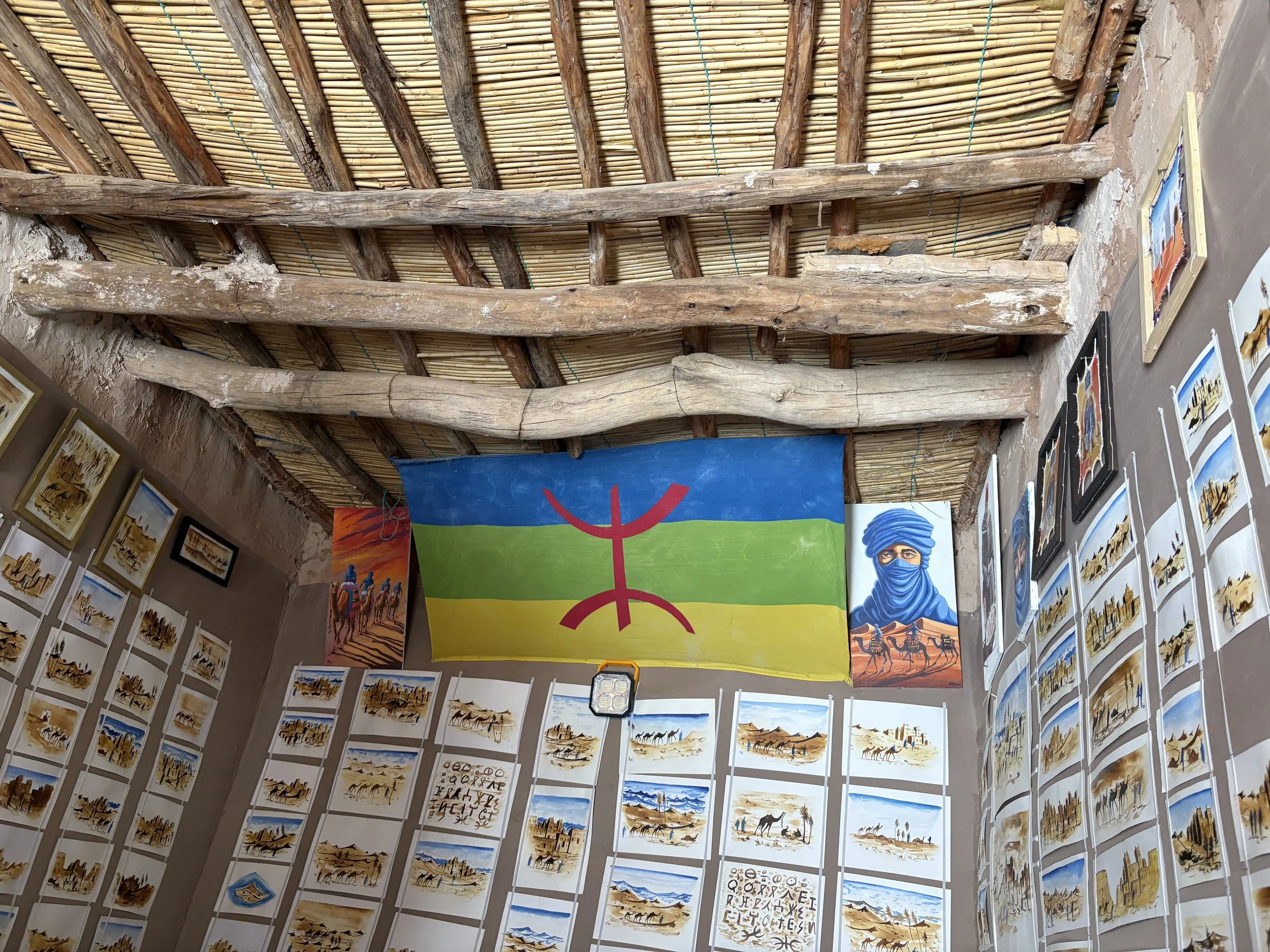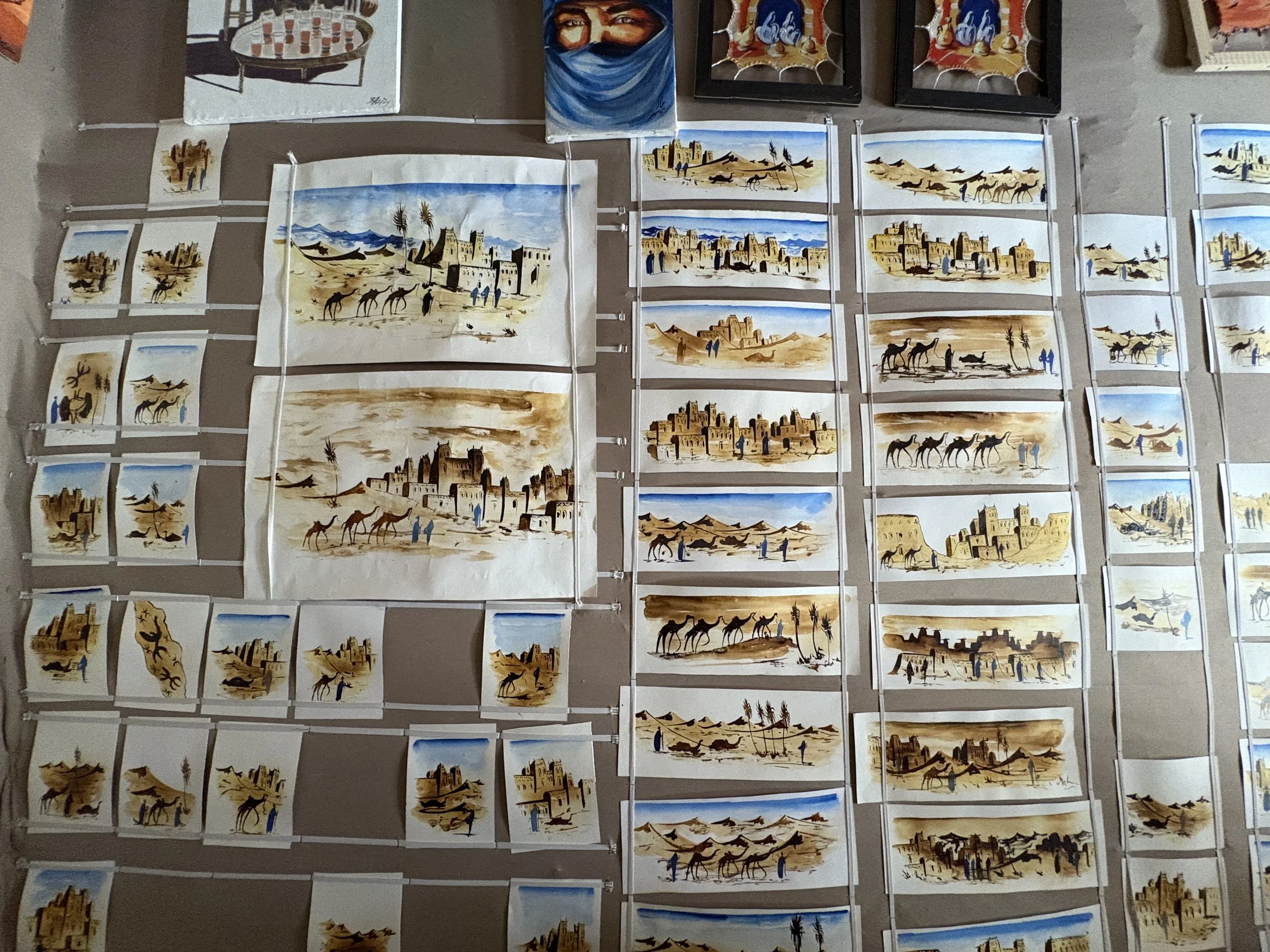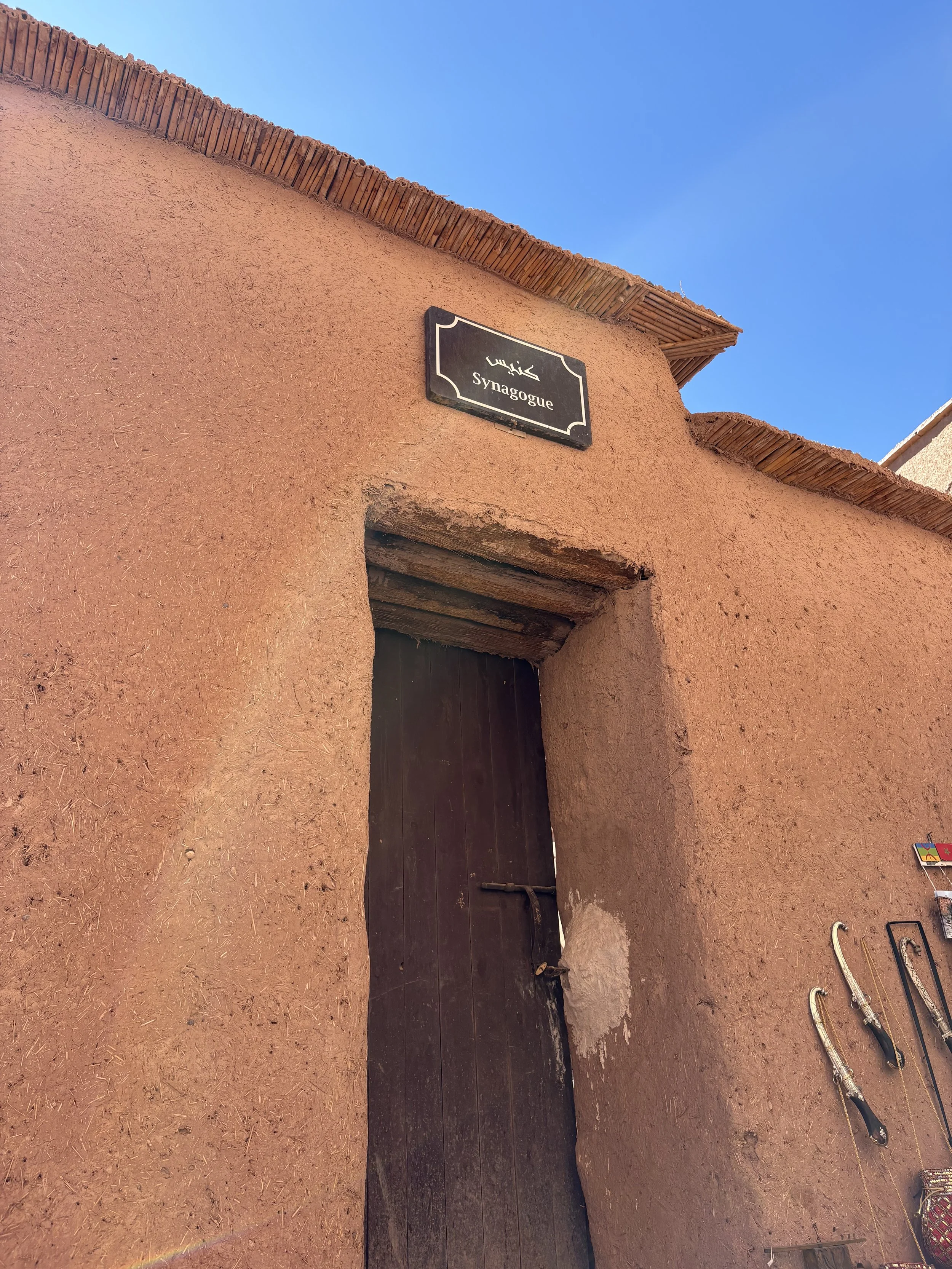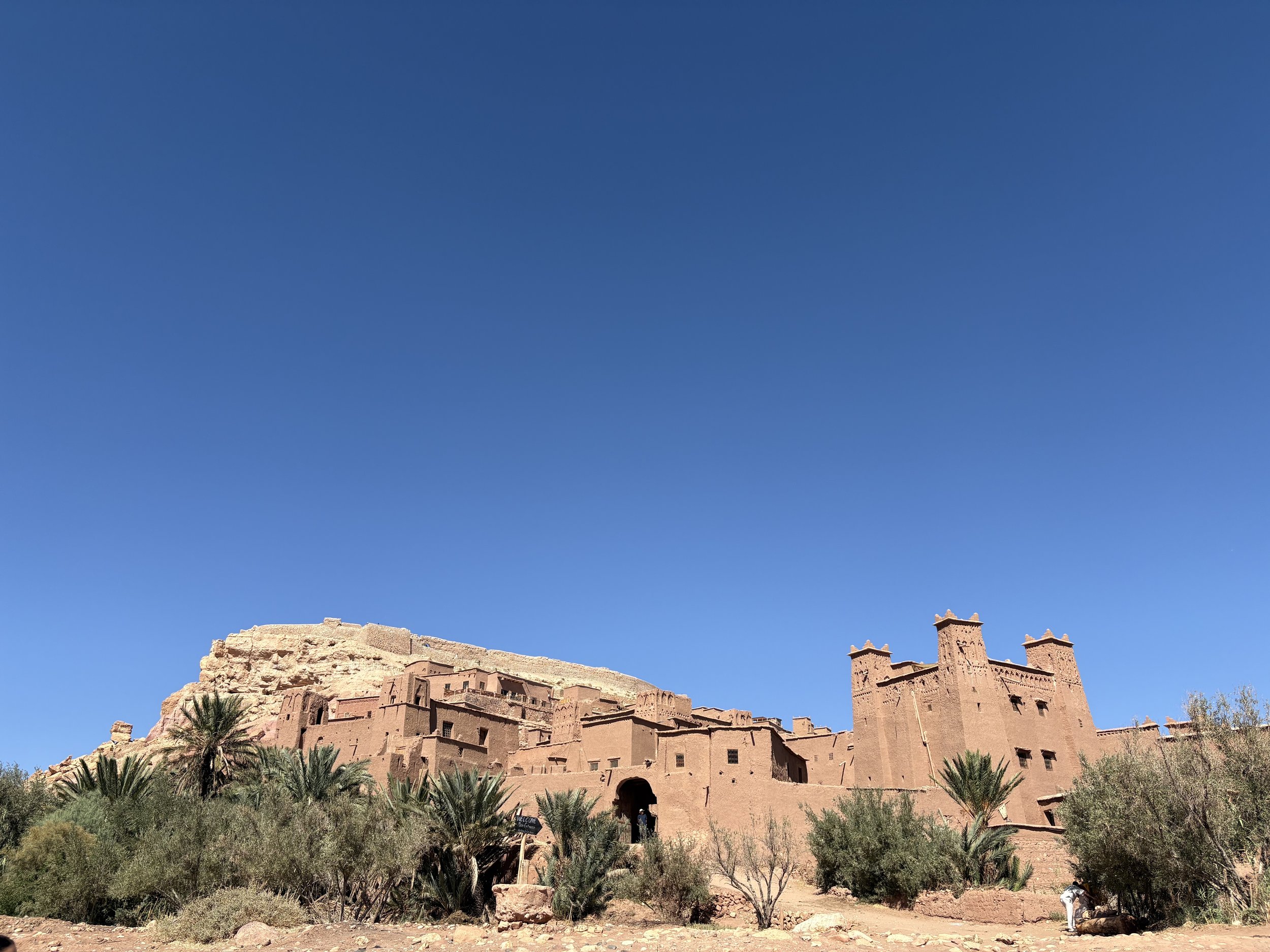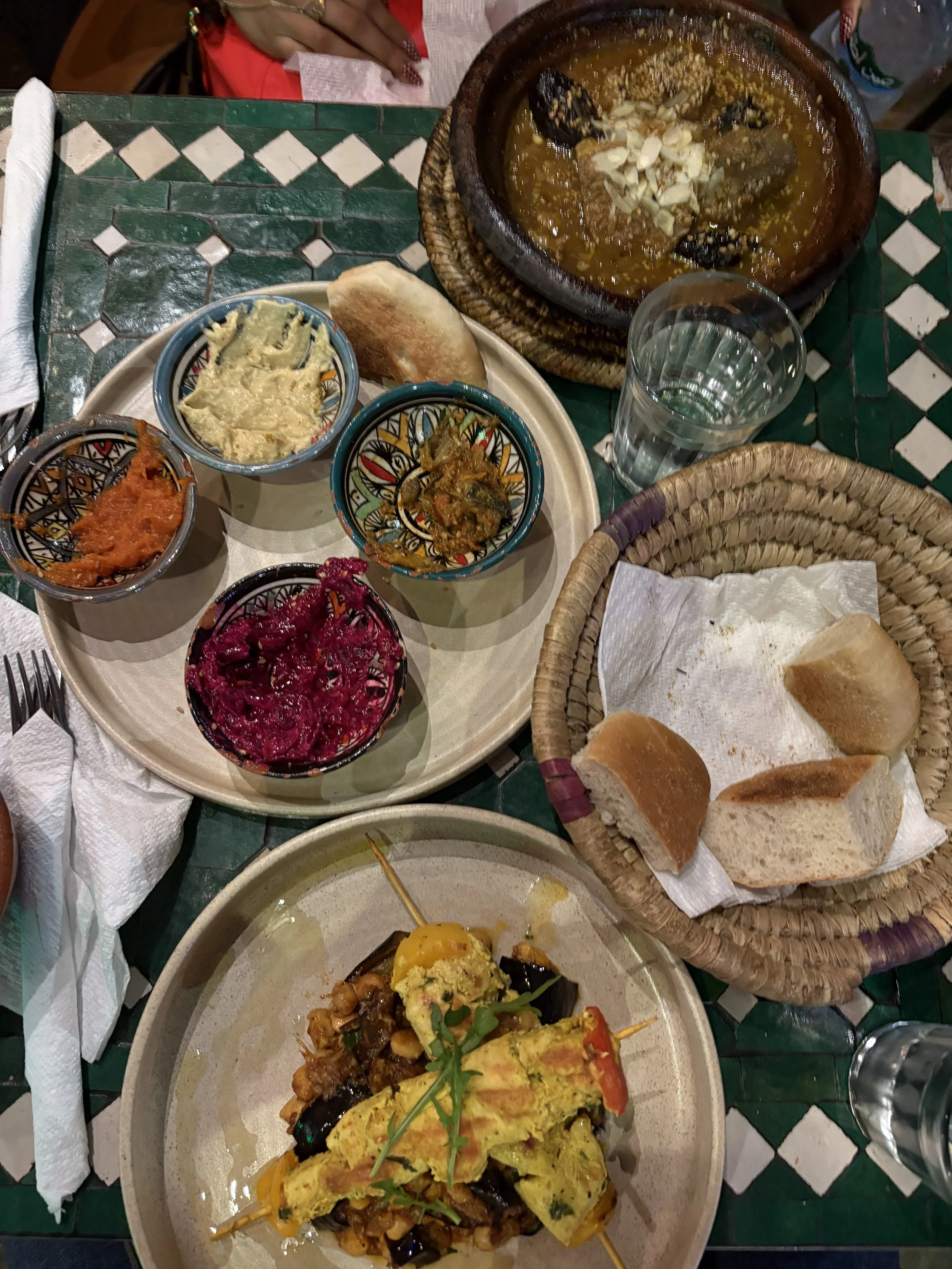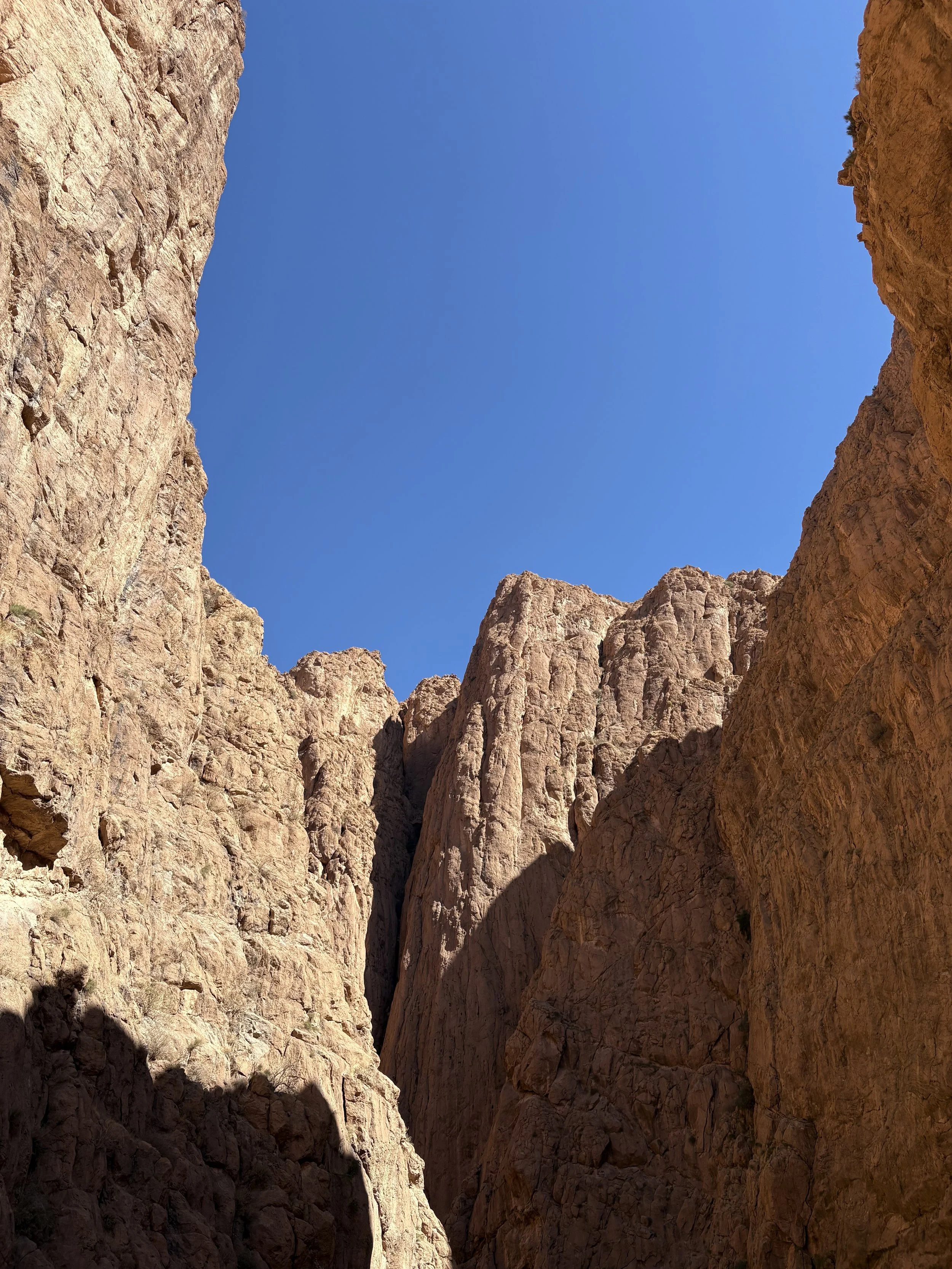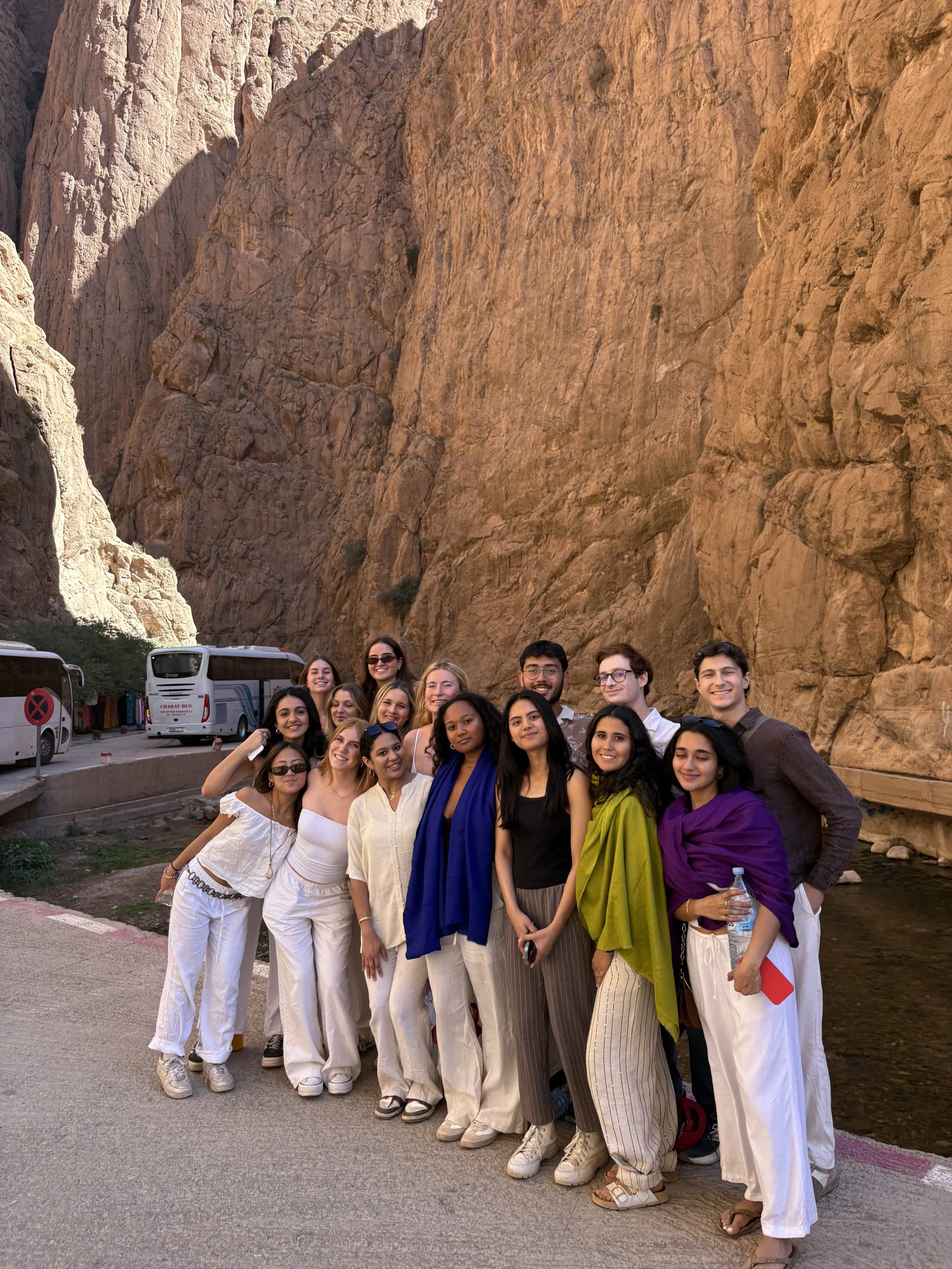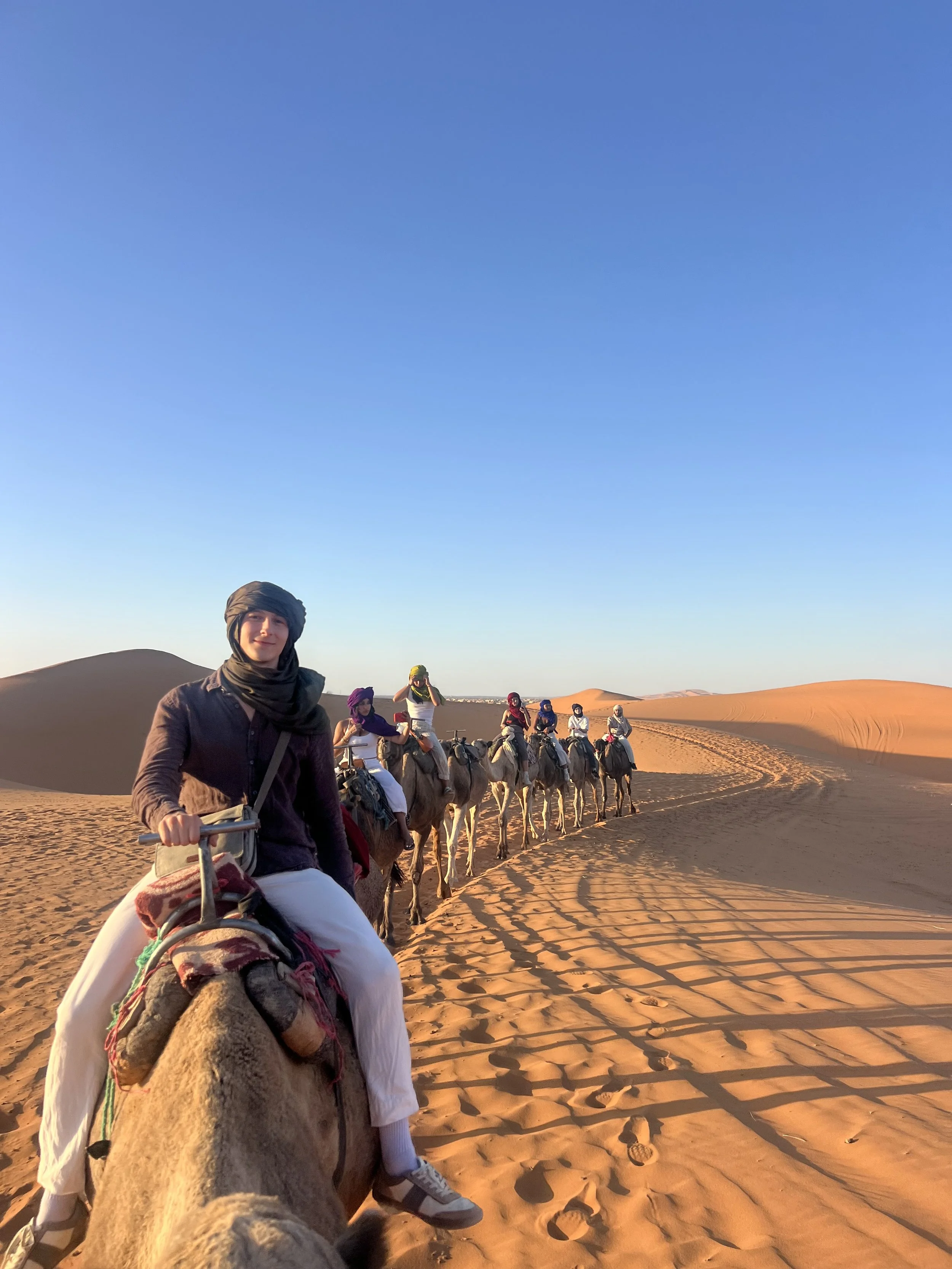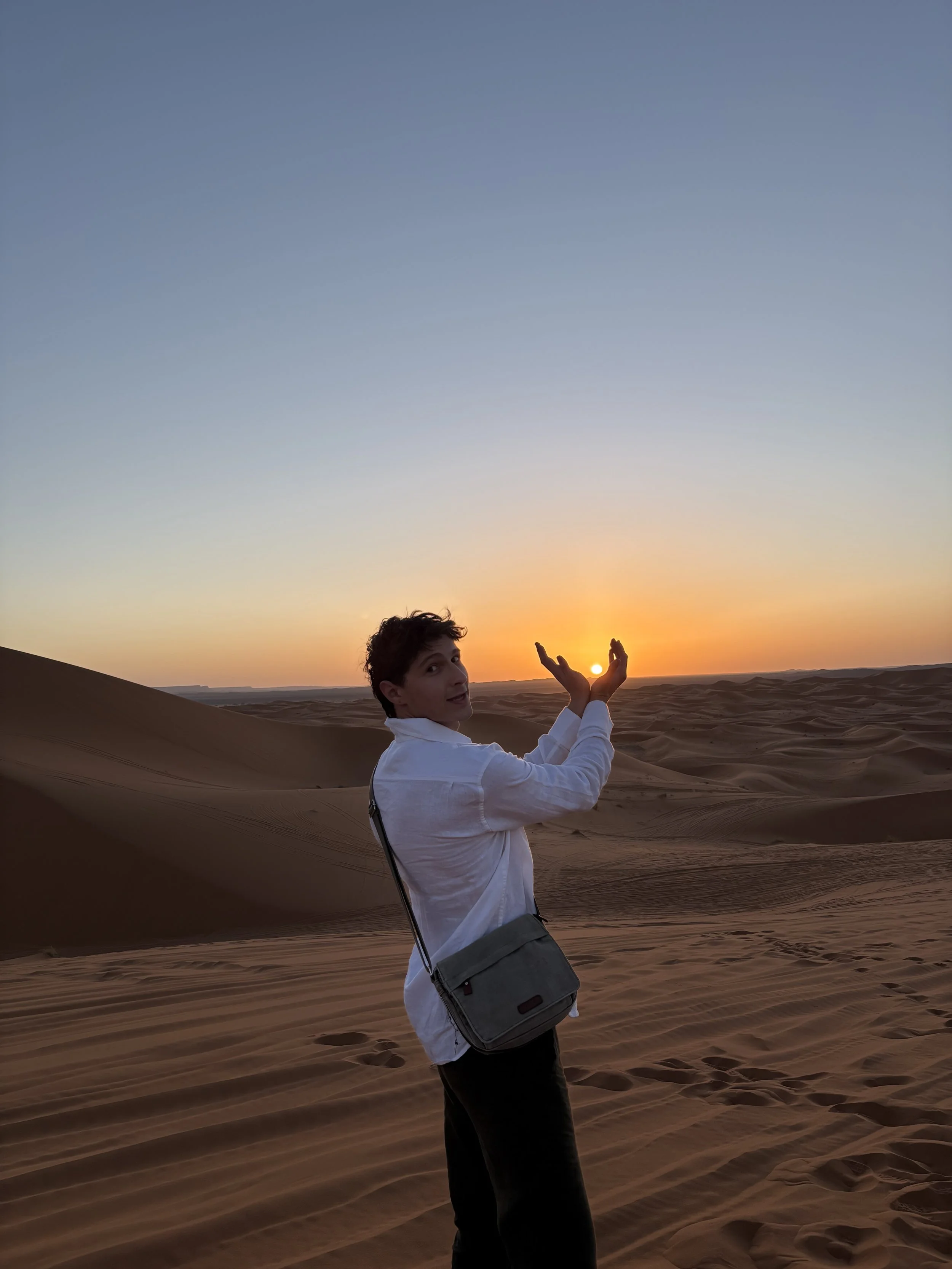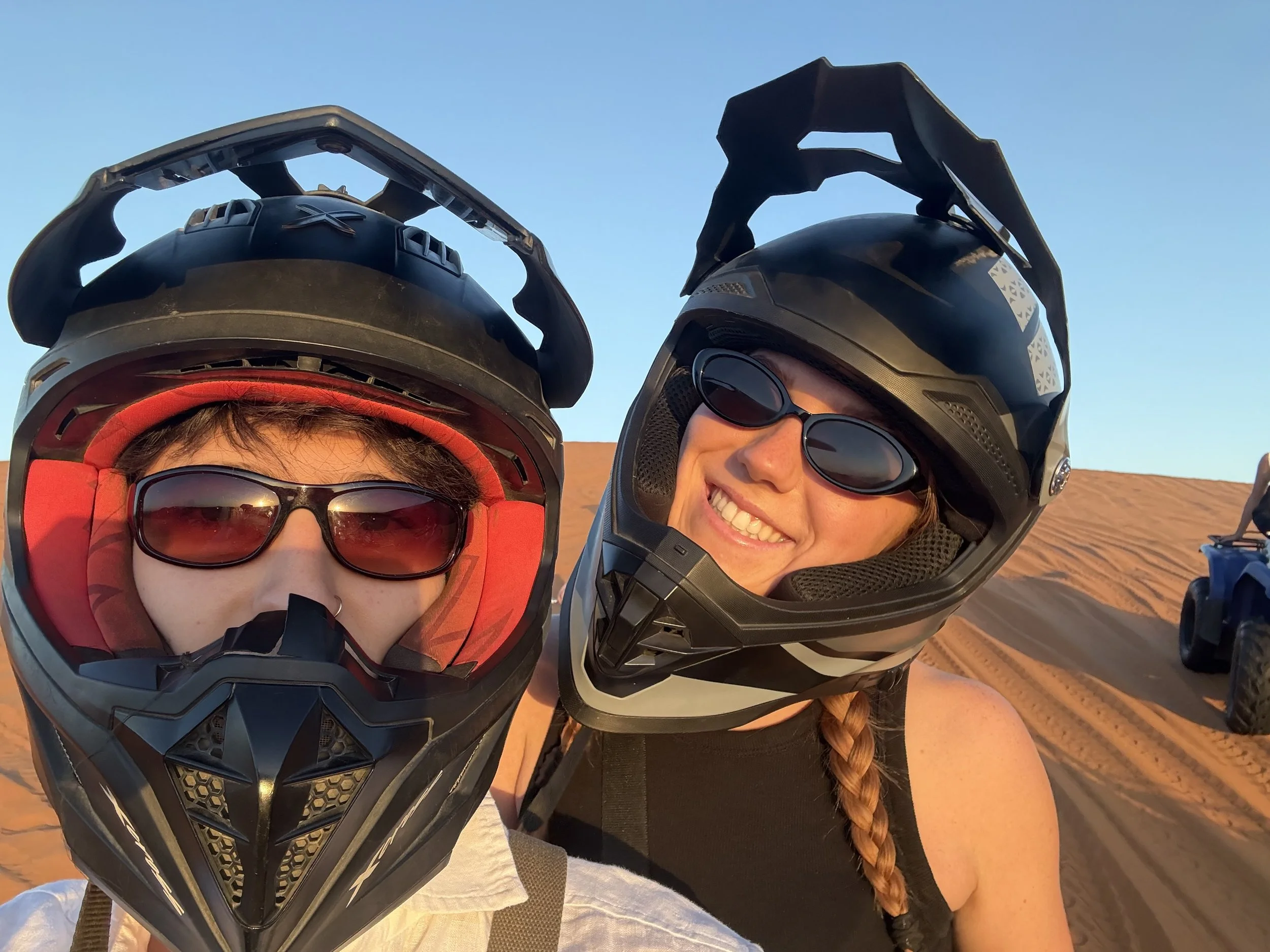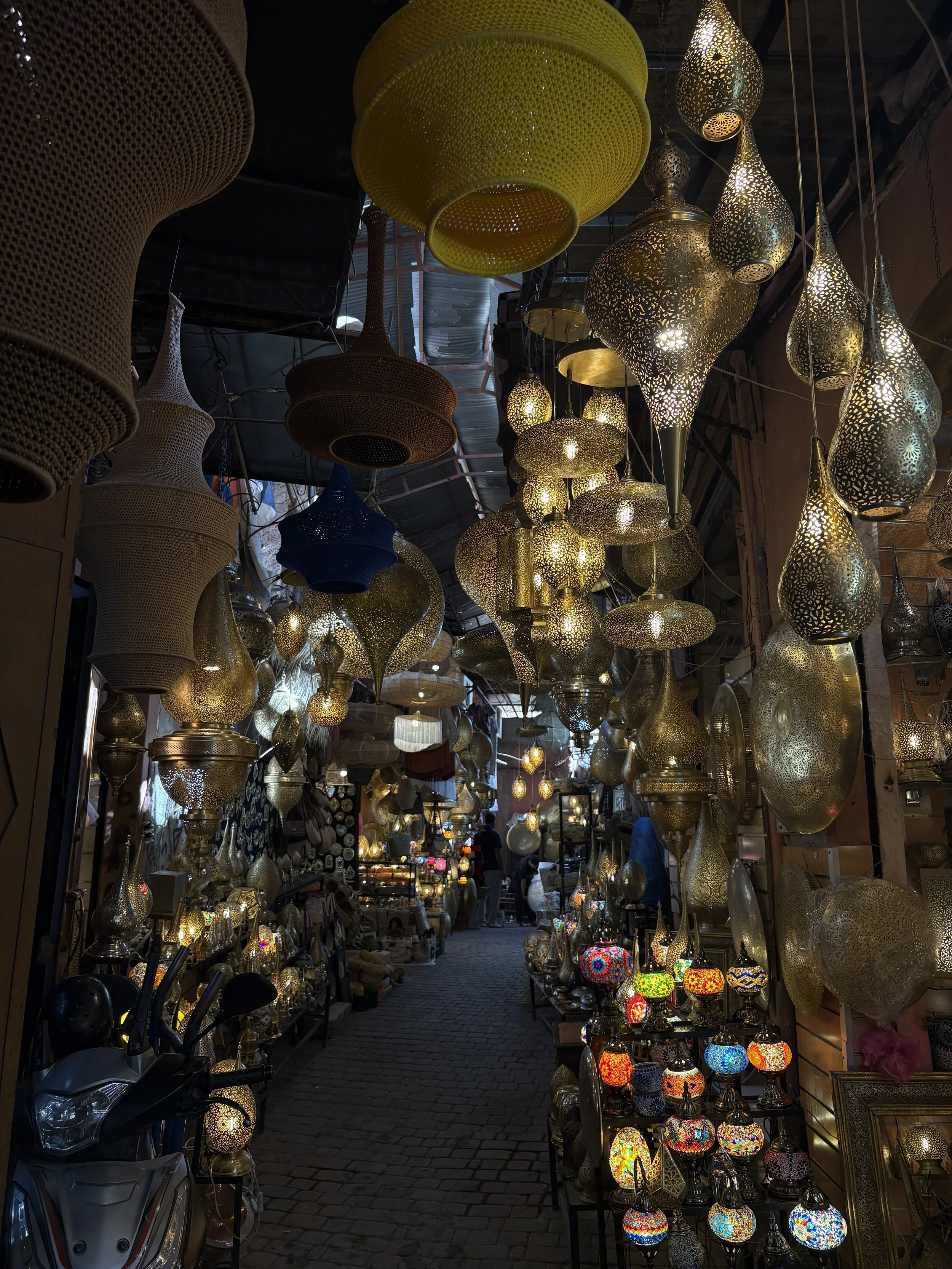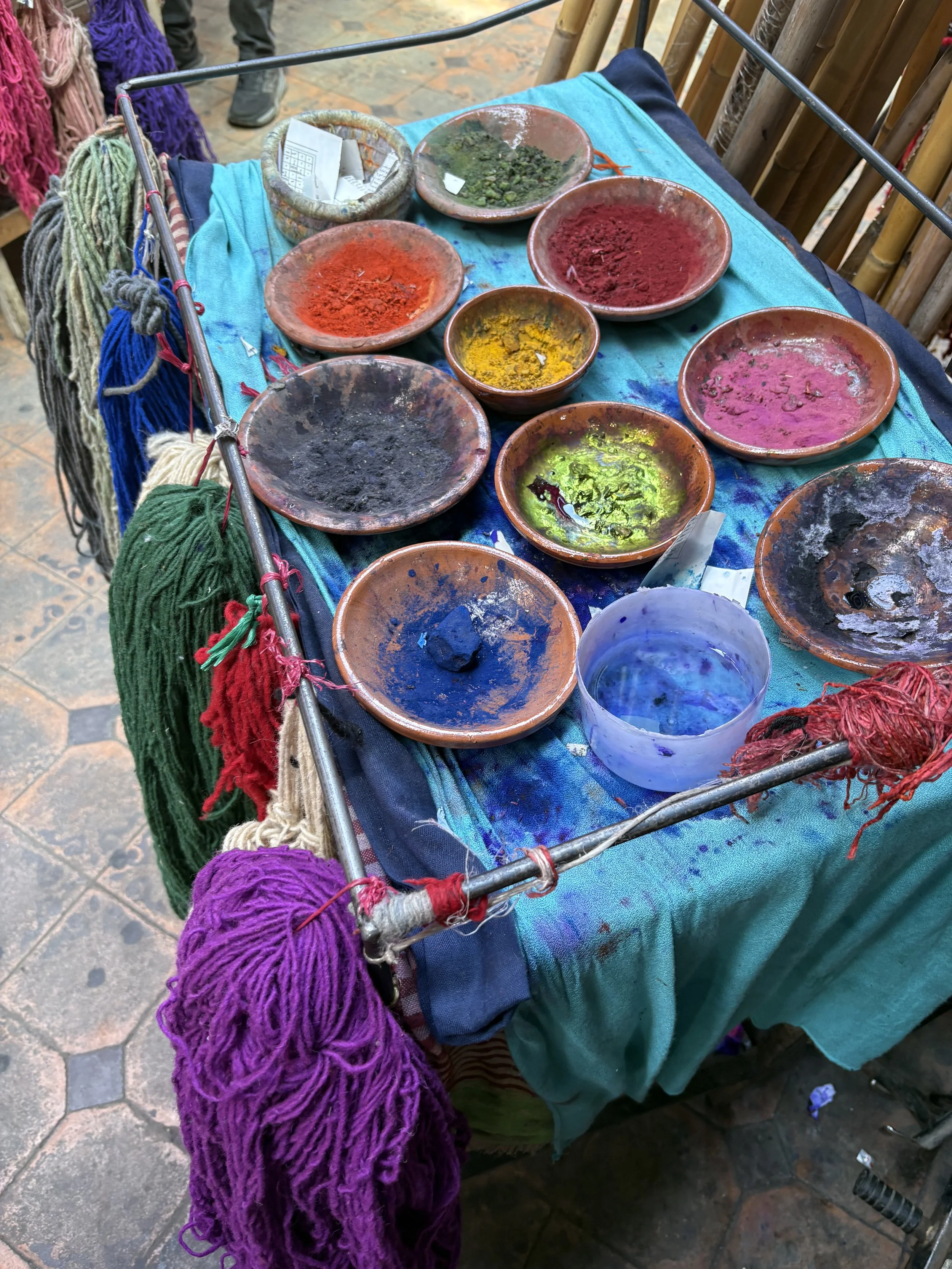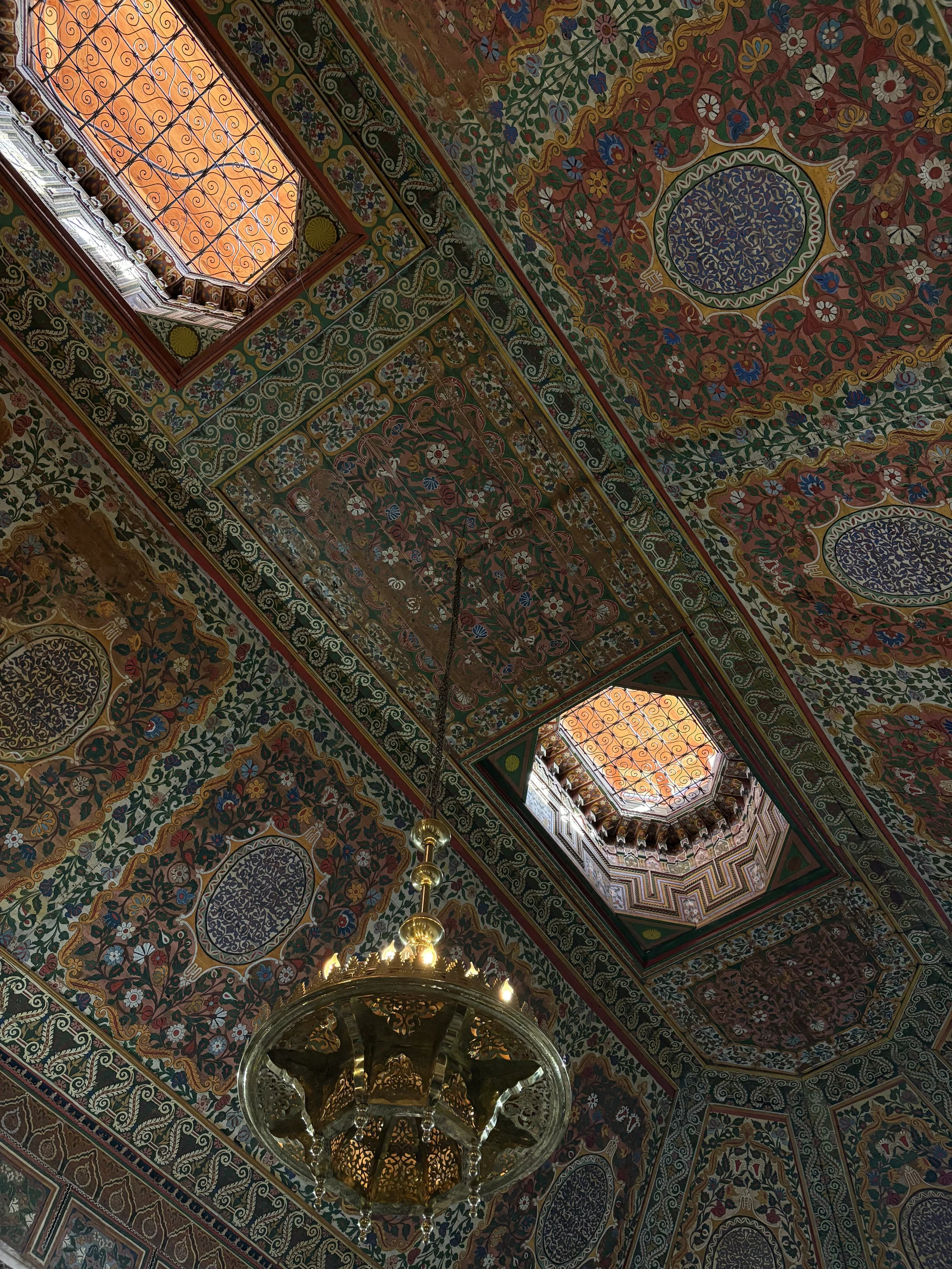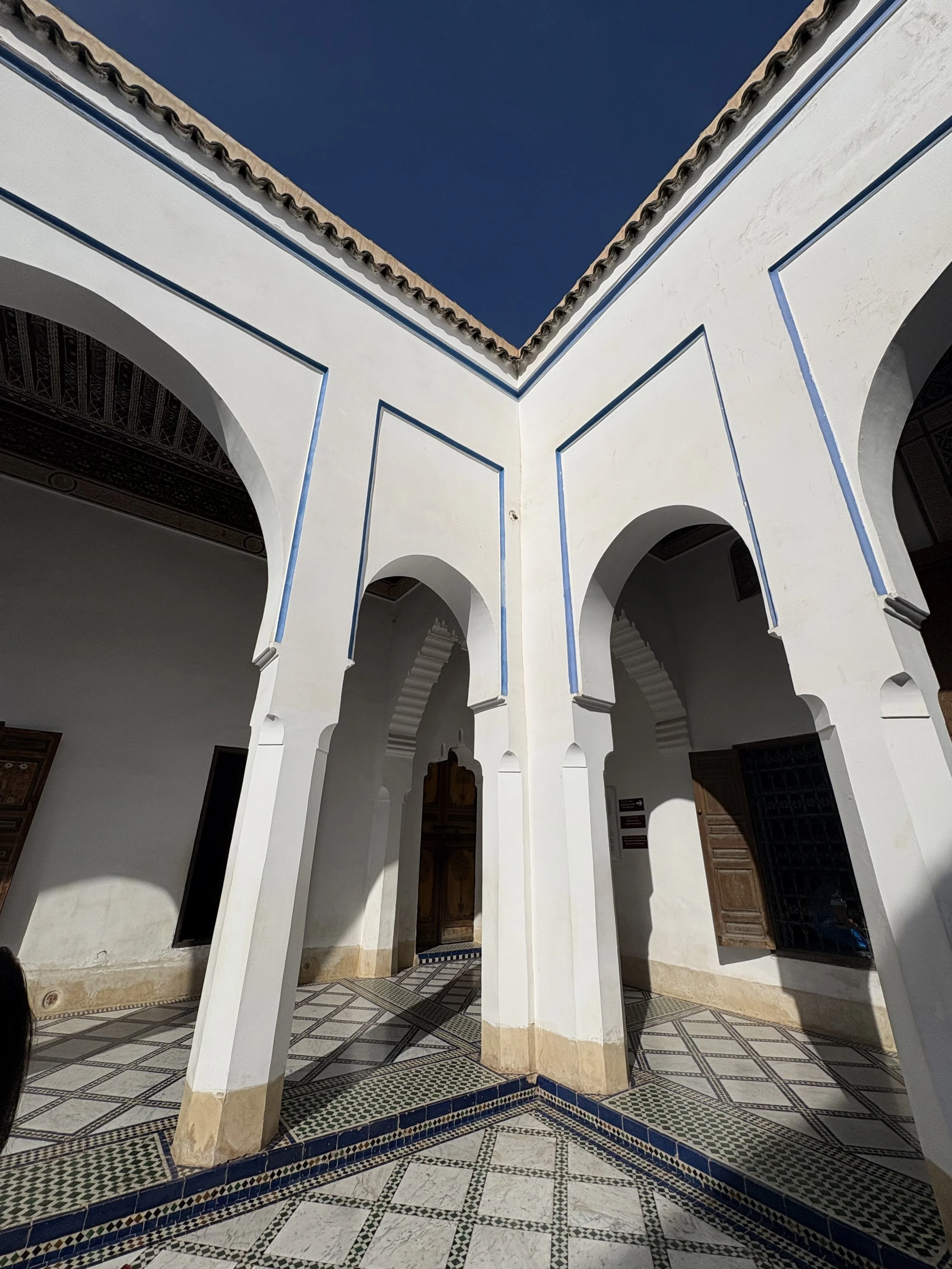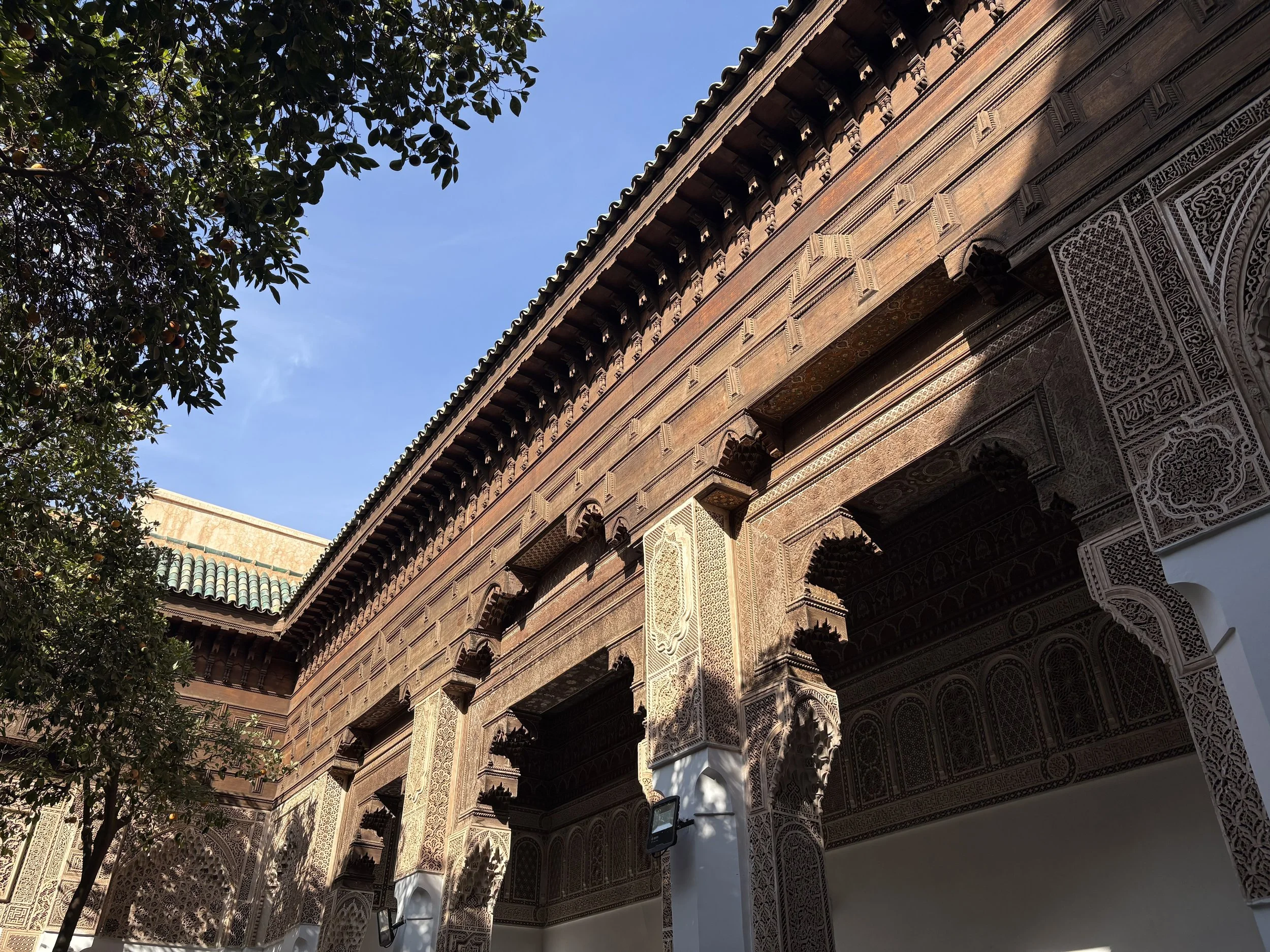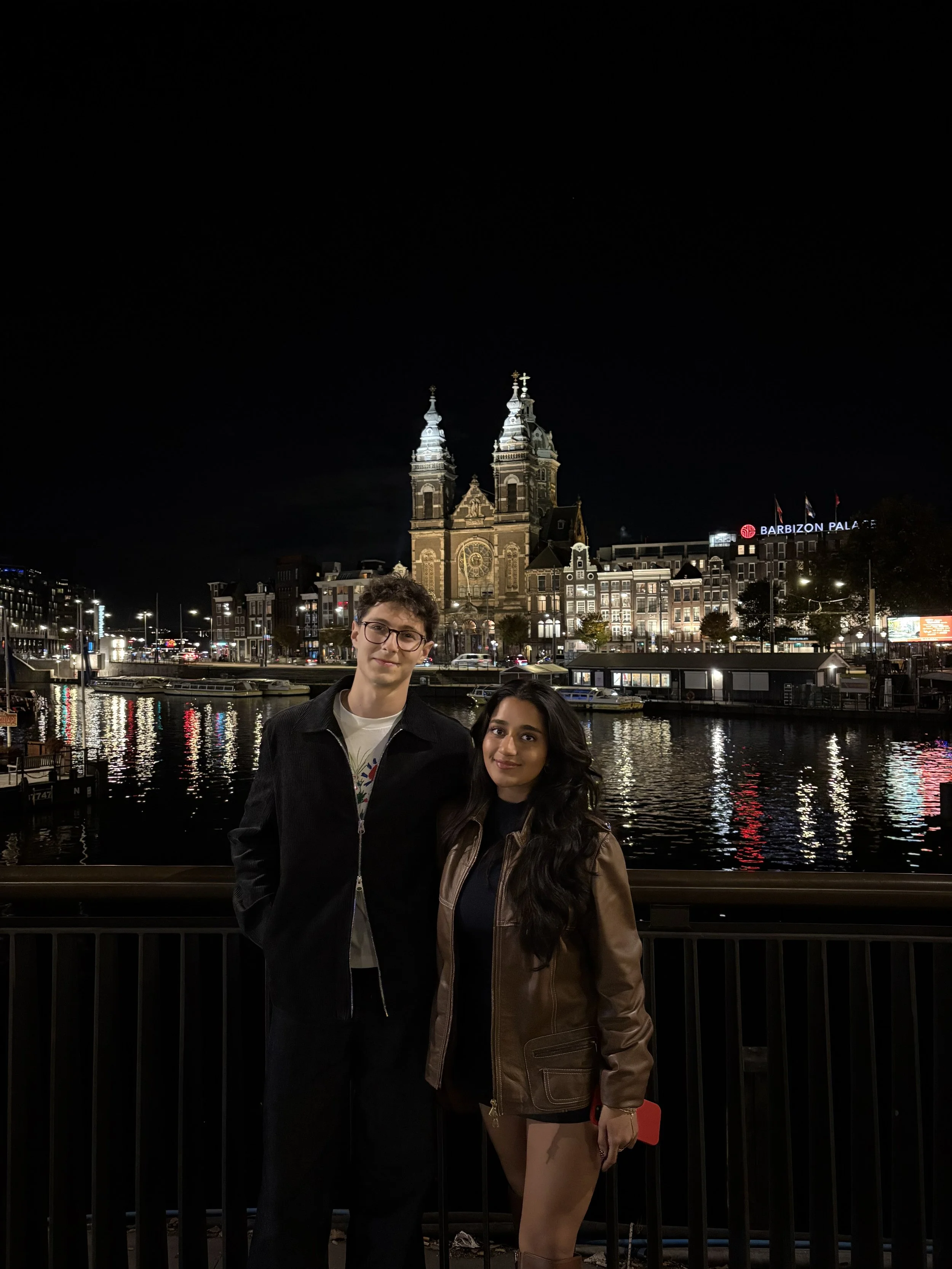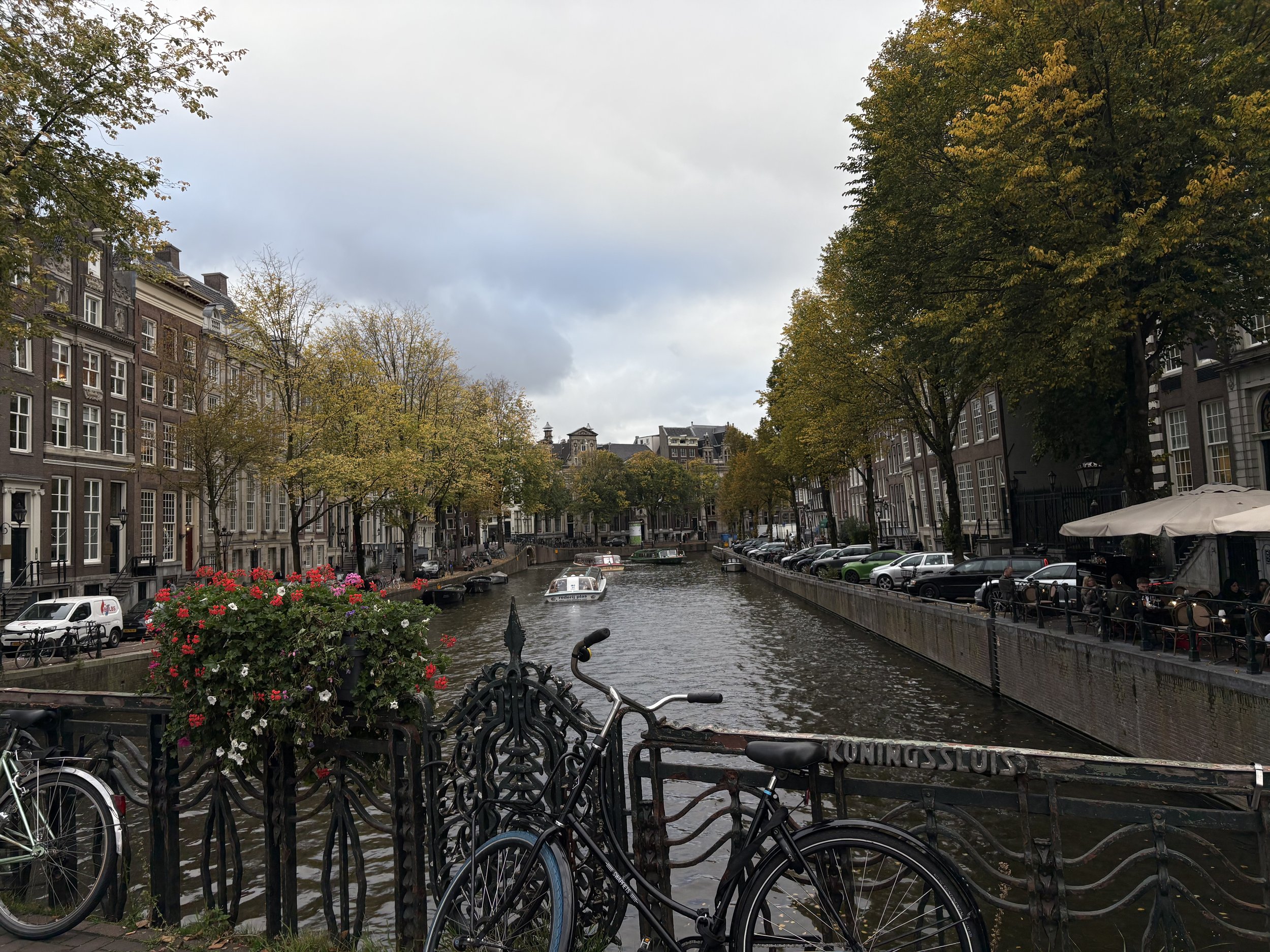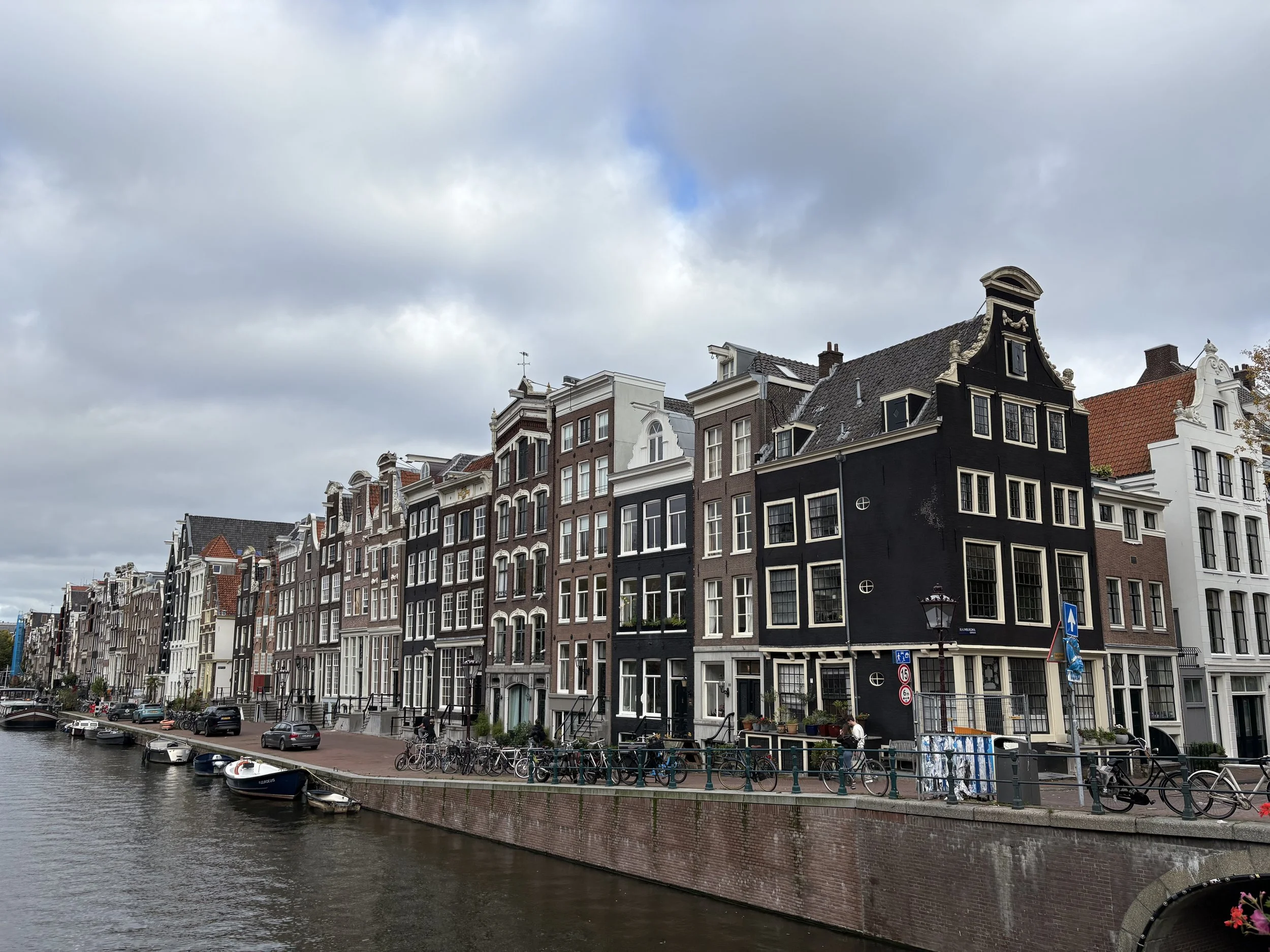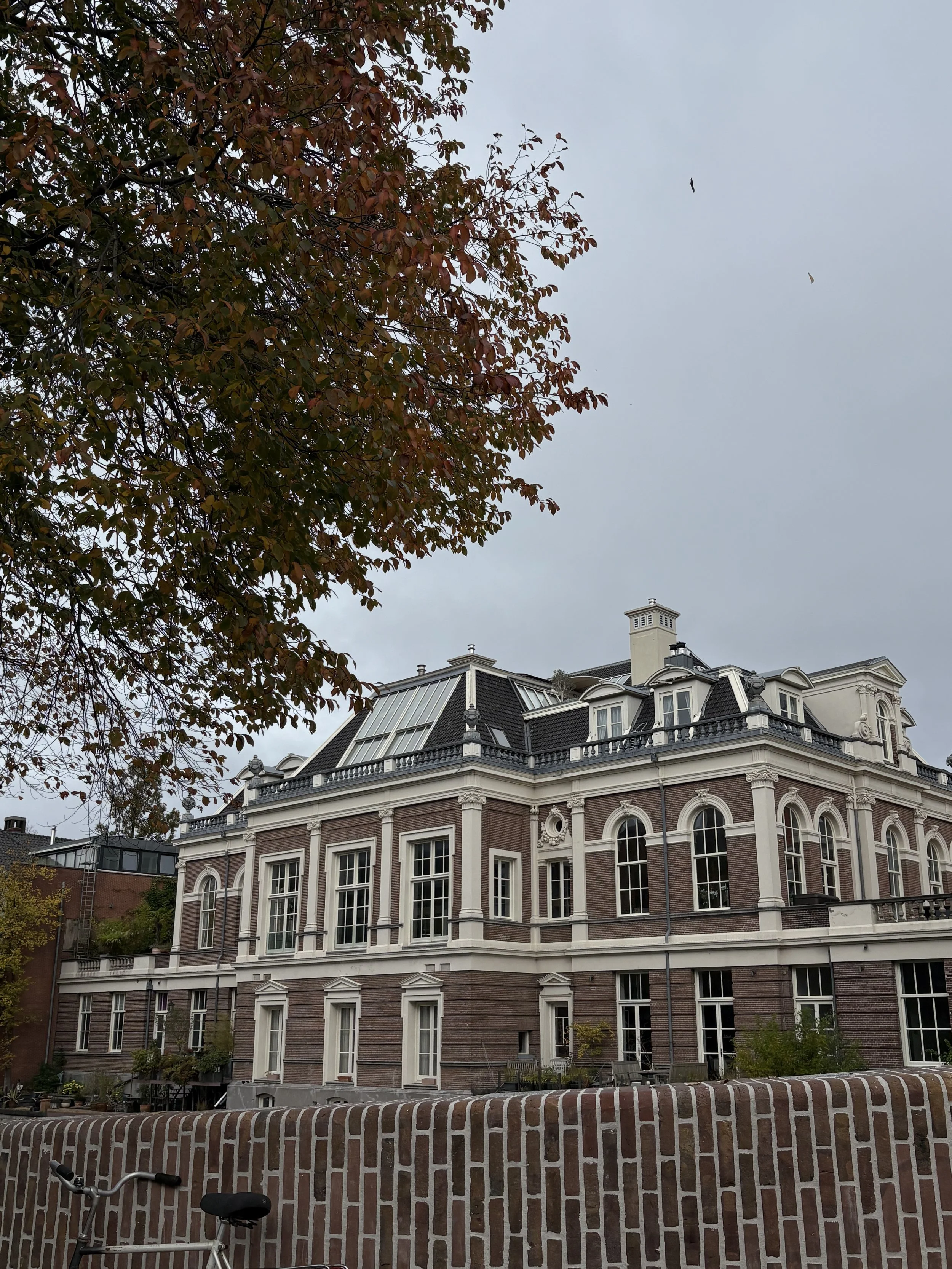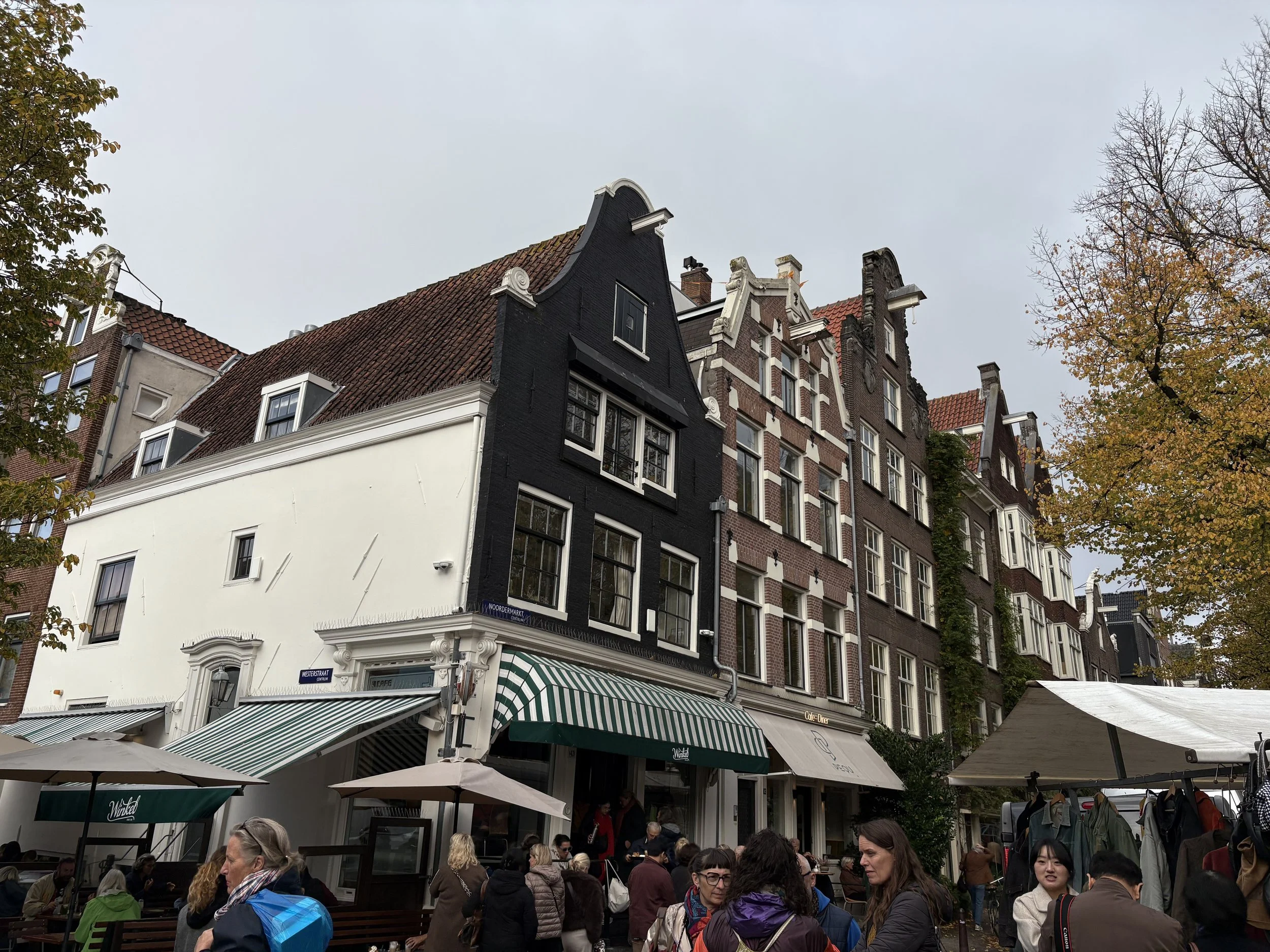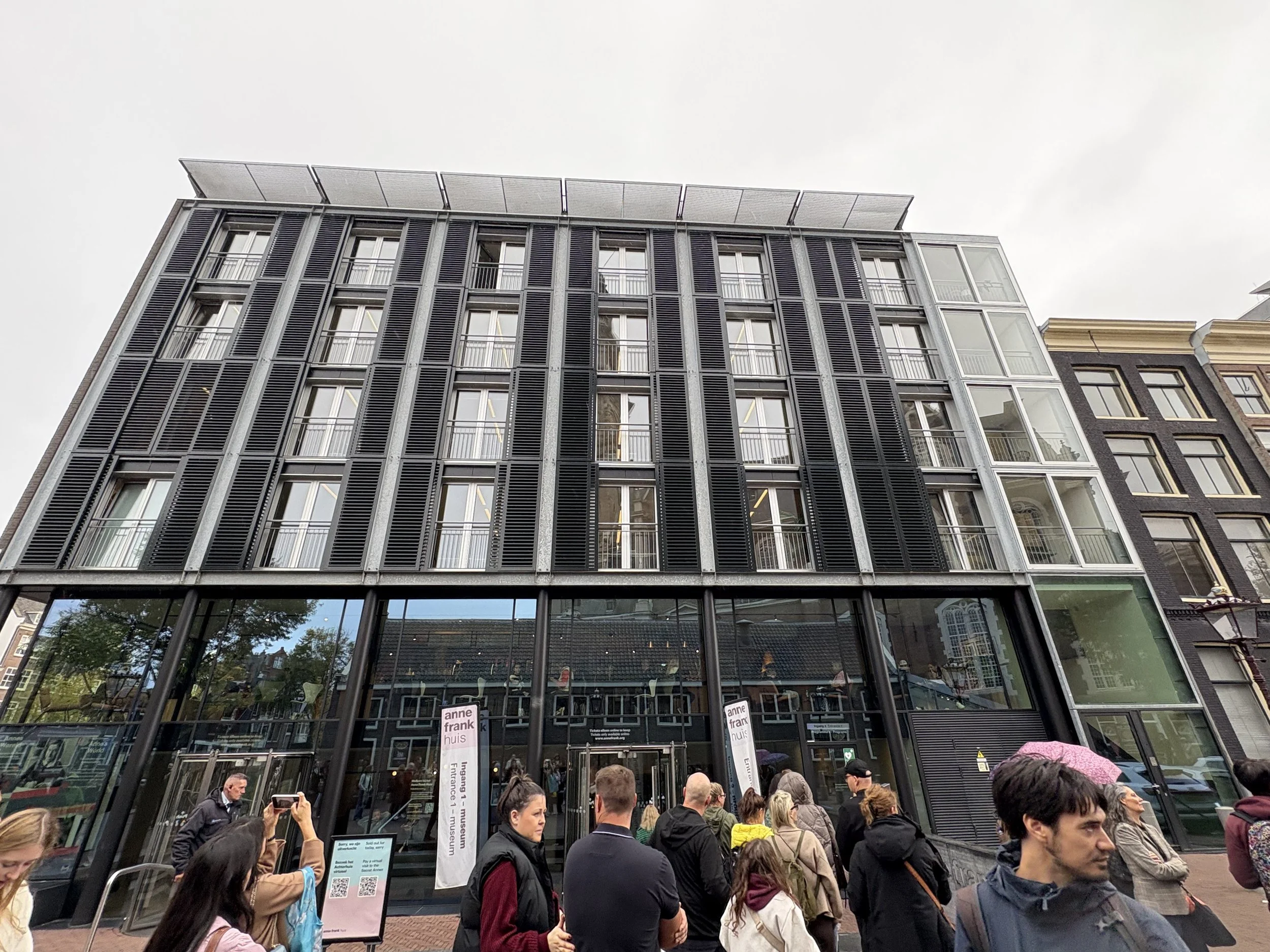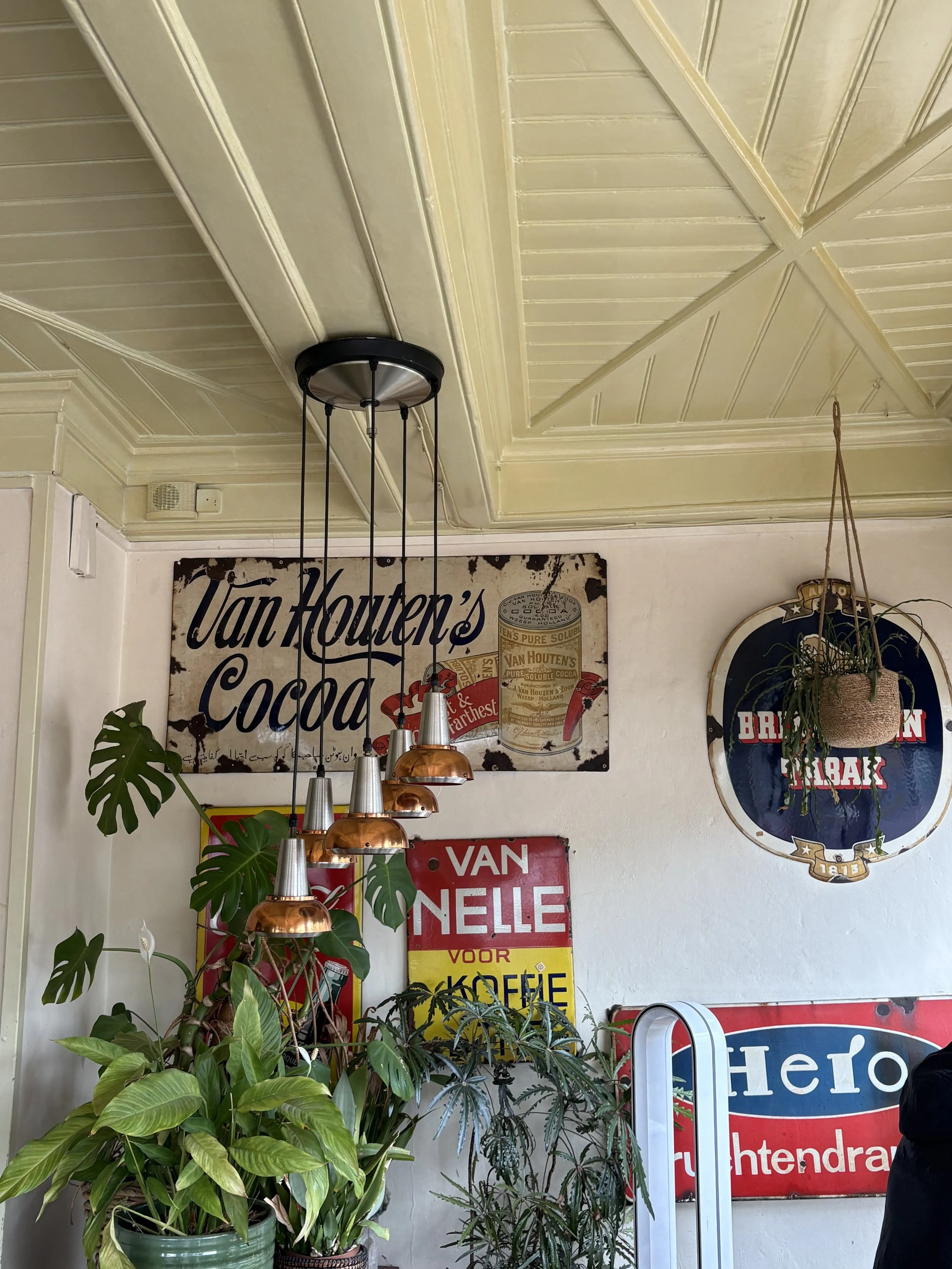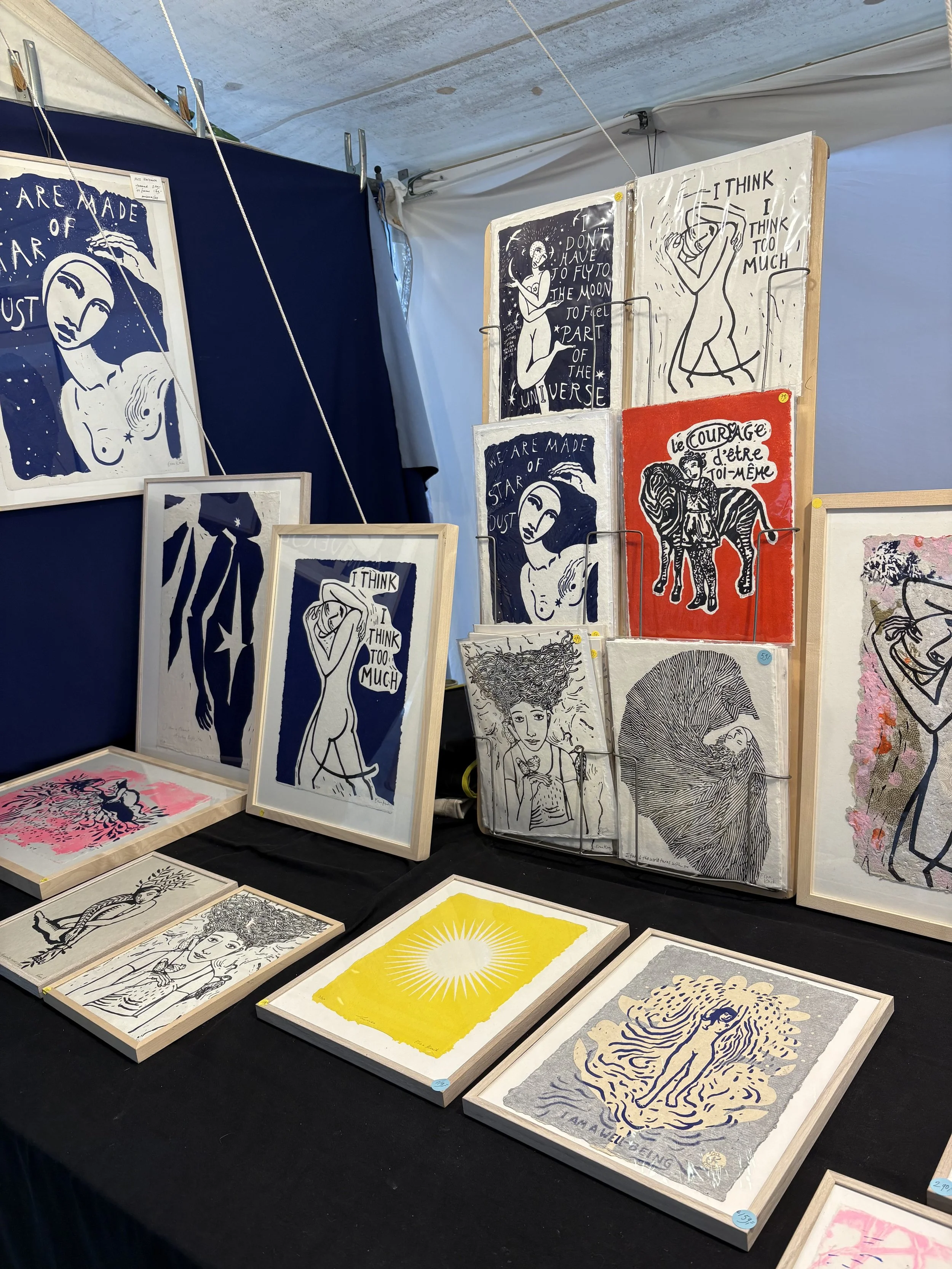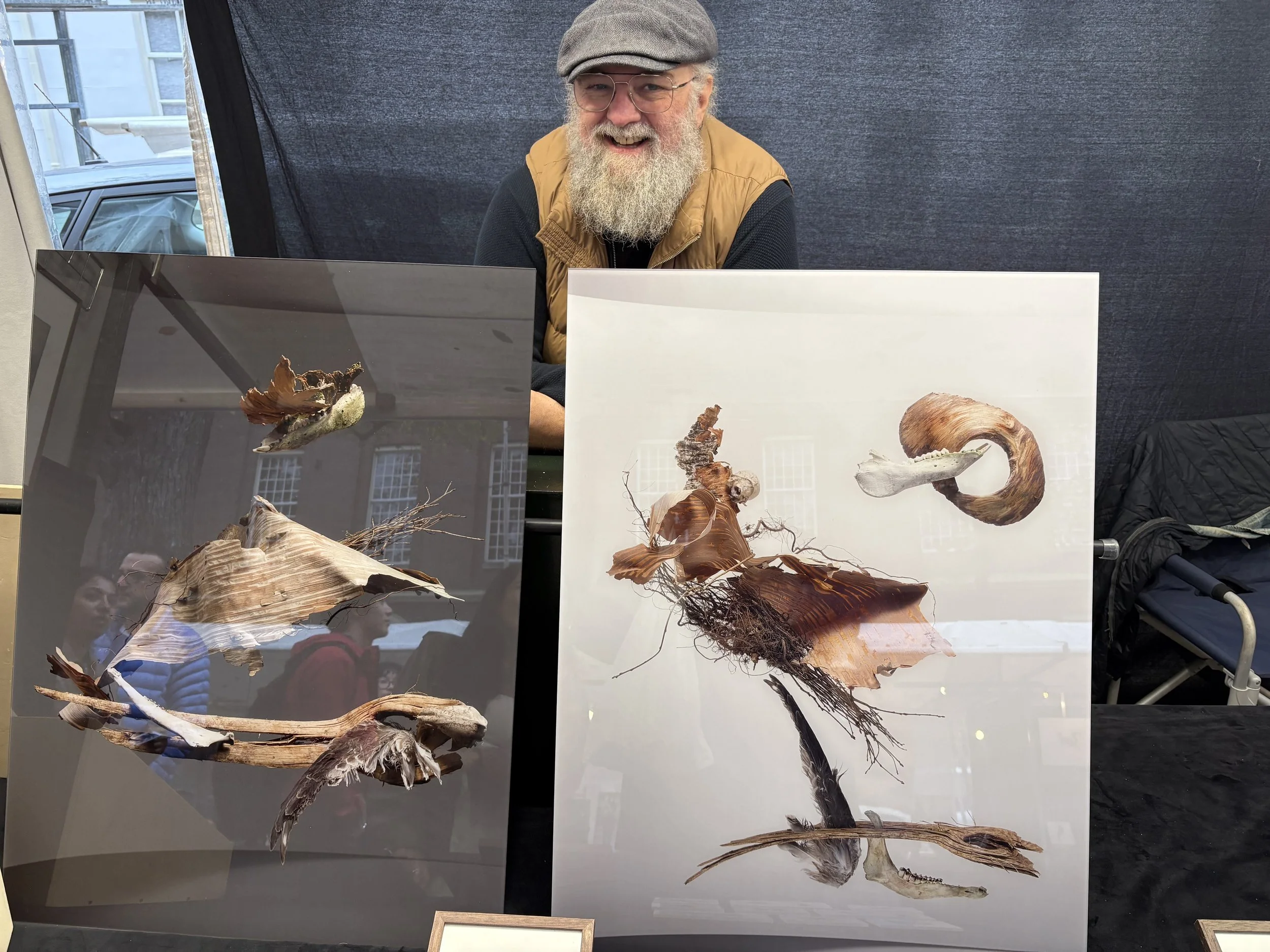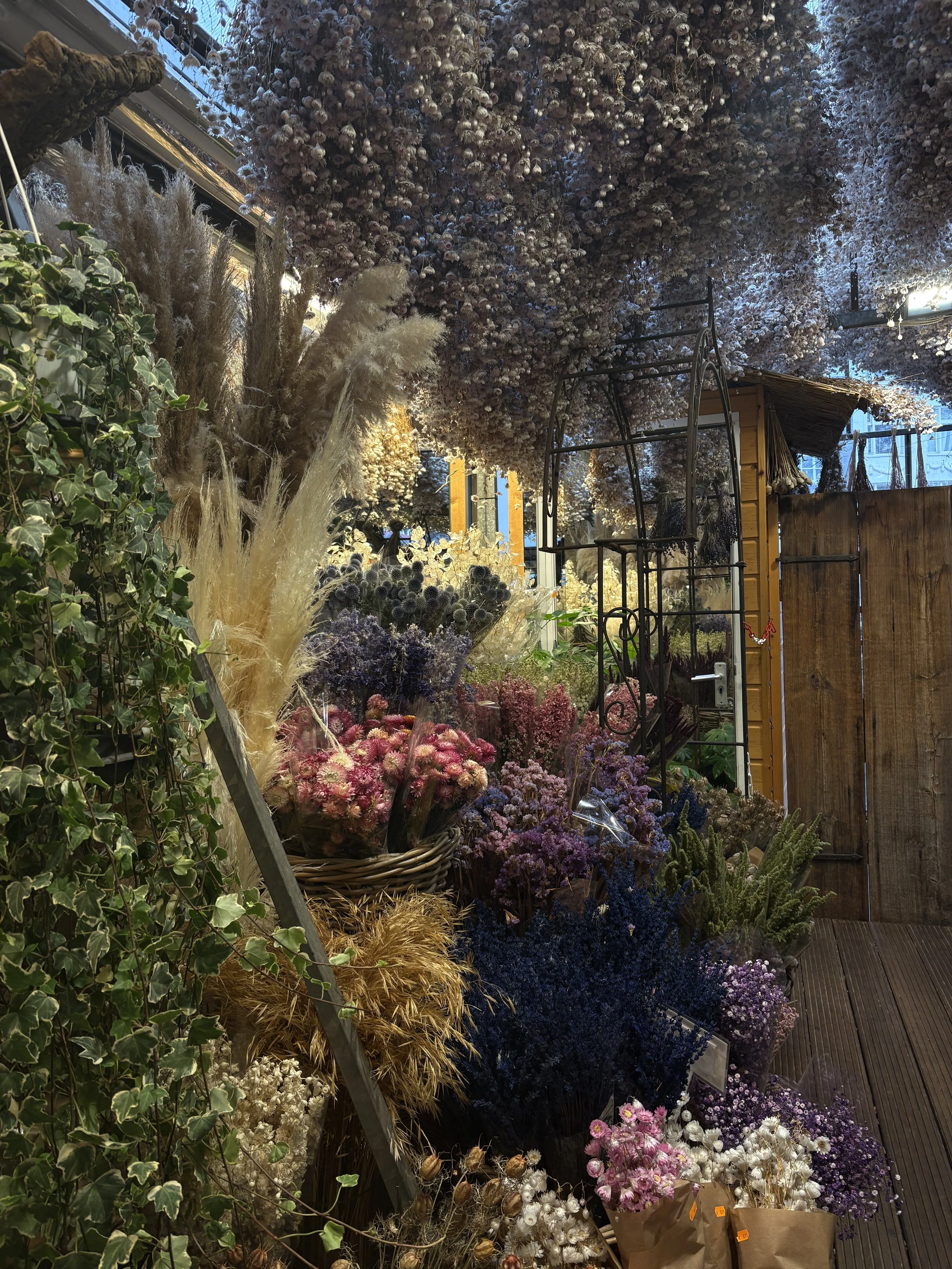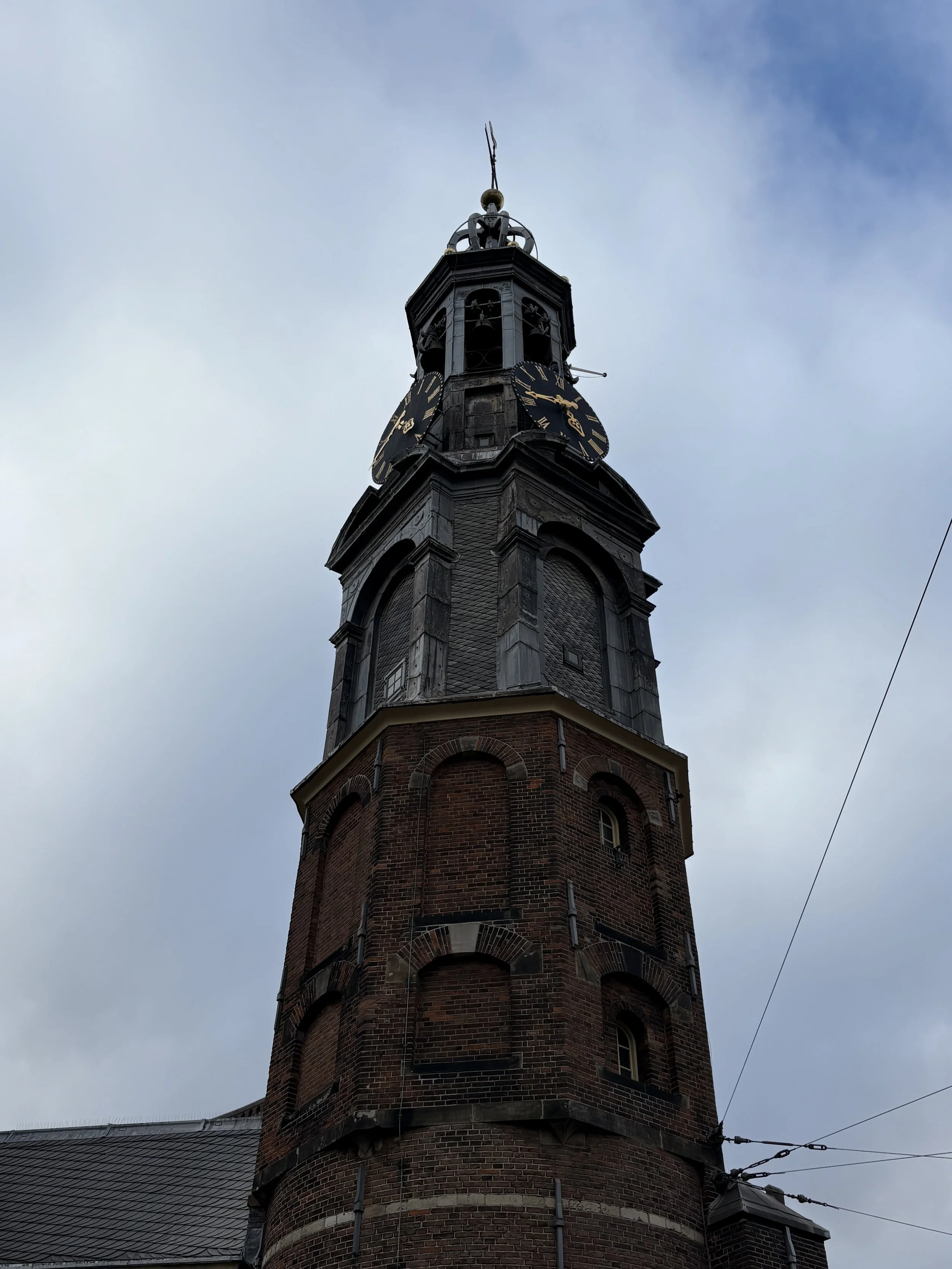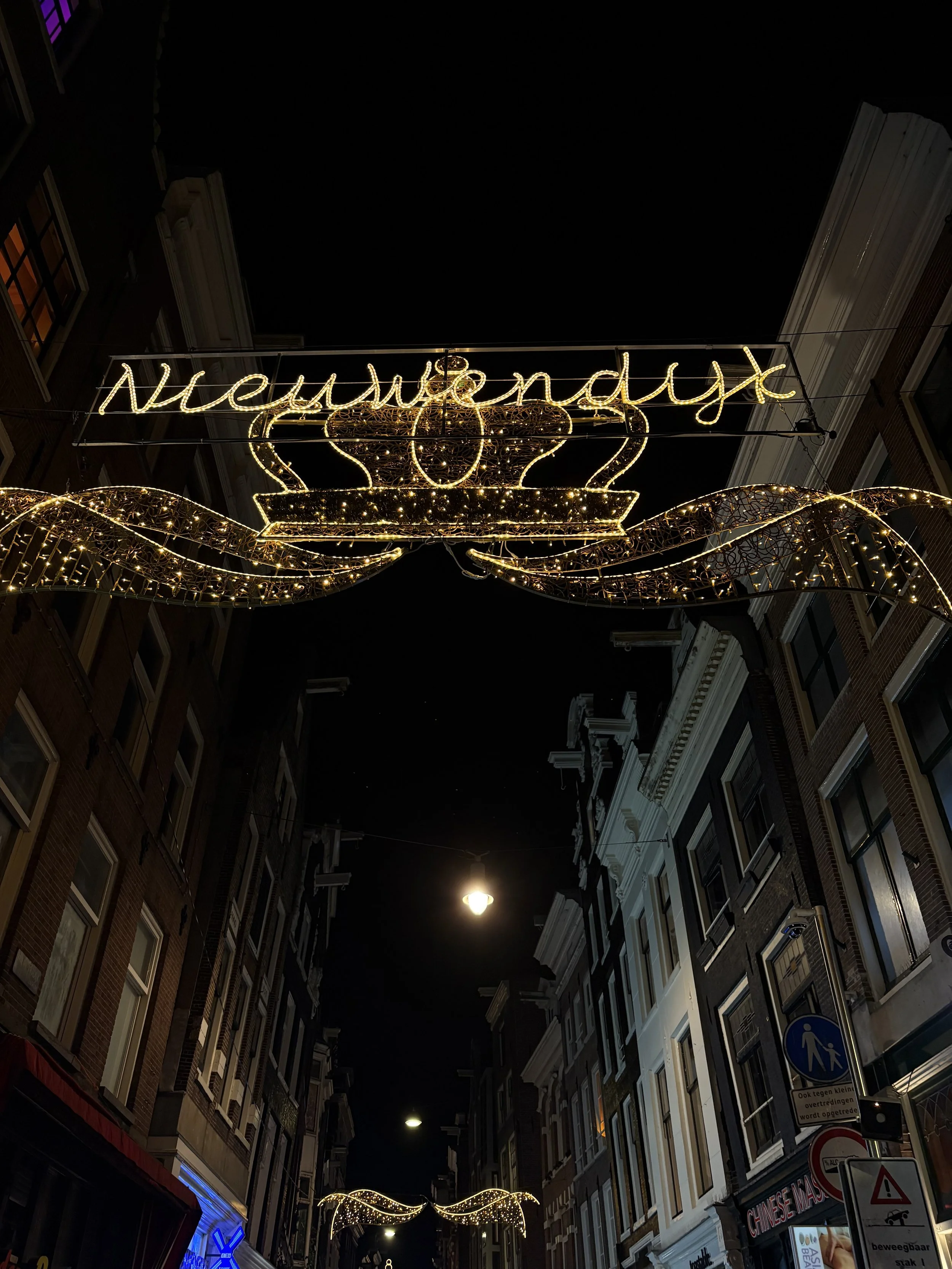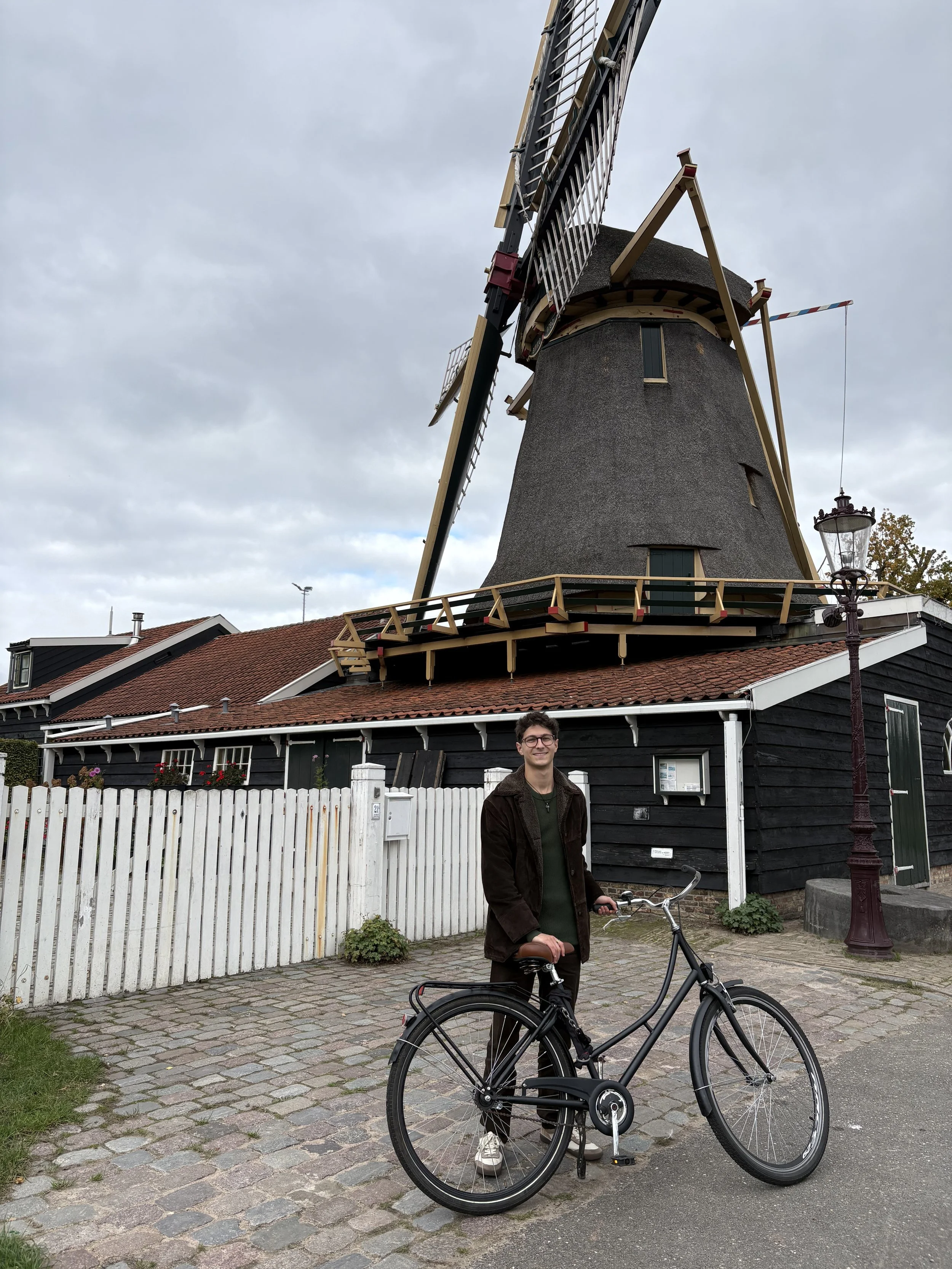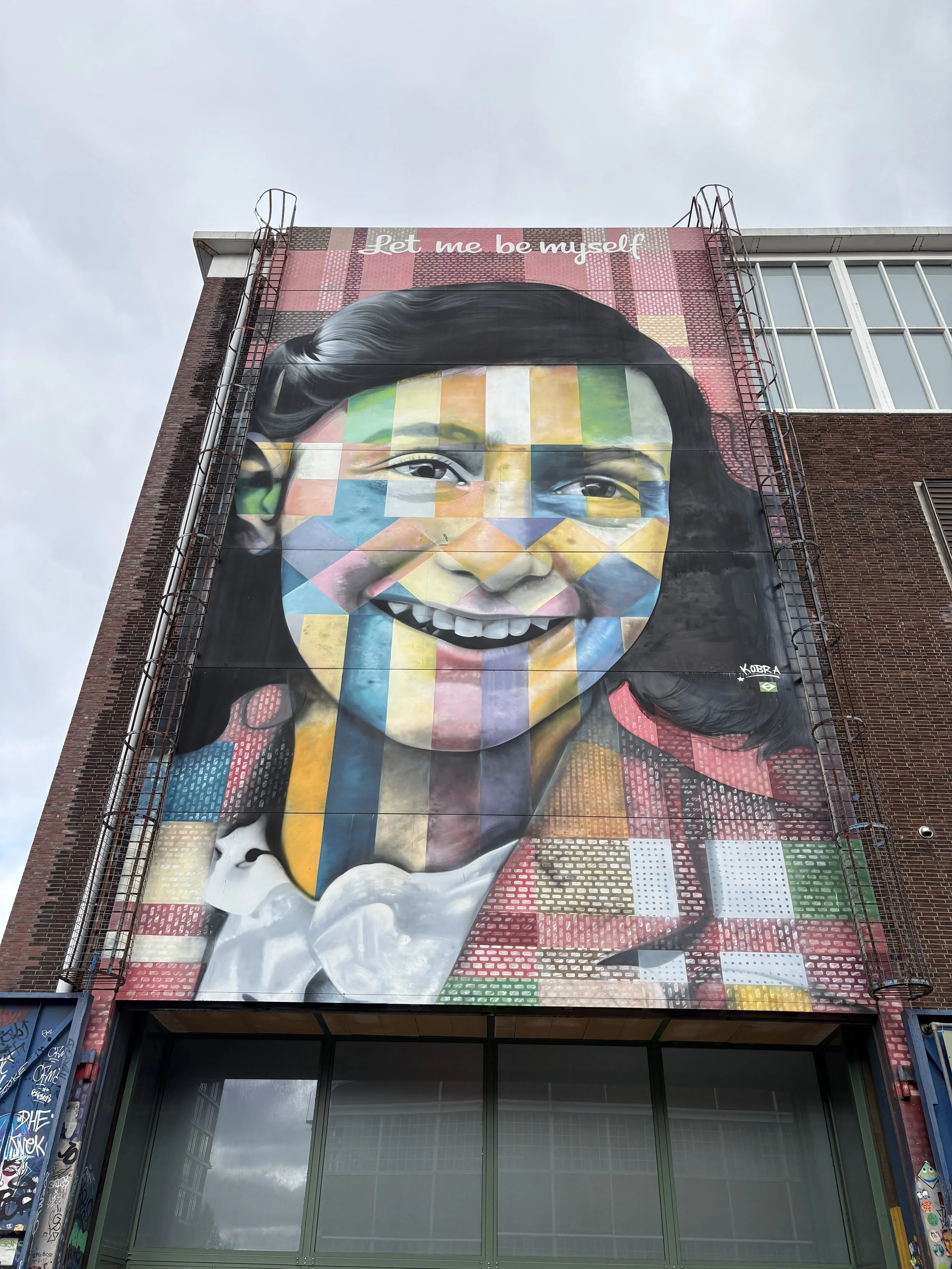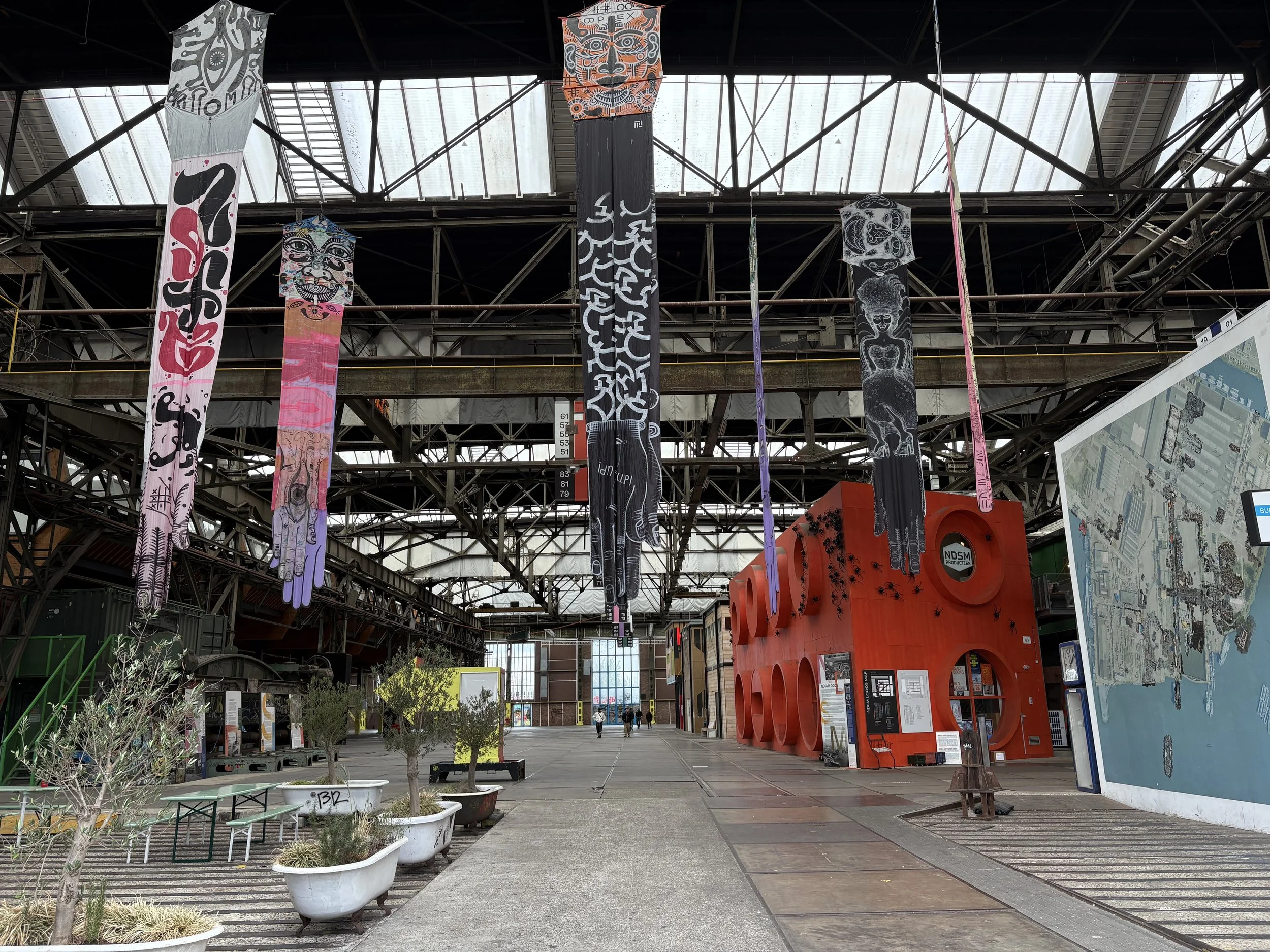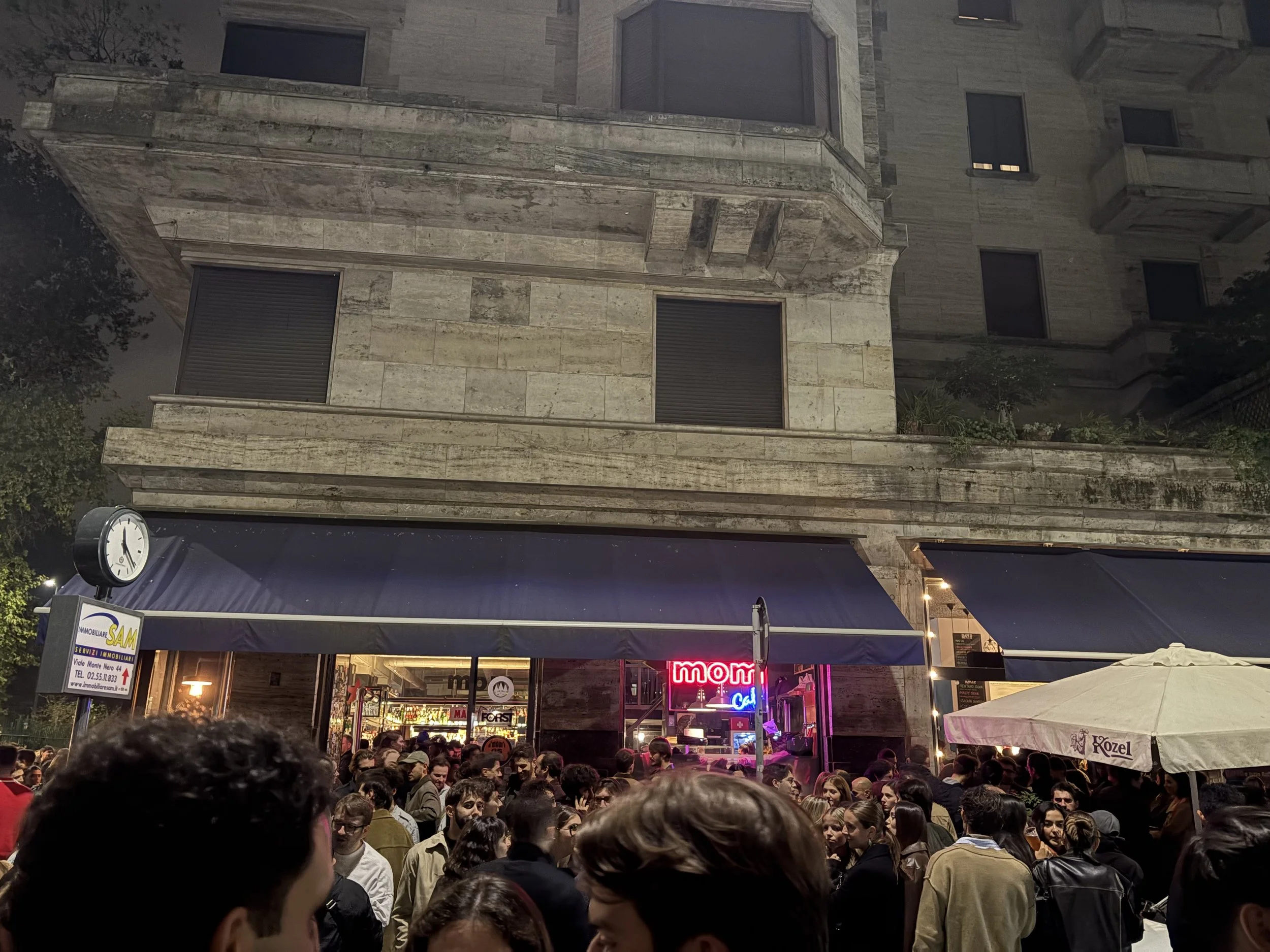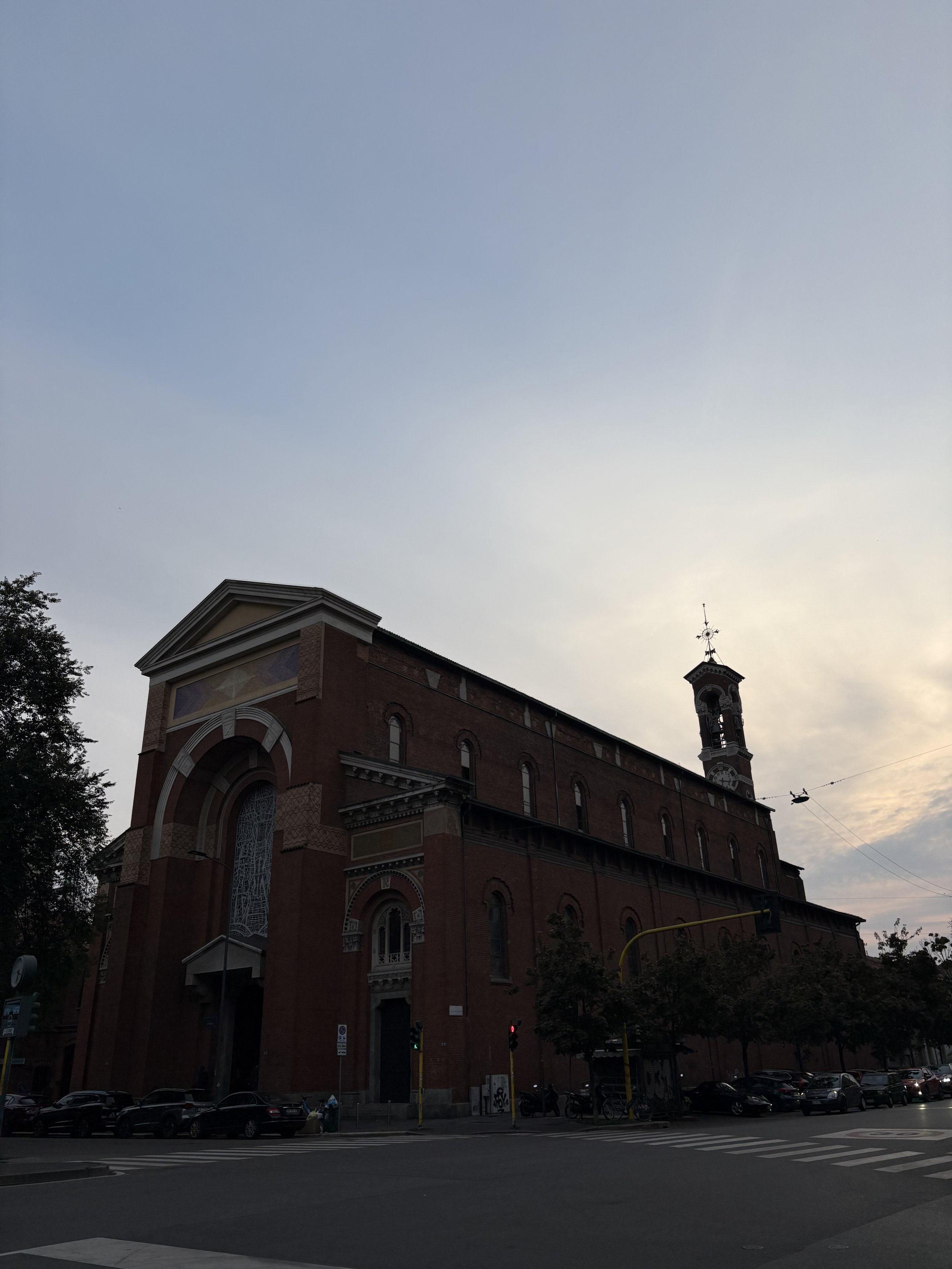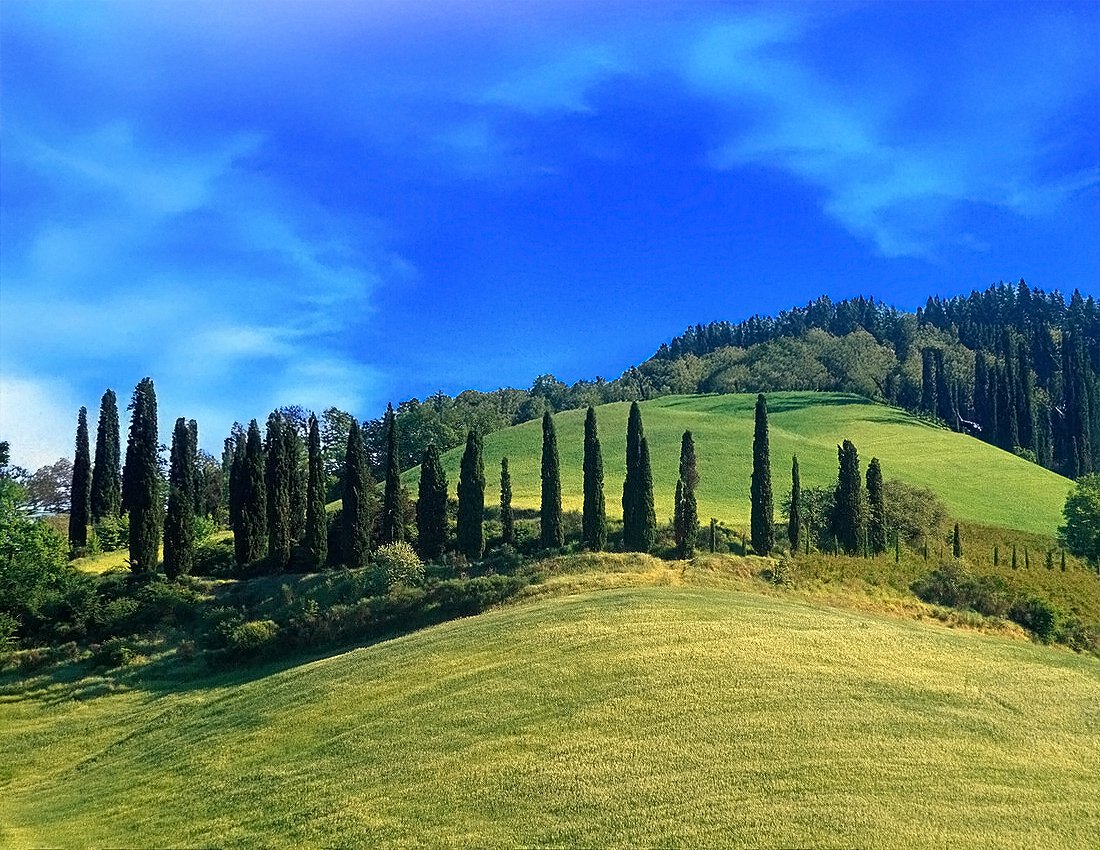
The America-Italy Society of Philadelphia
Vittorini Award
since 1963
for Undergraduate Excellence in Italian at University of Pennsylvania
Vittorini Award 2025
Alan Raskin
My name is Alan Raskin, and I am currently an undergraduate student at the University of Pennsylvania.
My experiences made me even more passionate about studying Italian: learning another language and culture feels to me like building a bridge to another way of life.
Outside the classroom and workplace, I’m finding new activities to try and fail at.
Whether I’m falling in mud on an ambitious hike or getting yarn tied into knots between knitting needles, I love to take on a challenge. The only feeling better than getting great at something you’re good at is getting good at something you’re bad at, so I see my “failures” as the “getting good” part. It’s this craving for unfamiliar experiences that ultimately led me to want to study abroad.
- Alan Raskin -
Week 14
This week, I got to see a little more of how Milan works under colder weather. The small city in New York where I grew up, and even Philly, lose a lot of outdoor activity with the onset of winter. While walking around the city, even with my hands and nose feeling numb and a pair of thin gloves, restaurants were still filling their outdoor seating, and bars still had a robust community of people standing and chatting outside. To me, this is a great shift from the usual duller feeling I find winter brings in the Northeast. There’s a chance the situation will change further into December, but friends who have been living in Milan for some years tell me outdoor crowds and gatherings are still found well into winter.
During the week, some friends and I went to Trattoria Amici Miei, a small and cozy restaurant near campus. Lots of the restaurants throughout Italy will be called “trattorias,” implying they serve regional and seasonal dishes. Looking back, every trattoria I’ve been to in Milan mainly served the dishes I’ve heard are local to Lombardy, and this one was no exception. We got a beef roast dish and their ossobuco, but also a cotoletta (thin, sauteed veal cut) since that was the primary Milanese dish I had yet to try. I did enjoy it and found it was simple but still tender, and although I would order it again, my table agreed it “felt less like a warm hug” than the ossobuco.
Another consequence of no longer being in the U.S. is the popularity of American-style restaurants and diners. I’ve mostly avoided these spots to get a wider array of Italian and other European cuisine, but it was fascinating to see my first one and take note of the version of Americana displayed there. I ended up having dinner on Friday there at the invitation of a friend who let me know they were doing a fixed-price Thanksgiving dinner. After calling my family on Thursday to see them together for the holiday, I was definitely missing this part of November this year. The friend I went with and I were pleasantly surprised with the accuracy and quality of the Thanksgiving food at this diner. Their plate covered most of the holiday’s staples, and it was my first time in Italy seeing this style of turkey served at a restaurant. The spot itself was very well-decorated and had some elements I wouldn’t expect in an American diner in the U.S., like a lineup of state flags hanging from the ceiling. But above all, they had some Philly elements I appreciated: a Rocky statue and pieces of Eagles advertising. I don’t think I’ll go back, simply out of curiosity for the food I haven’t tried, but it was a funny reminder of home for Thanksgiving.
With my final week of classes coming up and exams in a short time, I’ve started planning what else in Italy I can see after my exams are done, but before I’m back in the U.S. Though it’s hard to decide what to leave off, it’s more exciting to decide what not to skip.
Week 14
This week I spent fully in Milan, and honestly mostly on school projects. I continued work on a project for a government class on solving a public issue in Milan’s Municipality 1 and started on a project for a climate change class on adaptation to hurricanes. I’m seeing more now why Bocconi emphasizes projects so much – this week, I’ve had to interact more with my classmates than I ever had to at Penn.
Outside of classes, I’ve done a little exploring of Milan. I went out to Cinatown with a friend this week, and we got dinner at Mo Sarpi and got their signature Mo, slow-cooked pork served between toasted bread. The meal was simple but packed with flavor, which is why I ate it all before getting a photo. We got mochi at the same spot I tried earlier this semester, and walked around the Cinatown, Moscova, and Duomo neighborhoods.
On this outing, we decided to meet up over the weekend to make pasta by hand because I learned that he, despite being Italian, had never done so. On Friday, we hand-rolled sheets of pasta dough to cut into thin strips and make into a shrimp lemon tagliatelle. I’ve made pasta by hand before in the U.S., but the recipe I use and love calls for 00 (“doppio zero”) flour, which is hard to find and often more expensive than all-purpose in the States. In Milan, and I assume throughout Italy, each grocery store I go to has an abundance of 00 flour with several brand options covering low and high price tags. In fact, there is no concept of “all-purpose” flour in Italy, but instead a great selection of 0 flour (less refined and more similar to American all-purpose) and 00 flour (more refined and better for something delicate like a pasta). When I told some Italian friends here about this difference, they were a bit put off to learn about “all-purpose” flour and asked me what sorts of chemicals are in it to make it so versatile. I’ve personally never questioned it, and likely will continue not to question it.
On Sunday, I went to Remira Market, a vintage market near Rovereto station in Milan, focusing on sustainable artists and clothing resellers. I had initially planned to go to East Market, another vintage market here, but accidentally got directions to Remira and didn’t change my plan. Most of the vendors were selling clothes they found, but there were also lots of artists of jewelry, pottery, and other accessories. These artists were very happy to talk about the sustainable focus of their business, as many of them source upcycled materials to create something brand new. I bought a Carhartt jacket from a vendor who says he found it with a perfect interior but a torn and unusable exterior. His solution was to completely remake the outside of the jacket with a patchwork of jeans he was saving for a project. There are lots of markets in Milan, especially on the weekends, and it’s interesting to see that each one has its own niche of goods, whether affordable packaged items, vintage goods, or artisan pieces.
On my way home, near Duomo, I found a building I’ve passed by many times, covered in holiday lights. As it’s getting darker in Milan, I’m loving the slow pop-up of Christmas decorations throughout the city. I’m very much looking forward to the coming weeks, when post-sunset hours will hopefully be brighter and more festive.
Week 13
During this week, after classes and schoolwork, I met up with friends more often to grab a bite, something to drink, and take a walk around Milan. Most spots were places I’ve seen before, but I was also able to check out Giardini della Guastalla, a small, scenic park with statues, a fish pond, and a playground in the Guastalla neighborhood. I was there after sunset, but the people I was with told me the park looks even more scenic in the daylight, so I’ll have to return.
One night, I learned that even large parks in Milan do close at night, which we discovered when we overstayed our welcome at Sempione Park and accidentally got locked inside. I was prepared to scale the fence, but someone who had been in the situation before redirected us to call for help instead. Fortunately, the park guard who came to rescue us was very understanding, and I’ll definitely be aware of the park closing times going forward.
Over the weekend, I planned a solo trip to Krakow, Poland, to explore some bit of Eastern Europe. Growing up in a Ukrainian-Russian household, Krakow was the place I’ve been to with the most similar culture to mine, which was fascinating to see. Polish and Russian are not mutually intelligible, but I understood many words in sentences, which helped me communicate with a few folks along the way who only spoke Polish. Words like ‘bridge’ and ‘pharmacy’, which I saw all around the city, are identical in Polish and Russian, only in Polish they are in a Latin script. Because of this, this trip was especially interesting for me to be on.
I noticed right away that there is an abundance of beautiful churches in Krakow, each with its own interesting and unique history. On my first day, I got to visit Wawel Castle and see the church and the historic pieces and tombs within it. I spent hours exploring the religious art within the castle and admiring the architecture. Afterwards, I took a walk along the nearby Vistula River to get to a milk bar, a cafeteria serving Polish cuisine kept in the same operation style as when they were popular during the Soviet era. There and at other restaurants around Krakow, I got to try zurek (traditional Polish soup), pierogies, and herring over cream and onions. Again, the flavors of the food closely mimicked the food I ate growing up, but with elements unique to Poland.
Culturally, Krakow had a lot for me to explore. On the first night, I got to see a small orchestra performance at the Church of Saint Peter and Paul, where a group of seven played lots of Vivaldi, Bach, and Mozart, but with some of the Beatles mixed in on string instruments. The next day, I spent hours exploring Kazimierz, the Jewish Quarter of Krakow, which was full of synagogues, kosher cafes and restaurants, and murals explaining the rich history of Judaism in the city. In Plac Nowy, a plaza central to the district, there was a circle of windows serving different forms of zapiekanka, a Polish-style open-face sandwich, and mulled wine, perfect for the changing weather. The vintage shops and artisan markets around Plac Nowy made it an excellent spot to spend time throughout the day.
On my last day in Krakow, I was fortunate enough to get to travel about an hour away to take a guided tour of WWII concentration camps, Auschwitz and Birkenau. Even being educated about the Holocaust, there are so many details that are hard to conceptualize without being in the physical space. While some aspects of the camps were reconstructed, the vast majority were kept in their original state, which was especially jarring to see. I thought the tour was done very respectfully and informatively for such a solemn space. At the very end of the tour, I learned that it was survivors of the camps who made key decisions about its presentation and initially led tours, so I’m glad to know the space is maintained and remembered in the way the victims wanted it to be.
Overall, I’m very glad to have had such access to Krakow in my time here. With final project deadlines approaching at school, I know my travels will have to take a pause, and I’m excited once again to get to spend more uninterrupted time in Milan.
Week 12
As the semester is nearing its end, work on group projects is starting to pick up. A notable difference between Bocconi and Penn is the emphasis on individual work at Penn versus collaborative projects at Bocconi, and this week was definitely an example of that.
In a class I’m taking on governmental and nonprofit management, our group project is to identify and solve a public issue in Milan’s historic district, and we chose to address a loss of Milanese cultural identity through a ‘Milan Culture Week,’ inspired by Philly Restaurant Week but with a broader scope. That’s to say, at least the work is interesting.
I was also able to explore a restaurant this week and went to Roppongi Izakaya, a Japanese restaurant near Moscova. The space itself is worth the visit. The interior is made to look like a blend of urban Japanese outdoor settings, with false storefronts and posters on the walls and a stone-looking pathway taking you through the middle of the restaurant. There are stairs going down which have been made to look like a metro stop. The food itself was incredible; we ordered some dishes we recognized, like gyoza and omurice, but mostly got recommendations from our waiter and enjoyed them all. This spot has been my favorite out of all the Japanese food I’ve had here.
Over the weekend, I took a day trip to Turin and had a great time. Immediately upon arriving, I could tell that Turin was much more walkable and less car-oriented than Milan. In most parts of the city, the divide between pedestrian sidewalk and road was less strict than in Milan, and I felt that there were more piazzas, and each was less crowded.
Also, Turin is much greener than Milan is. I hadn’t fully conceptualized how deep into autumn we actually are until I was in Turin, where nature was a flood of oranges and browns. When I got back to Milan, I realized that the trees here are changing too, but there are so many fewer of them that I hardly noticed. It was also toward the start of my time in Turin that I noticed the abundance of tennis ball-related sculptures around the city, which I learned were there because of Turin hosting the Nitto ATP tennis finals, which began the day after my visit.
Walking out of Porta Nuova station in Turin, we started on Via Roma, a street lined with high-end boutiques and retailers. Walking further, we saw two huge statues of a man on one side of the street and a woman on the other, both lying on their side. Looking closer at the statues, we read that the woman and man represent the Dora and Po Rivers, respectively, both flowing through Turin.
One block further, we got to Piazza San Carlo, a beautiful and vibrant square. Turning around, I saw two buildings, which I assumed were one church because of how symmetrically the street ran through them, as they were all one intentional piece. However, I discovered these are two churches, operating separately and even built at different times. The Church of Santa Cristina on the left was built in 1639 (the facade on the front began in 1715), while the Church of San Carlo on the right was built earlier in 1619.
These discoveries were all on the way to Museo Egizio, the largest Egyptian museum outside of Egypt. The museum has lots of artifacts to learn more about, including stone writings and art, tools and vases, statues, tombs, and mummified humans and animals, a topic the museum even recognizes is controversial. The most interesting piece to me was “The Three Sisters,” depicting the tombs and mummies of sisters Tapeni, Tamit, and Renpetnefret. Mummies in this museum are typically depicted on their own, so I found it fascinating to see these sisters kept together even thousands of years later.
Tired and low on sugar, we stopped by Baratti & Milano, a cafe and chocolate shop, for espresso and hazelnut cream chocolate, as the Piedmont region (of which Turin is the capital) is famous for its hazelnuts. Hence, it is the birthplace of Ferrero Rocher and Nutella. Afterwards, we walked through more of the city, seeing Palazzo Madama and the WWI monuments outside of it.
Nearby, we got to see Palazzo Reali, which is now a royal museum but used to actually house the King, back when Italy was a kingdom and Turin was its capital. Through the palace, we got to Giardini Reali, the royal garden with beautiful foliage to walk through.
After lunch and some aimless wandering, we got to see the Mole Antonelliana, a landmark of Turin which was originally conceptualized as a synagogue but now exists as a museum for cinema, the tallest museum in the world. With not enough time to enter before our train, we took a stroll along the Po, with beautiful views of the trees across the wide river. Along the walk, we saw the tail end of a regatta and its medal ceremony, which was especially cool to see for me since I used to be on my local crew team, and this event was very familiar to me.
We ended our day in Turin at the Parco del Valentino, where we saw the Castello del Valentino, another residence of the royalty of Italy that lived in Turin. And of course, a large tennis ball statue outside the castle. I thoroughly enjoyed Turin, and I’d love to take more advantage of how accessible a completely different urban scenery is from Milan, just a two-hour train ride away.
Week 11
This week, I got to do a bit more exploring of Milan. During the week, I went with a friend to see a movie. I thought the bulk of options would be Italian movies in Italian, but most of the films playing were not Italian, but had either Italian voiceover or subtitles. My friend and I prefer not having the voiceover, so we saw it with subtitles. I was interested to see how the common English phrases translated into Italian, often in ways I didn’t expect. The theater was located in CityLife, a commercial business district in Milan, which looks very modern, similar to how Porta Nuova looks. Afterwards, we had pizza and tiramisu for dinner, a reminder of the blessing of being in a place where restaurants close late.
A few days after was Halloween, which was a much larger celebration than I expected for Milan. Some friends from a few universities in Milan and I went out to Navigli to spend the night. Something I did notice about Milan's Halloween is how centered the holiday is around the club scene. In the U.S., Halloween has lots of house parties with friends, and none of us were used to paying up to 50 euros for a Halloween celebration (nor did we). An Italian friend of mine explained that this largely has to do with Milan’s housing situation being mostly small apartments, which makes me wonder how the holiday is celebrated in a similarly housed city like New York. He also explained another big difference in Italian Halloween compared to what I’m used to. In the U.S., costumes vary across movie characters, pop culture references, and professions, while I mostly saw ‘scary’ costumes centered around fangs and fake blood. I was told that, costume-wise, the Italian equivalent of American Halloween is Carnival, a week-long festival in February leading up to Ash Wednesday. As a result, Halloween costumes in Italy are exclusively reserved to the scary category, since the more creative ones come out for a different holiday.
Over the weekend, I wanted to explore some more museums in Milan, starting with Pinacoteca di Brera, an art museum in the Brera neighborhood. Unfortunately and to my surprise, tickets for entrance were entirely sold out, so I could only explore a limited section of the building. I got to see a few different statues and sculptures, including one from the Rotary Club of Milan. There were also some posters advertising events for students of Accademia di Brera, a fine arts academy holding students there. I will have to return, though, next time with pre-booked tickets.
Not far from Brera is Sempione Park, which houses the Triennale di Milano, a design and art museum. The name Triennale (translating to tri-annual) is because the museum hosts an international exhibition every three years, and this year is its 24th. I’ve been meaning to go for a while for their current exhibit called Inequalities, but this weekend, coinciding with Milano Arch Week (which is run in part by Triennale), was the perfect opportunity.
The exhibits across the two floors of the museum focused on comparing equality and sustainability through a blend of hard statistics and heartfelt personal anecdotes from across the globe. Front and center in the museum is a display presenting data on quality of life and socioeconomic conditions around the world, but in an artistic way. For a numbers and maps nerd like myself, this exhibit was fascinating just to stare at and consume.
The rest of the exhibits were definitely more artistic in nature. One of them emphasized global perspectives, featuring a room for each participating country containing a wide variety of art: from sculptures and paintings to videos and interactive pieces. Another exhibit was focused on freedom of movement, in which the viewer is positioned in the middle of a circle of screens playing documentaries regarding advances and injustices in people’s freedom to move. In reading the exhibit’s description, I found that it was inspired by Svalbard, a Norwegian archipelago, and the only place in the world where no visa is required to live or work.
Some exhibits were more practical, such as one going in-depth on a research project going between Venice and Costa Rica on efficient, sustainable, and higher-quality shelters for refugees. Nearby was an exhibit outlining plans to revitalize the culture and industry of the Ukrainian city of Kharkiv.
Some exhibits were more abstract, like one discussing bacteria around the world. The exhibit weaved between several ideas regarding bacteria, including the loss of human gut microbial diversity, the marketing of antibacterial cleaning products, and subjugation in European colonies during times of widespread disease.
Another that comes to mind is an exploration into longevity through five ministries – purpose, sleep equality, food democracy, physical freedom, and togetherness. On top of the art for each ministry, there was a computer program that allowed me to personalize a ‘life framework’ for each of these ministries and print a small souvenir of my choices.
I’m thrilled that I got to attend this exhibition, and I feel lucky that I’m in Milan during the right time to attend the triennial event. This week highlighted the variety of museums I can find in Milan, and I’m excited to see more museums (and Pinacoteca di Brera for real) in the rest of my time here.
Week 10
This week started off busy with both of my midterm exams at Bocconi. Although they were challenging, I don’t think they came with any surprises, and my professors prepared our classes for what to expect very well. Compared to Penn, the exam rigor was similar, although I feel as though these classes at Bocconi place more emphasis on a conceptual and theoretical understanding of the content, rather than the specific problem-solving. I’m very happy to be through with this exam period (although finals don’t seem too far away either).
Right after my last exam, I took a bus to Bergamo to fly to Marrakech for the rest of my midterm break period. I went on a tour through the Atlas Mountains of Morocco, starting and ending at Marrakesh alongside other exchange students, many also studying in Milan, but a few in Madrid and Dublin as well. From our first day, I was blown away by the geography of the landscape: steep mountainous terrain in various shades of tan, brown, and orange, nothing like I had seen before.
Our first real stop was in Ait Benhaddou, a ksar (Berber village) which served as a home for many along the caravan route for the gold-salt trade. We learned how to identify homes belonging to the richer, more powerful citizens, as the corners of their homes had tower-like structures that were lacking in most others. Touring through the alleys and homes of this village, we were shown lots of infrastructure as we passed through, including a mosque which is still in use today and a synagogue which is now closed, as we were told the Jewish population formerly in Ait Benhaddou went on to live in Casablanca.
We also got a small crash-course about the Berber alphabet, where we learned that the symbol on the Berber flag, something we saw on stickers, shoes, and spray-painted walls all throughout this slice of Morocco, is a letter. However, when written alone, it means “free man” (there is an analogous letter corresponding to “free woman”), and when written in red as it is on the flag, its meaning changes to “freedom”. It was during this crash course that we got to see a Berber art and communication form in practice: writing done using a material that appears only when held under a flame, made for both beautiful art and secret communication.
The next day, we got to see Tinghir, another Berber town. Our day started with a view of the farming, which included corn, olives, and lots of alfalfa used to season couscous and dye fabrics green. Further into the town, we visited a rug-making store that does its craft completely from scratch. They turn the raw fabrics into threads, dye the fabrics, and utilize different methods to create rugs, some one-sided and others two-sided. We were explained the various methods used for creating the rugs, notably weaving and knotting, the materials used for the rugs, including dromedary (like a camel but with one hump), sheep, agave, and cactus, and the many plants used to dye the fabrics.
Interestingly, the value of a rug has nothing to do with how long it took to make, but with the value of the fabric and dye used. In the U.S., where textile-making is very commercialized with very little hand-making and hand-dying, we wouldn’t see an upcharge for a different color rug. Here, a yellow and pink rug, signifying use of saffron and rose petals, is significantly more expensive than a green rug from mint and alfalfa, due to the differing costs in the natural dyes used.
Hungry from our travels, we stopped for a traditional Moroccan meal of tagine, and continued to the Todras Gorge nearby, another geographic wonder. The heavy traffic in and out of the gorge made perfect sense, as everyone wanted to see this wonder.
Afterwards, we continued toward Erg Chebbi, a large area of sand dunes near the Eastern border with Algeria. We were fortunate enough to get to ride camels through the sand dunes and watch the beautiful sunset. By nightfall, we arrived in Merzouga, a village among these sand dunes, where we spent the night. This area has light pollution levels similar to those of Death Valley, so the sky was incredibly visible. Milan and Philadelphia, being the large cities they are, stargazing is a near impossibility, so this was a shocking and incredible reality. We spent a good chunk of the night watching the sky and seeing several shooting stars. The next day was full of lots of travel, starting with driving ATVs through Erg Chebbi to the area we started in, and then taking our long drive back to Marrakech.
With only one full day in Marrakech, we made the most of it and spent the whole day exploring. We visited the souks (markets for copper, wood, jewelry, leather, and dyes) and saw some beautiful handmade goods there.
Later, we got tickets to the Bahia Palace to see the place that housed political and military leaders of Morocco and later the French (when Morocco was a French protectorate). We ended the day by getting a hammam, a traditional North African spa-like experience, and listening to street performers playing drums and guitar.
While I had a fantastic time in Morocco, I was very grateful to return to Milan. Surprisingly, because I’m in Italy on a Type D (study) visa, I qualify to stand in the “EU passports” line upon return to Italy, which made my travel day back just a little shorter. I feel glad to have gotten this rare opportunity to see the nature and culture that I did, albeit a little tired from travel, and happy to stay in Milan for a little while.
Week 9
Fortunately, I started my week off strong with a break from studying to visit Amsterdam for a quick trip with another friend on exchange, which was very worthwhile.
Immediately upon arriving, I could tell that Amsterdam preserves its own unique architecture and city layout, made up largely of tall, narrow buildings side by side with simple faces but intricate tops. The city is also built on a series of networks, reminding me of when I saw Venice several years back (and a good reminder of another city I have to visit).
Only being there a few days, we merely dipped our toes into each aspect Amsterdam had to offer, but as a museum lover, I made sure to get tickets to the Anne Frank House. Excluding the quotes, photos, and documents which lined the walls of each room, contextualizing the fear of the over two years of hiding taking place there, I was surprised to see how empty the house itself was.
When the family was discovered, most things in the annex were destroyed, but a few original touches from the families in hiding were preserved: a shopping list, a kitchen counter, a bathroom, and lines on a wall which indicated the growth of Anne and her sister Margo were among them.
Also, I was surprised to see that the bookshelf which acted as a door to the annex was kept in its original state, as well as many of Anne’s writings, which go onto several loose pages of paper and extend beyond the diary she’s so known for. One of the original diaries she wrote in was on display behind glass as well.
I don’t have photographs of any of this, as the museum does not allow them, but I’m very glad to have visited the museum and put a physical image to this important piece of Amsterdam’s history, as well as my education.
Tired from travel and museum exploring, we spent a day travelling the city aimlessly. We spent lots of time in Jordaan, a scenic neighborhood with lots of quaint cafes, cozy bars, and independent artists selling their paintings, photography, and clothing across markets in the area.
We also walked around Binnenstad, the city’s historic center, to see the Royal Castle there. Binnenstad was certainly beautiful, but notably more busy and urban-feeling than Jordaan, which cost us the rest of our social batteries for the day.
On our final day, we took a ferry up north to Noord and rented bikes to explore the neighborhood.
Noord is much more varied than the city’s center, with more parks, nature, and countryside sights like some historic windmills, but also NDSM, an industrial-looking collaborative artist’s space, where we saw some woodworking taking place.
Throughout these days, we made sure to try some iconic Dutch food, notably stampott (a mashed potato dish with vegetables), bitterballen (fried, creamy meatballs), poffertjes (mini pancakes), stroopwafels, and jenevers (a juneberry-based liquor, a precursor to gin).
While I appreciated the gastronomic exploration, I did find it interesting that in the Netherlands, more of the country-specific foods are based around a sweet flavor than a savory one. Italy, to me, feels different, with the most notable dishes from Lombardy and across the country center around heartier dinner courses.
The type of food isn’t the only way the Netherlands and Italy differ; folks in Amsterdam tend to eat earlier than in Milan, more similar to the United States, I found. We discovered this when we began searching for food places around 8 p.m., which in Milan is an appropriate time when many restaurants haven’t even reached peak crowds. In Amsterdam, many locations were closed by this point.
Also, it’s a small detail, but the walking traffic lights are significantly more generous in Milan than in Amsterdam. In Milan, I can begin crossing the street when the light is yellow with plenty of time to spare, but on this trip, I found myself speed-walking at green lights and still having them turn red while I was crossing. Amsterdam was a fantastic city to visit, but I was thrilled to return to a slower stroll pace when I flew back into Malpensa.
The rest of my week was largely spent studying, given I had only a few days before my exam. However, on Saturday night, I got a great offer from a Venetian friend living in Milan named Andrea. His brother was visiting from Venice, and he invited me to go out for dinner and a few drinks with them and some of their friends. We met up in Tricolore, a zone of Milan not far from Porta Venezia, and from there walked to Via Bonvesin de la Riva, a street just north of the Porta Romana neighborhood.
We ended up trying a few different bars in the area and ate at Sidewalk Kitchens, an outdoor streetside restaurant system where there are several windows in a row, each serving its own cuisine. I really enjoyed this style of eating, since everyone in the group could get their own food of choice, but still share a social outdoor atmosphere. My first thought when I saw this area was, “This is just like Reading Terminal Market!” But, looking back, the two are definitely different in size and energy, and I was just grasping at straws to relate back to home.
I was introduced to all of these friends and his brother, most of whom were also from Venice. I’ve noticed, especially among the working adults, that not many people working in Milan are from Milan, but rather they moved from other parts of Italy to work. Of the roughly twelve people I met on Saturday, even those outside the crowd from Venice were also largely not from Milan, but instead from Rome or Emilia-Romagna.
All of them were very helpful in allowing me to speak Italian and made efforts to understand me and respond in Italian (though Andrea semi-jokingly reminded them a few times to speak a little slower). Every so often, when I wasn’t a part of the conversation, they would ask if I understood what they were saying, to which I’d reply “un po’ qua e un po’ là” (a little here, a little there).
Later, Andrea told me some of the conversation was in Venetian, a dialect spoken in Veneto I wouldn’t have learned in class or picked up naturally in Milan, so I’m giving myself some grace here. Even if my brain got lost, this was excellent practice in conversing with new people in Italian, not just the ones I’ve been practicing with for some months already.
In conversation, I got to learn a little more about some interesting intricacies of these friends’ lives and of Italy as a whole. For me, this experience of being in another country for an extended time is very new and feels once in a lifetime, but many of the folks I met are not new to experiencing other cultures. I’m hesitant to even say they are well-traveled because they haven’t seen the world by travel, but instead by studying, working, and living in other countries, including throughout Europe, but also in the U.S. and Australia.
Many of them speak excellent English (though I asked them to try in Italian), and other languages in the places they’ve lived. This was also where I learned that Erasmus and exchange are not interchangeable – Erasmus is a specific type of exchange where European students study in another European country. I send my sincerest apologies to everyone I’ve been lying to for two months, saying I’m “on Erasmus.”
Also, I shared some stories from my time as a cashier in high school and learned that in Italy, it’s not very common for people to work in high school or even in college. Many people start working at 25 upon receiving their master's degree, and that’s very normal. A consequence of this that I didn’t expect is that it incentivizes people to have children later in life, since parents in Italy will have to support their children until they are of the age to work, which includes the time of their education.
Many differences between the U.S. and Italy are ones I haven’t picked up on naturally, but are rather explained to me by those who have been living and experiencing them. While I’ve really enjoyed being able to travel, I’ve found much more fulfillment in the connections and friendships I’ve made here. Every city I go to is a great reminder of the places I can come back to, but a night of discussion, banter, and laughs with a local friend and his friends (whom I tortured for recommendations in Milan) truly feels more rare and special.
“The America-Italy Society is dedicated to fostering connections between the United States and Italy through language, educational programs, arts, cultural exchange and community engagement”
Newsletter Sign-up
Sign up with your email address to receive news and updates:


